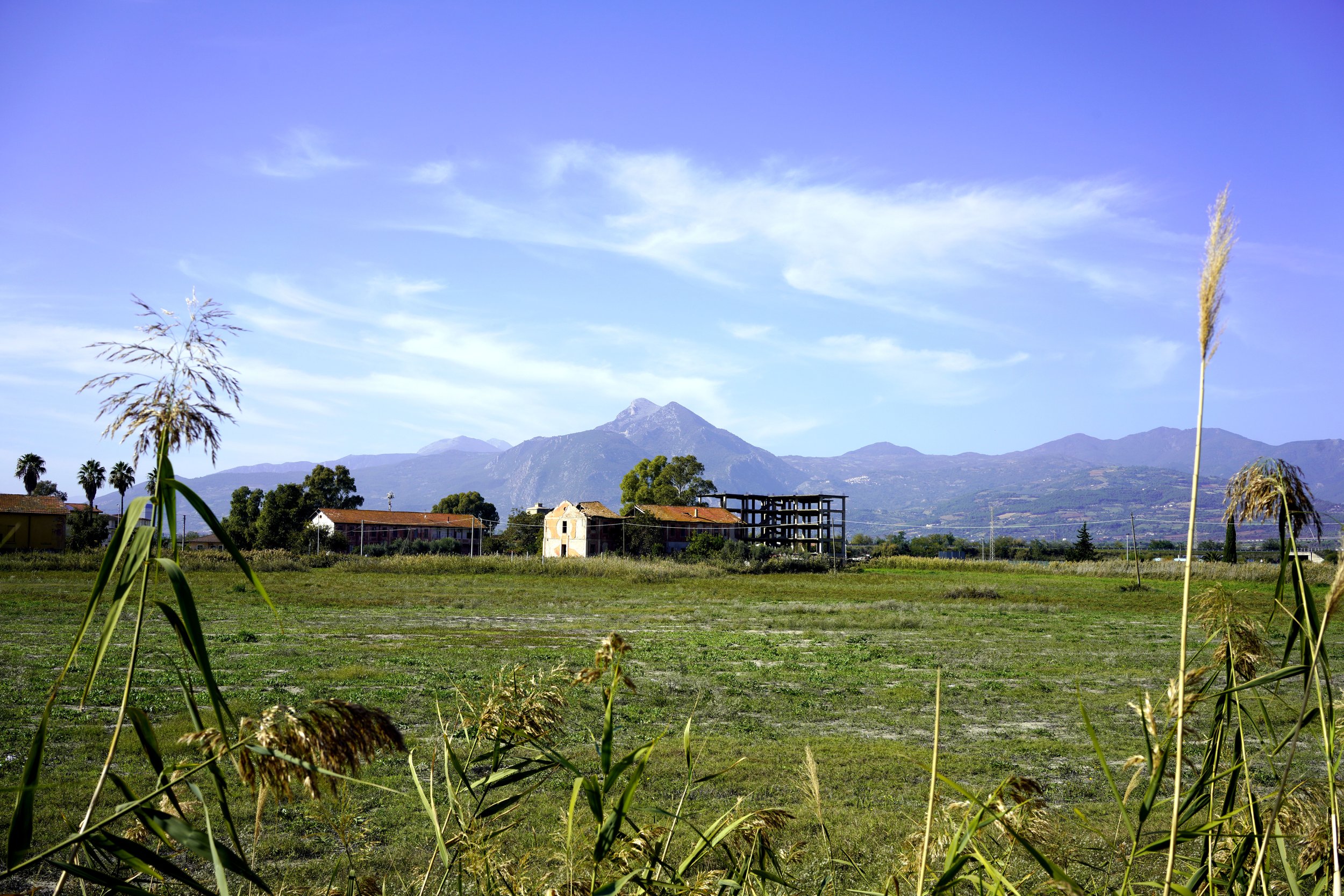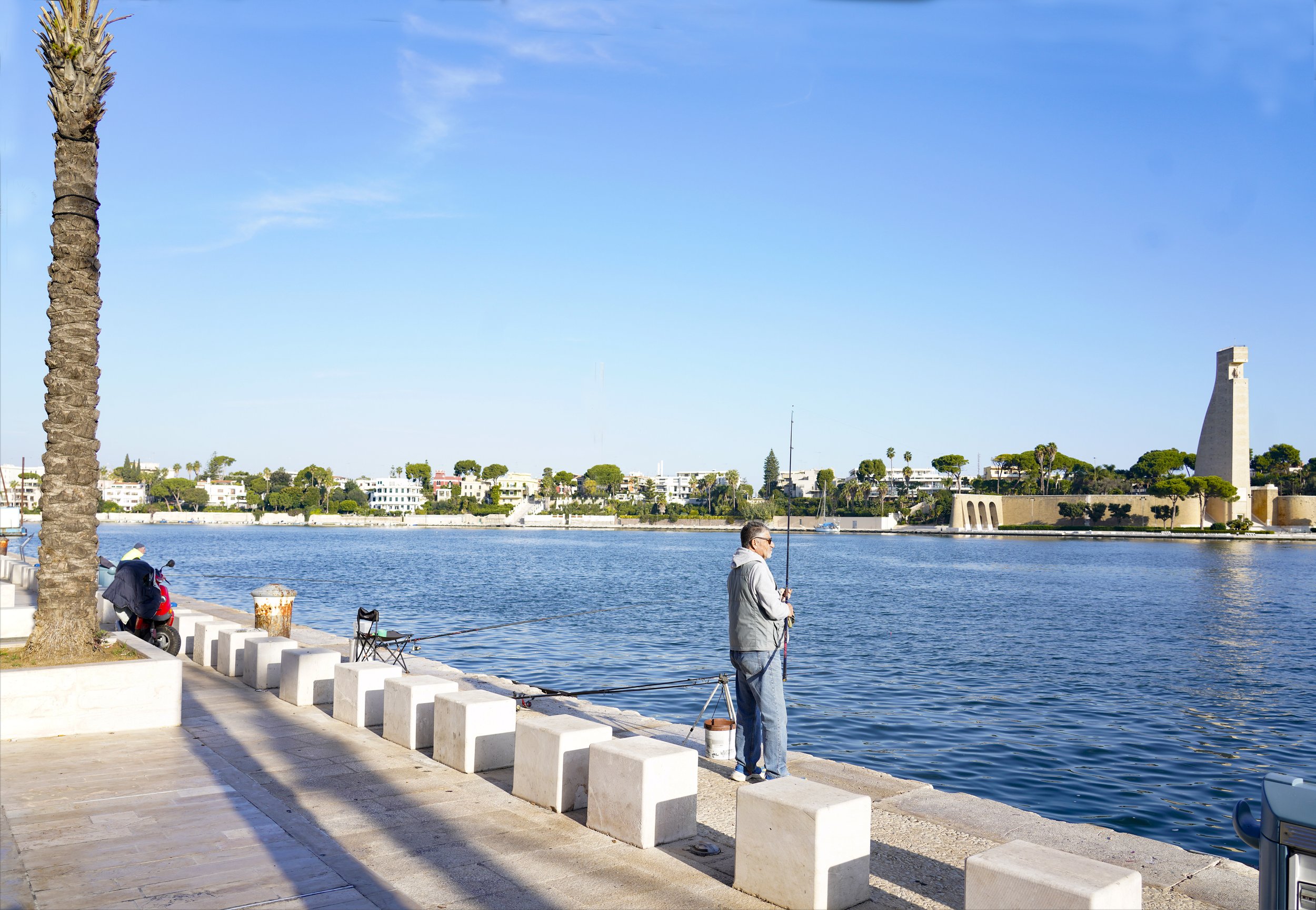
Since Roman times, Brindisi has been an important port city known throughout history as the “Gateway to the East.” Perched along the edge of the Adriatic Sea, it’s one of the largest cities in the Puglia region and has one of the most active trading and transport ports in Italy.
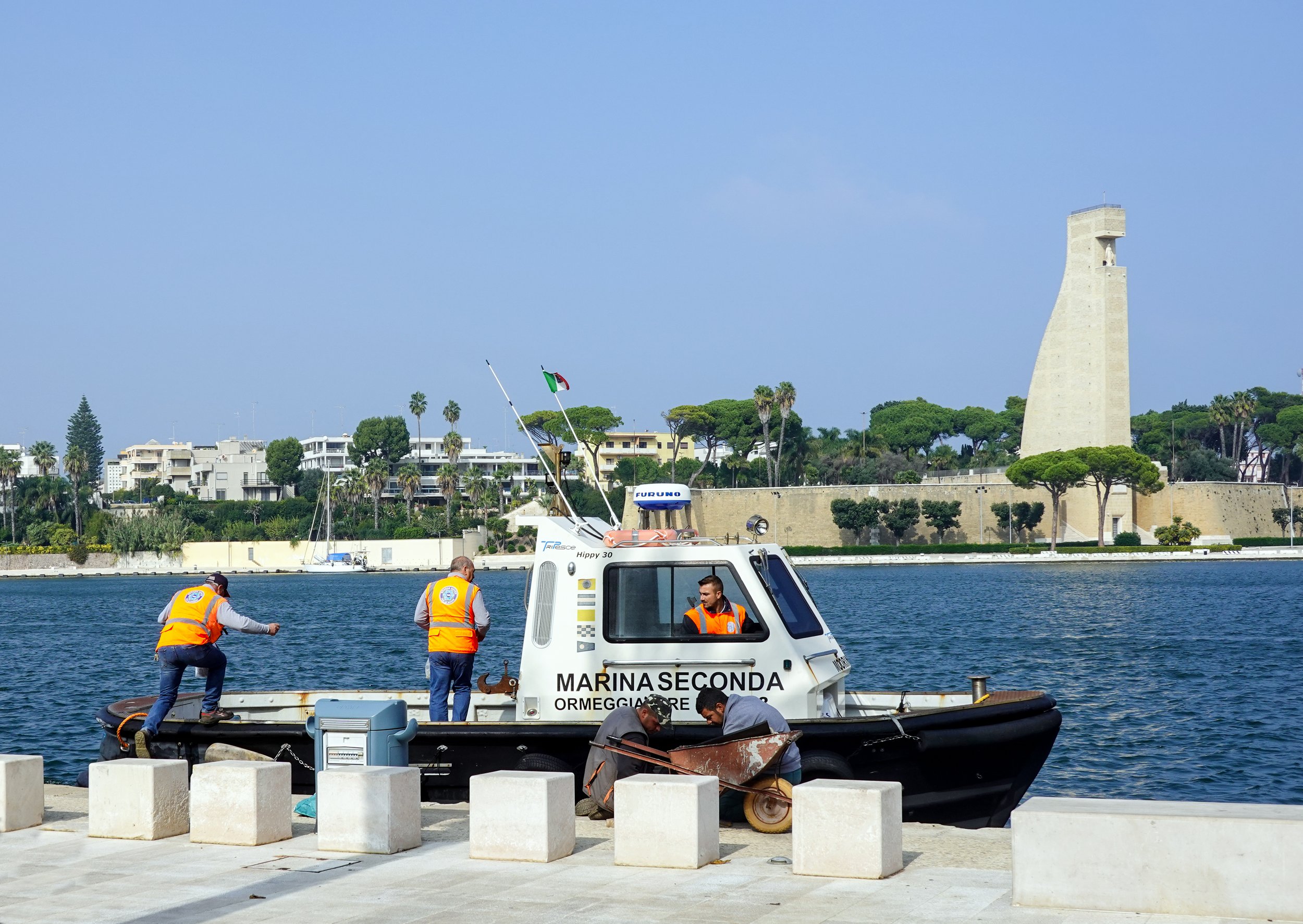
Throughout history, Brindisi has been ruled by various empires and kingdoms, including Ostrogoths, Lombards, and Kings of Sicily. During World War II, the city served as the capital of Italy, hosting King Victor Emmanuel III. Brindisi remains a strategic point on the eastern coast and the primary city of the Apulia region.
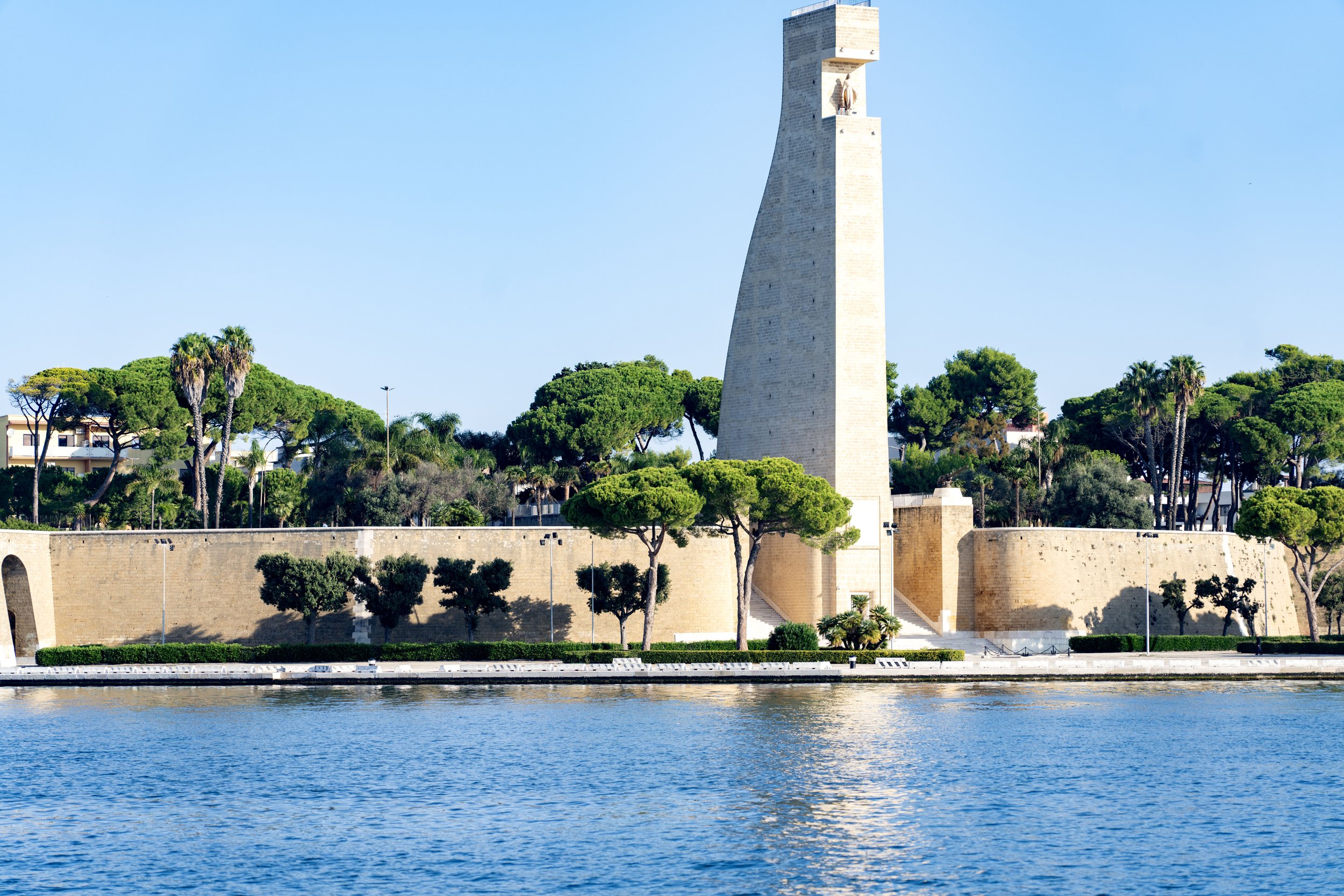
The Italian Sailor Monument built in 1933 in the shape of a rudder is 177 feet tall across the harbor from the end of via Appia. It was built in memory of the fallen sailors during both world wars; the names of the 6.000 Italian sailors fallen during the first war world are engraved inside. A marble Our Lady statue (1954) was put at the top.
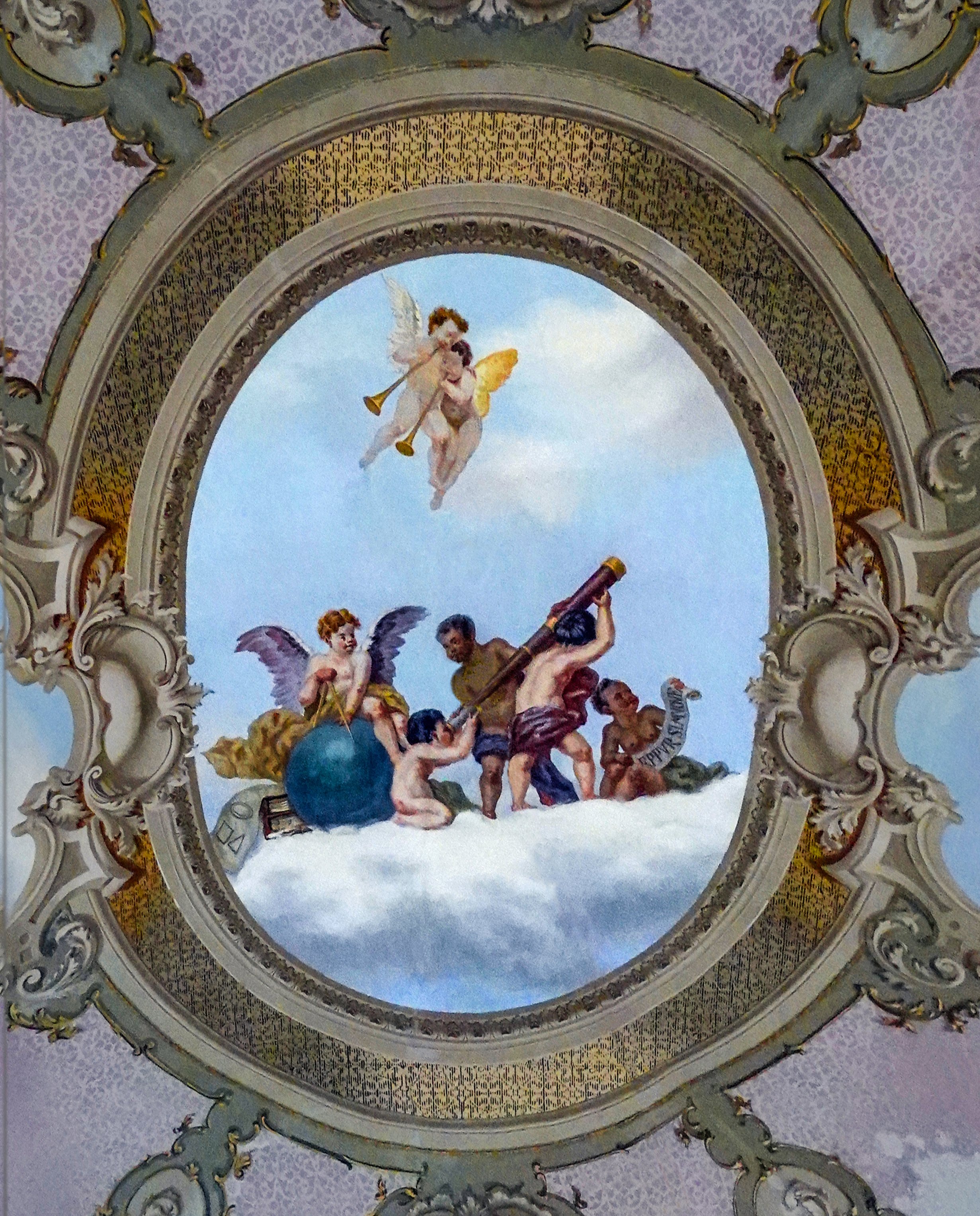
The Grand Albergo Hotel is located overlooking the waterway at the end of the Appian Way (the road between Rome and Brindisi in that period). This area was the place where (in Roman times) the travelers left to the East. From the Hotel, a splendid view of the port of the city is revealed.

The Appian Way, the Queen of Roads, ends in steps leading down to Brindisi harbor and onwards to Africa and the Middle East. On top of these stairs the Roman constructors placed two 61.5 feet high columns crowned by a headband depicting Jupiter, Neptune, Juno, and Amphitrite and other gods of the sea. That happened more than 2000 years ago, at a time when Brindisi was one of the major Italian cities. In the Middle Ages it became the prime port for the crusades. The columns at the end of the Appian Way were the last thing crusaders saw after venturing out to recover the Holy Land, and the first landmark that greeted their return.

The capital of the Appian Way column (2nd-3rd CE) in Brindisi is decorated with four anthropomorphic figures, one for each side, depicting Neptune, facing the sea, on the side opposed Jupiter, Mars and Minerva on the other two sides.
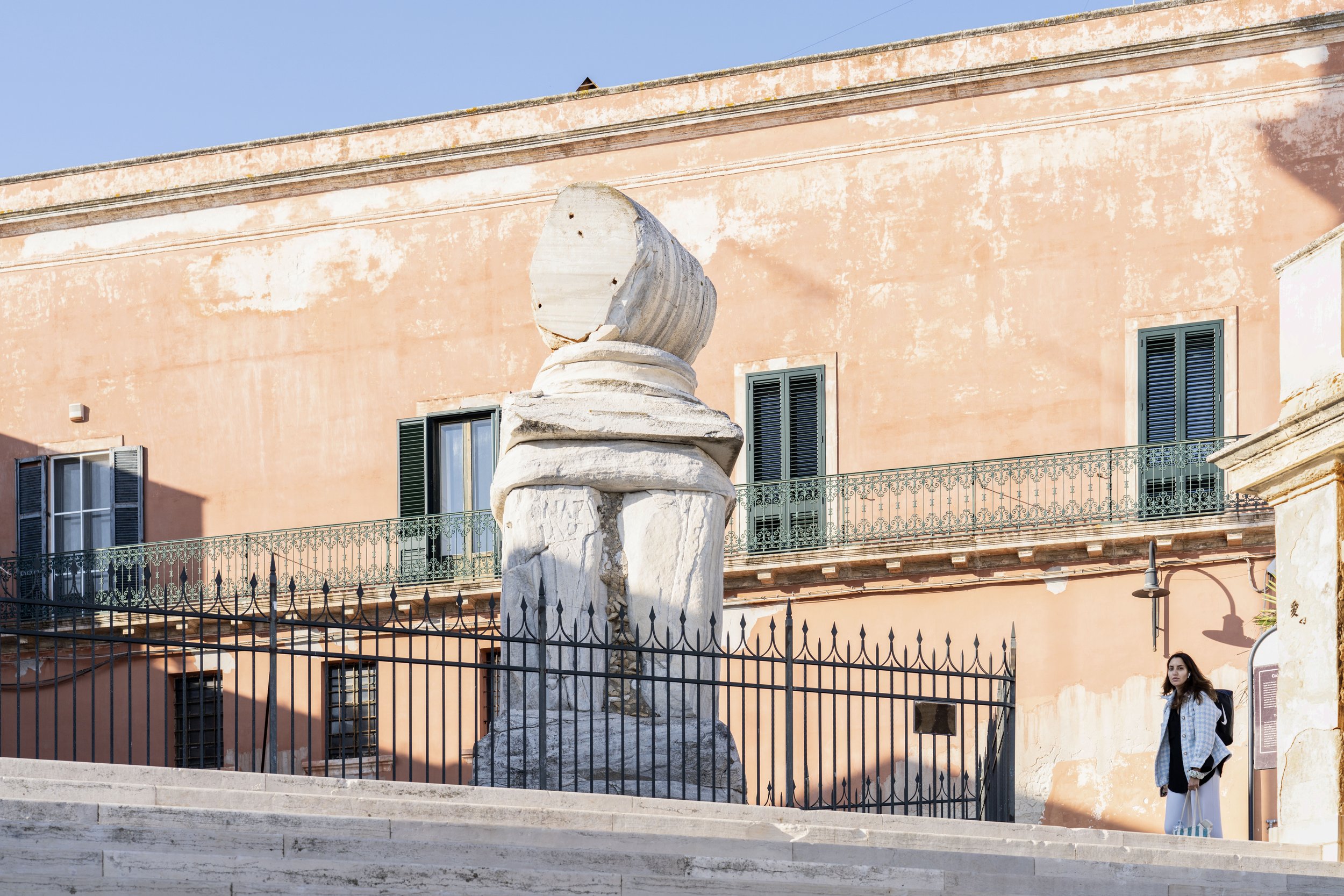
Originally, there were two twin columns at the end of the Appian Way. Some have suggested that they were used as a point of reference for the sailors entering the port. The base and a rock of the column that fell in 1528 are still in place; the other part was given as a gift to the city of Lecce, to form a part of the column to St. Oronzo.
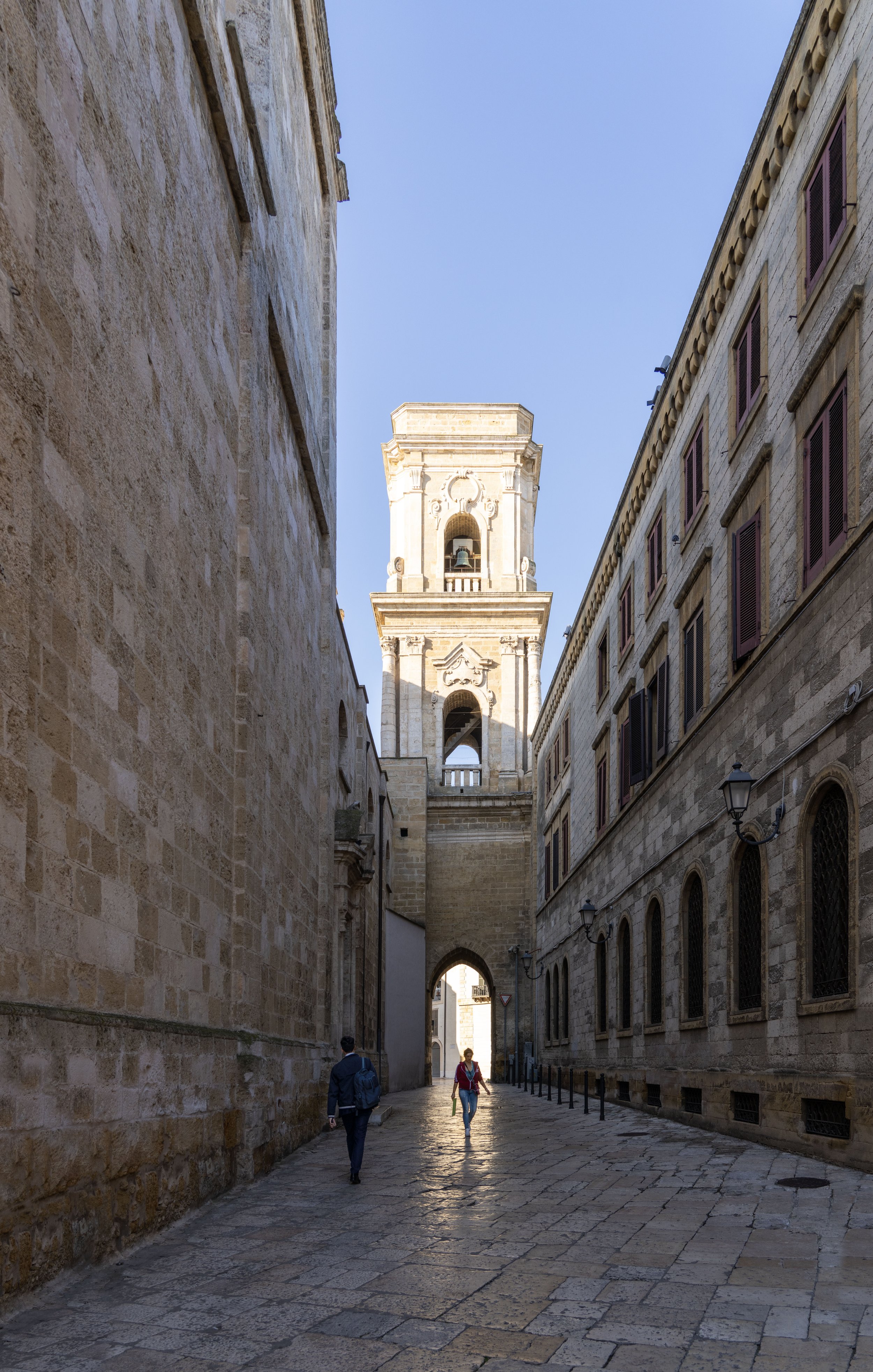
A medieval bell tower with a tunnel opens up to the ancient Piazza del duomo, which is also known as St. John the Baptist Church in the historic center of Brindisi.
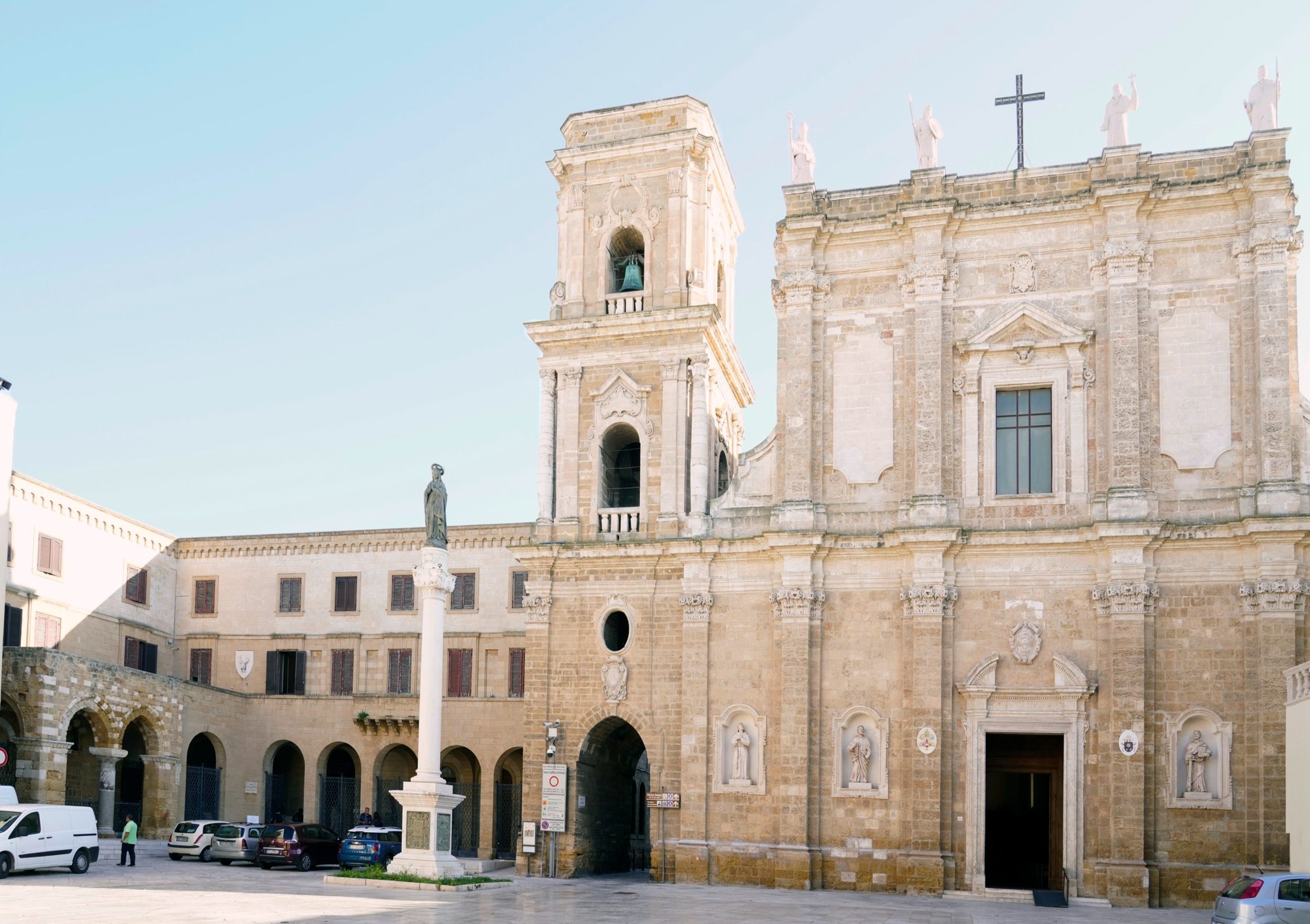
Brindisi’s Cathedral Church, also known as St. John's the Baptist Church, was originally built between 1098 and 1132. It has been almost entirely rebuilt, following the original design, after the earthquake in 1743. Here Ruggiero, son of Tancredi, was crowned King of Sicily in the year 1191, and in the year 1225 celebrations were held for the marriage of Isabella of Brienne, queen of Jerusalem, to the emperor Federico II.
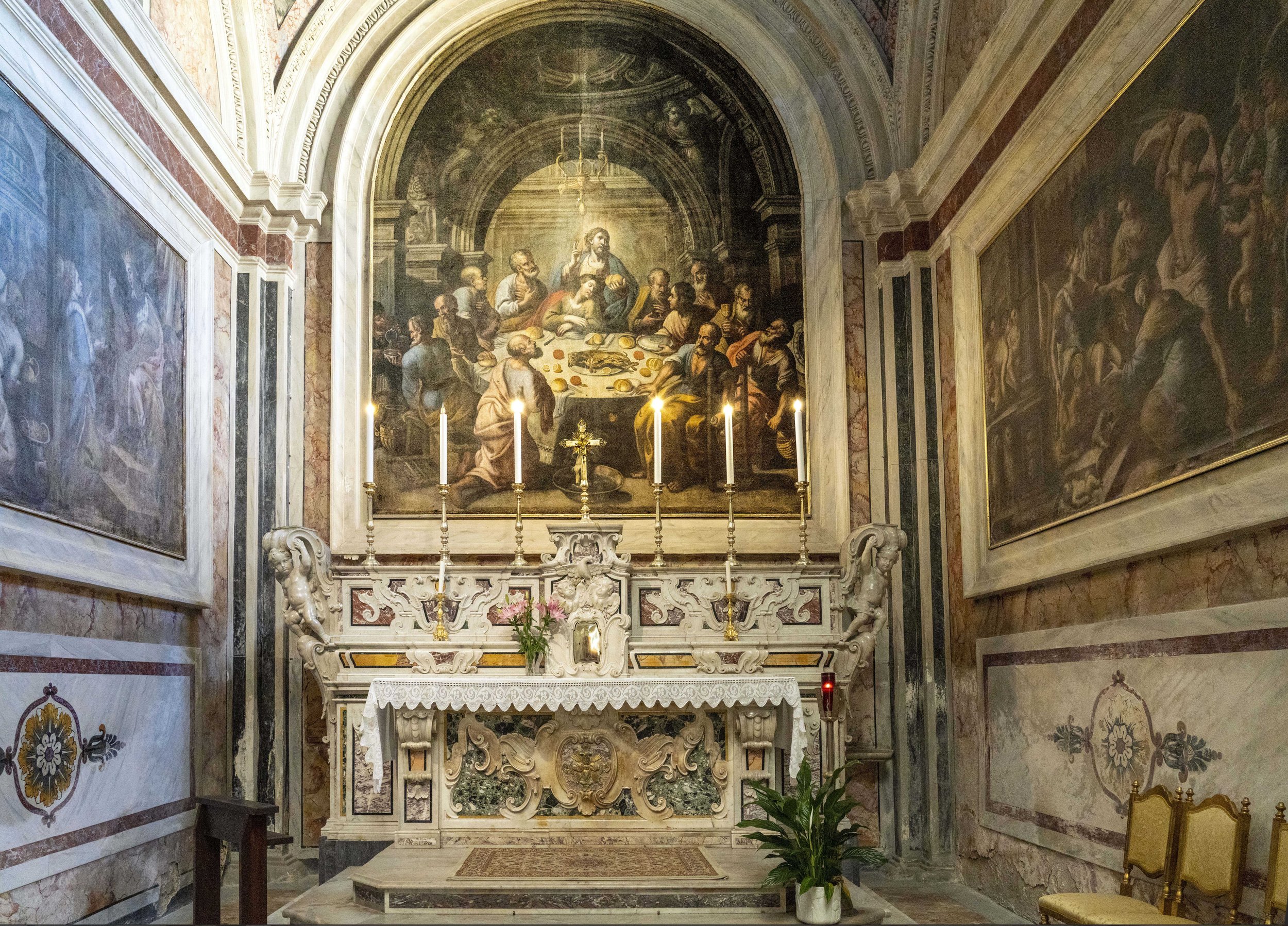
Holy Sacrament chapel of the Brindisi cathedral was painted by Diego Oronzo Bianco in 1715.
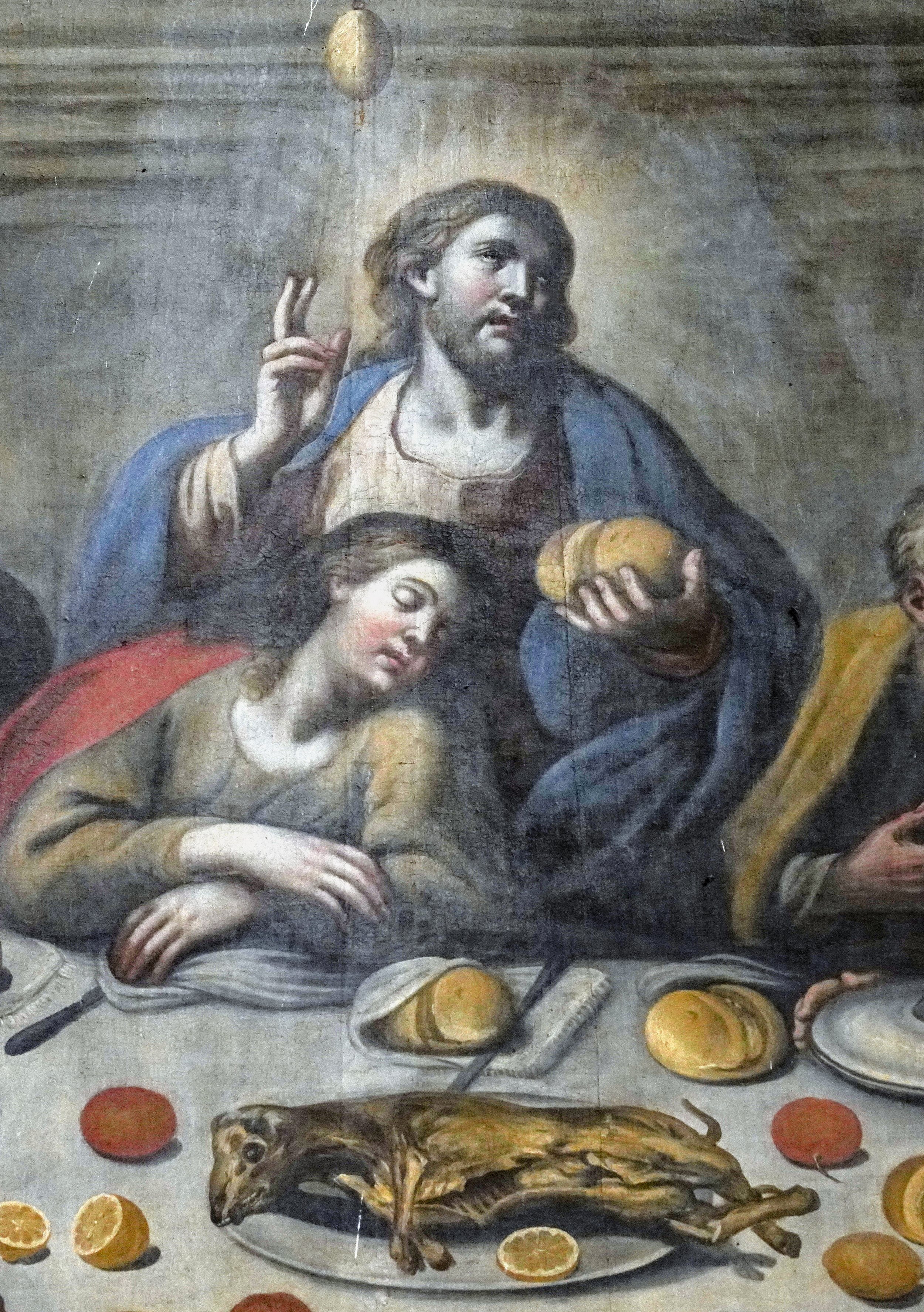
Diego Oronzo Bianco’s Last Supper has a different focus than the Leonardo da Vinci (1495-1498) version. Leonardo presents a study of varied human emotion through the individual apostles’ responses to Christ’s announcement that one of them would betray him. Bianco’s Supper focuses on Christ as the Holy Sacrament, presenting Christ in a blessing pose with his right hand while holding a loaf of bread in his left hand. Through Bianco's Supper the faithful experience the first Holy Communion, the Christian sacrament of the Holy Eucharist in which bread is transformed into the body of Christ (transubstantiation).
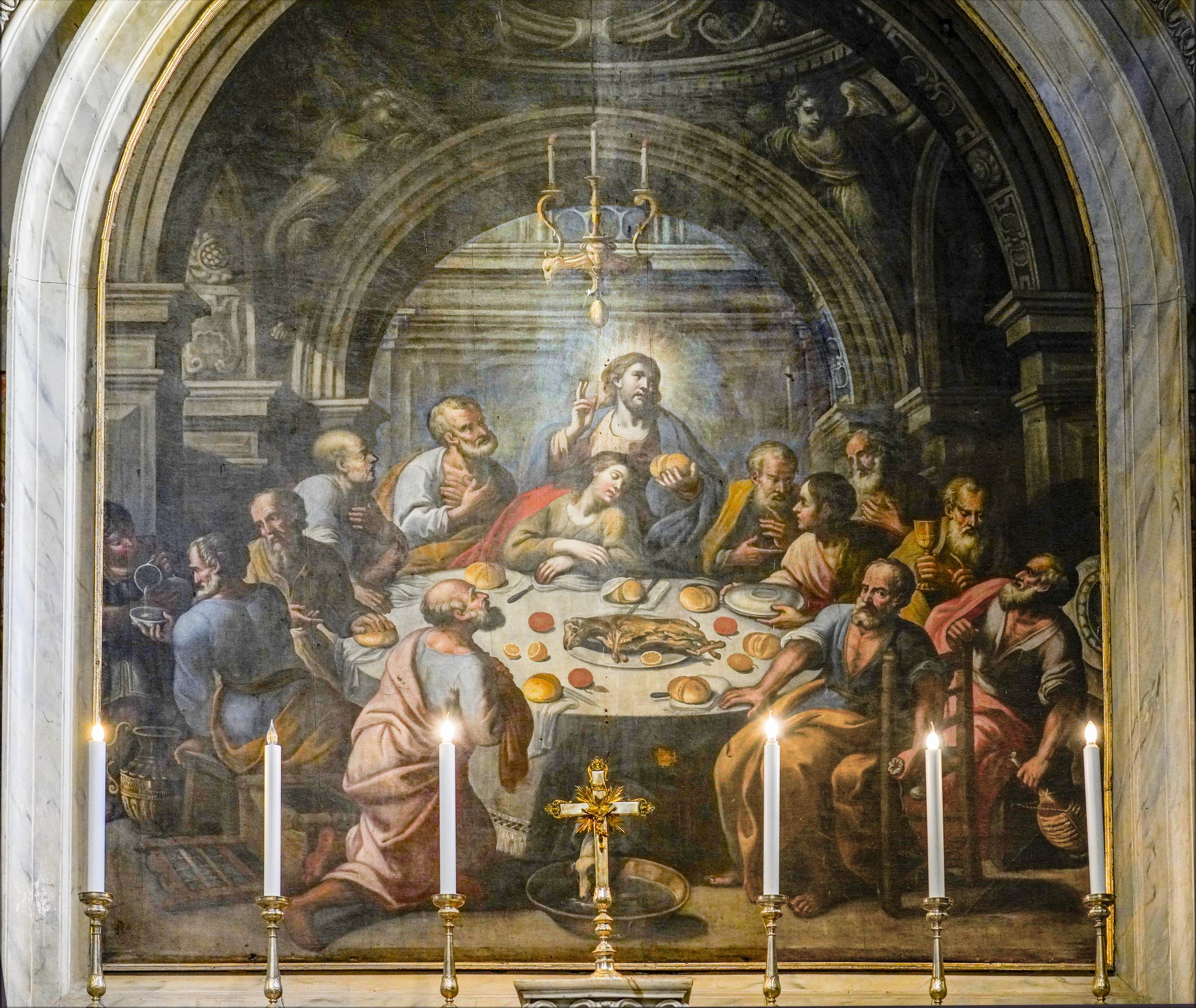
In Bianco’s Last Supper the apostles sit around an oval table, as individuals or in pairs, in contrast to Leonardo’s long rectangular table with the apostles grouped in threes, all on one side. Bianca’s Supper occurs within a room with receding Roman arches, a classical motif, while Leonardo’s room has an orthogonal-lined ceiling with three windows that reveal a countryside background. Leonardo uses the light from the window behind Christ to create the illusion of a halo, whereas Bianco illuminates Christ’s head with a halo of rainbow colors. In both versions Judas holds a bag of money, i.e., the Apostle in the right front of Bianco’s painting. Bianco inserts a small dog (lower front) emerging from under the table and drinking from the basin used to wash the feet of those about to supper unlike Leonardo's version.
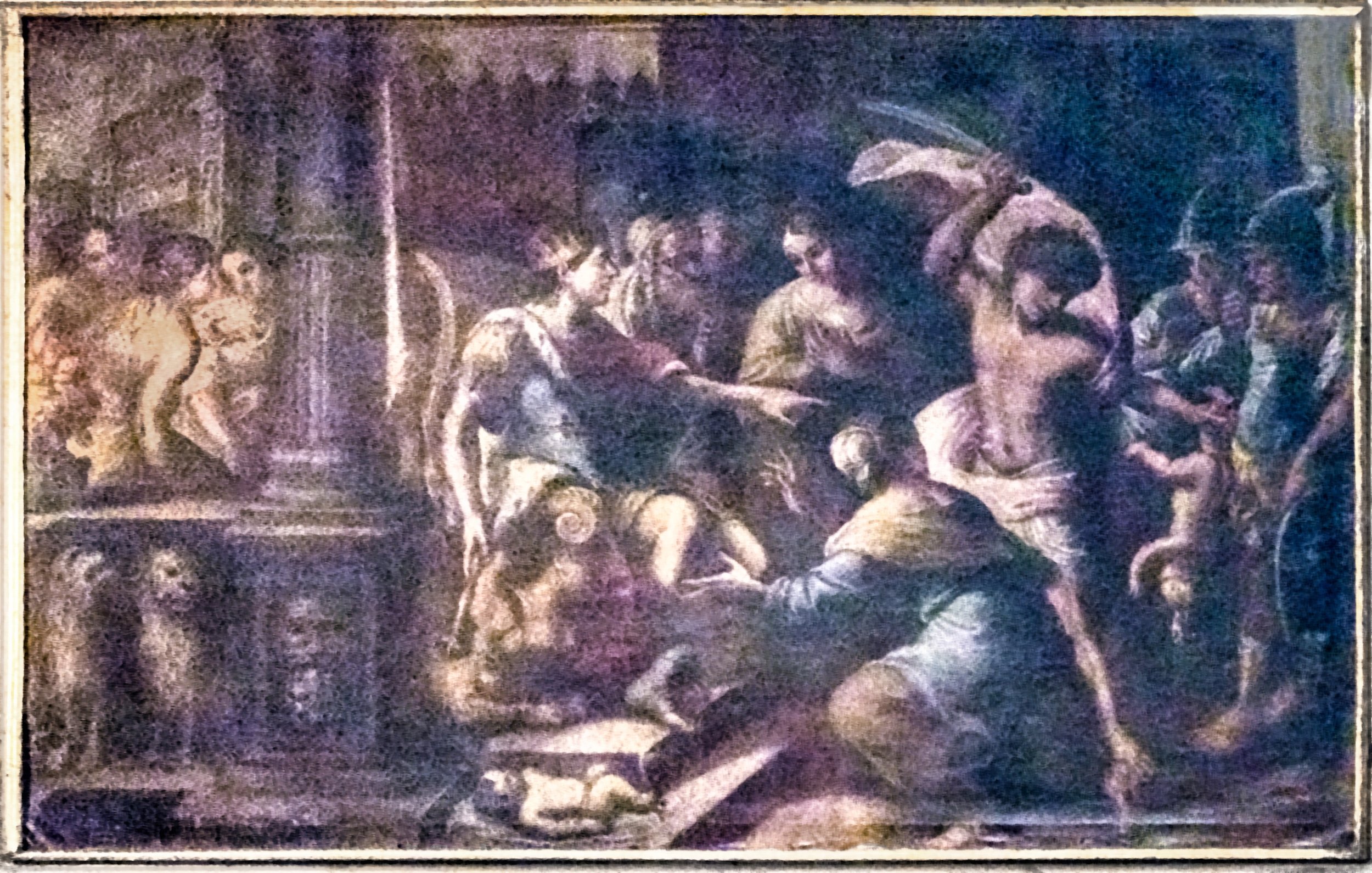
The Judgement of Solomon is a story from the Hebrew Bible in which Solomon ruled between two women who both claimed to be the mother of a child. Solomon ordered the baby be cut in half, with each woman to receive one half. The first woman accepted the compromise as fair, but the second begged Solomon to give the baby to her rival, preferring the baby to live, even without her. Solomon ordered the baby given to the second woman, as her love was selfless, as opposed to the first woman's selfish disregard for the baby's actual well-being. Some consider this approach to justice an archetypal example of an impartial judge displaying wisdom in making a ruling.
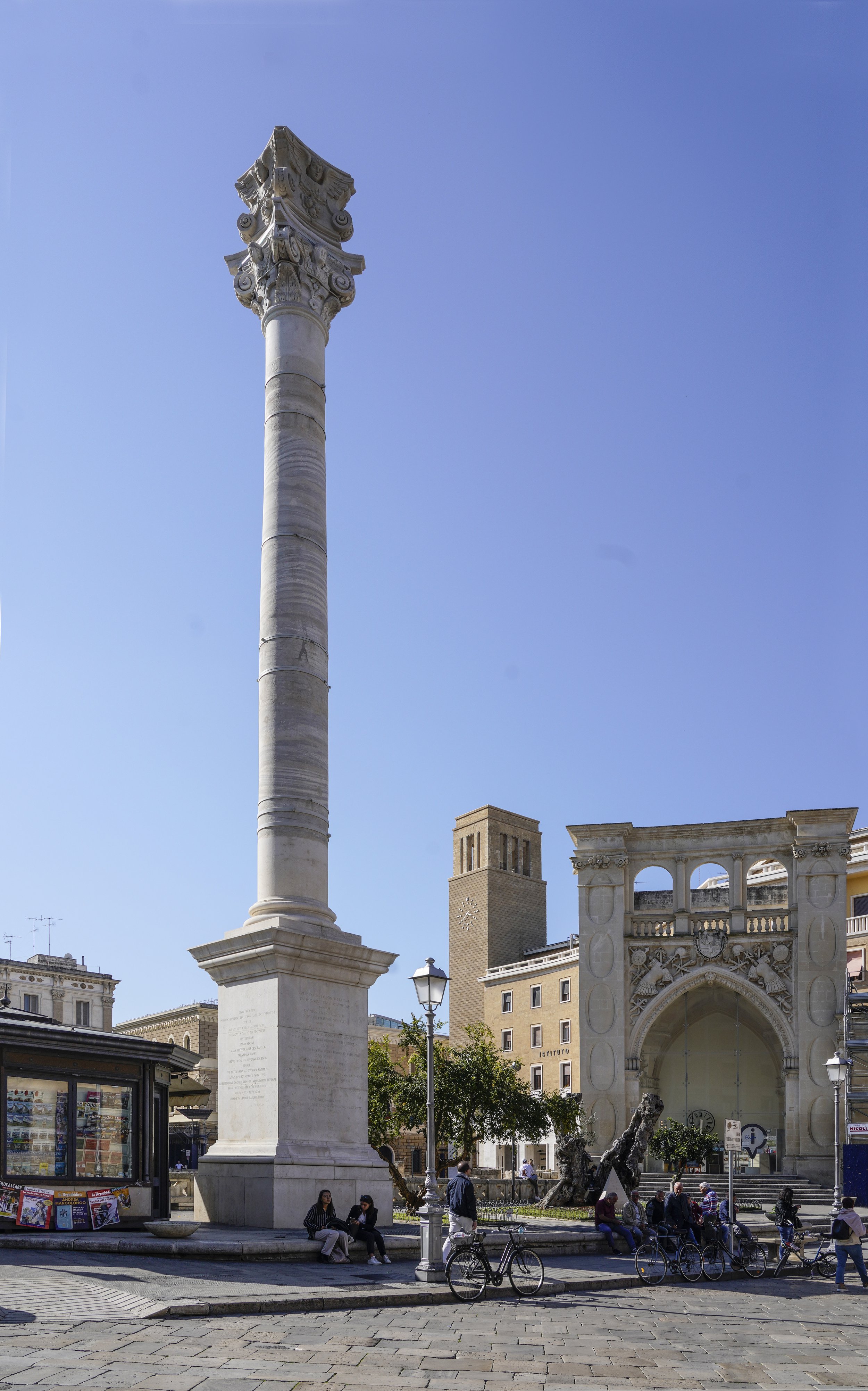
As stated earlier, two Roman columns once marked the end of the Appian Way in Brindisi. When one of them crumbled in 1582 some of the pieces were rescued and subsequently donated to Lecce (the base and capital remain in Brindisi). The old column was rebuilt in 1666 with a statue of Lecce's patron saint placed on top. Sant'Oronzo is venerated for supposedly saving the city of Brindisi from a 1656 plague. When this picture was taken in 10/2022 the statue was not on the column.

The Church of Saint Mary of Grace (rt middle) located across the Roman Amphitheater in Piazza Sant’Oronzo was built in the late 1500’s. The Roman amphitheater is in fact double the size, however when it was excavated, the Church of Saint Mary of Grace already existed. If the archaeologists had wanted to continue to dig, they would have needed to tear down the church in order to do so because it was built on top of the ruins. As a result, now you just see part of the well-preserved Roman ruins.
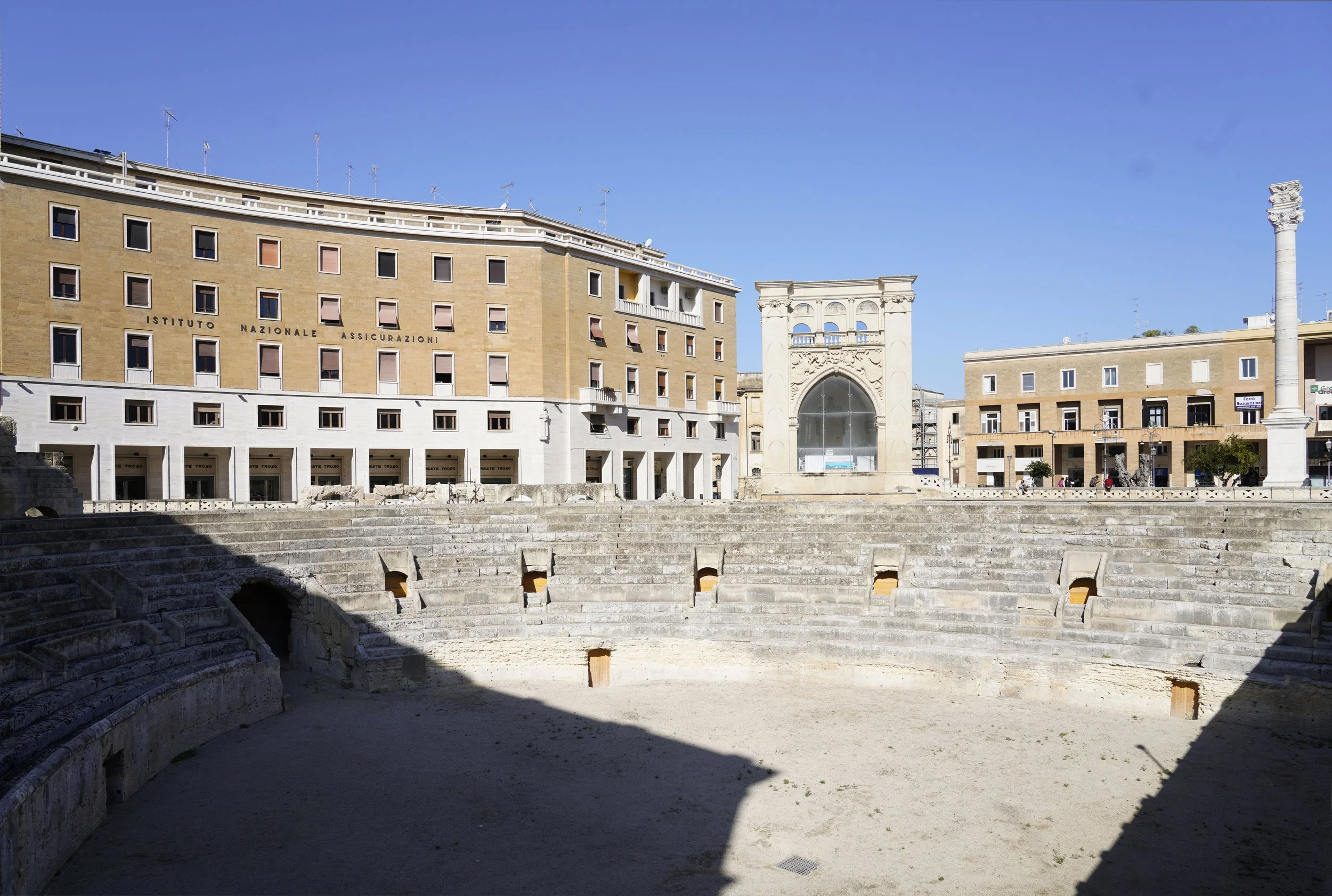
The amphitheater in the Piazza Saint Oranzo is surrounded by other classical ruins, a Baroque triumphal arch, and the buildings of modern-day Lecce, reflecting the entire history of the city in one view. It was completely hidden from view and its existence unknown until 1901 when it was uncovered while digging to build a bank. The below-ground amphitheater was built during Roman Emperor Hadrian’s reign (r. 117-138 CE), at which time Lecce was just a small village that could be used as a resort or a trading port along the Mediterranean.

The amphitheater we see today is just a part of the original structure, the rest of which is buried forever under the Chiesa delle Grazie but you can easily make out the horseshoe-shaped arena, which in its time could hold at least 15,000 spectators.
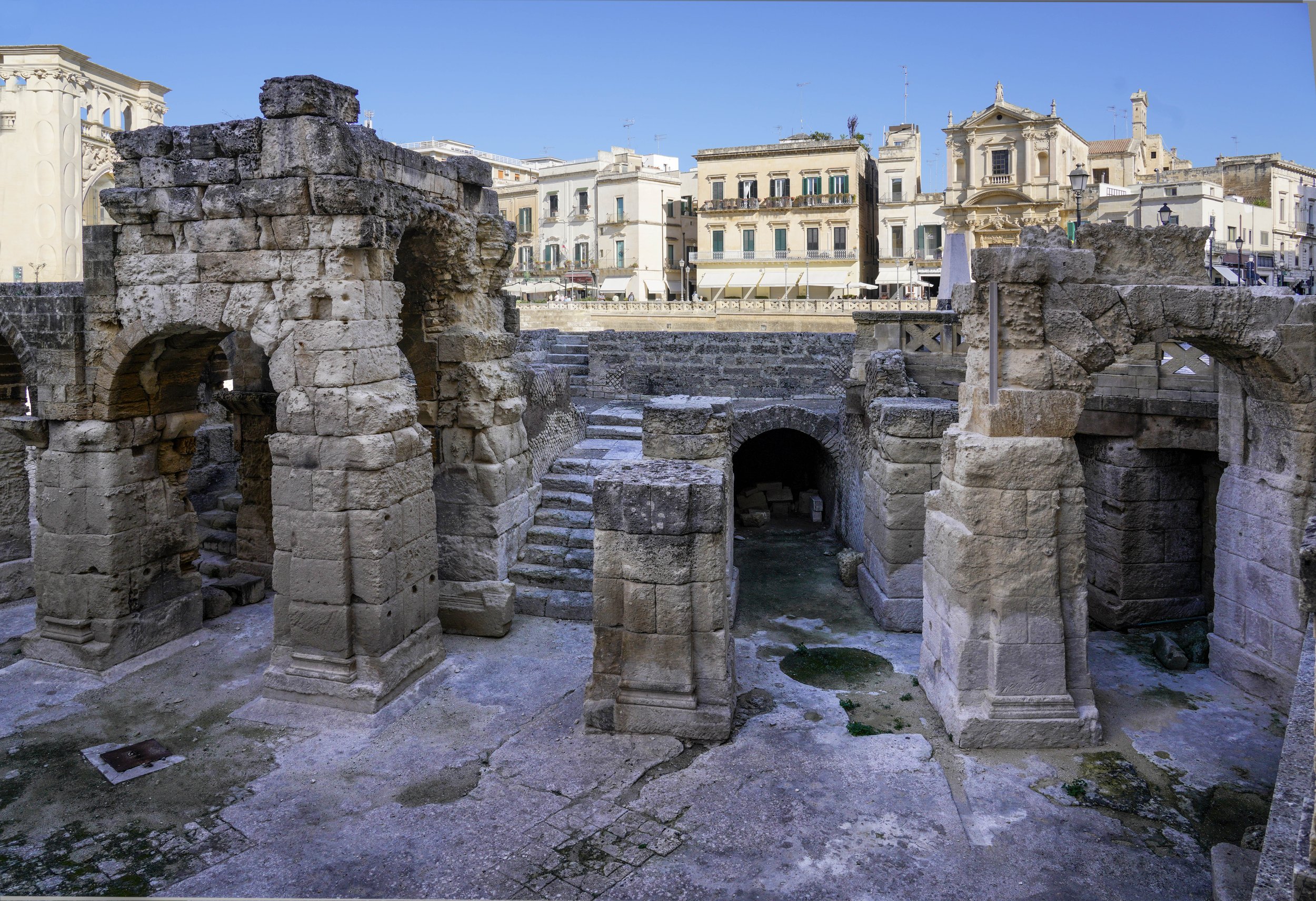
On the walls of the arena, images of animals are still visible: deer, bears, lions and bulls, which were all hunted for entertainment in the arena. Exotic animals were also hunted for sport, presented in morning exhibitions. Midday shows featured public executions or fights to the death between condemned prisoners, and in the afternoon, the “entertainment” concluded with gladiator fights.

The main city gate, Porta Napoli, was erected in 1548 in anticipation of a state visit from Charles V, the Holy Roman Emperor (1519-1555) and King of Spain (1516-1556), with its possessions of the southern Italian kingdoms of Naples, Sicily and Sardinia. The name of Porta Napoli derives from the consular route, starting here and leading to Naples. On the pointy pediment is carved an enormous Spanish coat of arms and below an inscription celebrating the Emperor Carlo V, “triumpher in the American and African territories and during the wars against France, destroyer of the Turks and propagator of the Christian religion.”

This obelisk, erected in 1822, stands in the center of a traffic circle, separated from Porta Napoli by Piazzetta Arch of Triumph. It is decorated on all four sides by relief panels and was erected to commemorate the visit of King Ferdinando I ( 1751 – 1825) of the two Sicilies.

The Church of Santa Maria della Provindenza is better known as the Alcantarine from the nuns who occupied the adjacent monastery now demolished. The façade is formed by three superimposed orders. In the lower part, niches house the statues in Lecce Stone of Saint Raphael the Archangel, Saint Anthony of Padua, Saint Francis of Assisi and St. Michael the Archangel. The second order is characterized by a central window and two niches that house the sculptures of Saint Peter of Alcantara on the left and Saint Paschal Baylon right.

Inside the The Church of Santa Maria della Provindenza this painting illustrates the story of a woman who washed Jesus’ feet. “And behold, a woman who was in the city, a sinner; and when she knew that he was sitting at the table to eat at the Pharisee's house, she brought an alabaster jar of ointment, and standing behind at his feet, weeping, she began to wet his feet with her tears, and wiped them with the hair of her head, and kissed his feet, and anointed them with the ointment." The story concludes that Jesus said to the woman, “Because you believed, you are saved from your sins. Go in peace.”
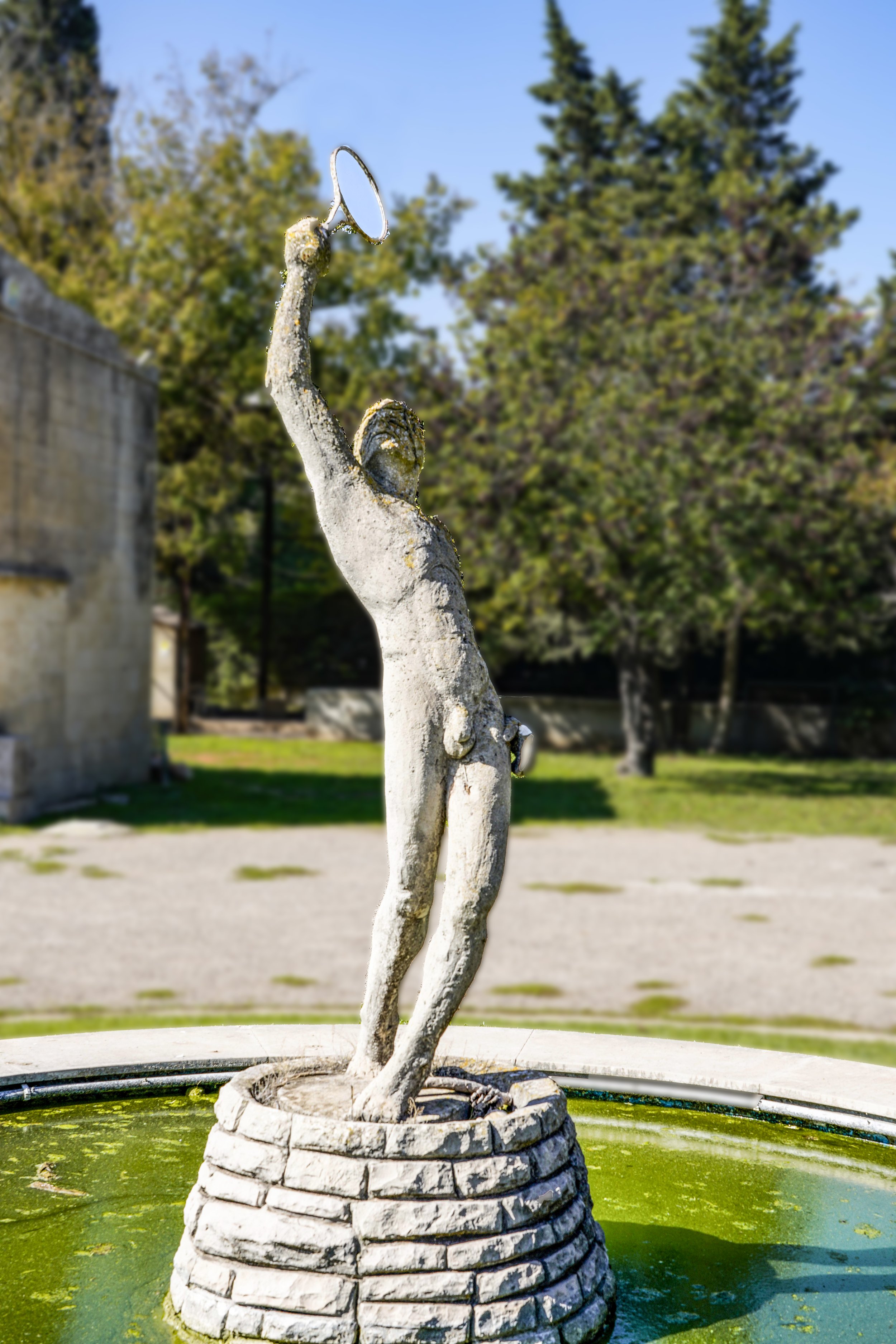
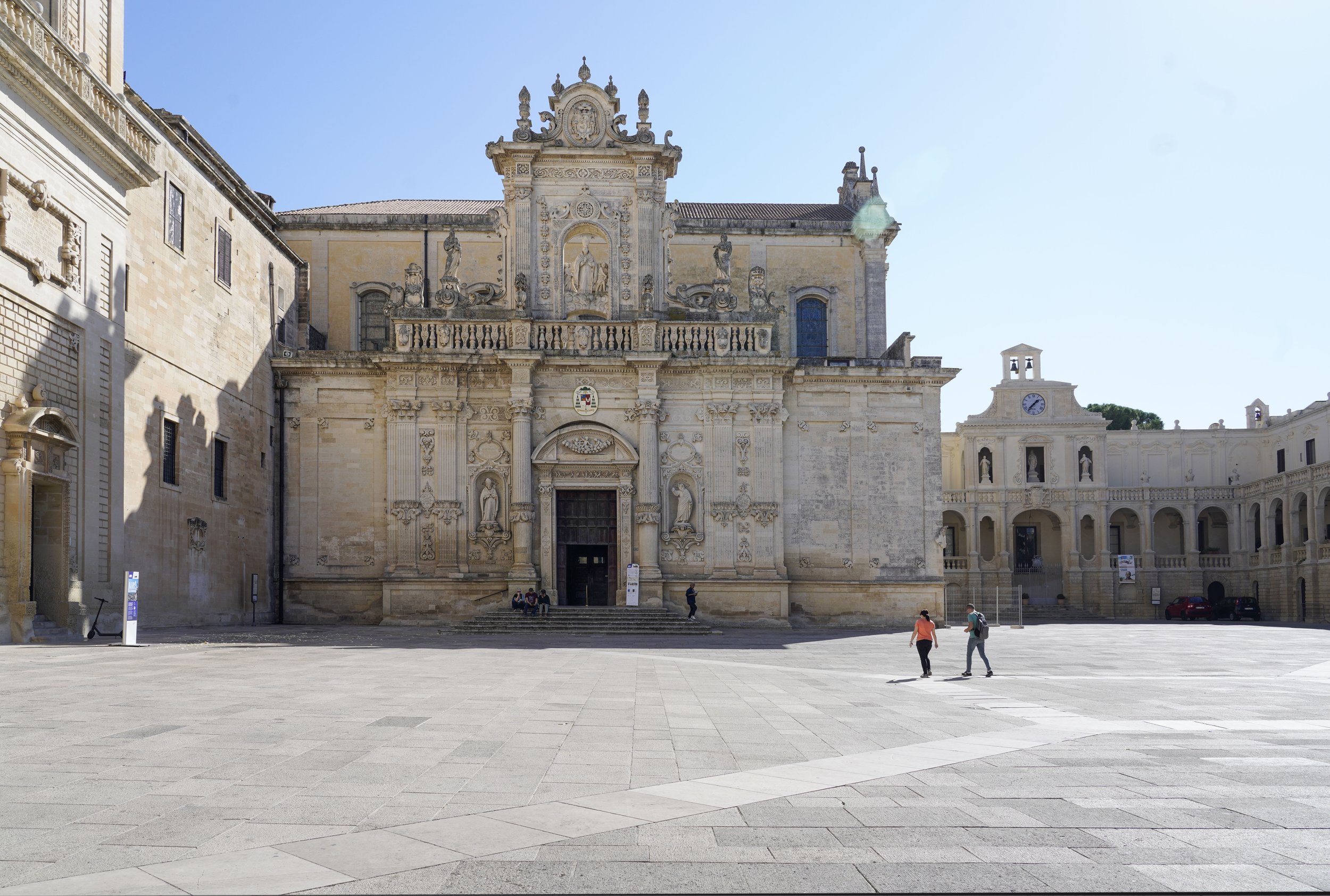
The original Norman cathedral was built on Piazza del Duomo in the mid-12th century. More than 500 years later, the church was completely reworked in the baroque style and finished by Giuseppe Zimbalo. At the center of the façade is the portal, accessible by a staircase. Flanking the portal are niches containing statues of Saint Giusto (on the right) and Saint Fortunato (on the left). Above, in the center and standing within a grand and highly decorated arch, is a statue of Saint Orontius, Lecce’s patron saint.

Saint Orontius is traditionally known as the first bishop of Lecce, who was ordained by Saint Paul. A 12th c. manuscript states that a representative of Nero, Antoninus, imprisoned Orontius and his nephew, Fortunatus, threatening to kill them if they did not reject their new religion (Christianity). The two refused and managed to be released, and continued to preach in the Salento and at Bari. They were finally arrested again by Antoninus and executed with an axe 1.8 miles from Lecce, on 26 August.
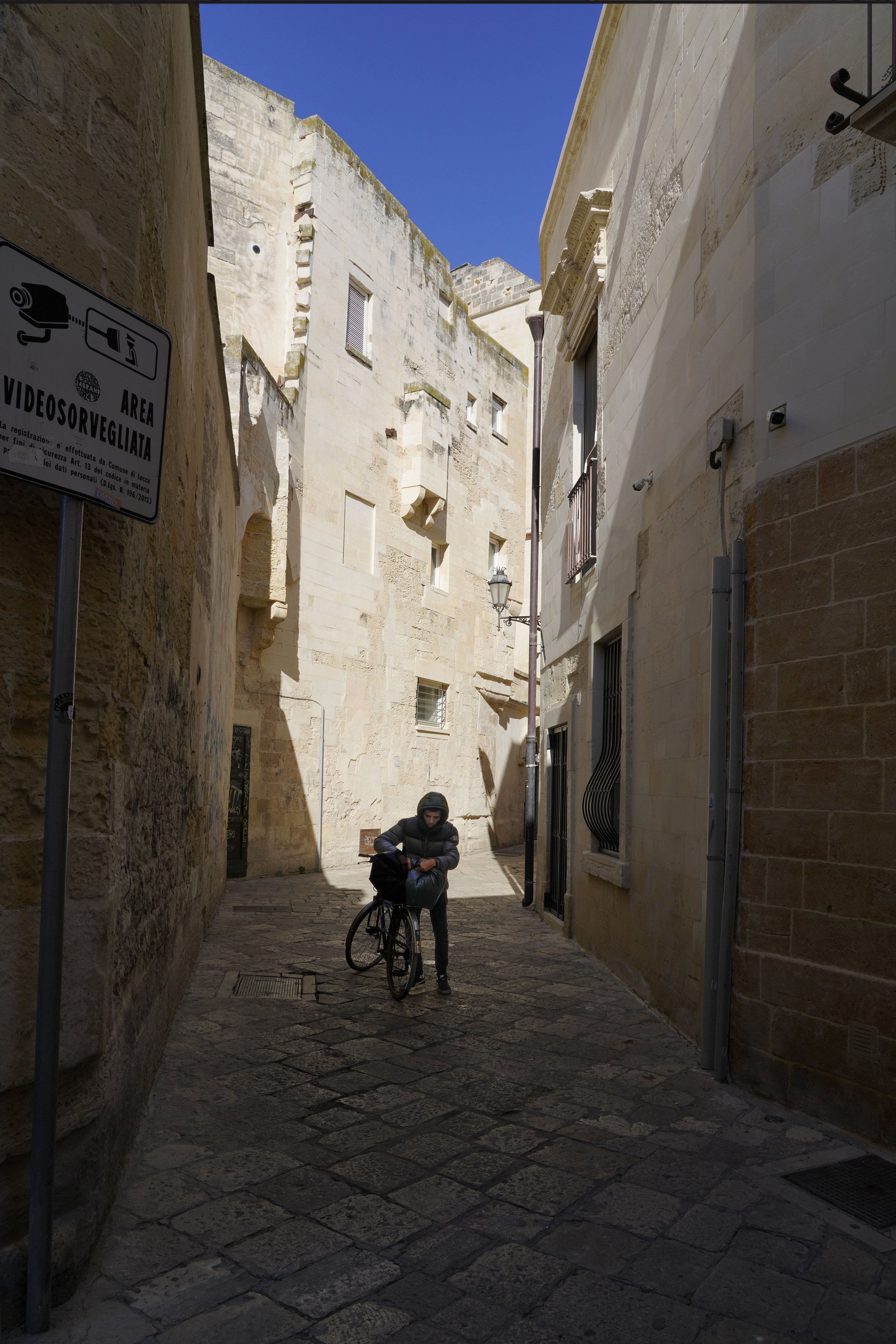
A Roman Theater is hidden amongst the buildings of the Baroque city.
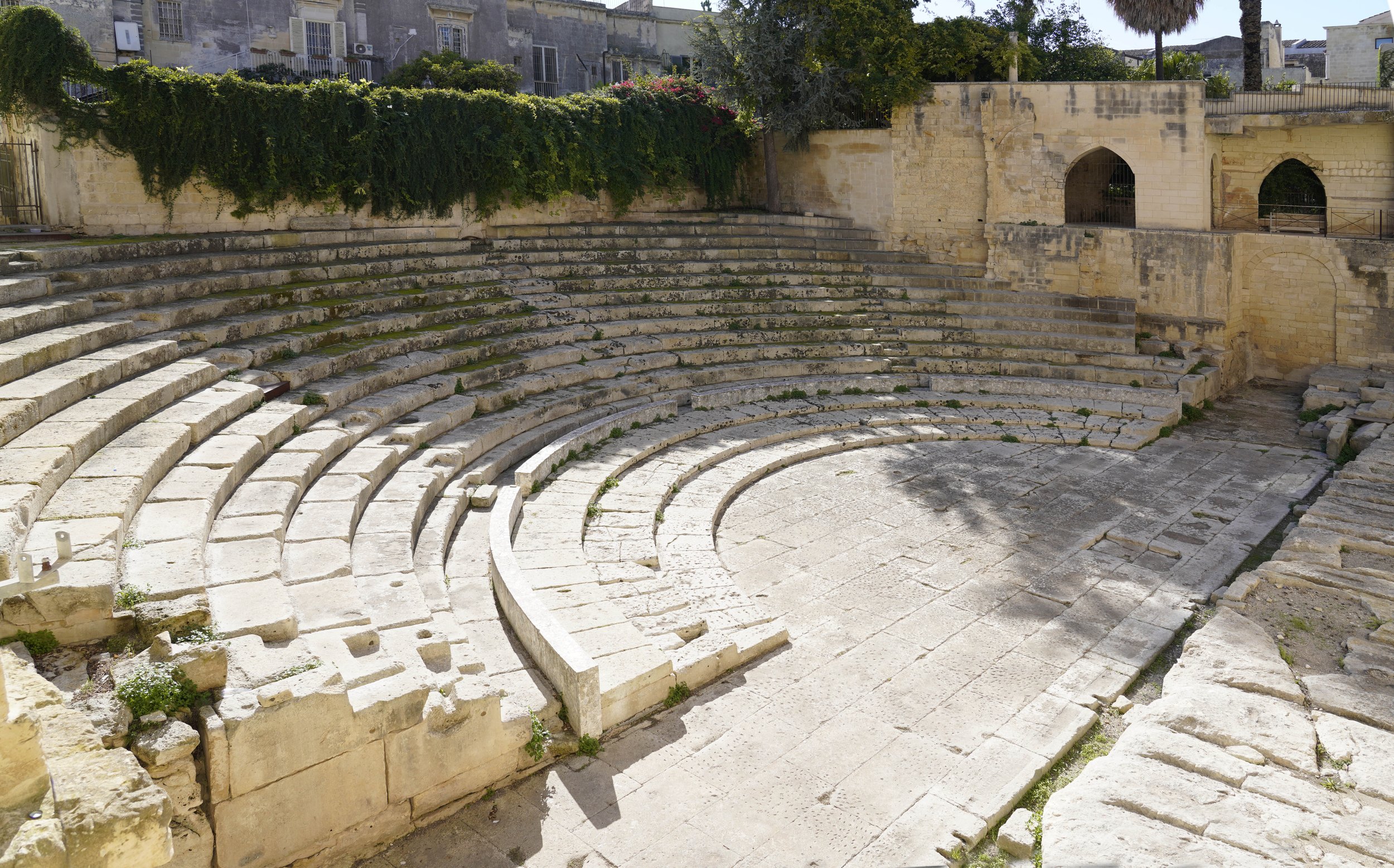
The 2nd century theater was discovered by chance during an excavation to restructure a building. In this case, in 1929 during some works, the cavea was brought to light, i.e., the steps where the spectators took their seats. Then the statues that decorated the theater were found, statues going back to the times of the Antonini, Roman emperor from 138 to 161. Today we can only see a part of it having built all around it but it was thought to contain about 5.000 people.

As in all theaters of the 2nd-3rd centur,y both comedies and tragedies were performed. As for fights with animals or among gladiators there was the amphitheater (shown earlier on this site).
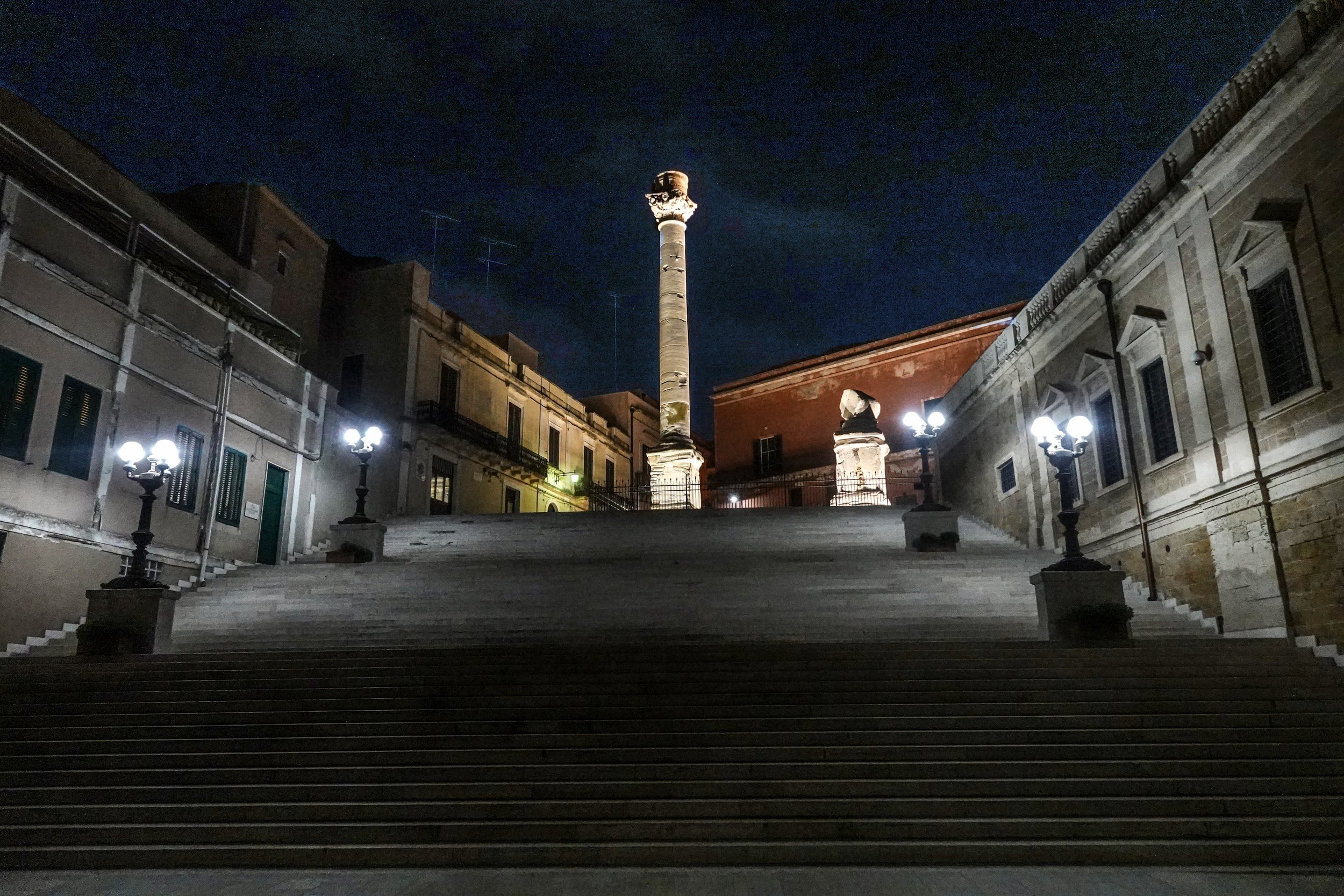
Having returned from Lecce, an after dinner walk along the harbor and the Virgilio Staircase with the Appian Way Column at the top. On the right of the square are the remains of the house in which the Latin poet Virgil died.
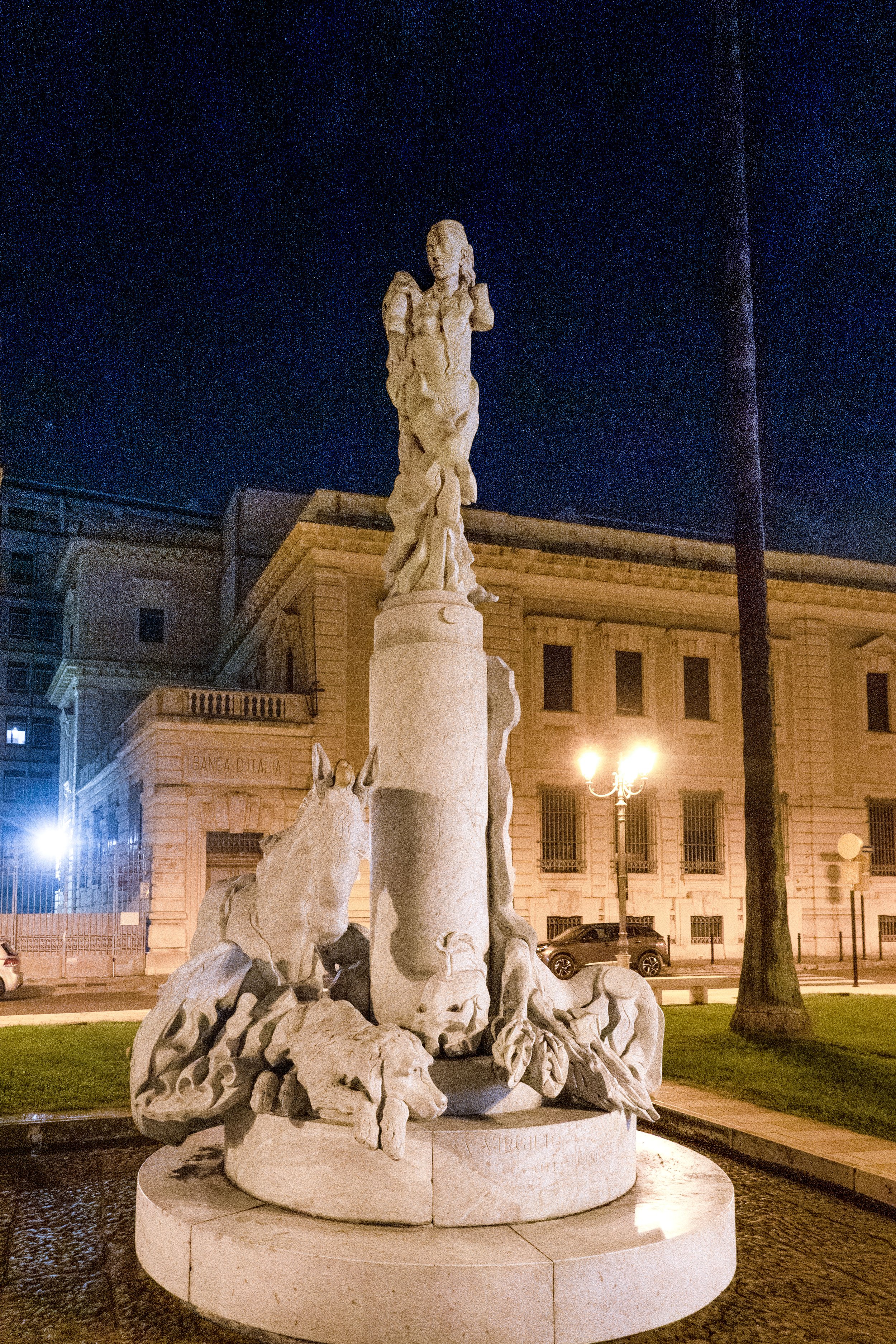
The statue is a sculpture that was conceived by Floriano Bodini in 1988, dedicated to the Greek artist Virgil. It is located in this small garden on the seafront to honor the memory of Virgil, located near his house, adjacent to the Virgilio staircase, where he spent the last period of his life and where he died in 19 B.C.
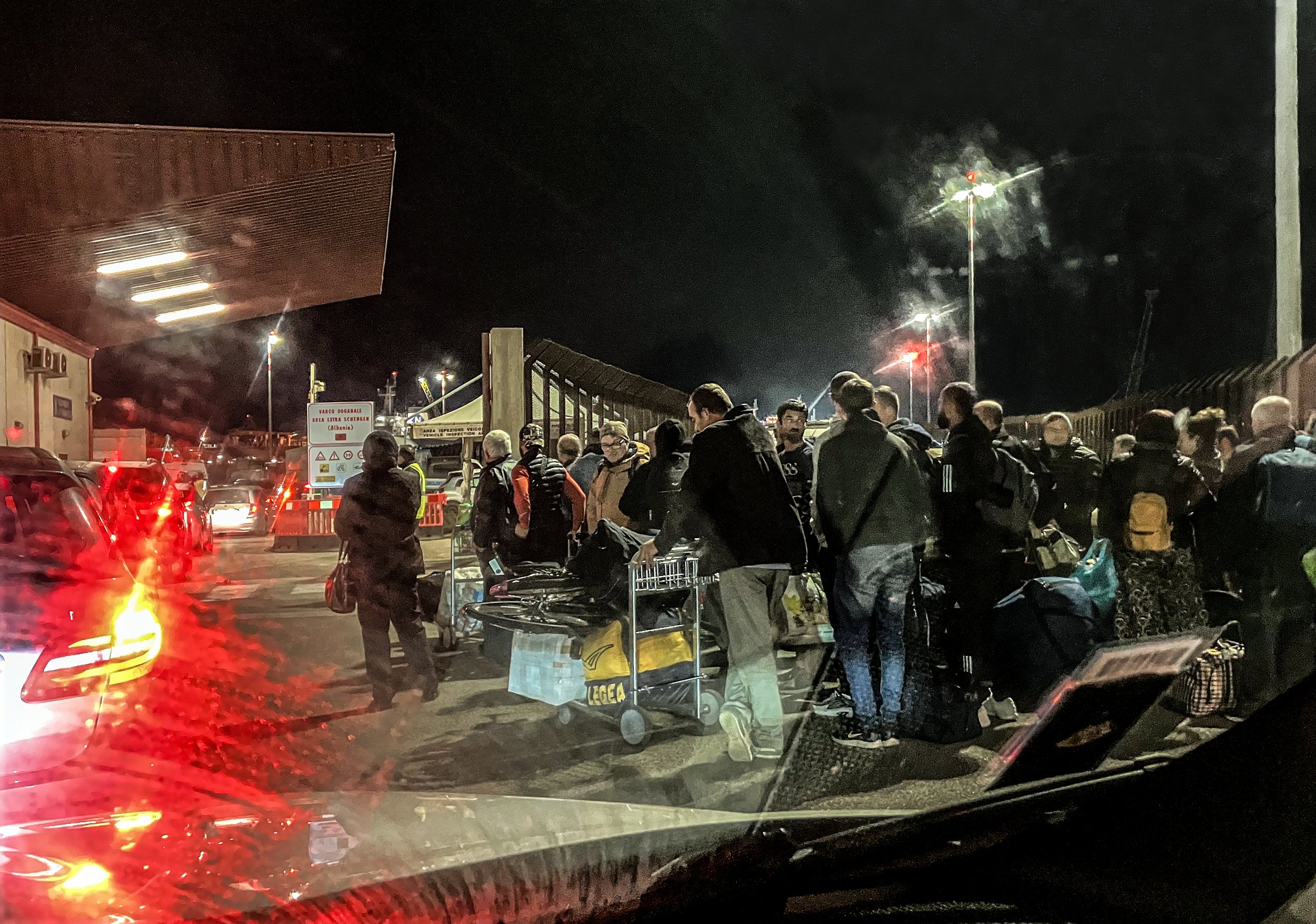
While in line, boarder guards checked not only documents but in some cases had drivers open their car trunks for inspection. I was asked why I was going to Albania.

A third check for documentation - passport - for ferry from Brindisi to Vlore, Brindisi.
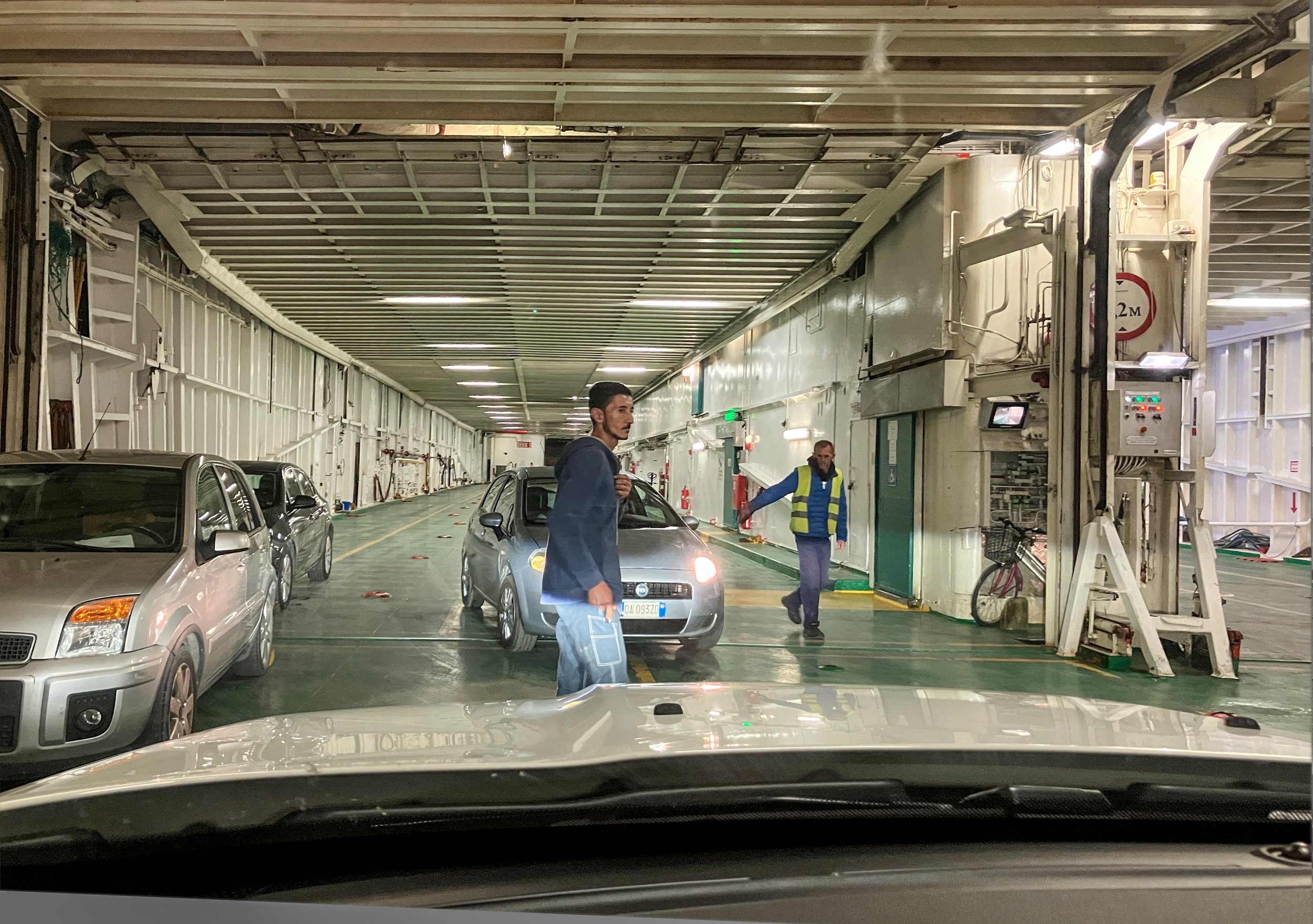
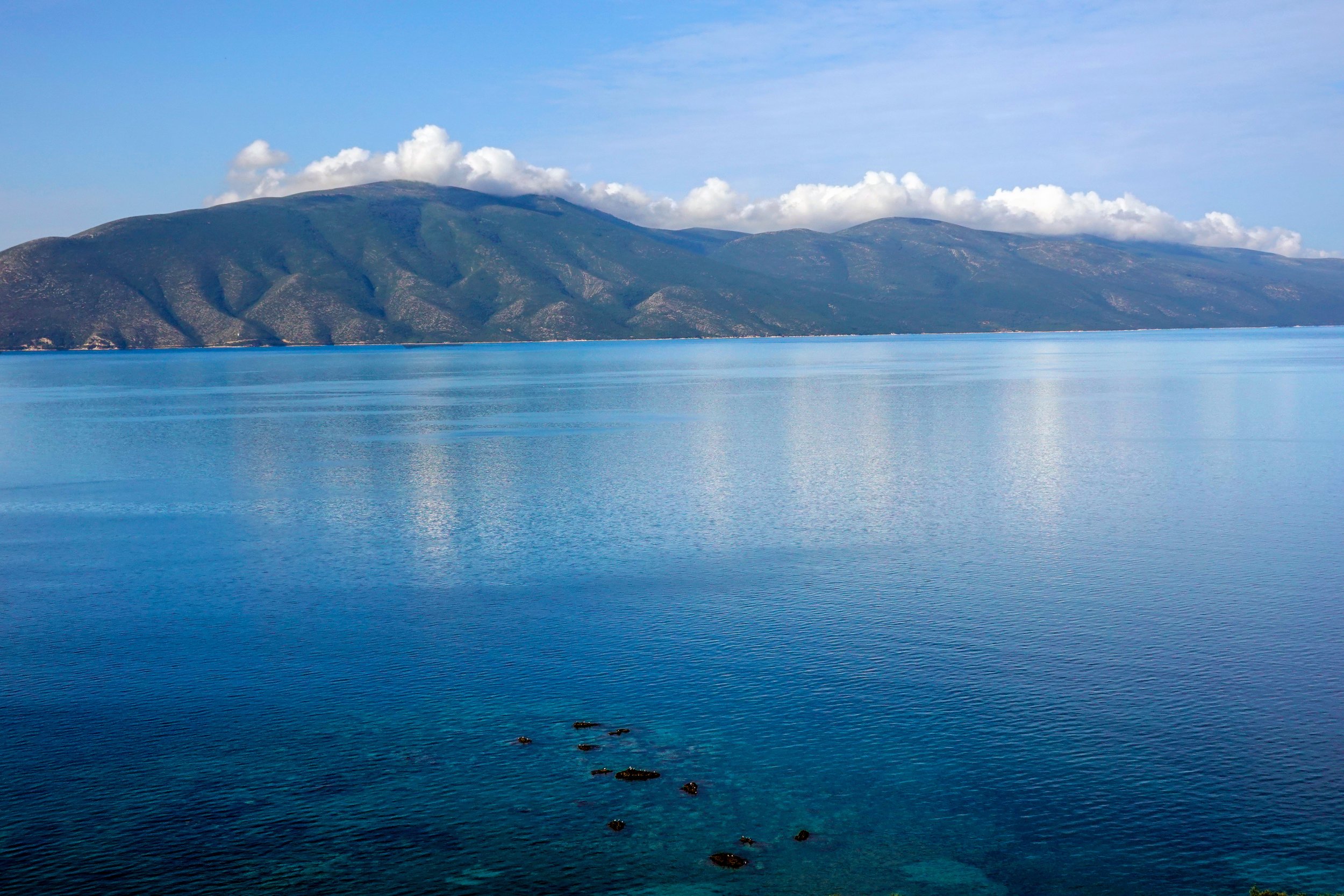

The hotel was a great place to stay - comfortable, out of the city, great food, clean, and pleasant with accommodating staff.
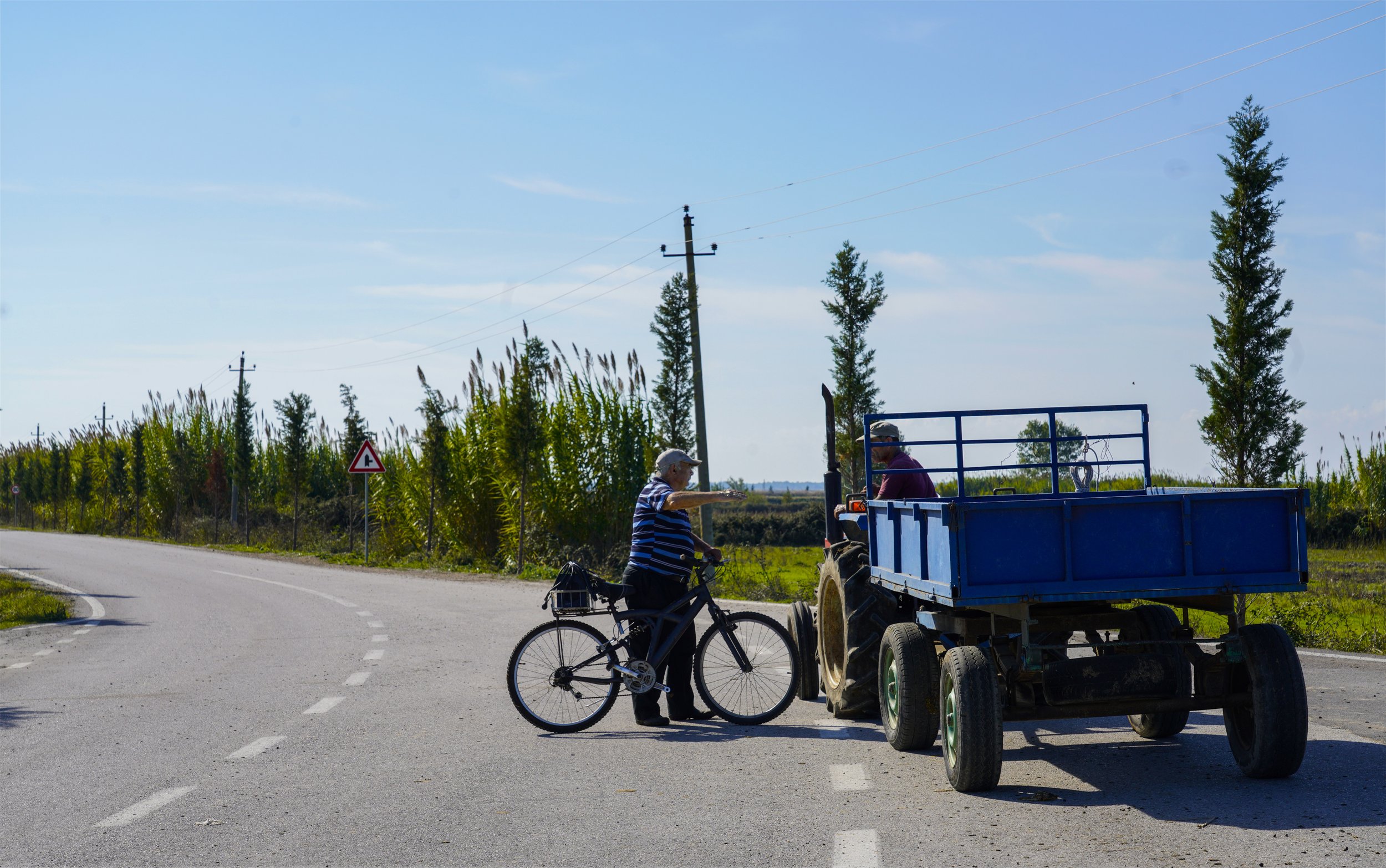
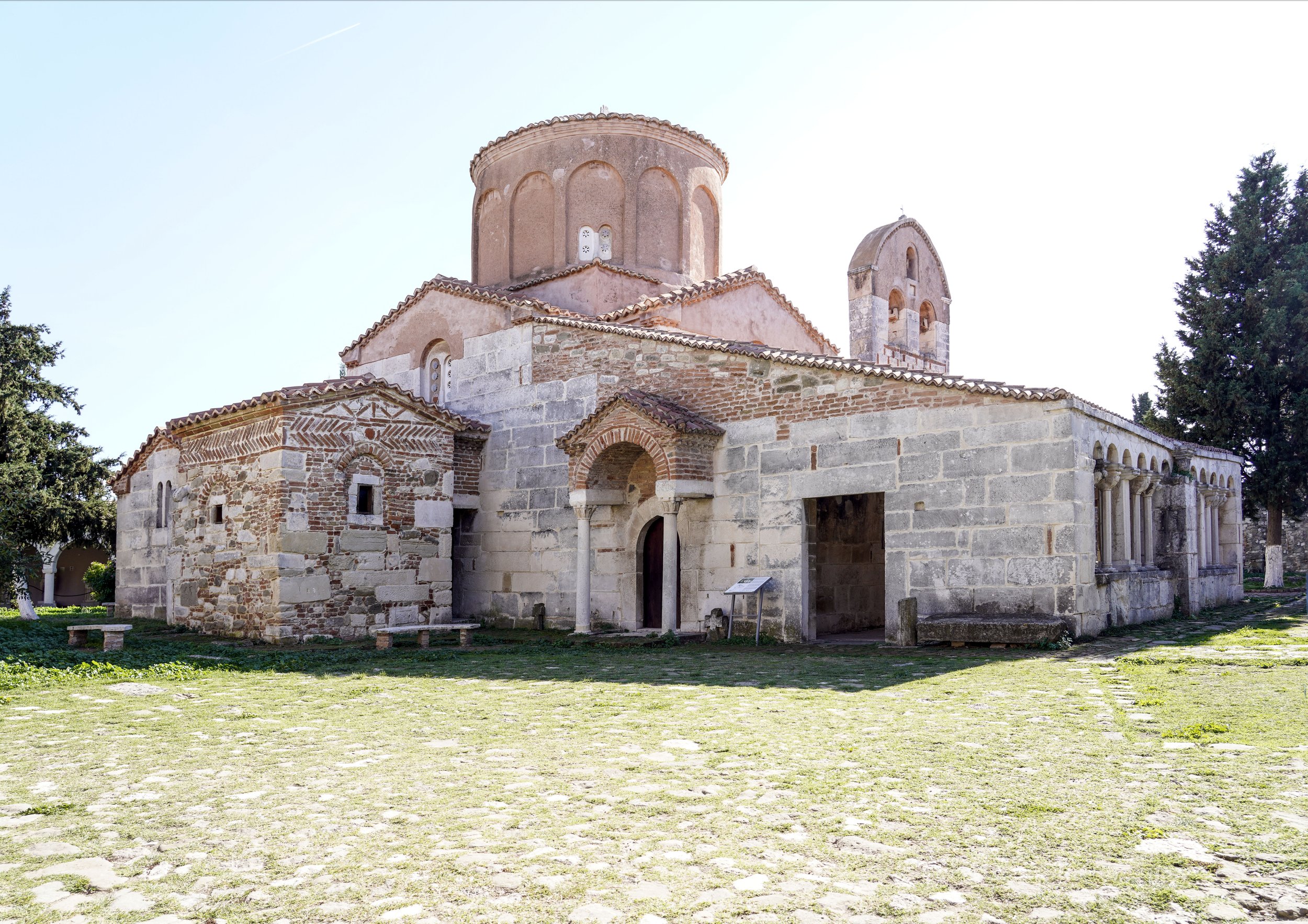
The monastery and the church of Saint Mary dates back to the 13 century. The monastic complex is Byzantine style and is built with recycled bricks and blocks from the ancient buildings of Apollonia. The church is one of the first of this type in Albania, i.e., in the shape of the cross with a central dome. The capitals of the porch are typical Romanesque style influenced from south Italy.
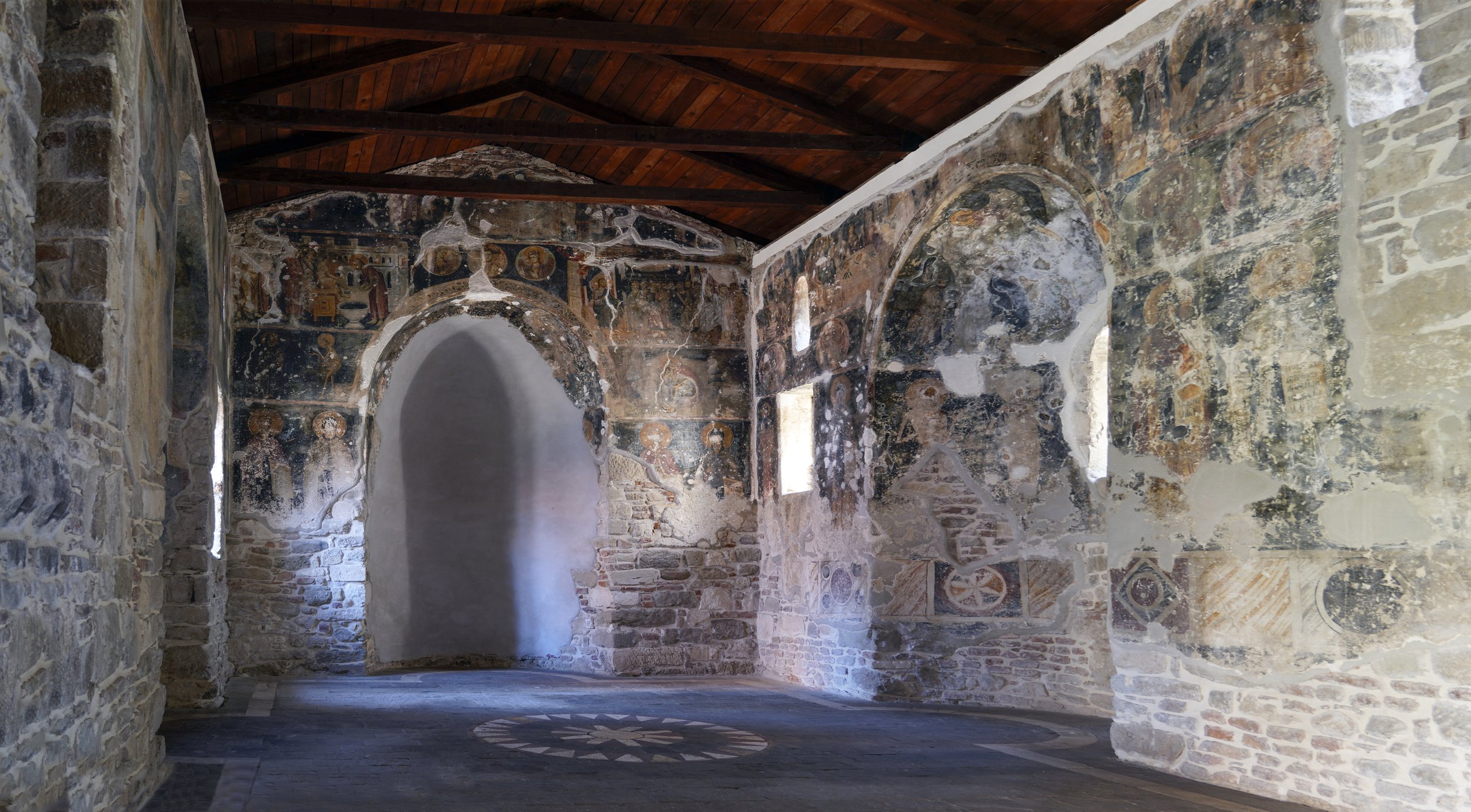
In the front of the Church of Saint Mary is the refectory (dining hall of the monastery), where some wall paintings of the 13th century are still preserved. Under the level of the floor excavations found earlier remains of a mosaic floor with zoomorphic motifs dating back to the 4th-5th century. In the back side of the church is the statuary porch and in the second floor of the monastery the archaeological museum of Apollonia.
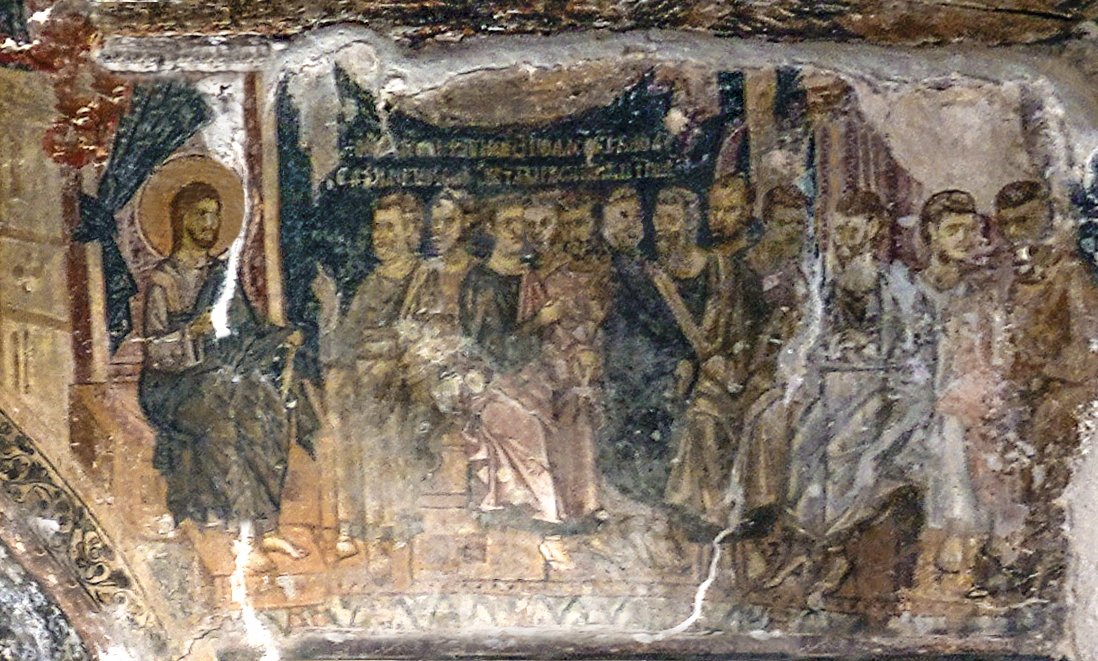
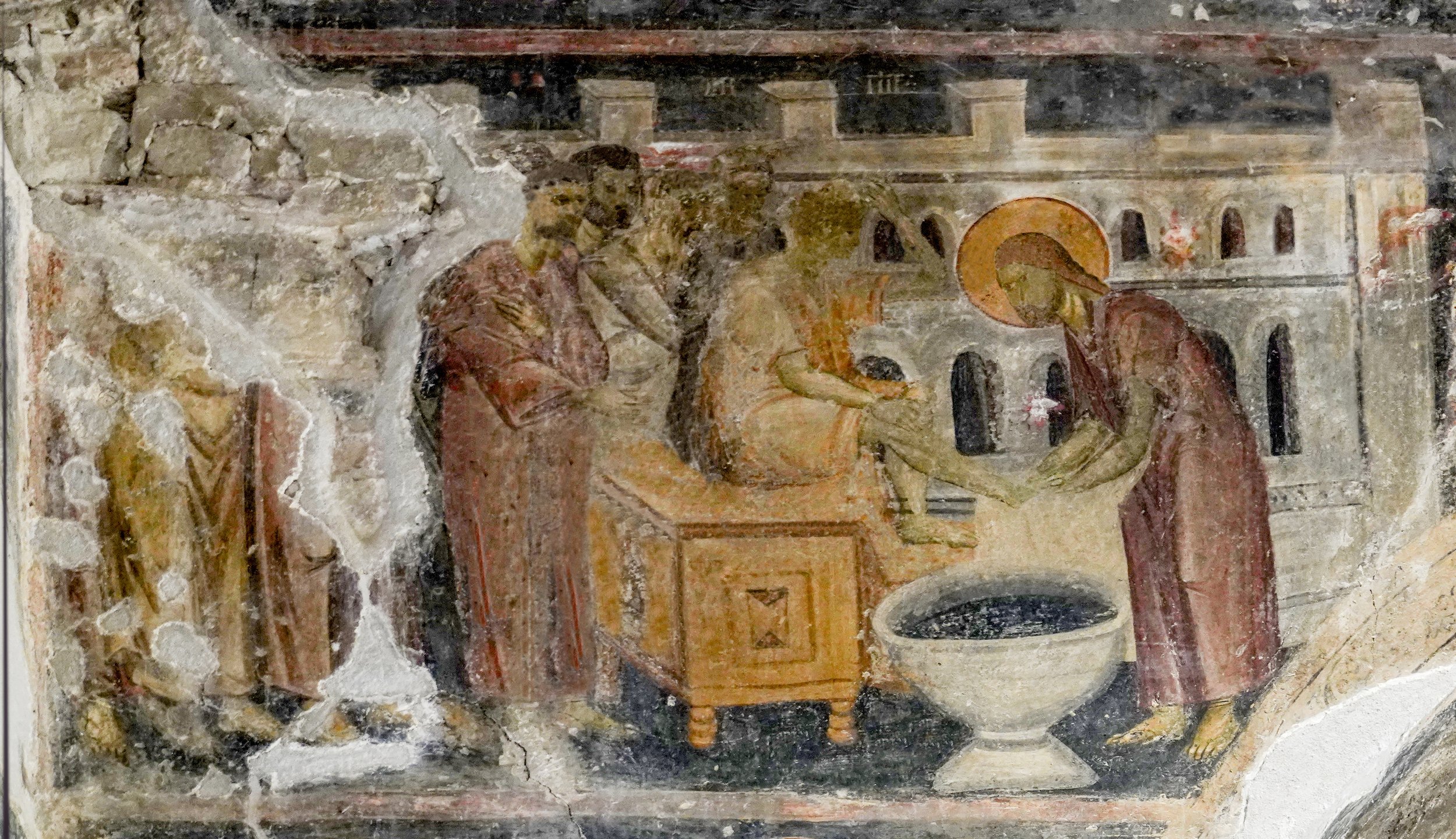
Walking in sandals on the roads of Palestine in the first century made it imperative that feet be washed before a communal meal. When Jesus rose from the Last Supper and began to wash the feet of the disciples (John 13:4), He was doing the work of the lowliest of servants, an act of humility, whereby Jesus, the Lord and Master, should wash the feet of His disciples. Washing feet was more properly their work, but no one had volunteered for the job. As revealed in Matthew 20:28, He came “not to be served but to serve, and to give his life as a ransom for many.” The humility expressed by Jesus’ act with towel and basin foreshadowed His ultimate act of humility and love on the cross. (https://www.gotquestions.org/Jesus-washing-feet.html)
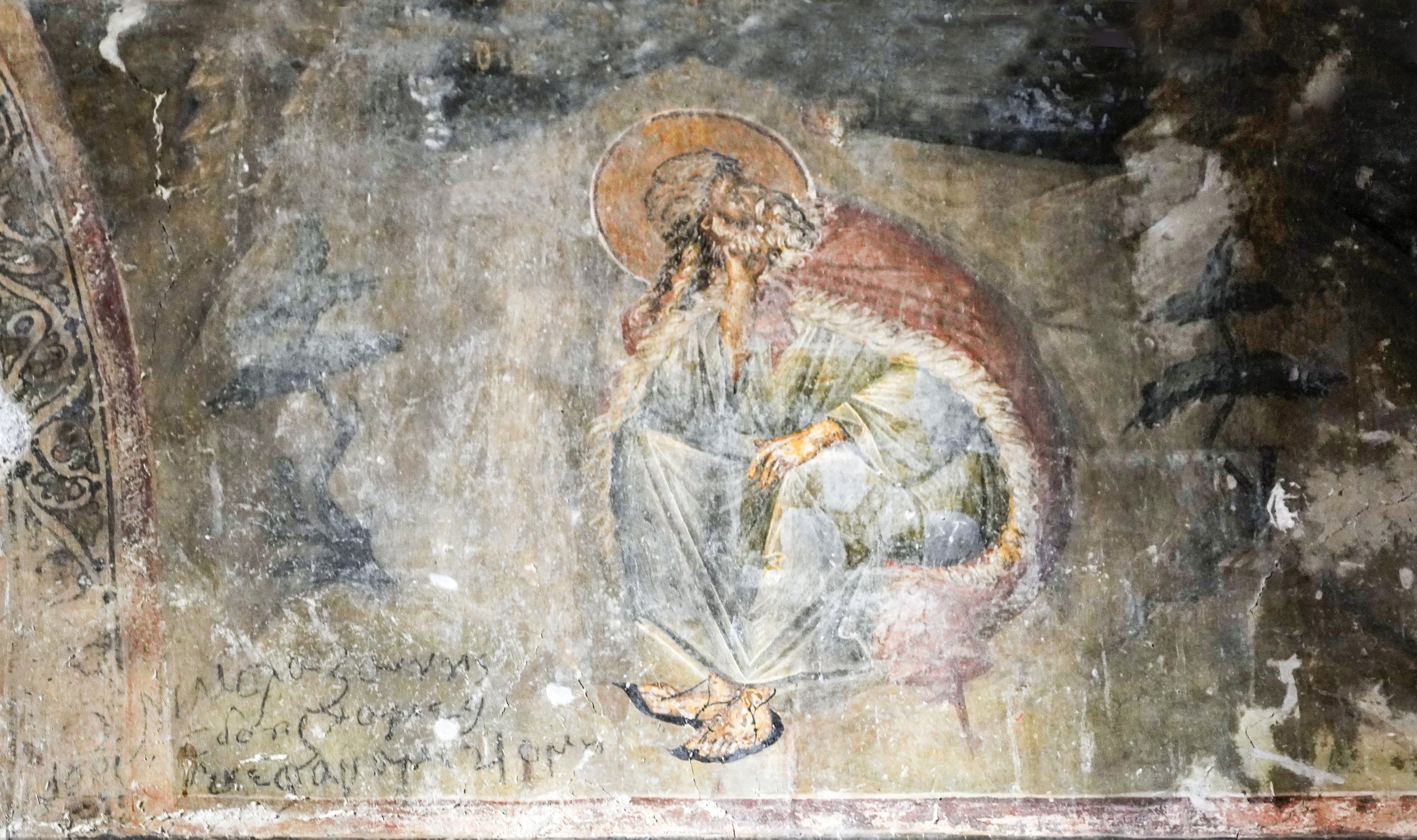
Saint Paul the Hermit (not to be confused with the Apostle Paul) was the first hermit saint of the Christian church. Born in Thebes (now Luxor), Egypt, Saint Paul fled into the desert to avoid the persecution of Christians, and to dedicate his life to the solitary worship of God. Saint Paul became a model for successive hermit saints, as well as for the institution of Christian monasticism. According to legend, the saint was born in the year 228 and lived for 113 years until his death in 341. He resided in a desert cave, where he followed a rigorous routine of constant prayer and meditation.
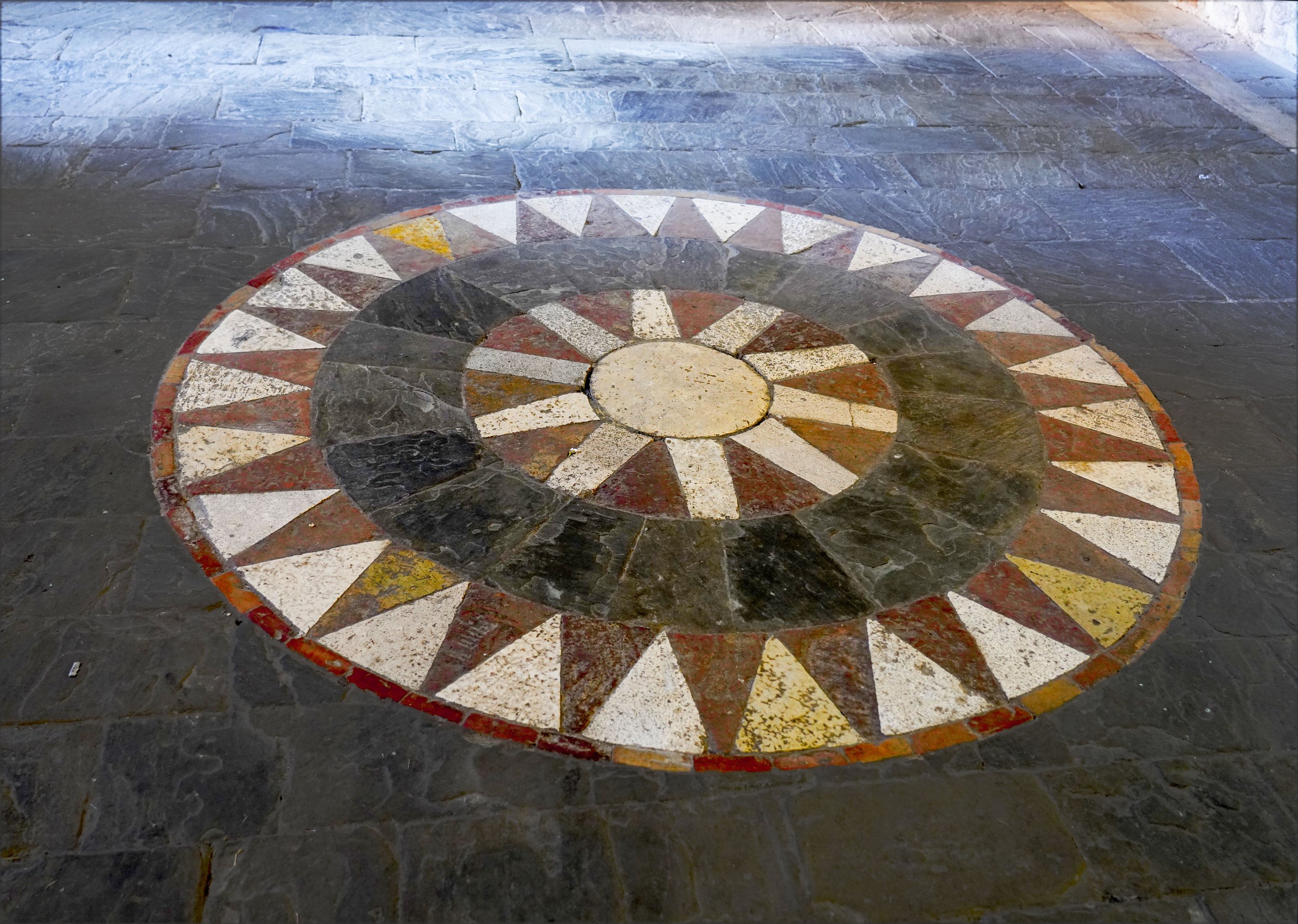
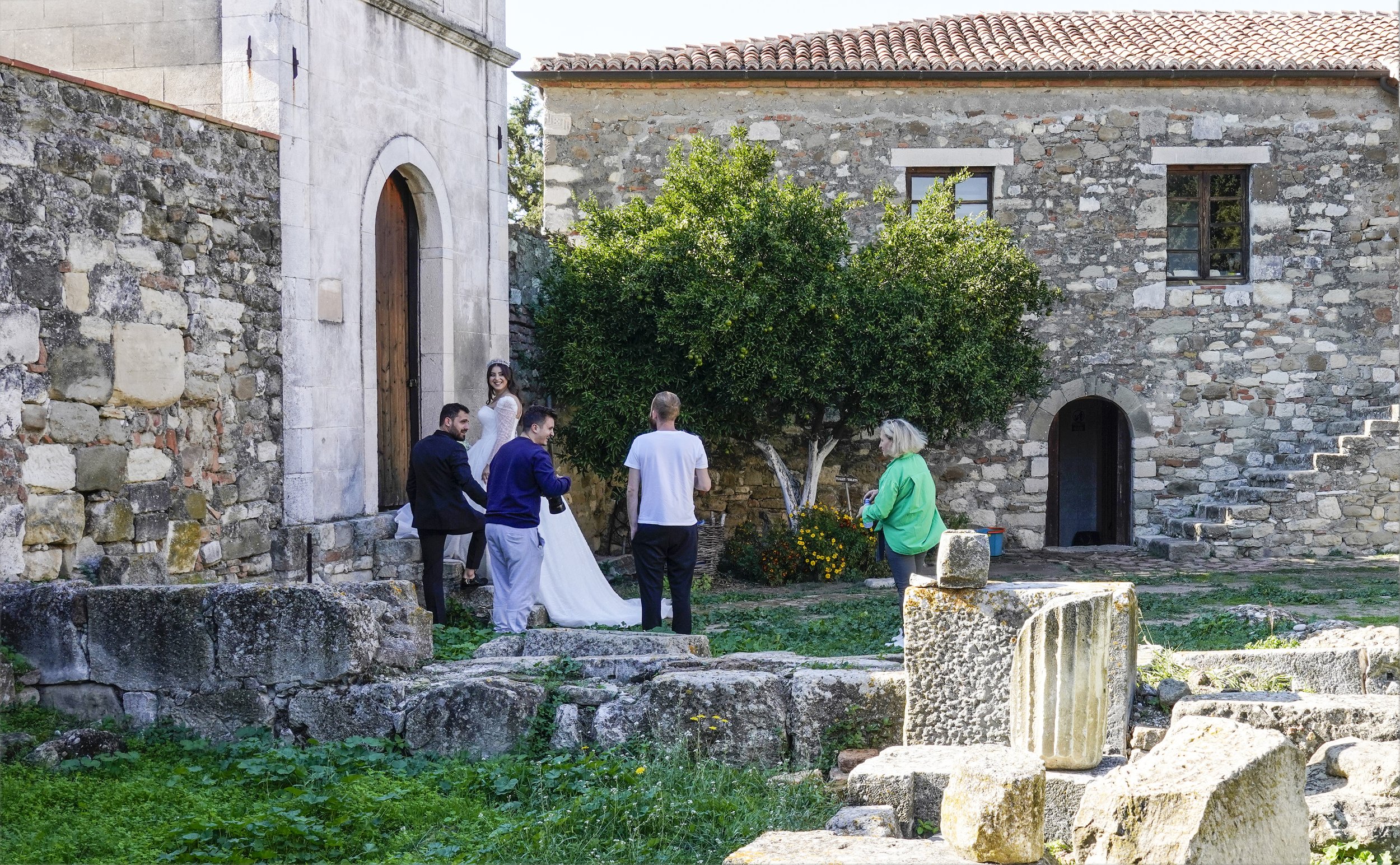
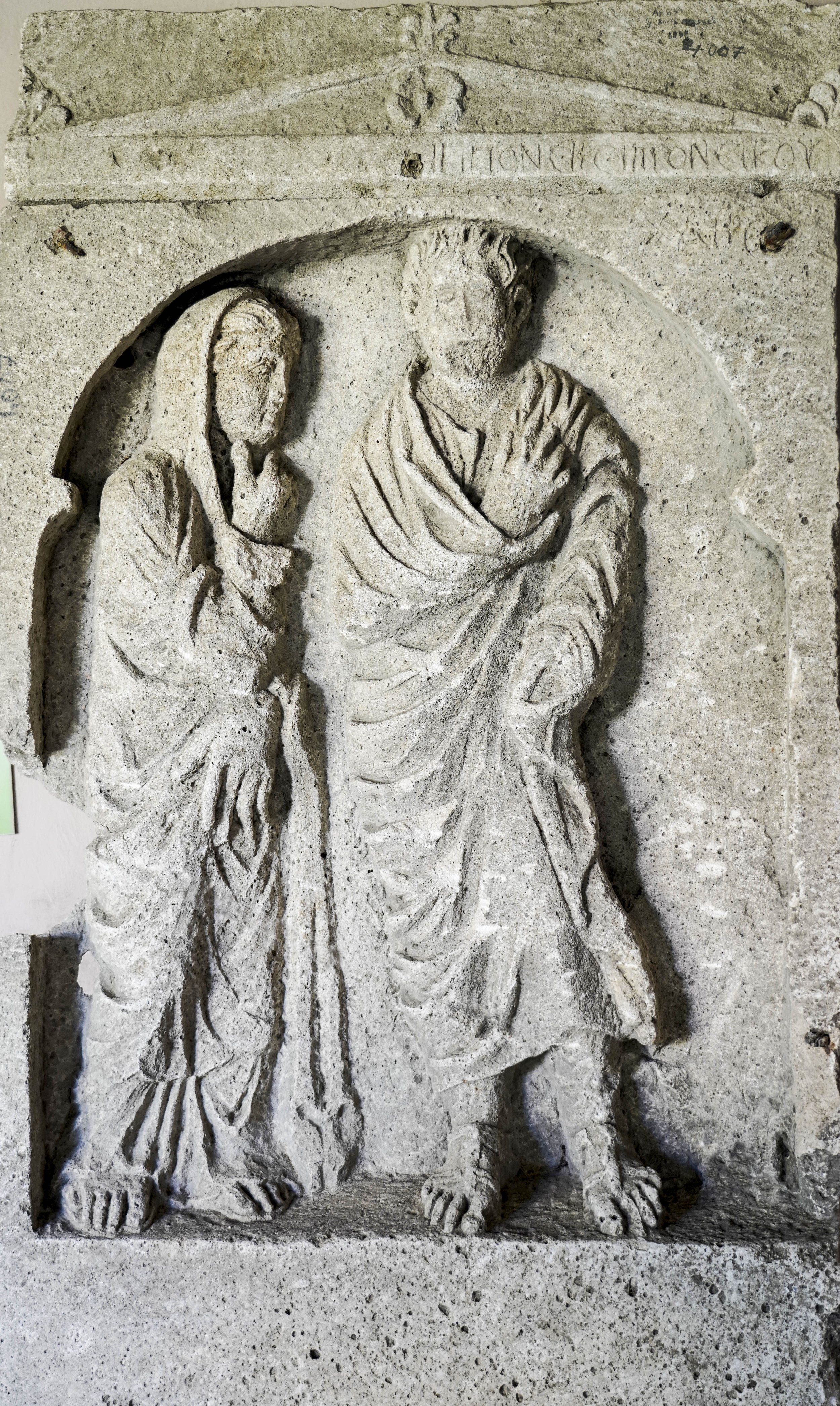
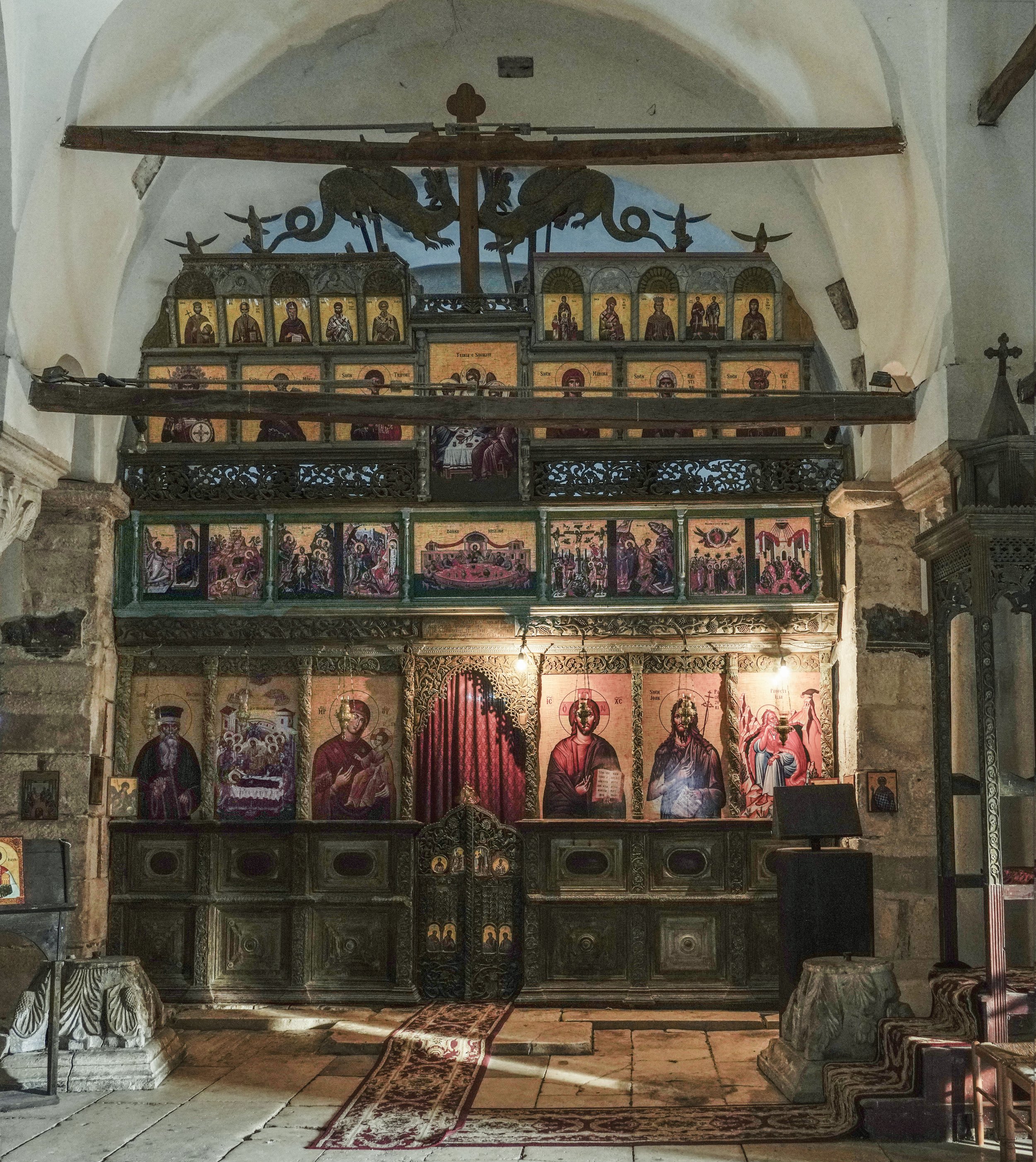
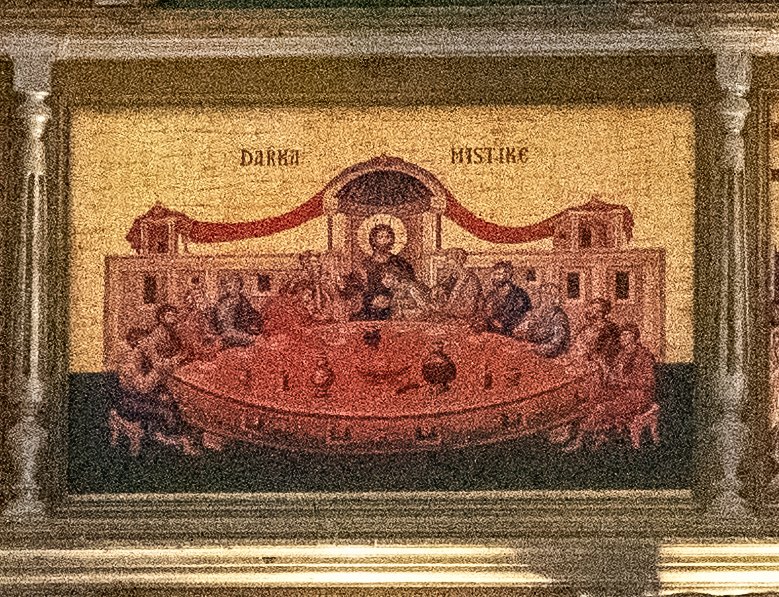
The words DARKA MISTIKE (Dark Mystic) are inscribed on the top of this painting. The Mystical or Last Supper is a special event in the Gospels, i.e., it foreshadows Jesus' sacrifice on the cross and it is a mystical event initiated by Christ so that Christians would always be able to receive Him in their bodies and souls. Christ is the only one shown with a halo, as the Holy Spirit hadn’t descended on the disciples yet. Judas Iscariot is placed on the left side of the table (in red), leaning forward to dip his piece of bread in the common dipping bowl at the center of the table.
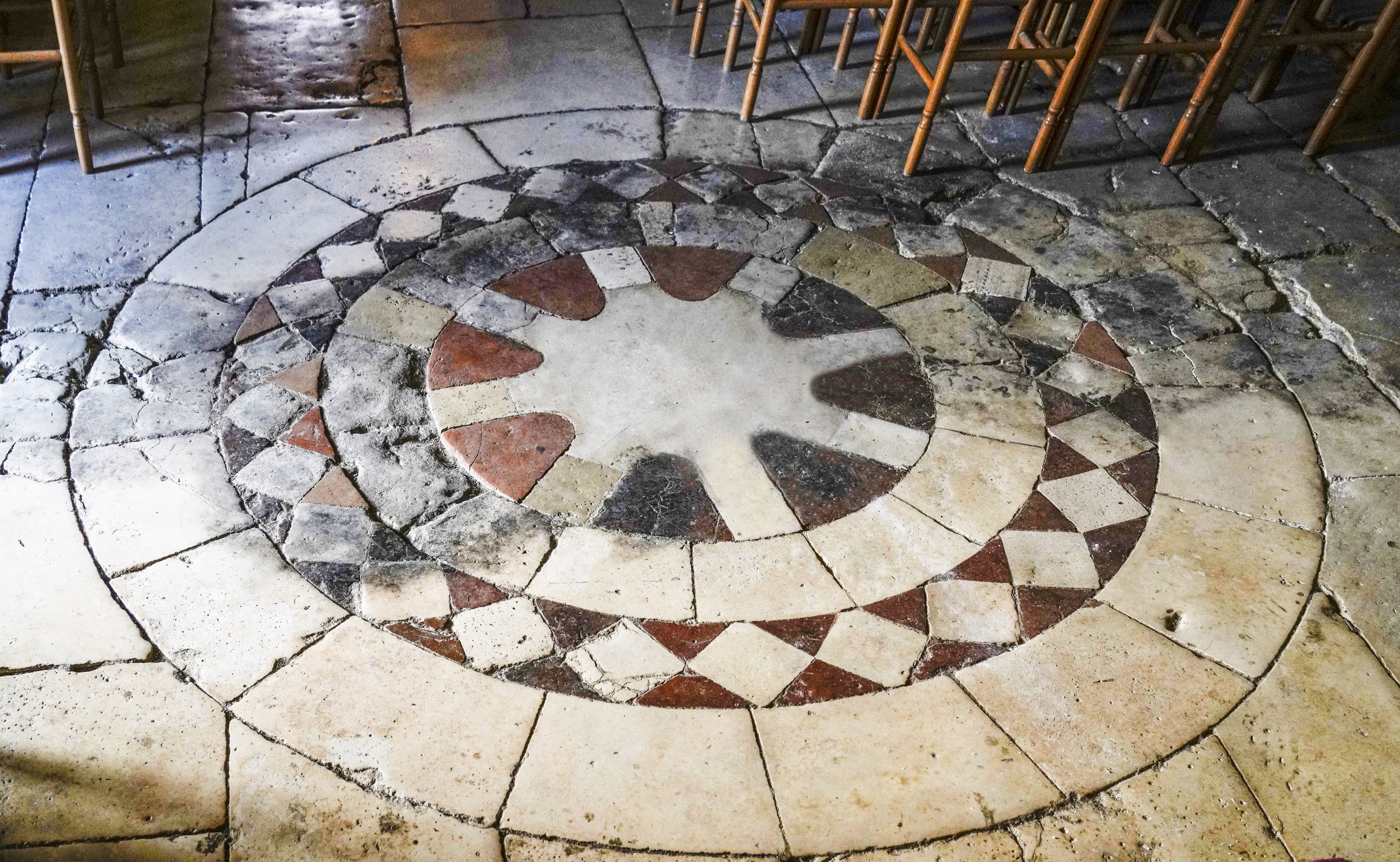

Urns were used by the ancient Romans, 3rd to 2nd century BC, to hold bones and ashes of a deceased person.
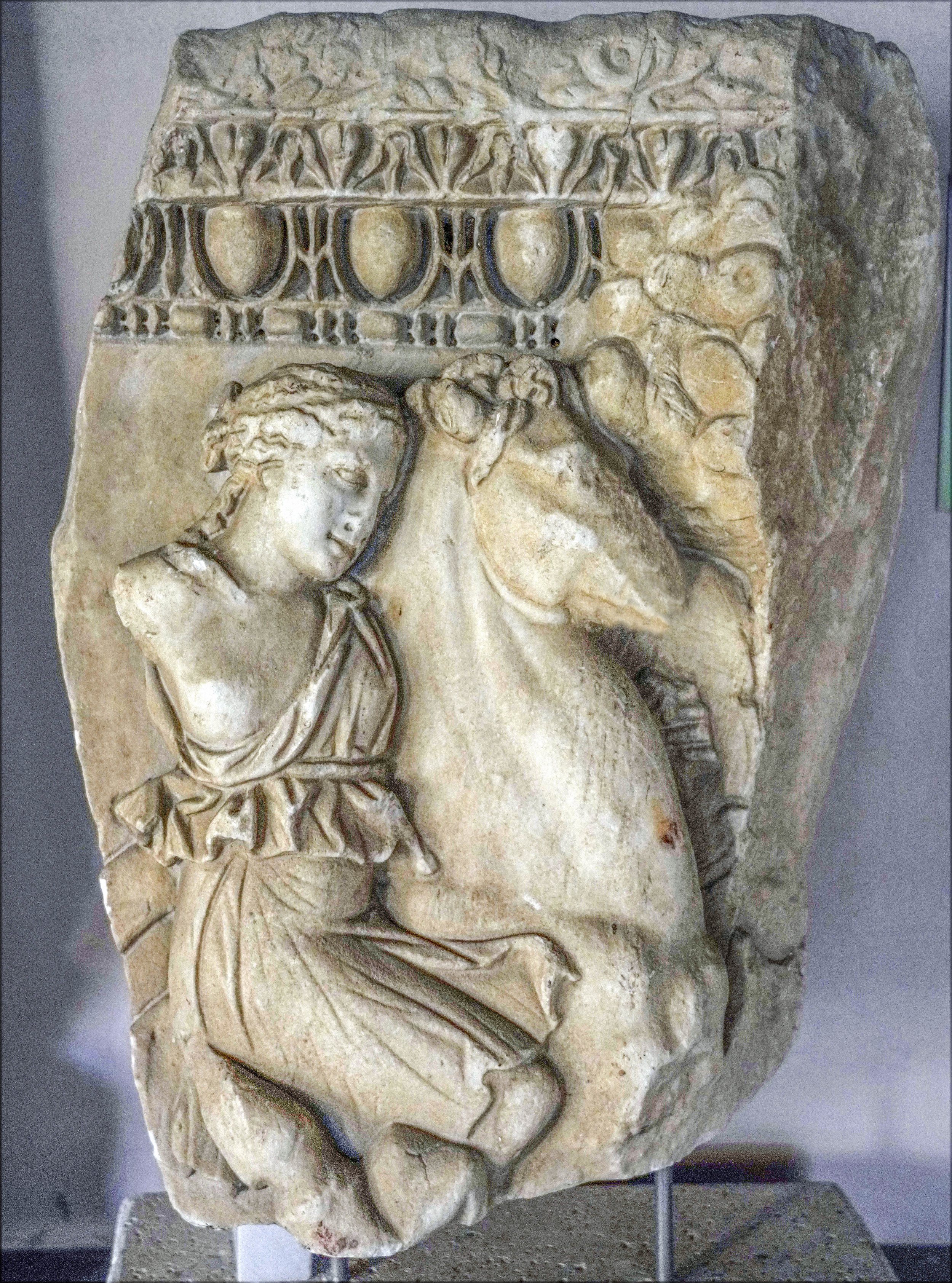
The marble sarcophagus (2nd century AD) in bas relief depicts a mythological battle between ancient Greeks and the Amazons, a nation of all-female warriors.
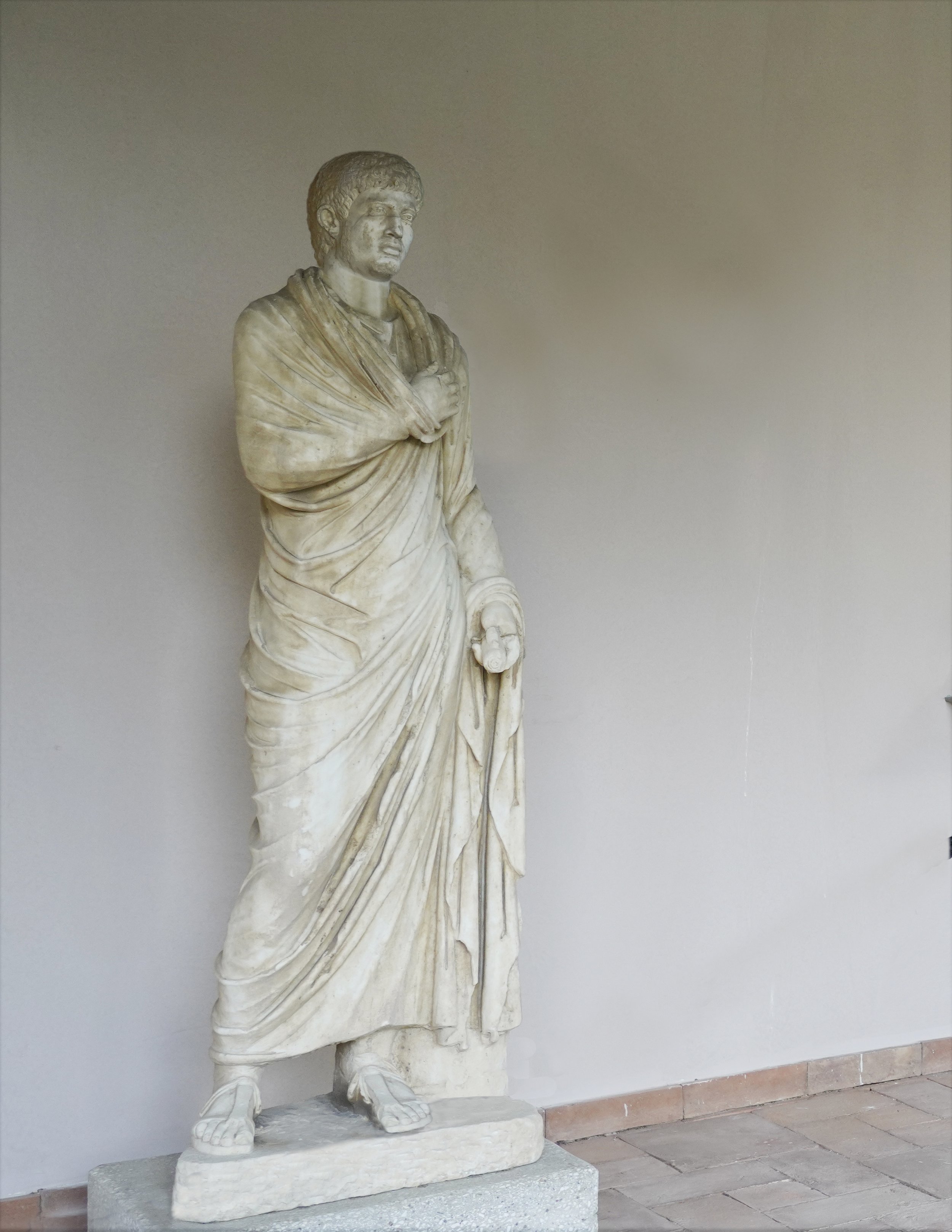
The toga was very much the defining Roman garment – in fact, non-citizens and many exiles were not allowed to wear it. The poet Virgil called the Romans ‘the togaed race/gens togata’ (Aeneid 1.282), but despite that it was originally worn by both the Romans and the Etruscans. In the early days of Rome, both men and women wore the toga, men wearing it without anything underneath except a loincloth; even later when it was worn nearly exclusively by men it continued to be worn by girls until they were 12.

As protector of all seeds and the god of wine, male fertility, and freedom, Liber was an ancient Roman deity. Considered patron of the Roman plebe, he was a phallic deity and companion to two Roman goddesses also linked to fertility—Ceres, the goddess of agriculture, and Libera, his female equivalent.
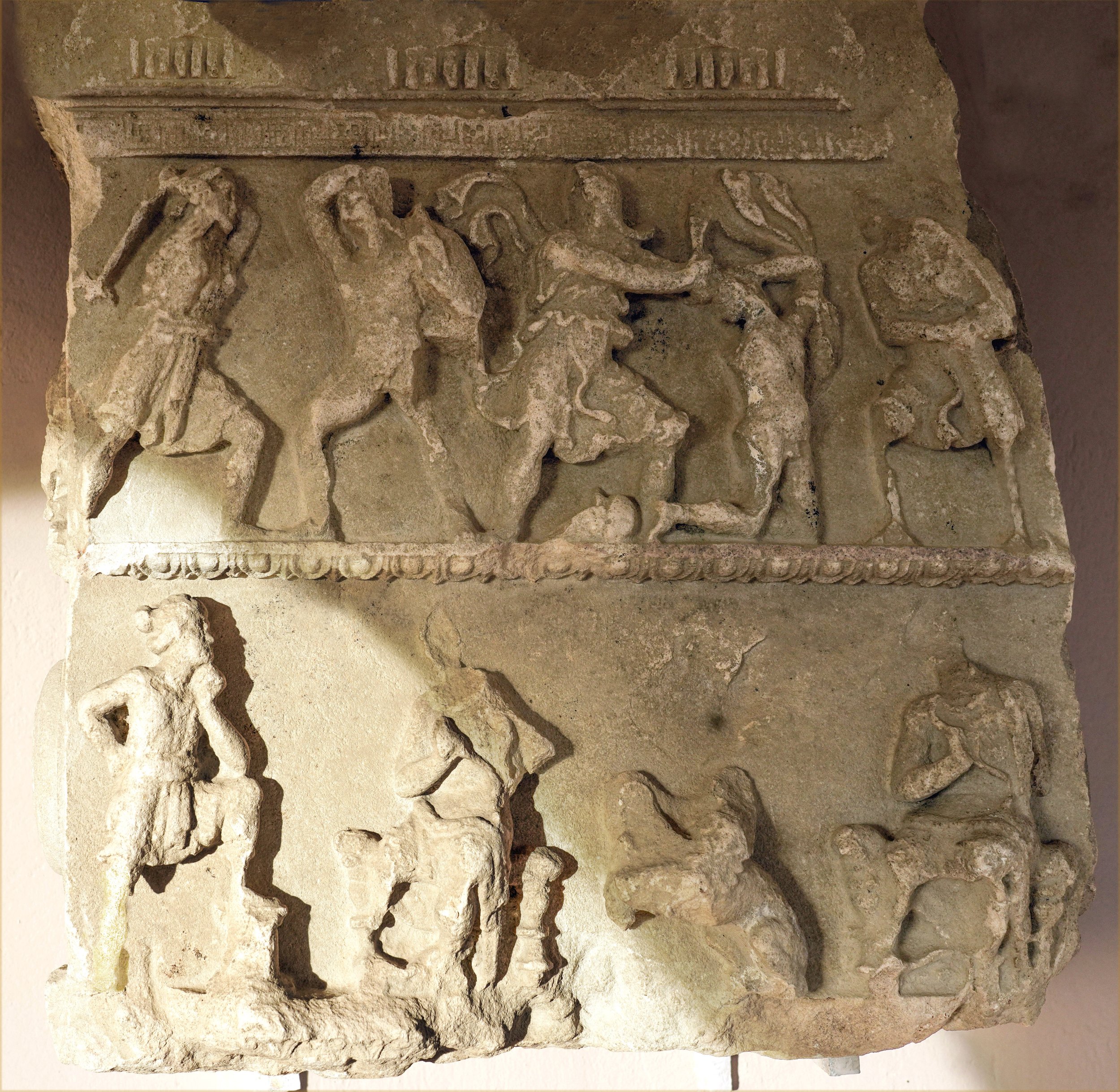
In Greek mythology, he Amazonmachy was the battle between Theseus and the Athenians and Penthesilea and the Amazons. The war occurred due to the abduction of co-queen Hippolyta by Theseus. The war was indecisive, with Hippolyta remaining in Athens and the restoration of the the state of affairs from before the war began.

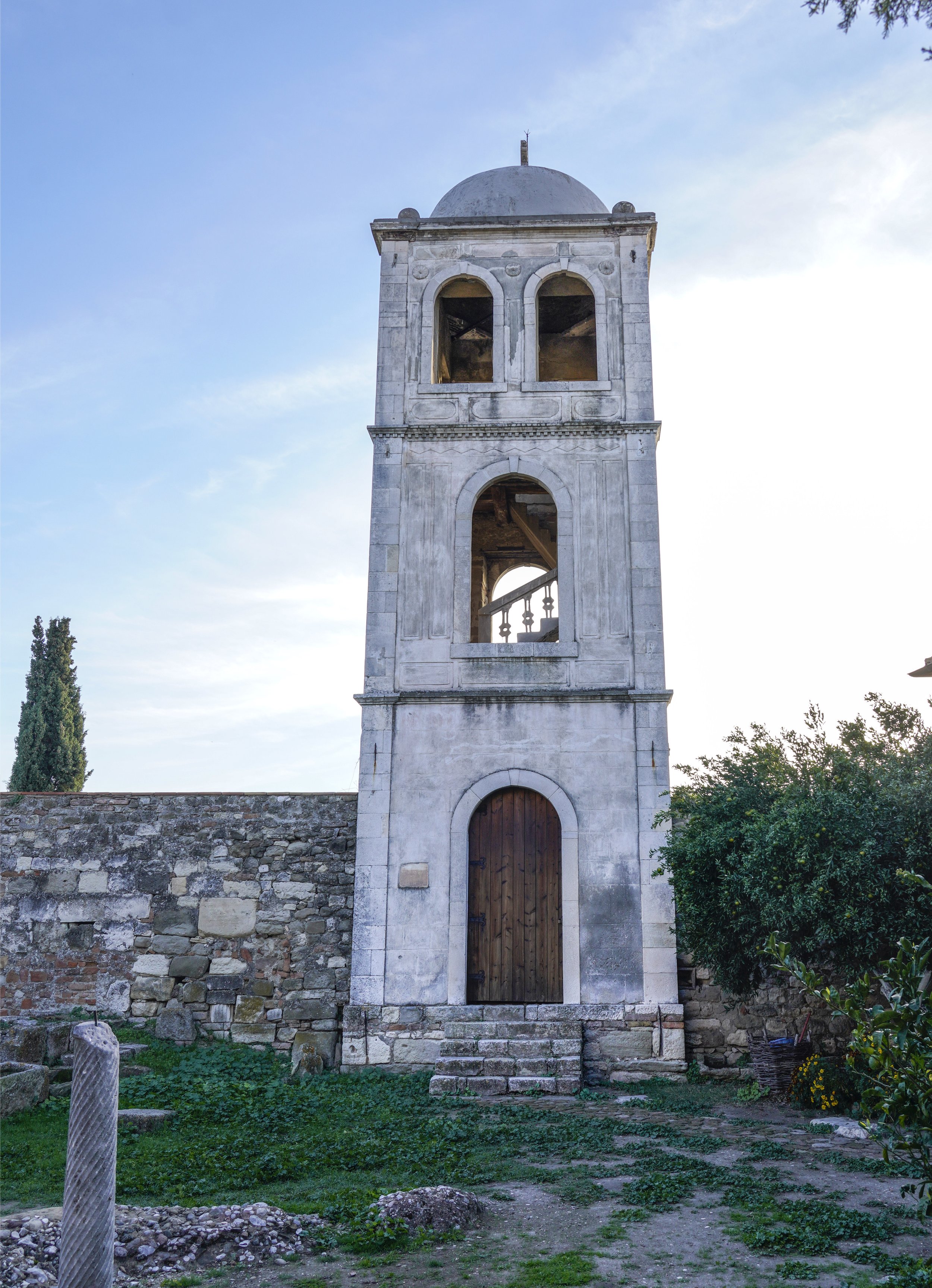
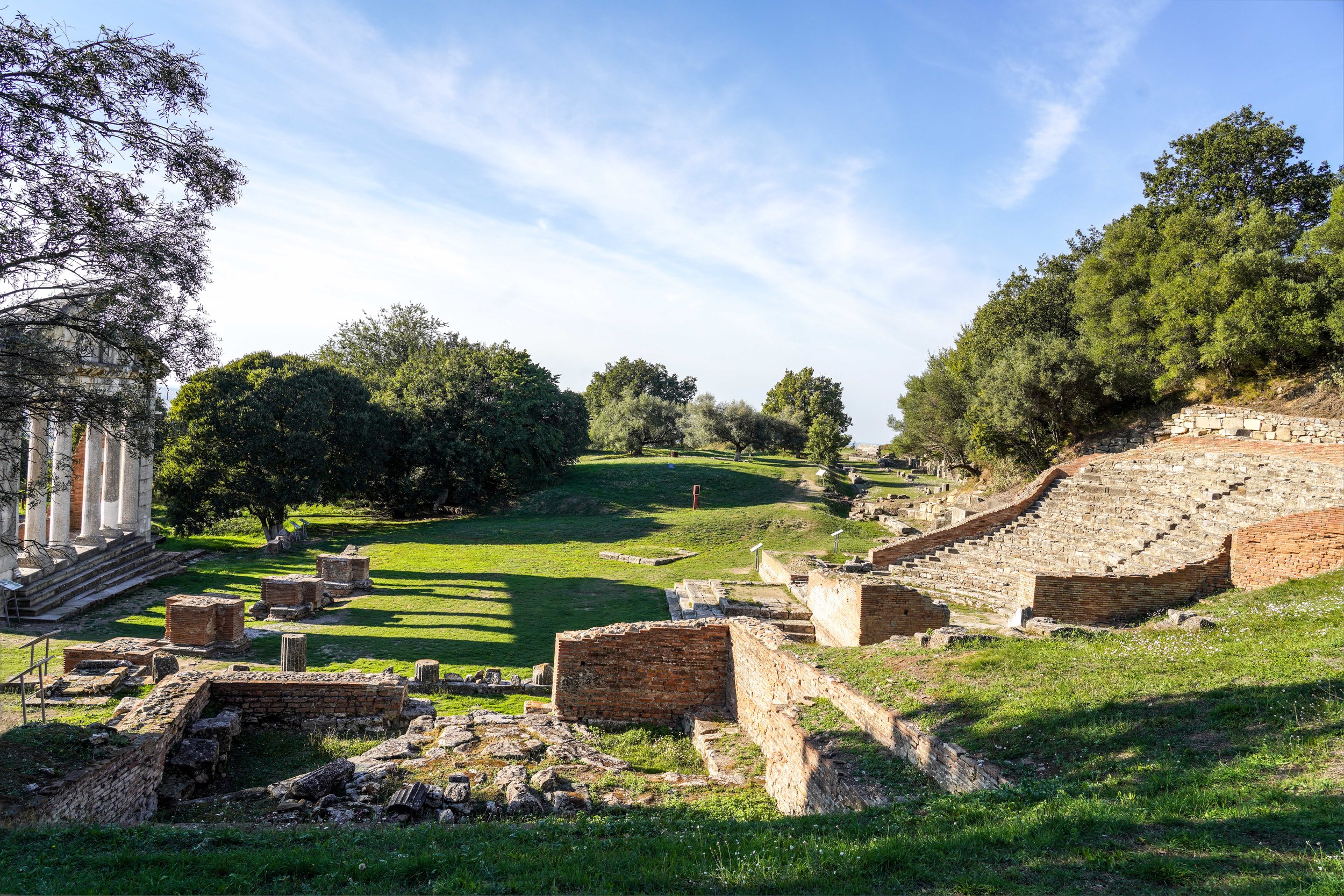
Situated in southwestern Albania, about 13 miles from the city of Fier, Apollonia was built by Greek colonizers on the lands of the Taulantii Illyrian tribe. It was considered to be one of the most prominent cities at the time, selected from over twenty other cities throughout the Mediterranean, to receive the glorious name of Apollo, the god of music and poetry.
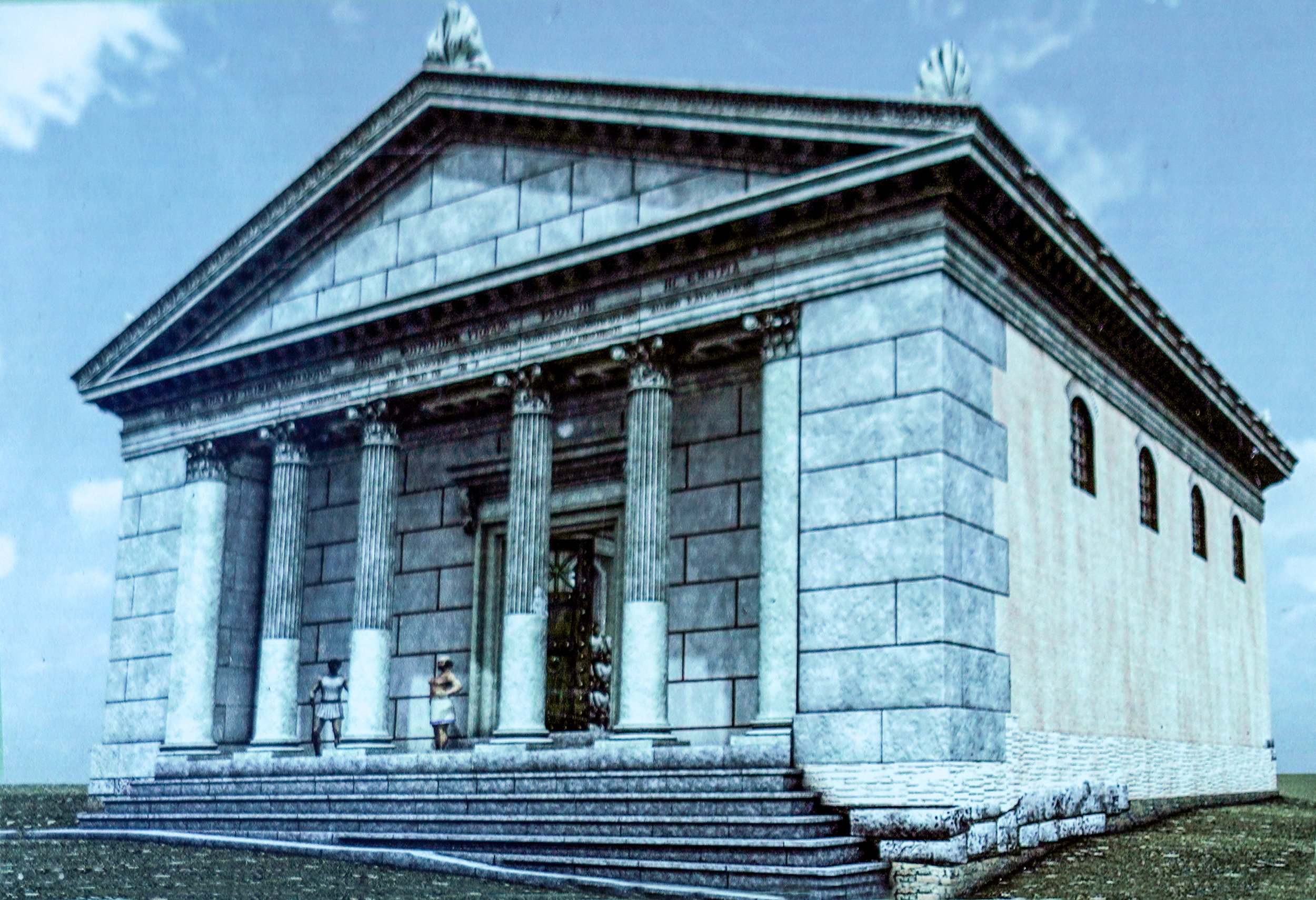
The monumental center of the Apollonia Archaeologic Park was excavated in the 1930s. It is located a short walk from St Mary Monastery and Church. The structure (left) known as the Agonothetes monument and was built in the last quarter of the 2nd century BC, during the Roman period. It had a ten-tier cavea (right) and functioned as Apollonia's municipal building for council meetings. Its small capacity highlights that the oligarchic political organization of Apollonia was preserved in its early Roman era.
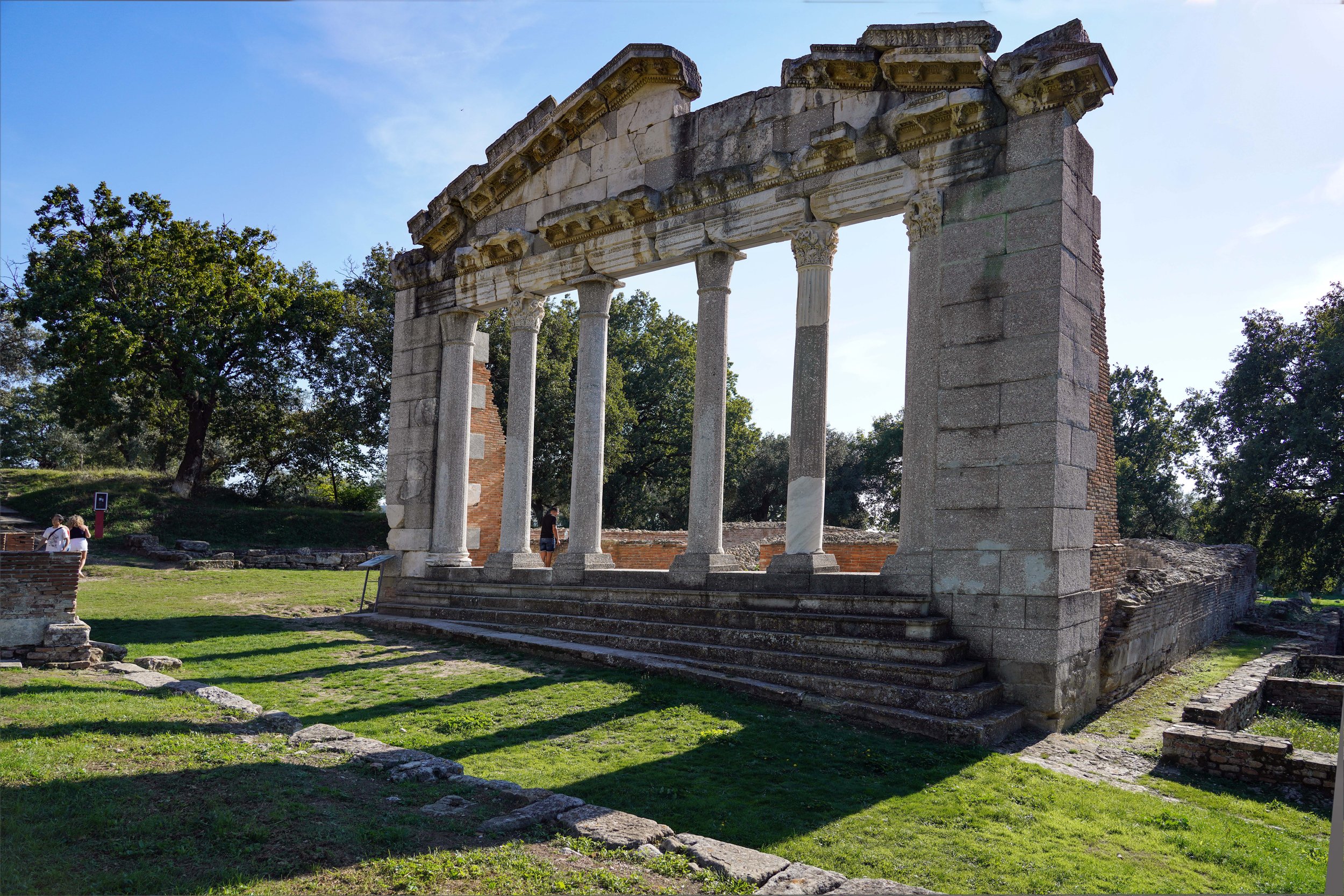
In ancient Greece, an agonothetes was the president or superintendent of the sacred games. At first the person who instituted the games and defrayed the expenses was the Agonothetes; but in the great public games, such as the Olympic Games and Pythian Games, these presidents were the representatives of different states. The structure had the form of a semicircle and served as an assembly place of the council of the city - the Bule. The front part of the structure was decorated in a special manner: there are 6 pillars crowned with capitals of the Corinthian style.
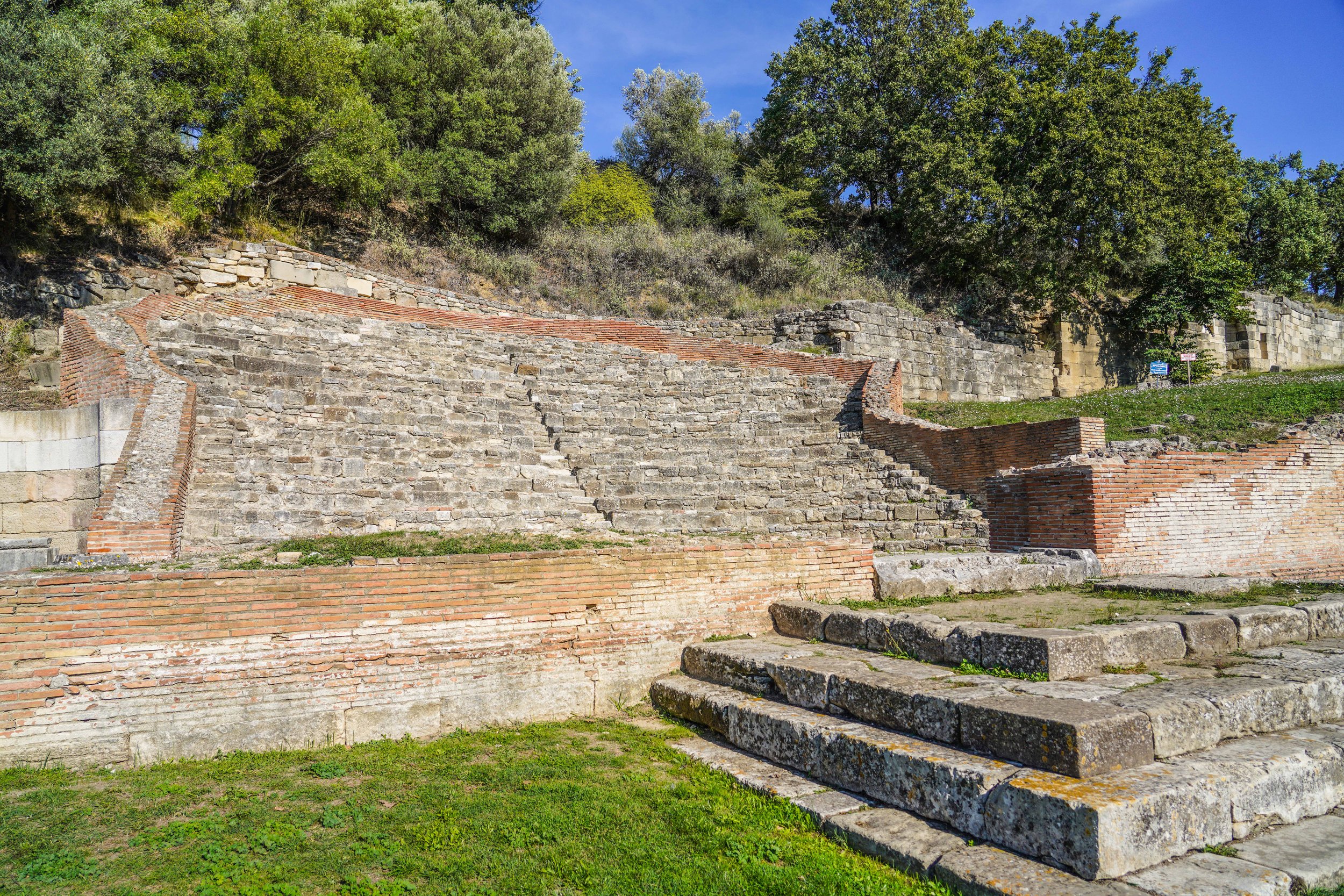
Across from the Monument of Agonothetes, the Bouleuterian the Odeon was used for both musical and cultural events as well as for political meetings. The Odeon was built in the middle of the 2nd Century BC and the combination between Greek art style and Roman technology make it architecturally one of the most interesting buildings of Apollonia. It is cut out in the rocks. The diameter of the cavea (seating section) is 49 feet. The capacity of places was 150.
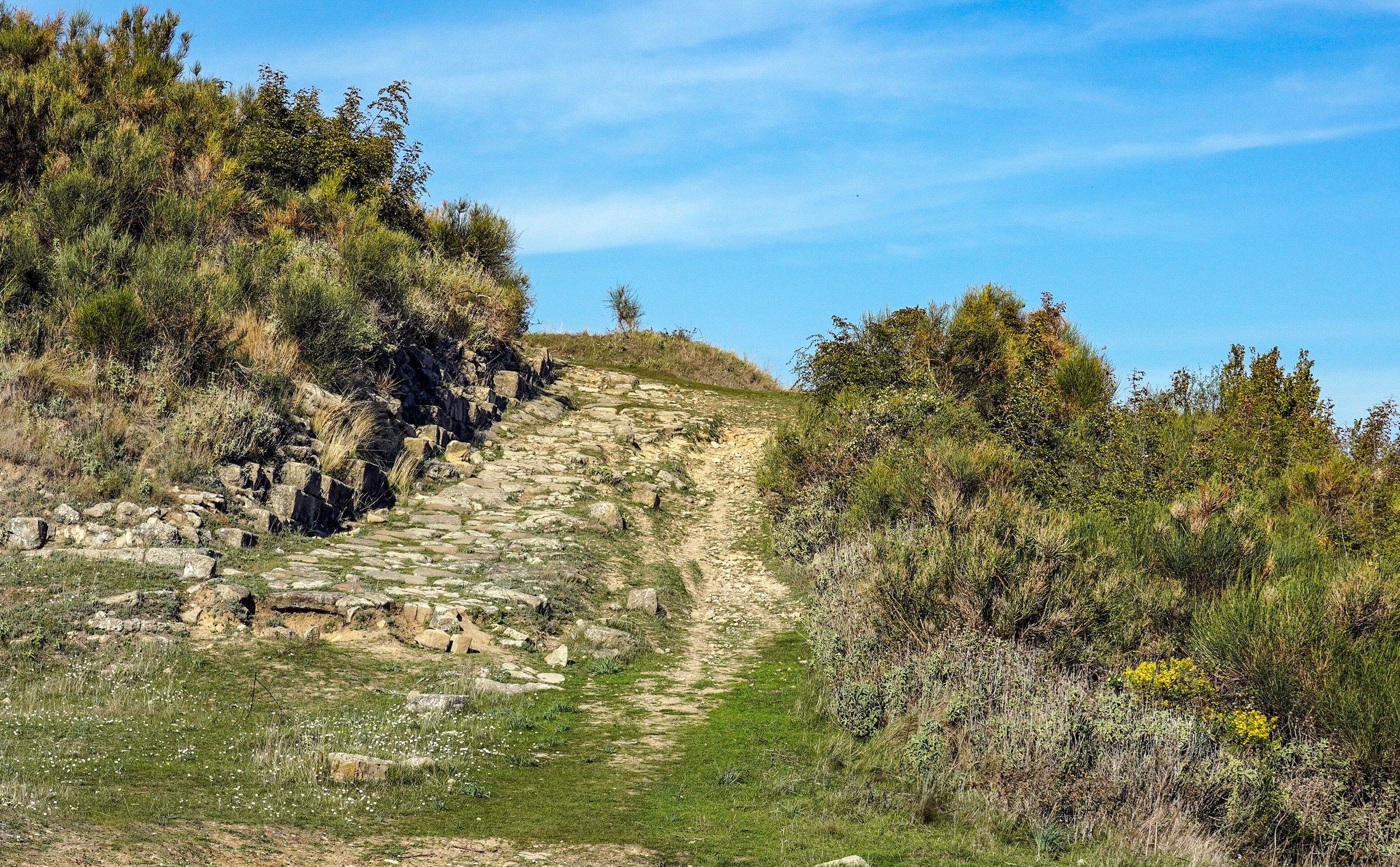

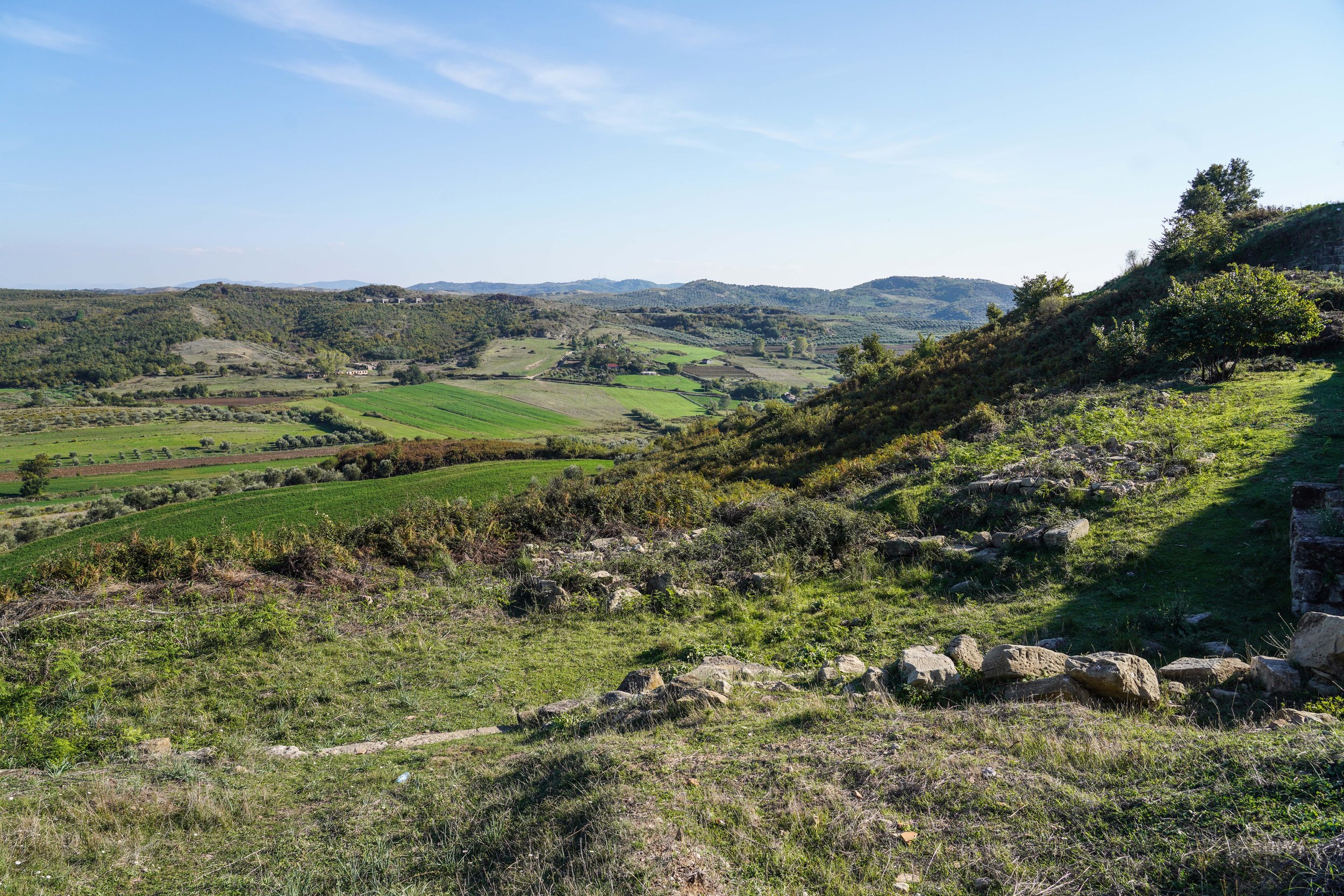
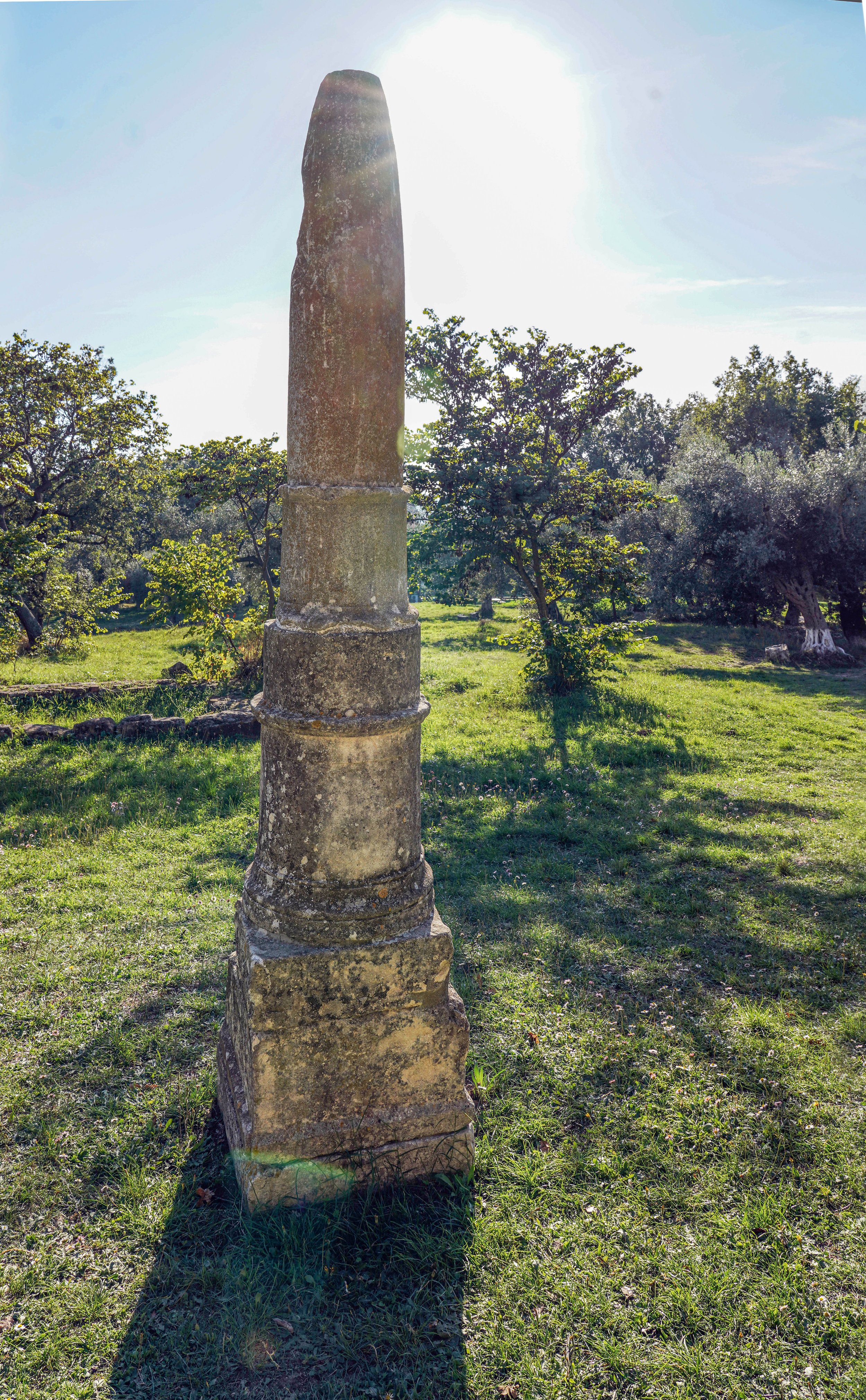
This limestone monolith relates to the worshiped Apollo Agyieus (i.e., he of the street) as the protector of streets, roads, public places and entrances to homes. The Greeks named him Agyieus, as the protector God who draws off evil.
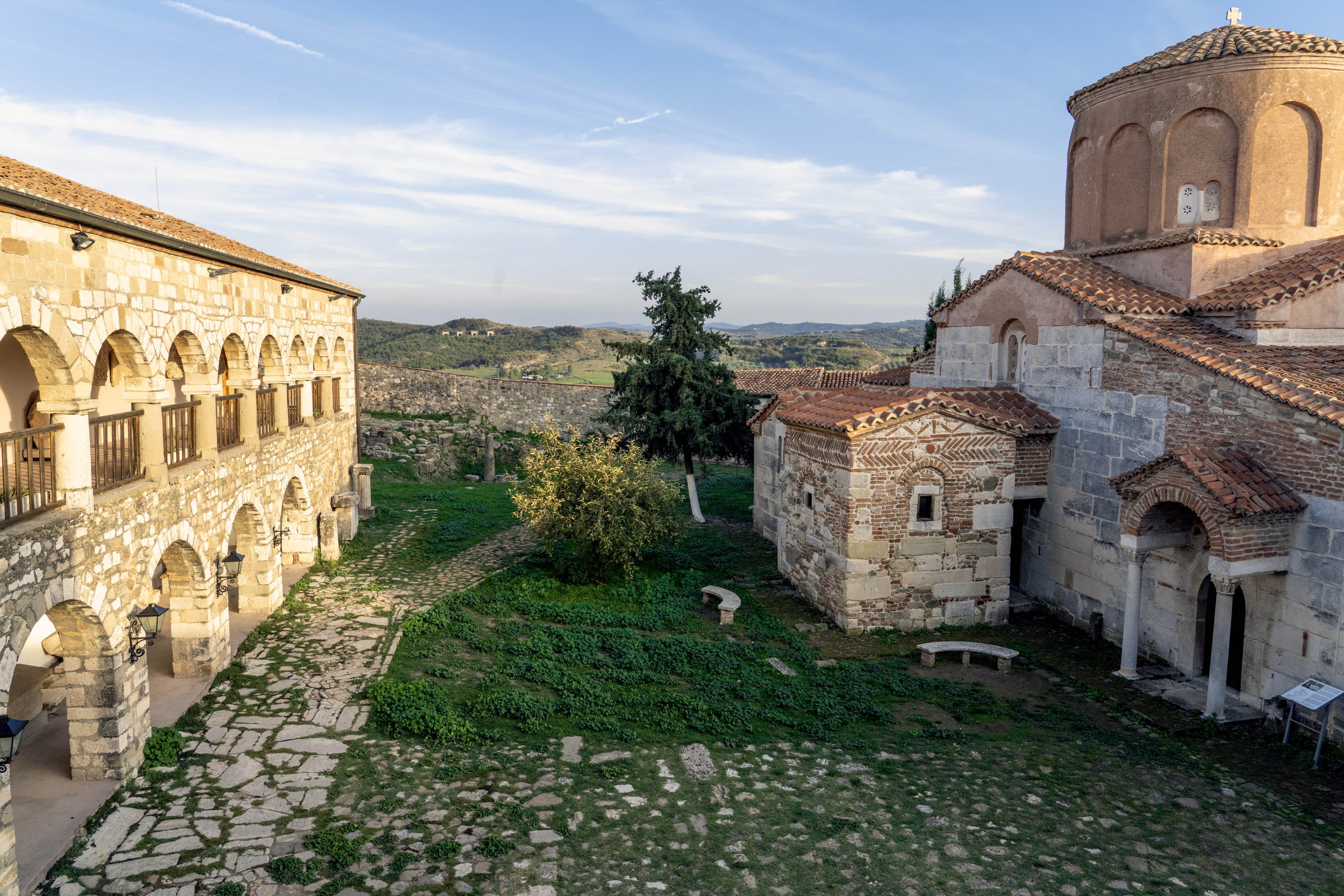
The strategic position of the Monastery, overlooking the Myzeqe plains, affords a view where the horizon meets the Adriatic Sea
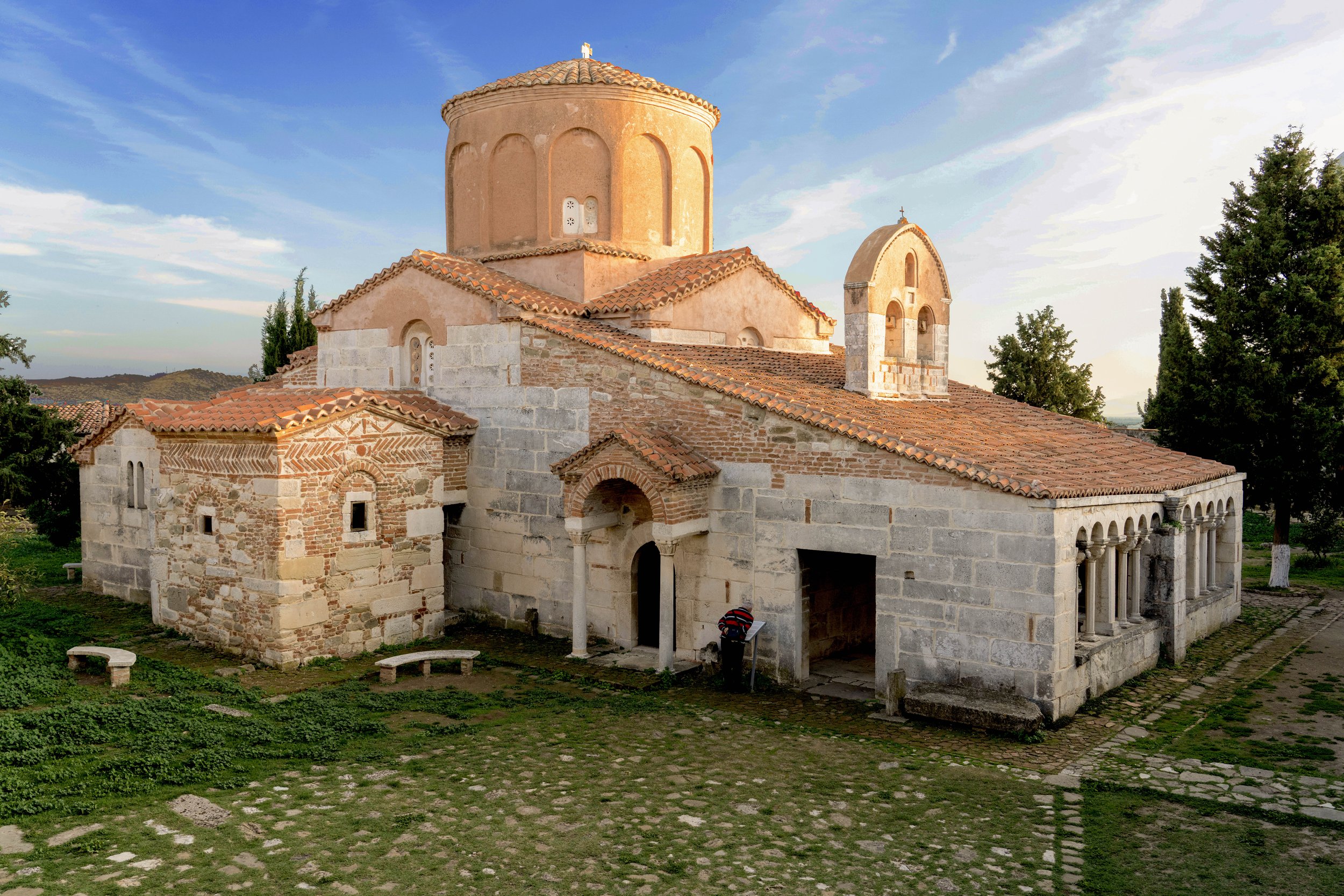
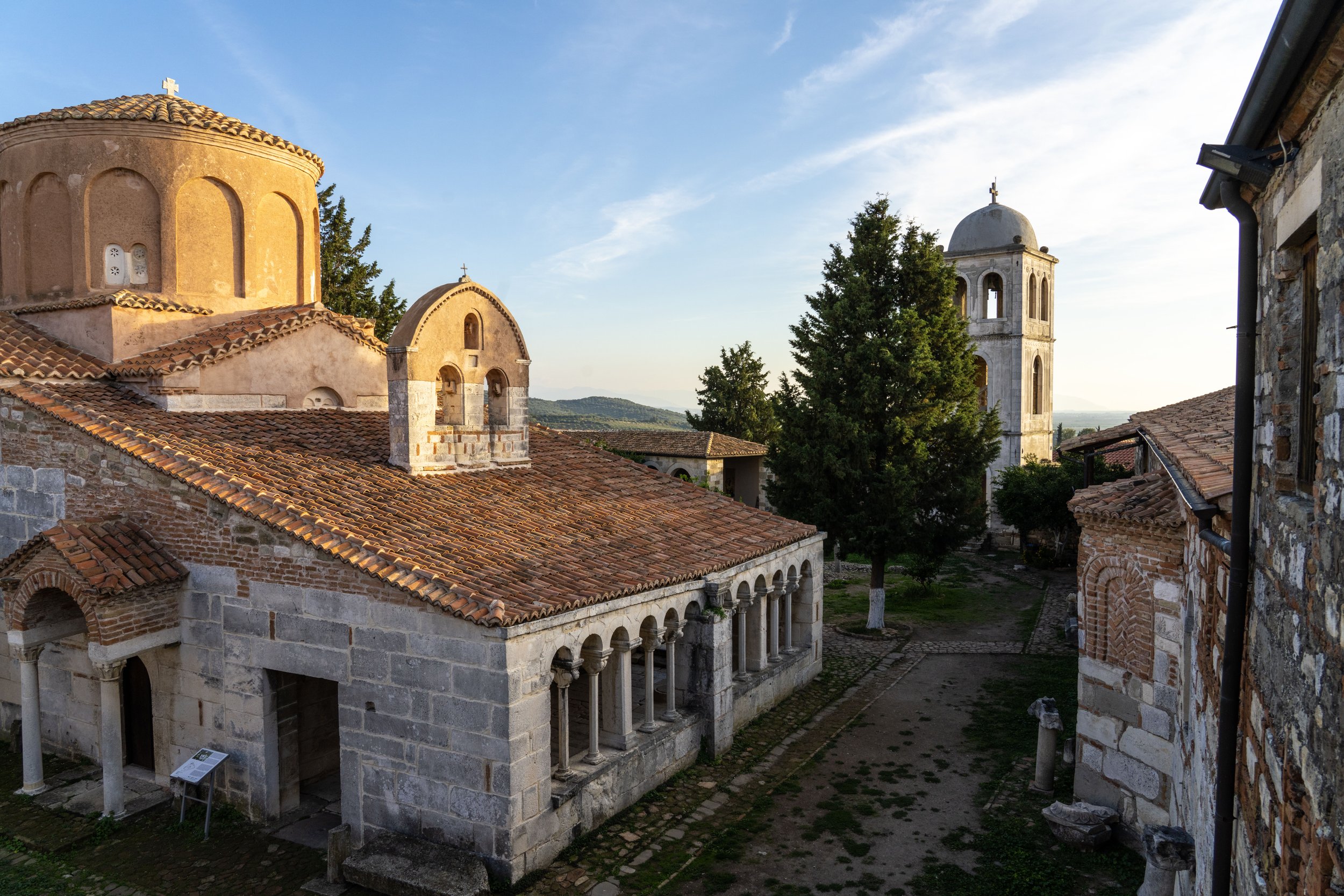
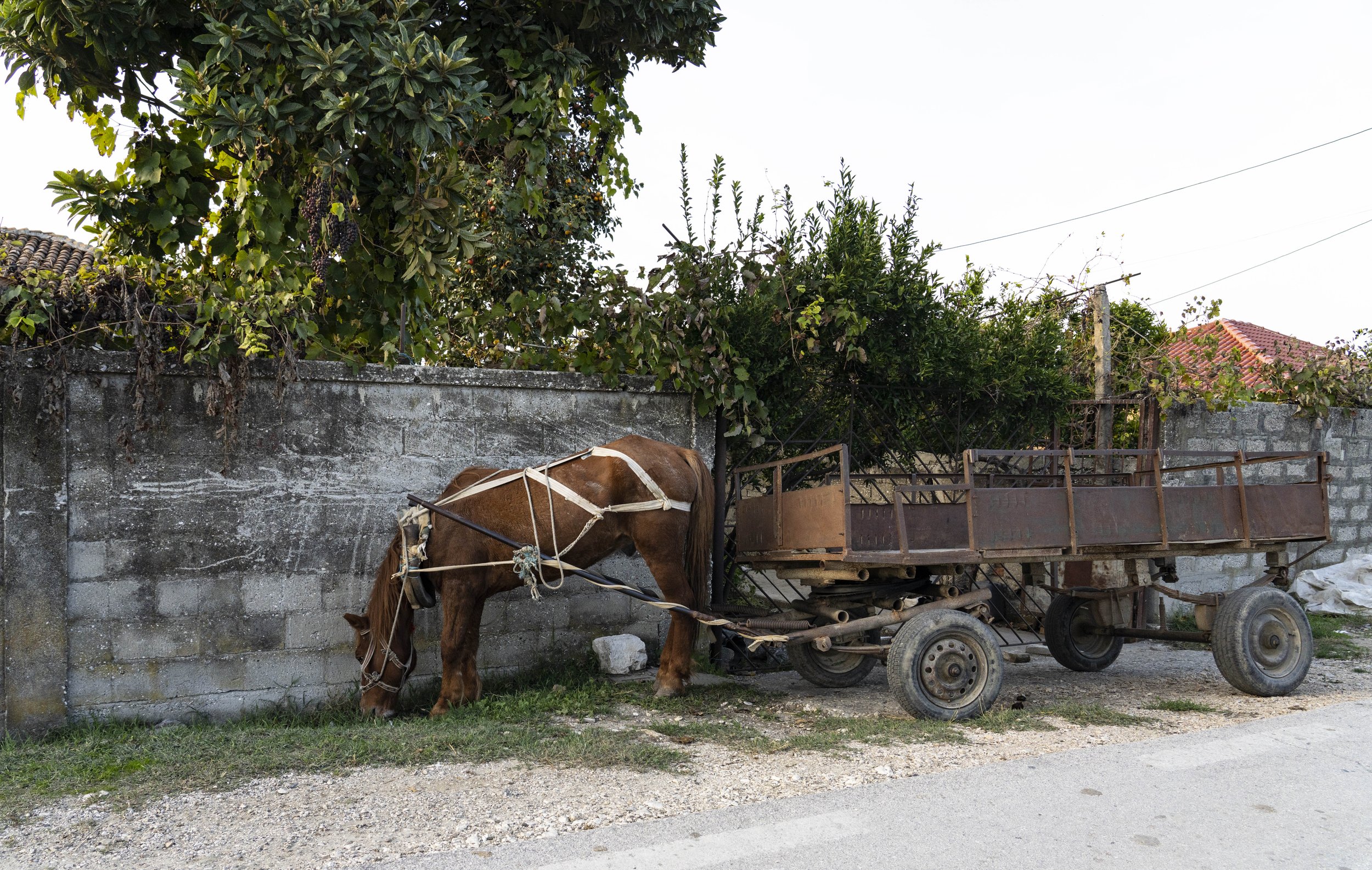
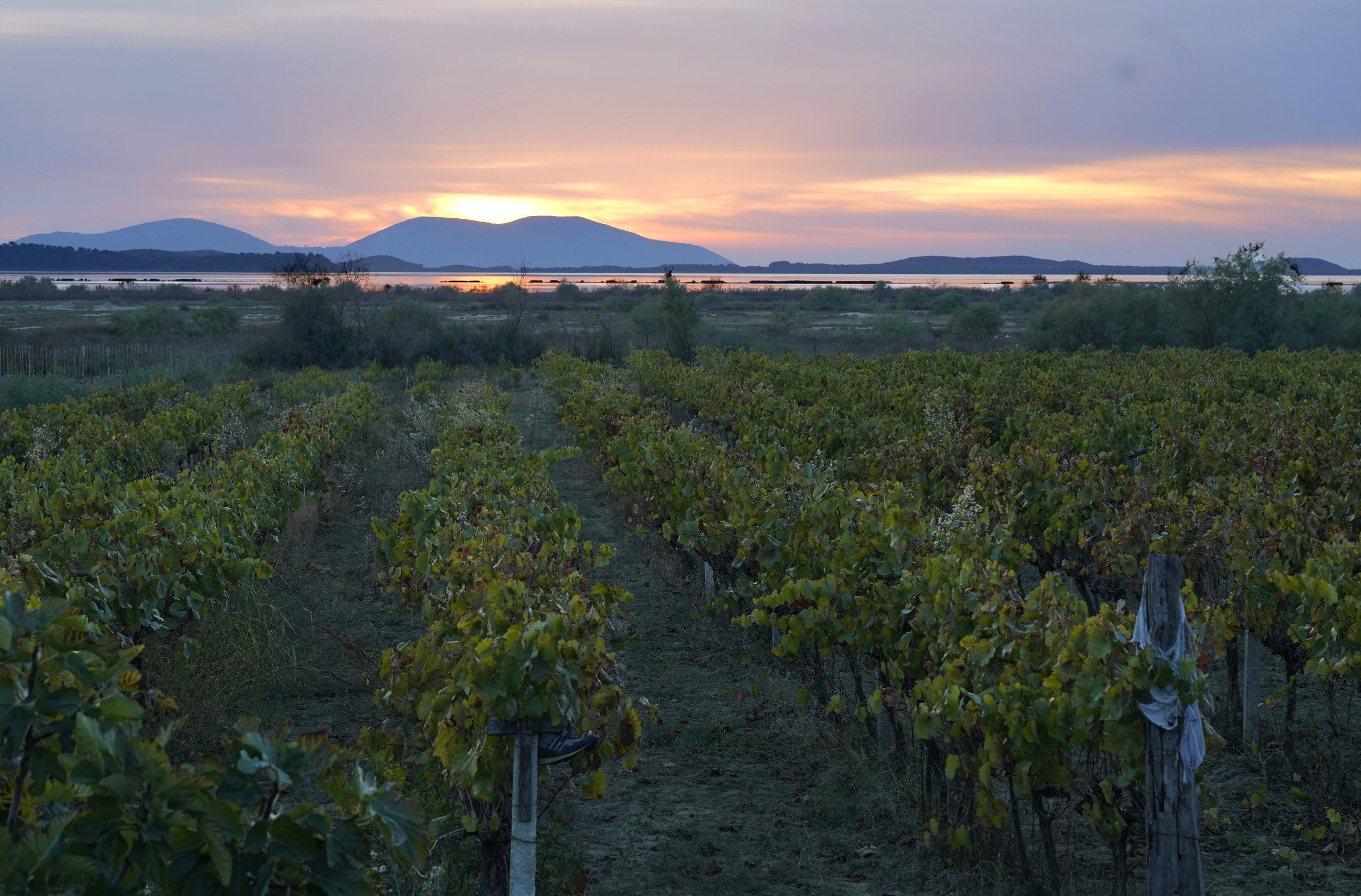
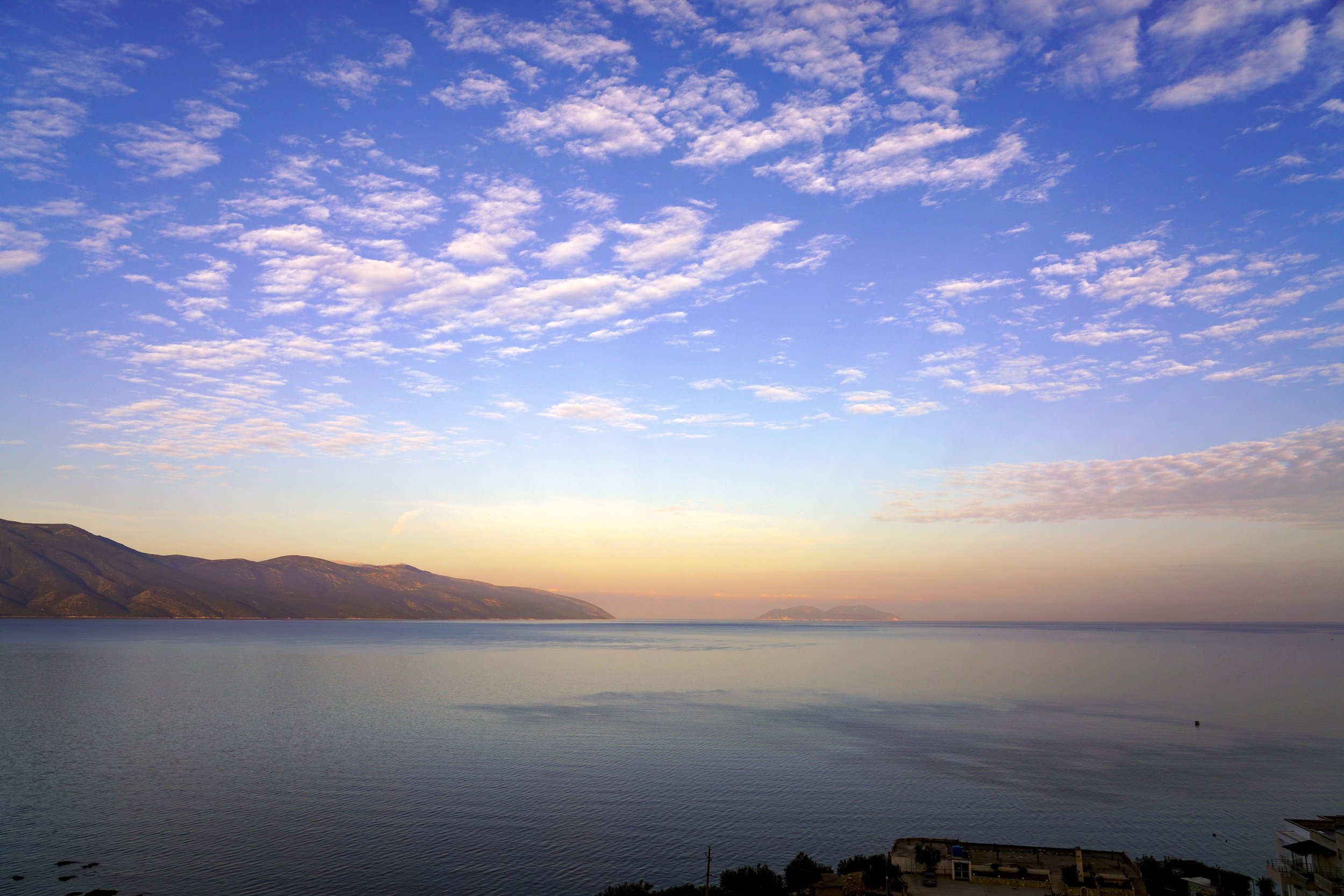
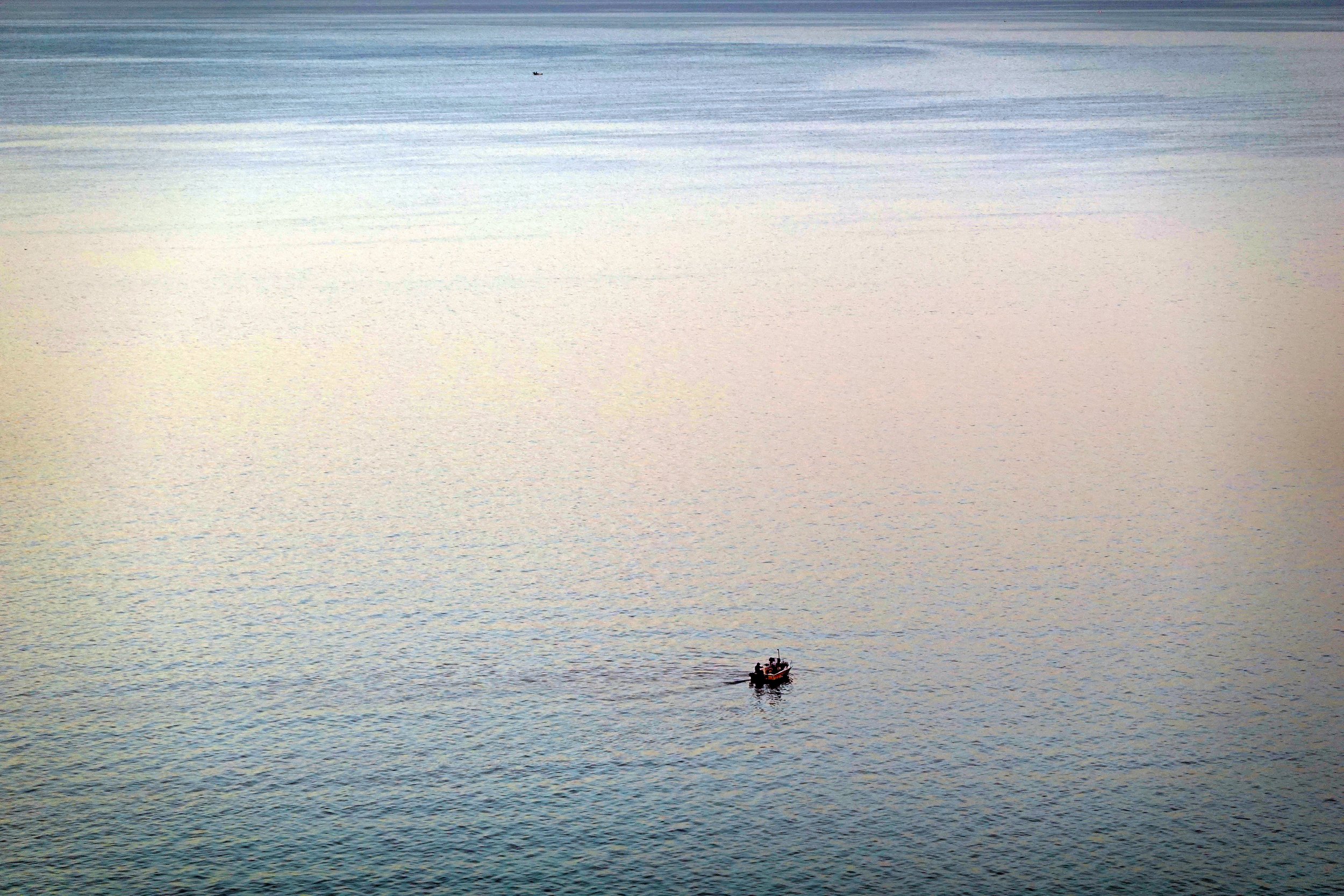
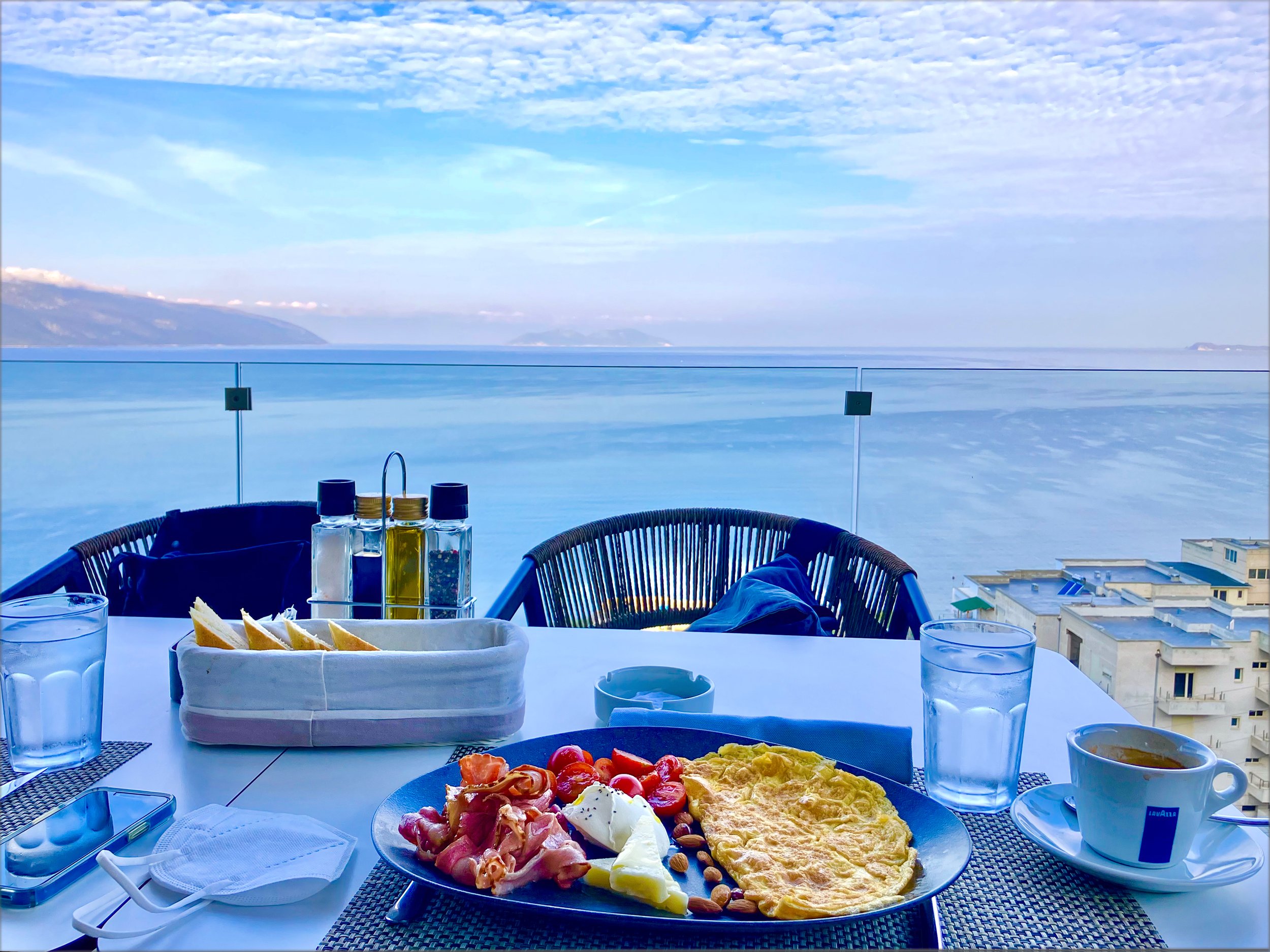

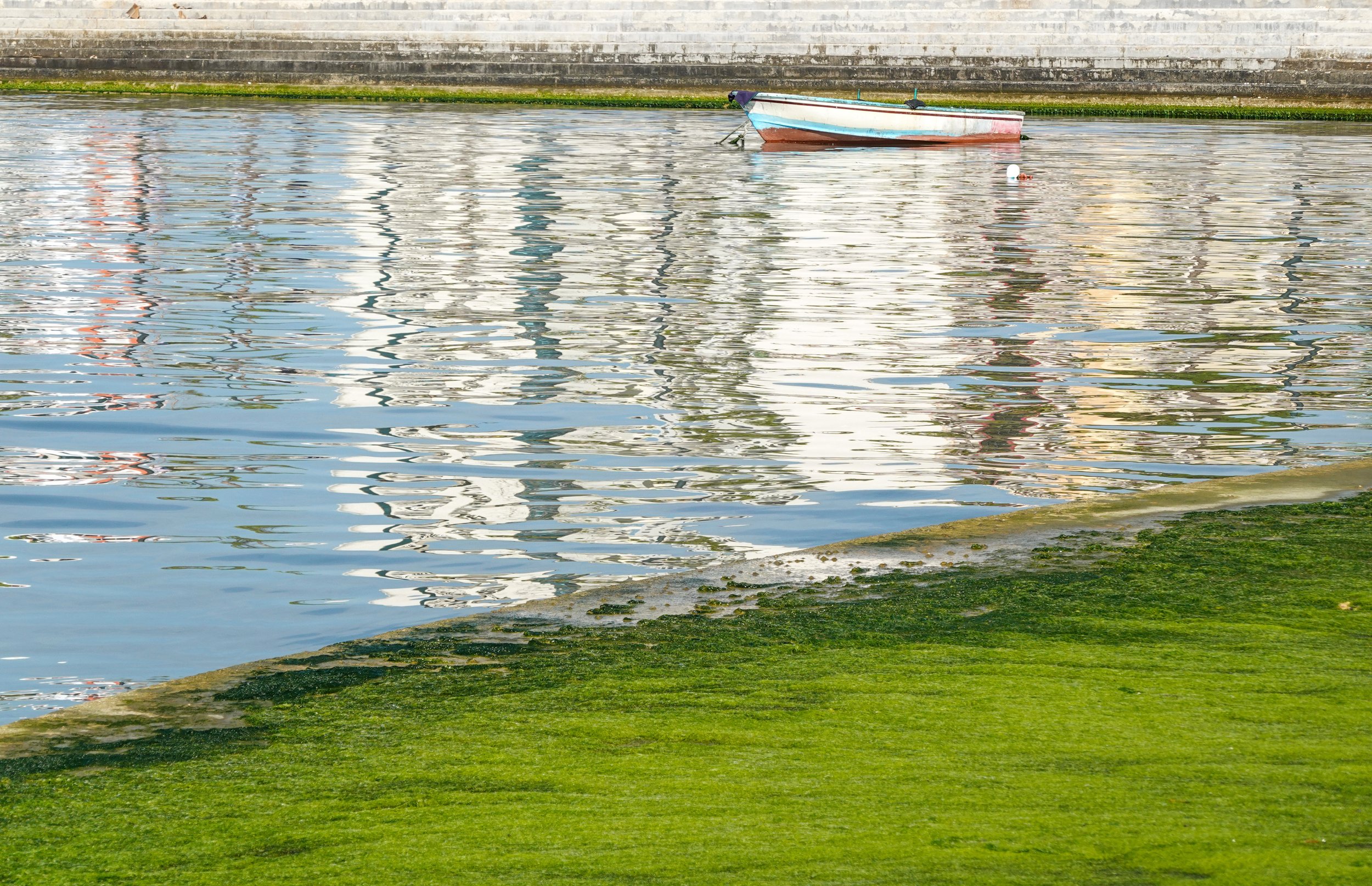
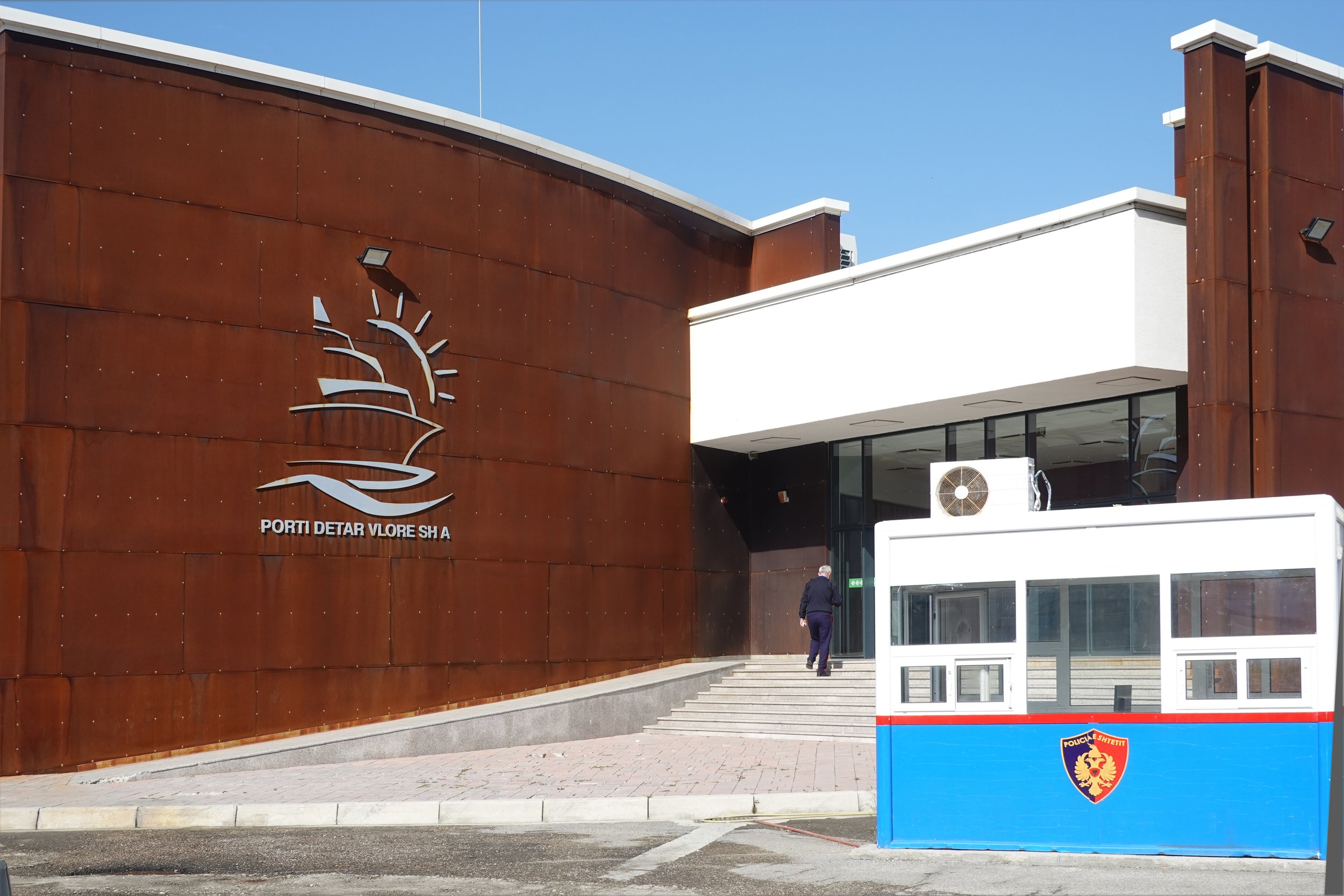

The coin on the left has an image titled Illyrian King and the one on the right has the image titled Illyrian Queen.
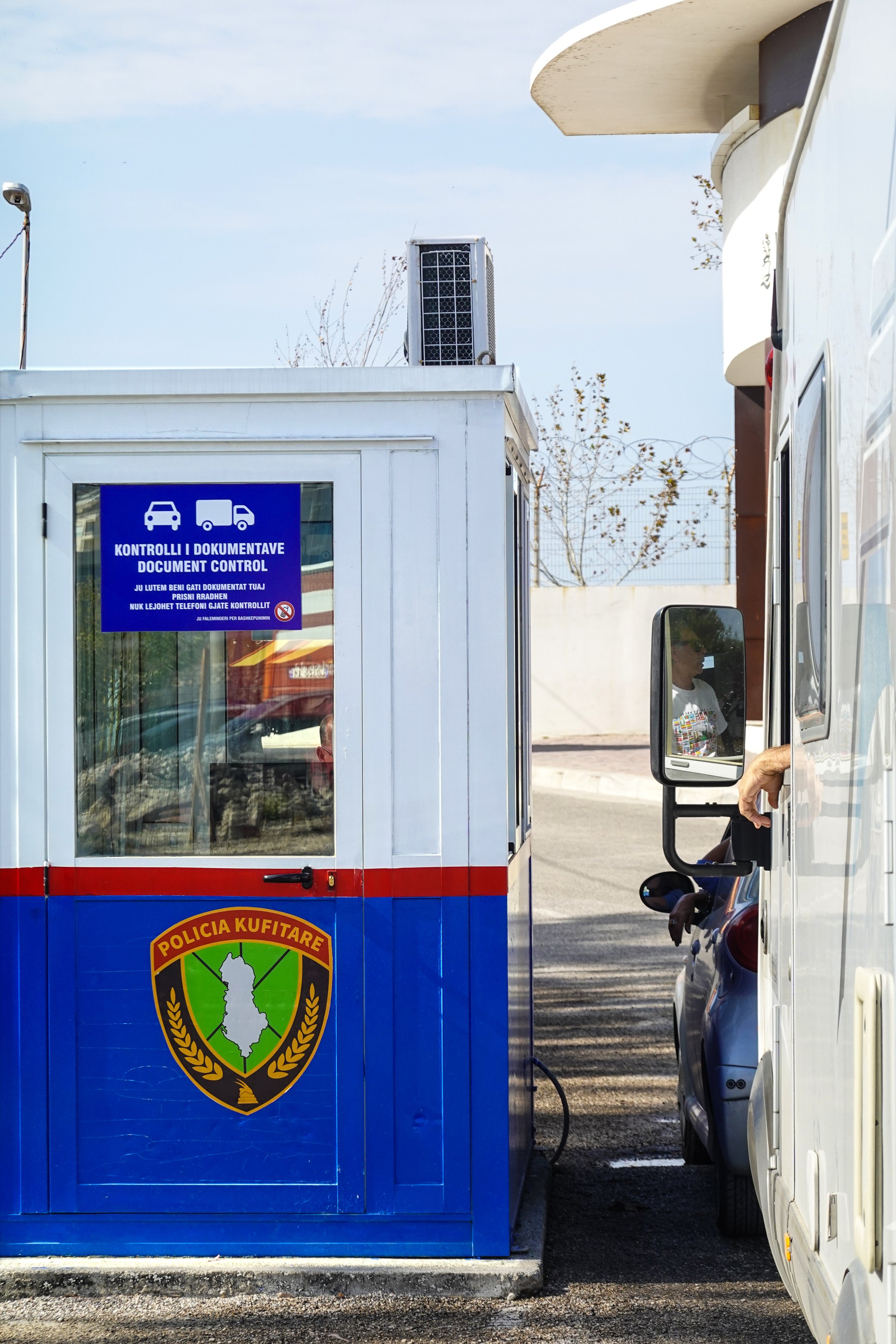
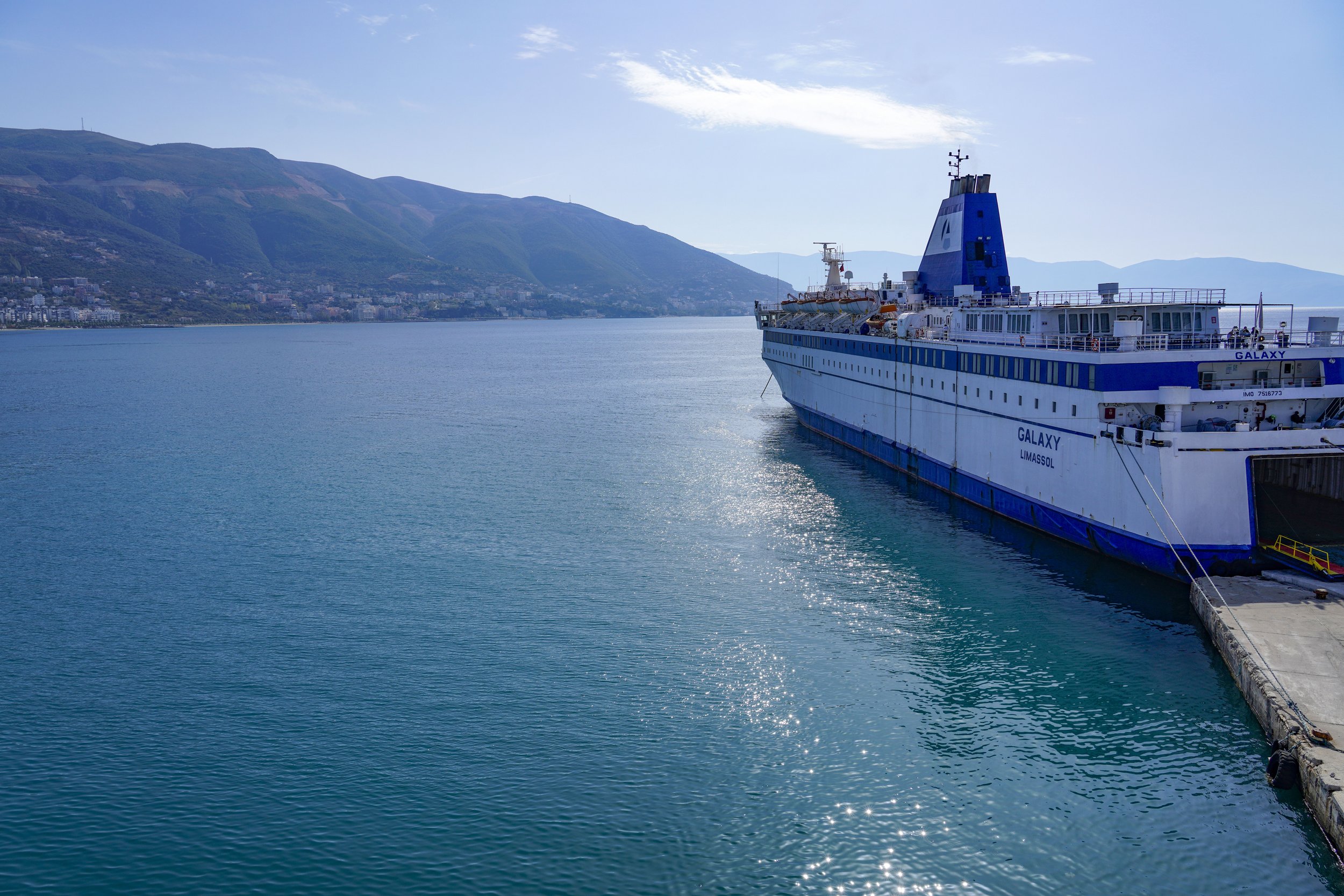
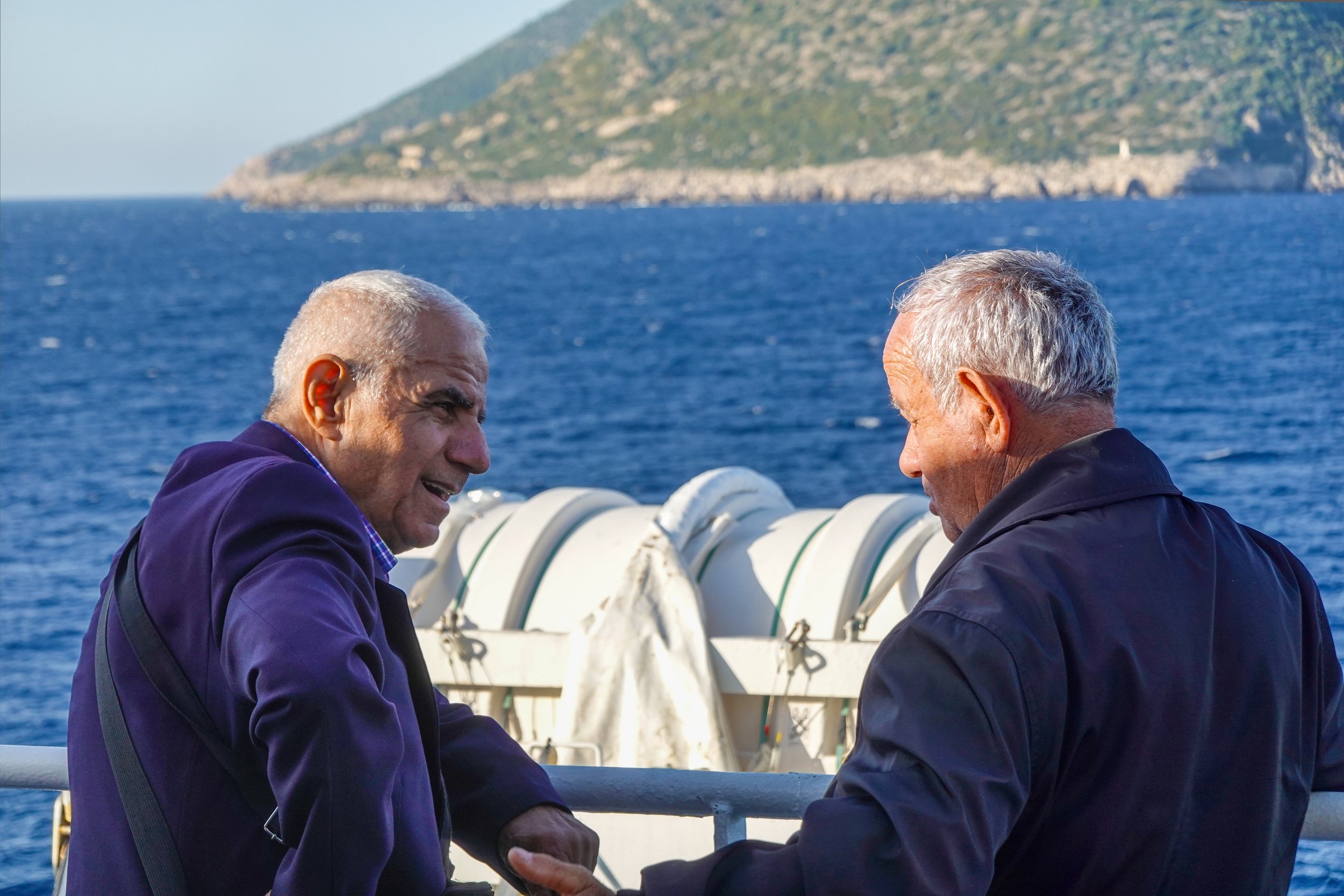
Two elders in discussion saw me photographing them and the one on the left told me that the other was explaining about the white building across the bay and his role in the resistance. Perhaps they were discussing events of 1961, when the Albanian government decided to use military force to expel the Soviet forces from Albania and to take control of four of the twelve Soviet submarines. On April 7, 1961, Albanian troops began to position the Vlora base and encircle the Soviet soldiers. Soviet forces were ordered to evacuate the base and leave Albania. Soviet troops initially resisted, but after several days of siege and negotiations, an agreement was reached. Soviet forces left the Vlora base on April 12, 1961 and withdrew from Albania. The Soviets withdrew, recalling eight submarines.

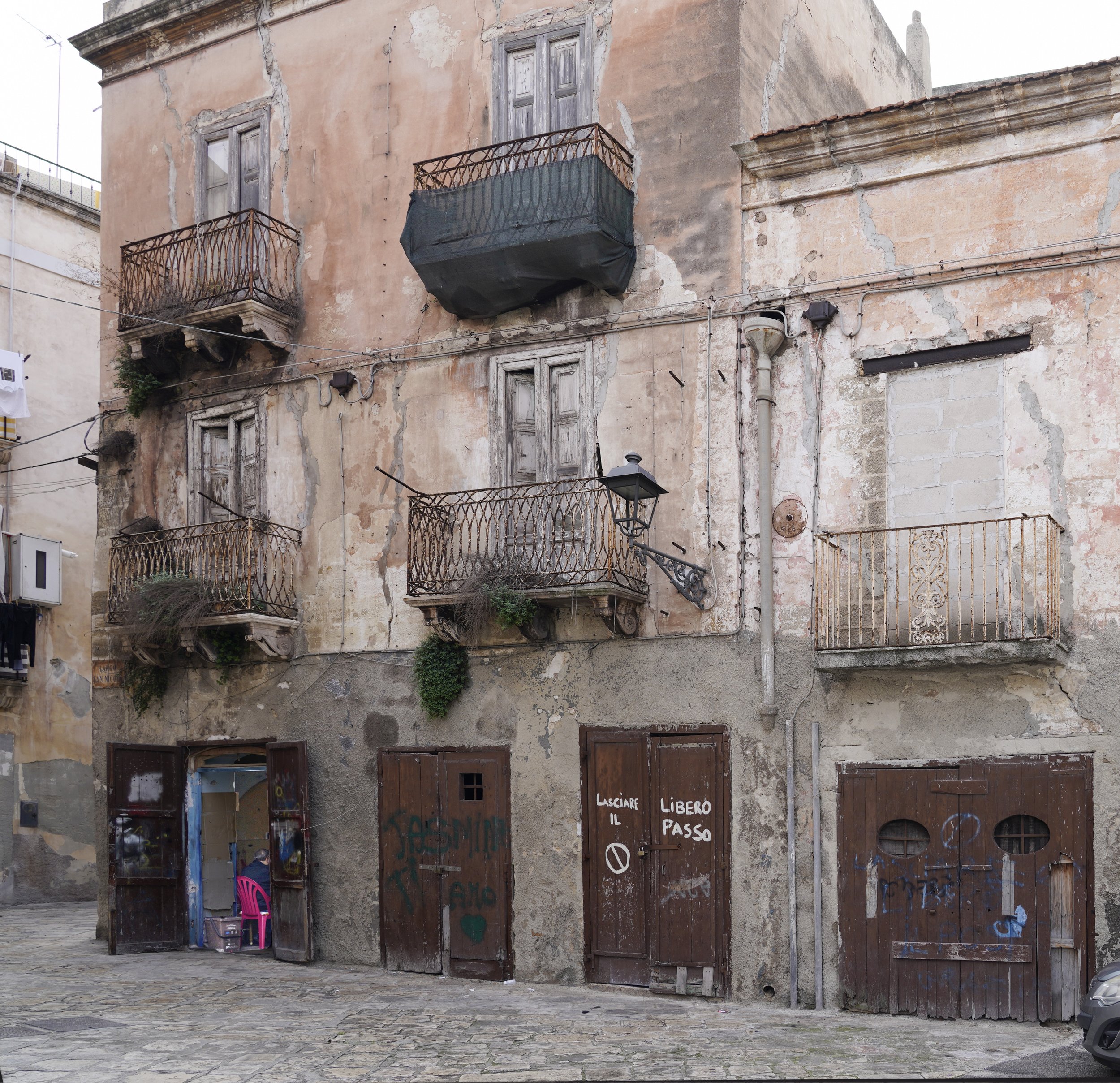
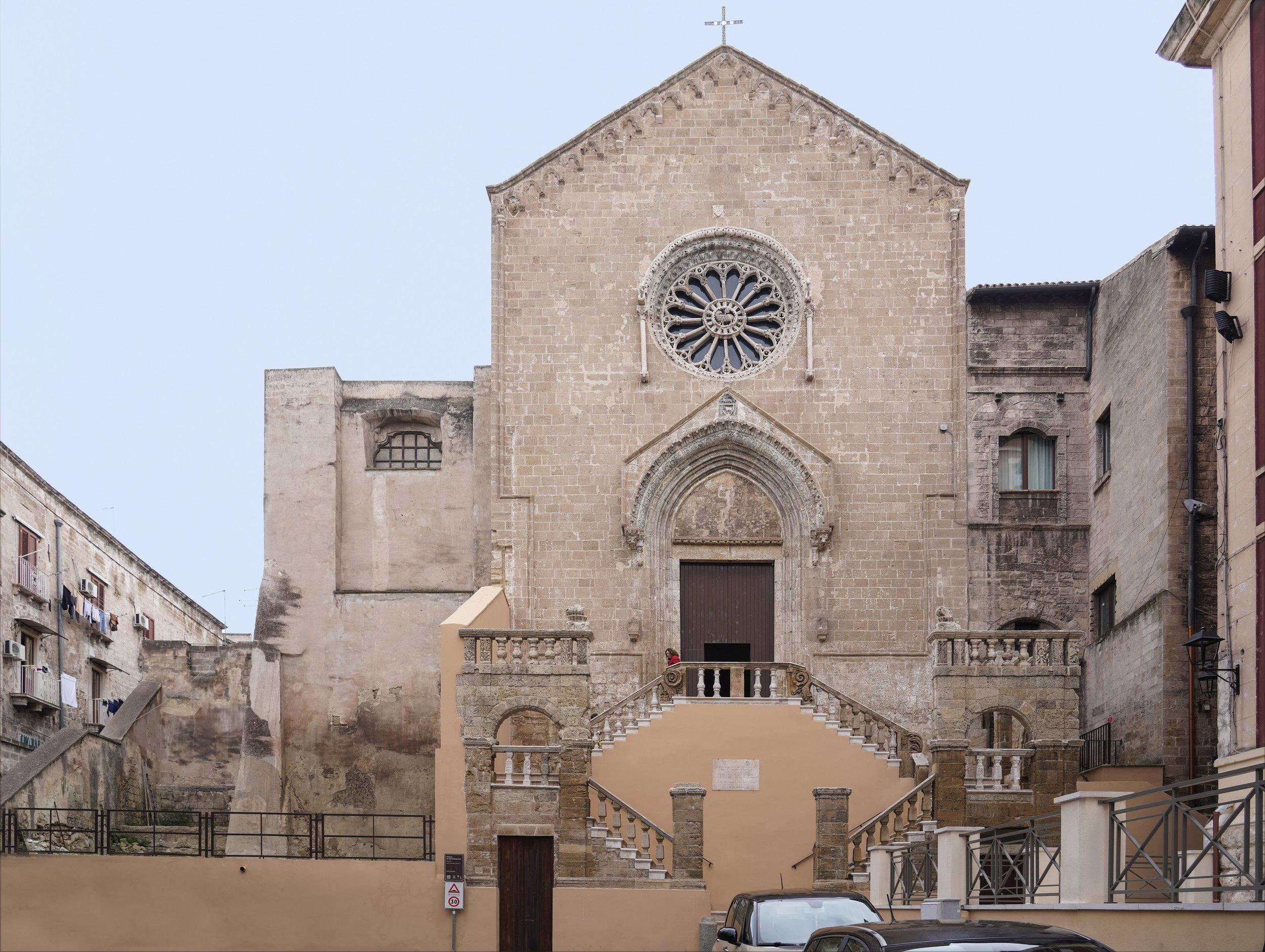
The Church of San Domenico (formerly the church of San Pietro Imperiale) is a Romanesque-Gothic church that stands on the western front of the historic center (Old Town) of Taranto, whose construction was completed around 1360. The Dominican fathers settled there in the first half of the fourteenth century, the date of registration in the archives of the order is 1349. The main entrance can be reached by means of a Baroque staircase built in the center of the façade towards the end of the eighteenth century, when the San Domenico slope was created to connect Via Duomo with the lower part of the island.
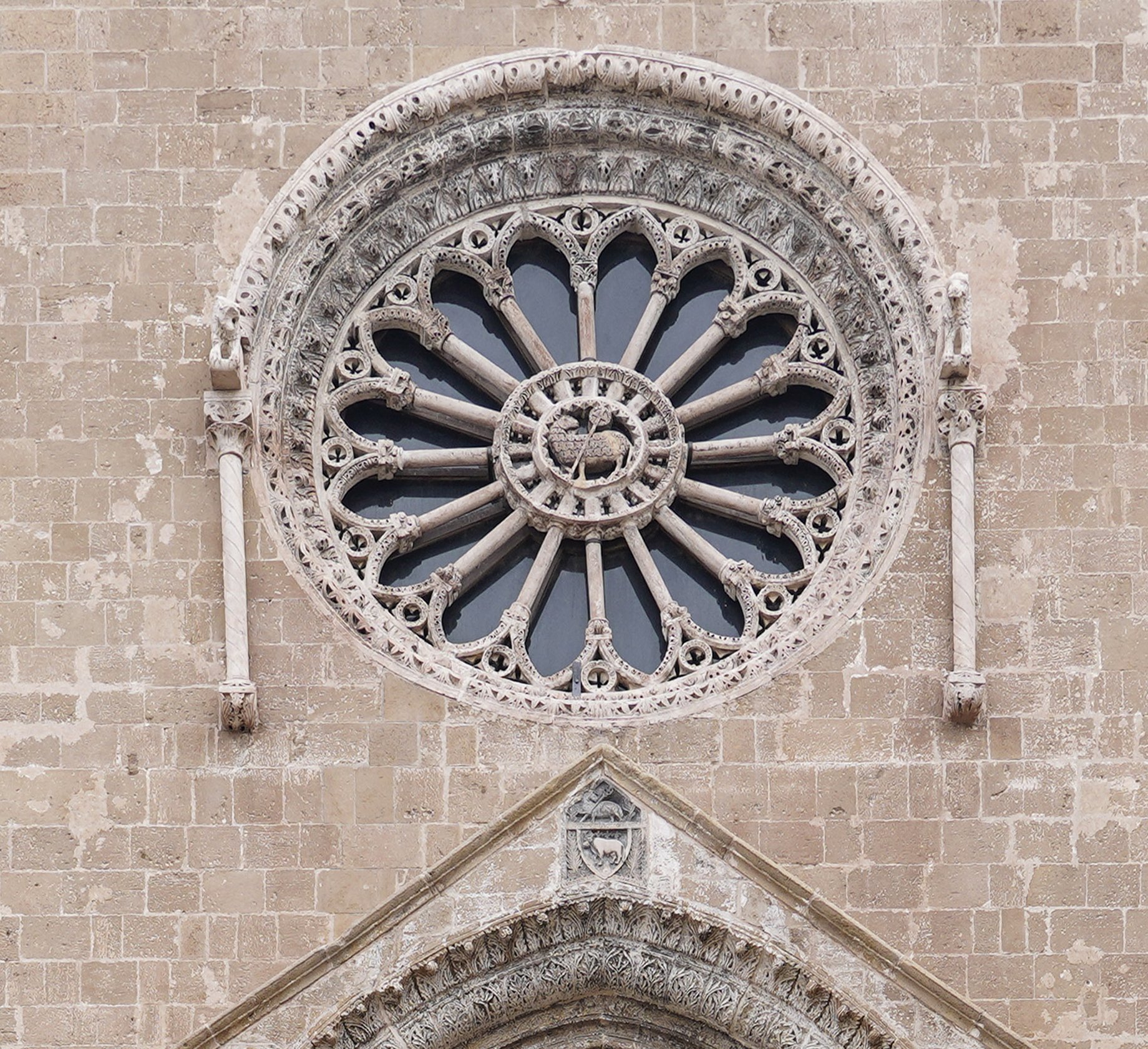
The rose window often came to symbolize the Virgin Mary, as the rose is one of her primary symbols. In the center of the window there is a lamb with a cross, symbolizing Christ crucified. The coat of arms (bottom, at the apex of the entrance) bears the ox which is associated with the arms of the Taurisano family, whose main members were buried in the Cathedral (where a similar coat of arms is preserved on a tombstone).
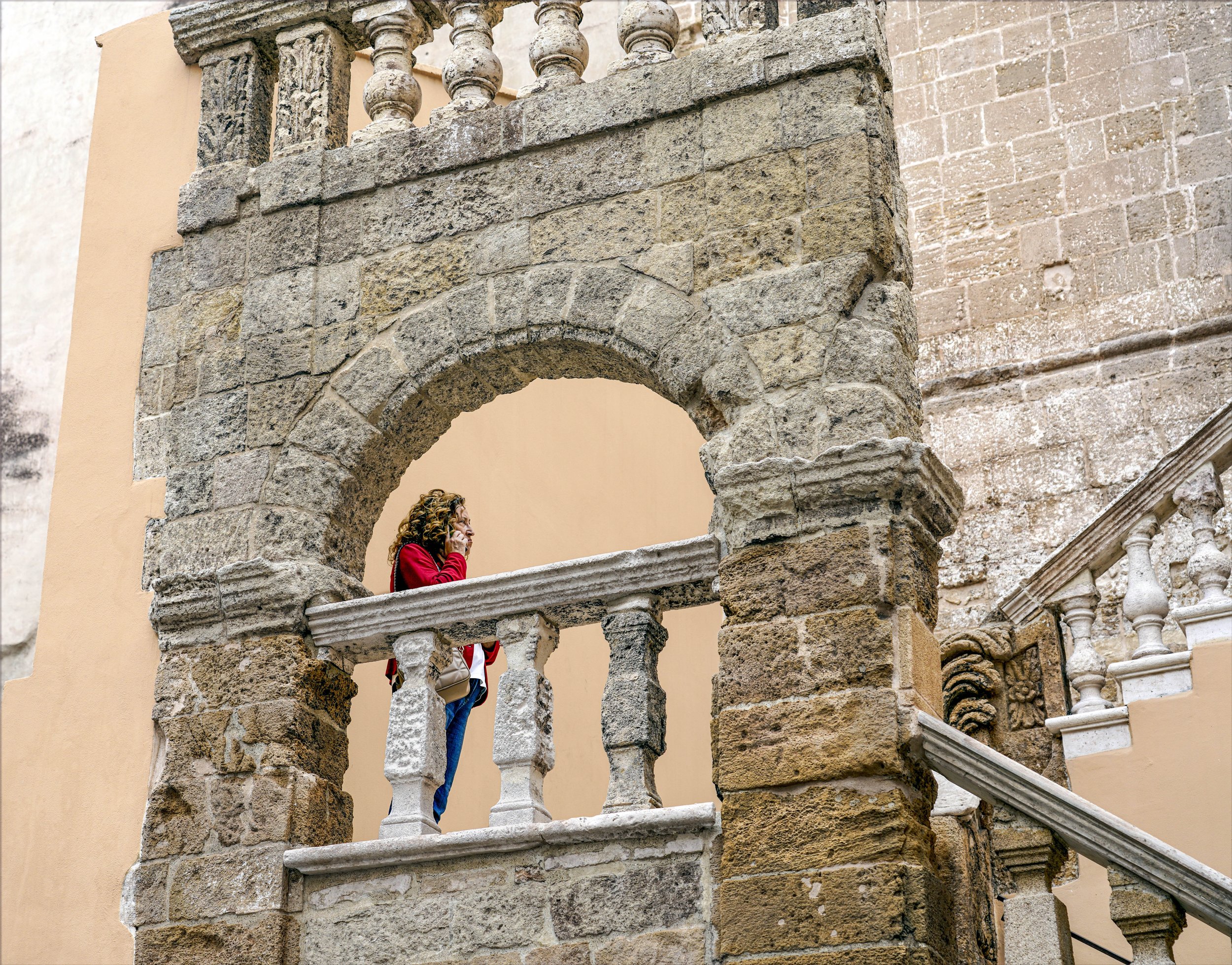
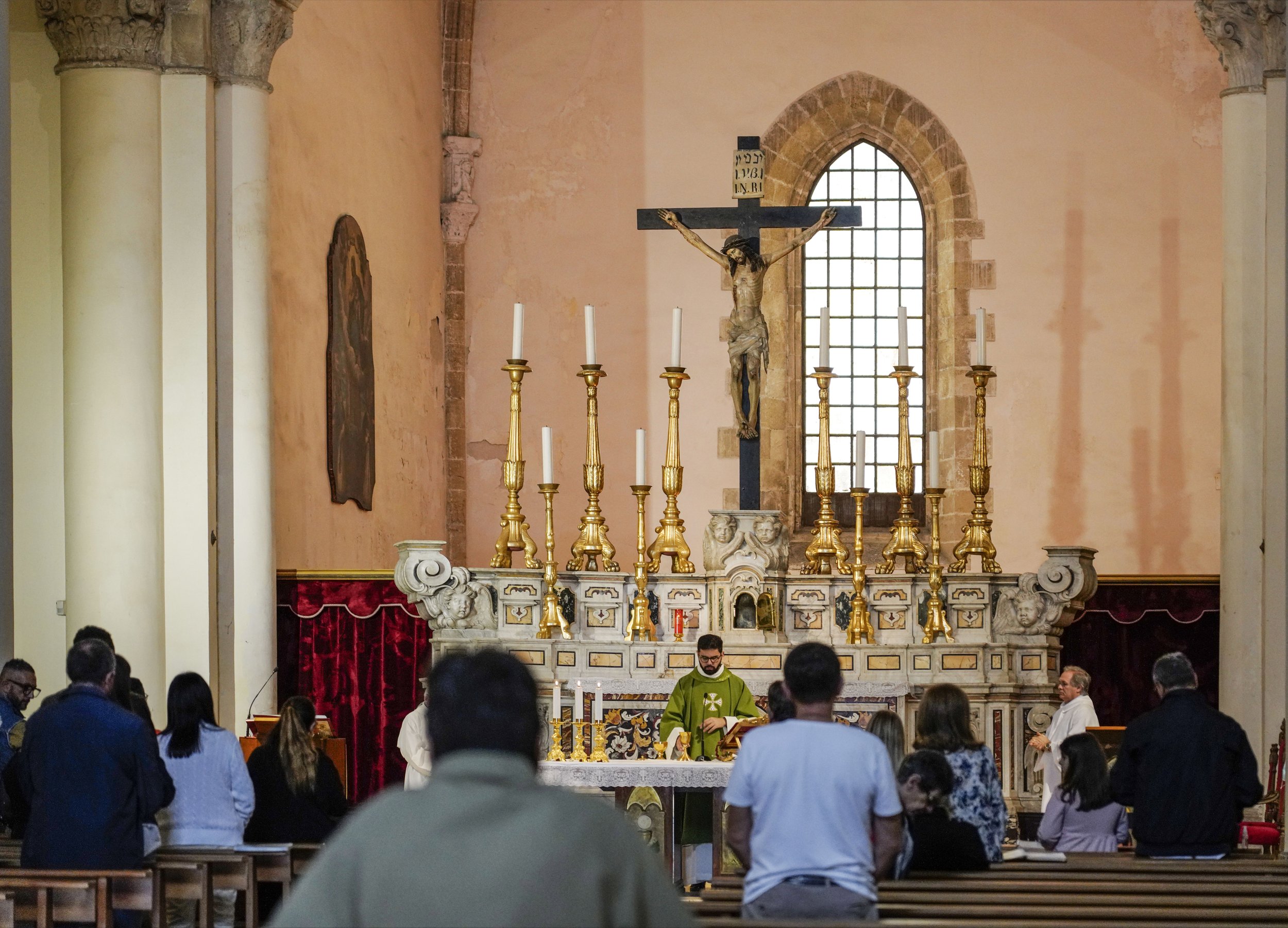
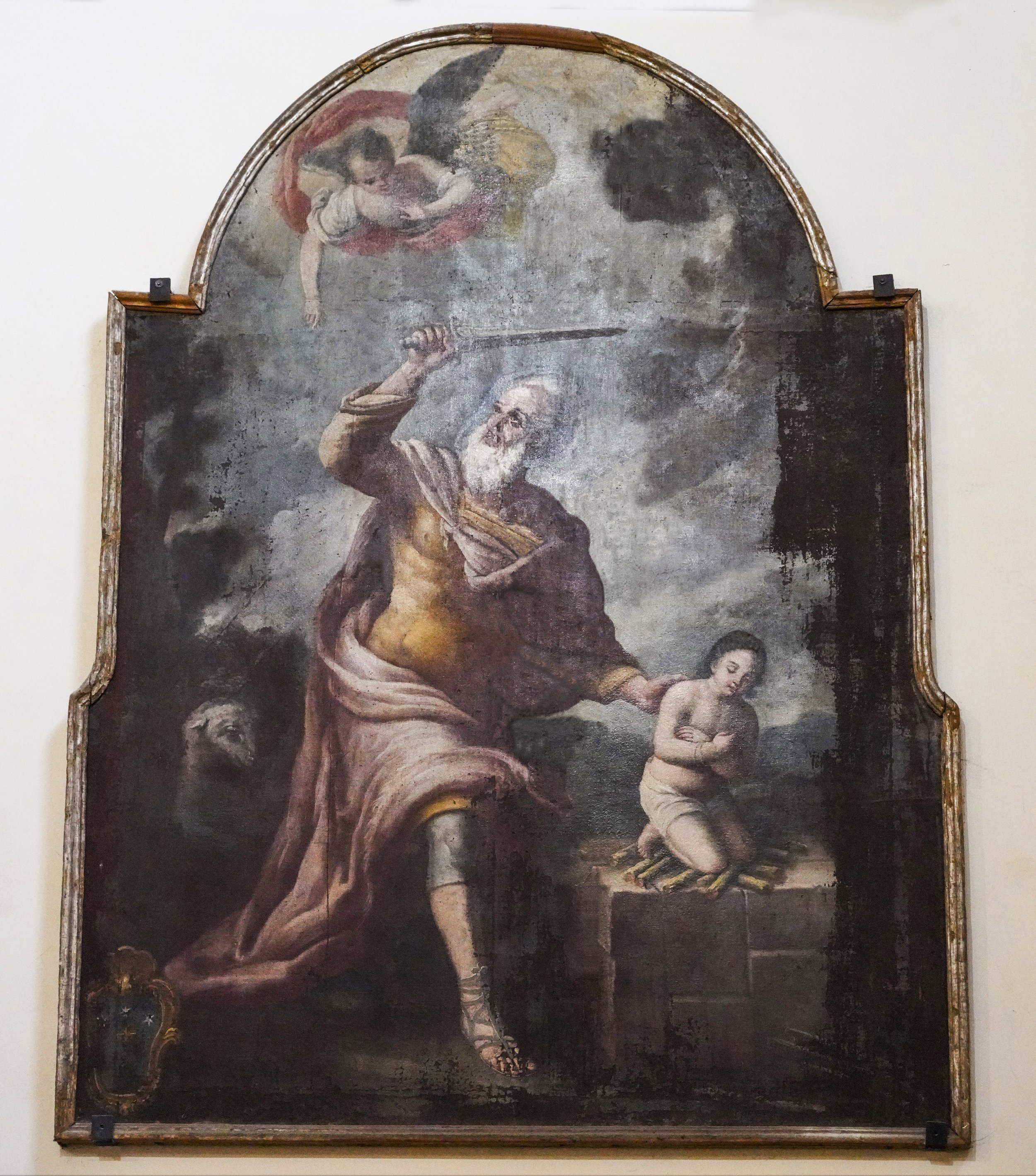
According to the Hebrew Bible, God commands Abraham to offer his son Isaac as a sacrifice. After Isaac is bound to an altar, a messenger from God stops Abraham before the sacrifice finishes, saying "now I know you fear God". Abraham looks up and sees a ram and sacrifices it instead of Isaac.
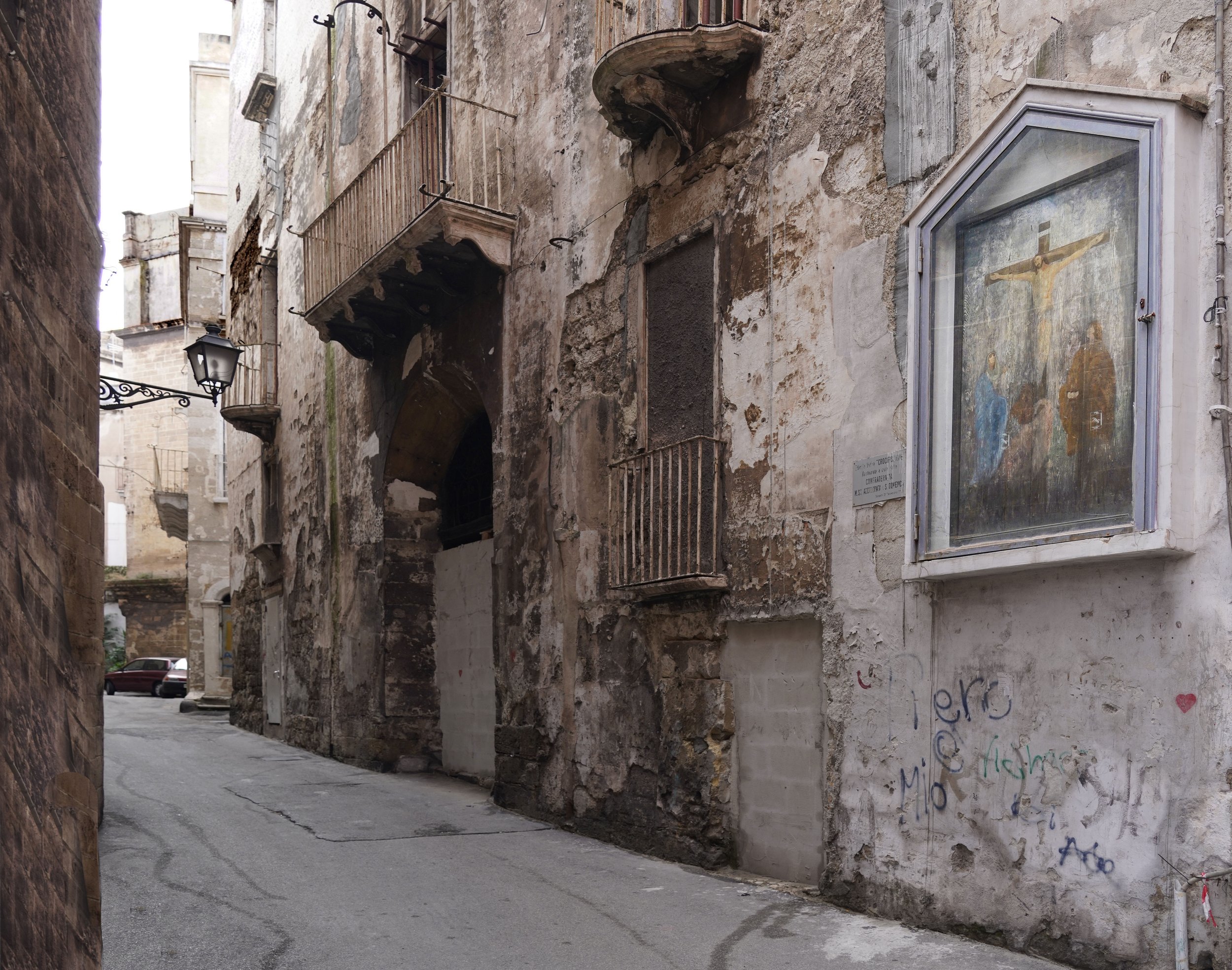

The inscription on this image reads, “What we do in life echoes in eternity.”
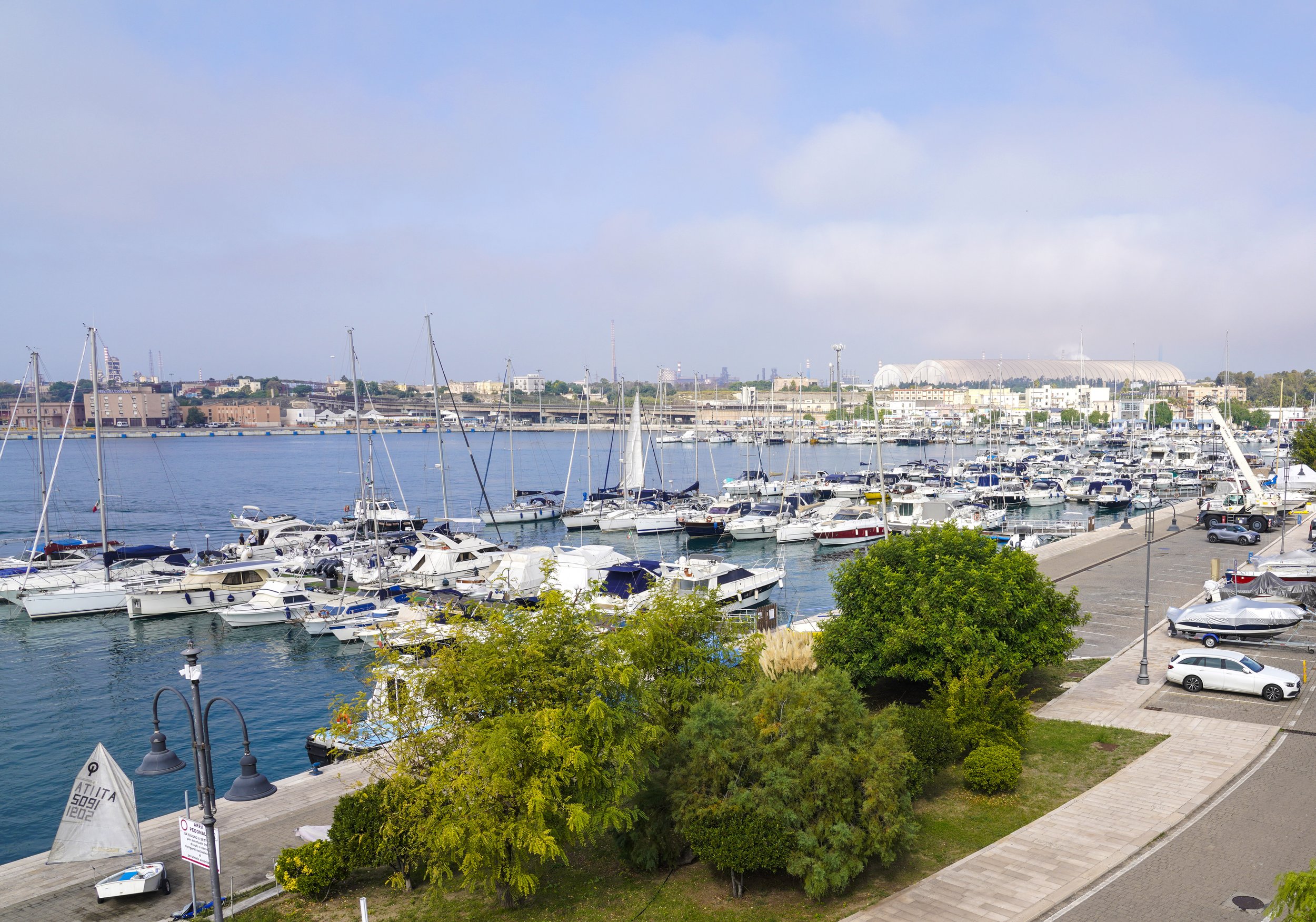
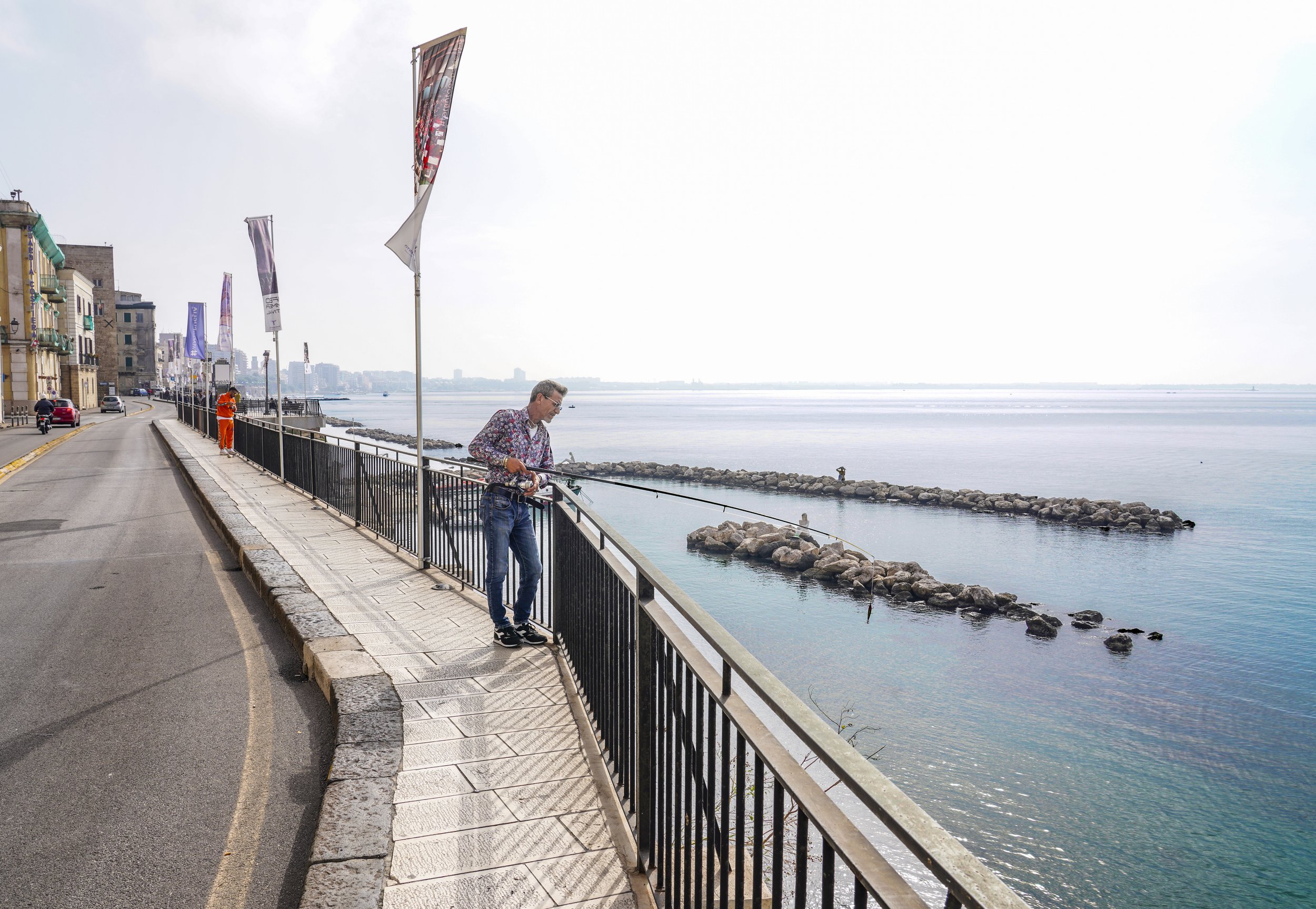
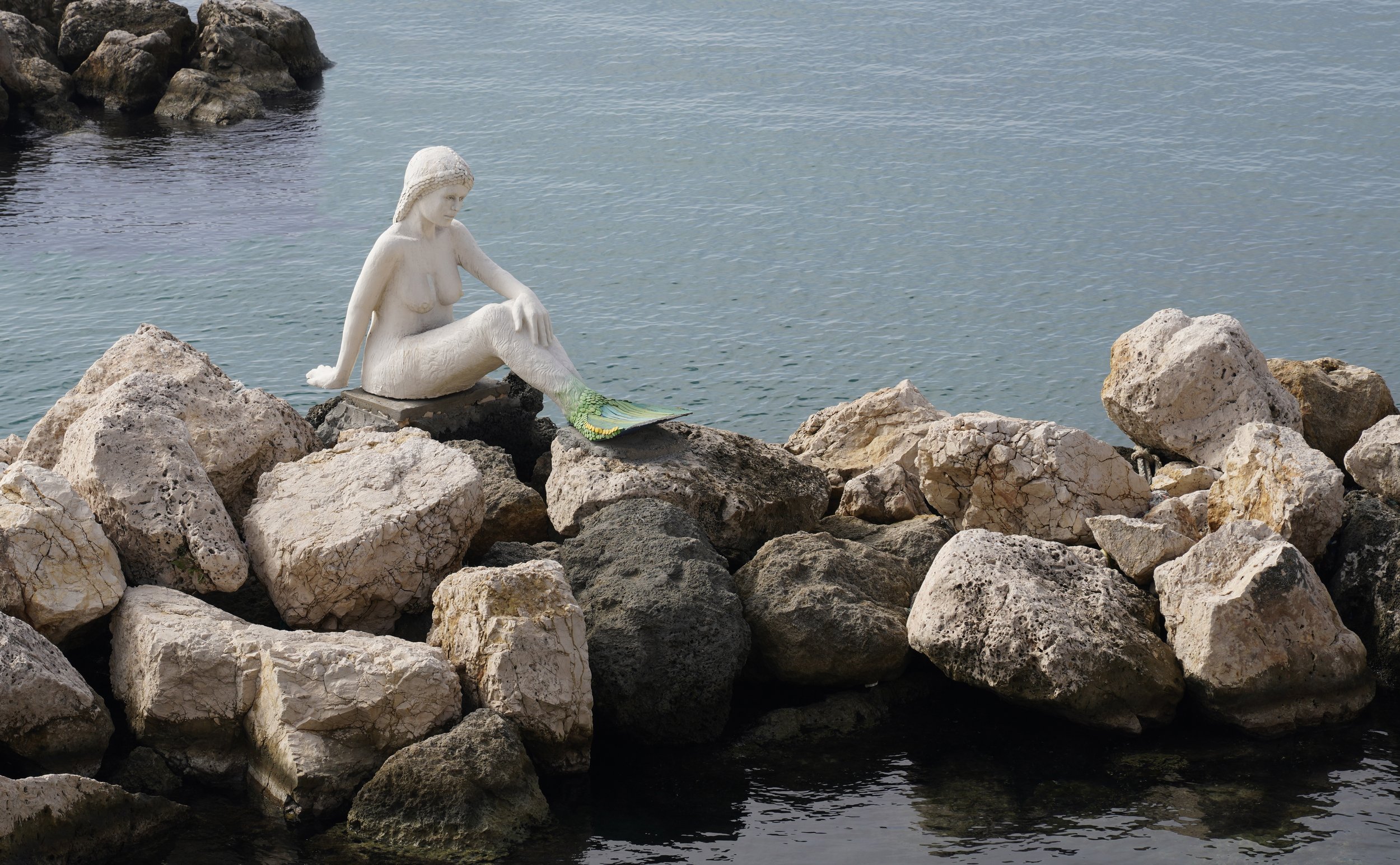

The tradition at Taranto is that Cataldo came from the monastery school at Ireland, and arrived in this city enroute to or from the Holy Land and was chosen as its bishop. In Taranto, Cataldo broke down the pagan temples, preached the gospel and tended to those in need, and liberated the city of Bari from the plague. Miracles were soon attributed to him, e.g., he gave sight to a blind child; made a dumb shepherd boy speak. As their bishop, he exhorted the people to build a new church in honor of the Immaculate Heart of the Madonna and the Saviour. To encourage them he helped dig the foundations himself but one morning a mason was crushed by falling stones. Barely alive the mason was pulled from the rubble but after a blessing from Bishop Cataldo his wounds were healed. Cataldo died in Taranto on 8th March, 685.
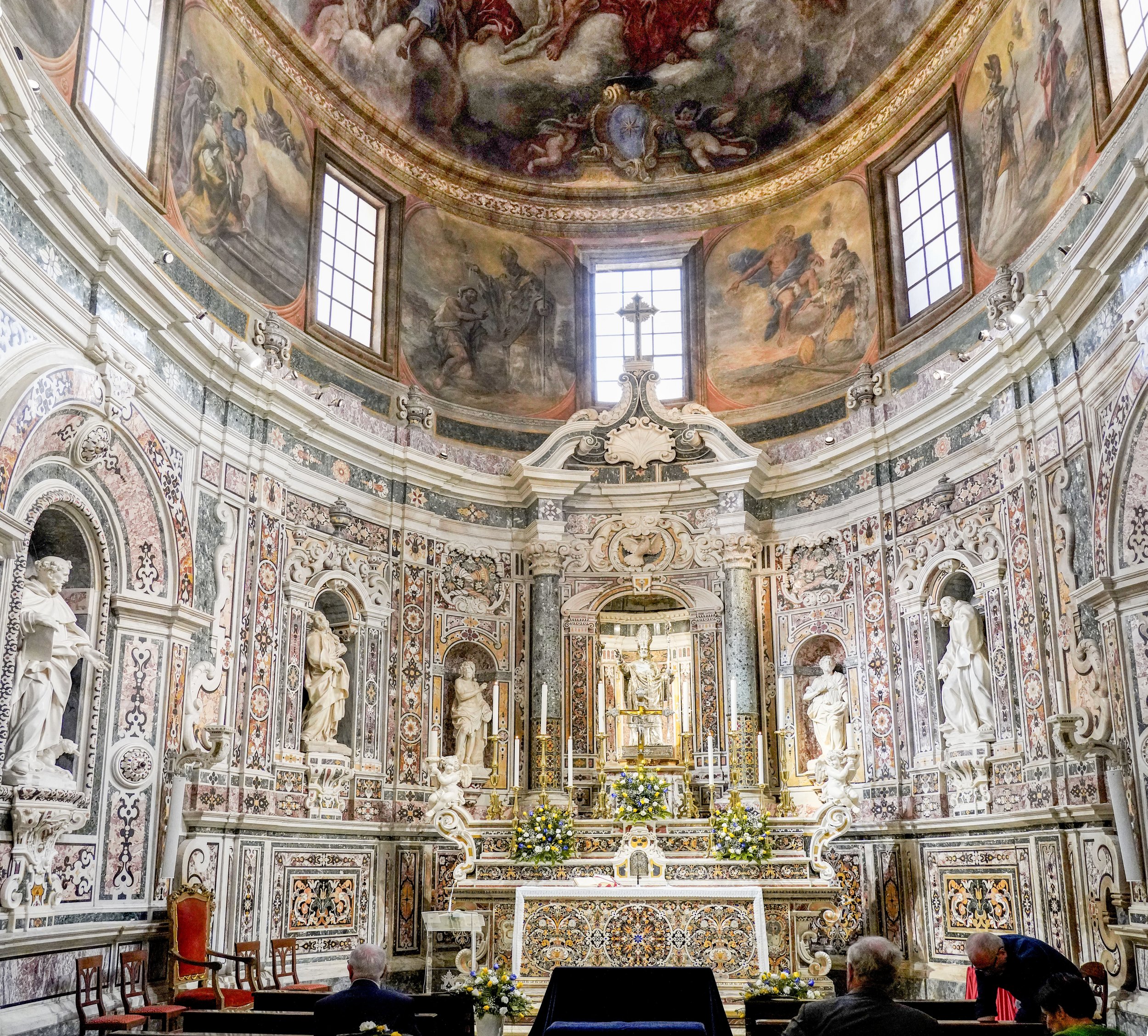
Among the greatest examples of 17th-18th century Neapolitan Baroque outside Naples is the Cappellone di San Cataldo in the Taranto Cathedral. Marble cladding predominates in it from the floor to the walls, up to the drum of the dome, which, however, is frescoed with paintings of episodes in the life of Saint Cataldo. Its most famous masterpieces are the large marble saints by Giuseppe Sanmartino (1720-1793) set in niches around the chapel. The most important niche was carved out to preserve the silver statue of Saint Cataldo.
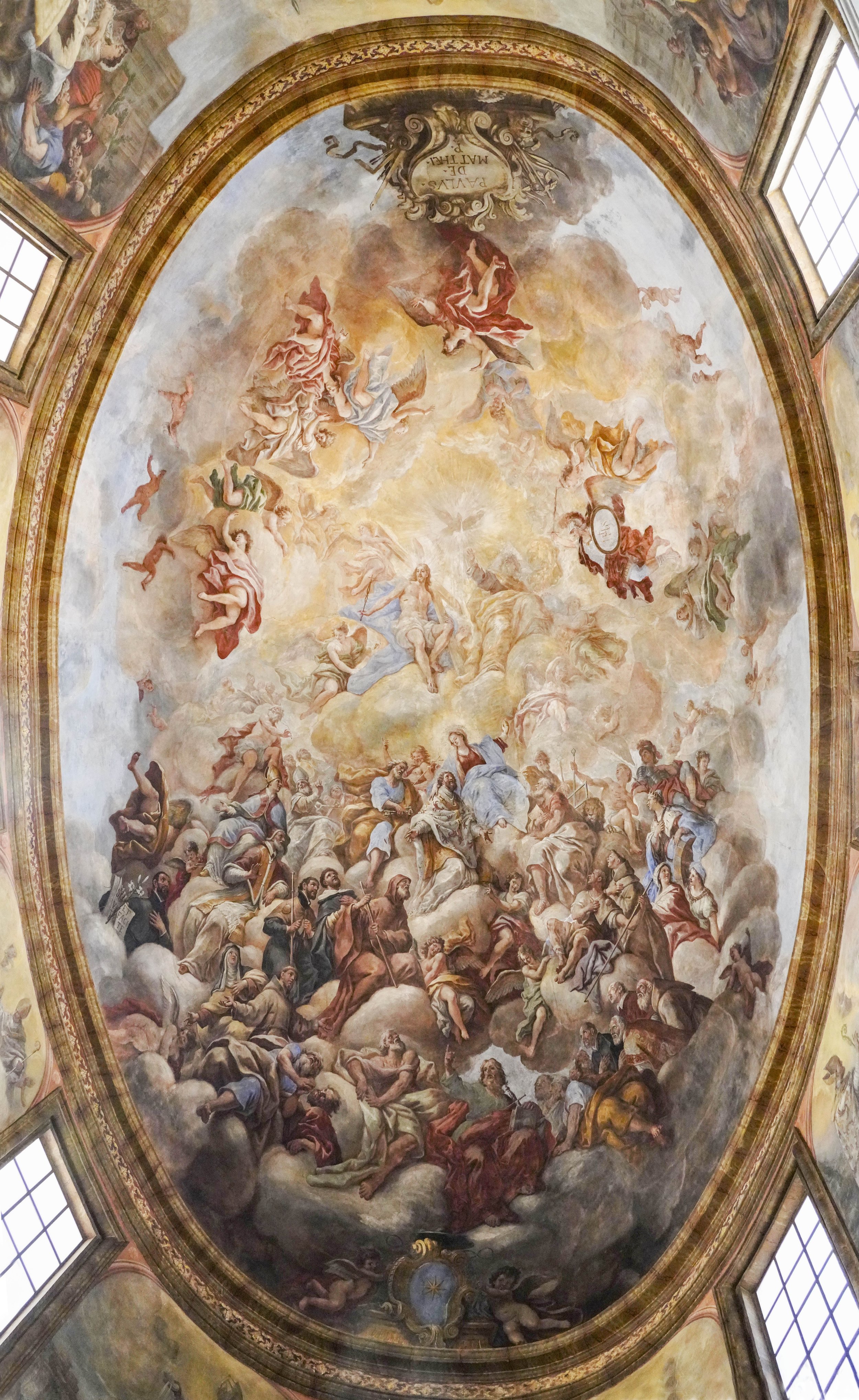
In 1713, after ten years of a vacant see, the new archbishop Giovan Battista Stella commissioned the fresco decoration of the dome of the Chapel by Paolo De Matteis (b. Piano Vetrale, 1662 - d. Naples, 1728), who depicted the Glory of Saint Cataldo and Episodes from his life between the windows of the drum of the dome.

Accordng to legend one morning a mason was crushed by falling stones. Barely alive he was pulled from the rubble but after a blessing from Bishop Cataldo his wounds were healed.
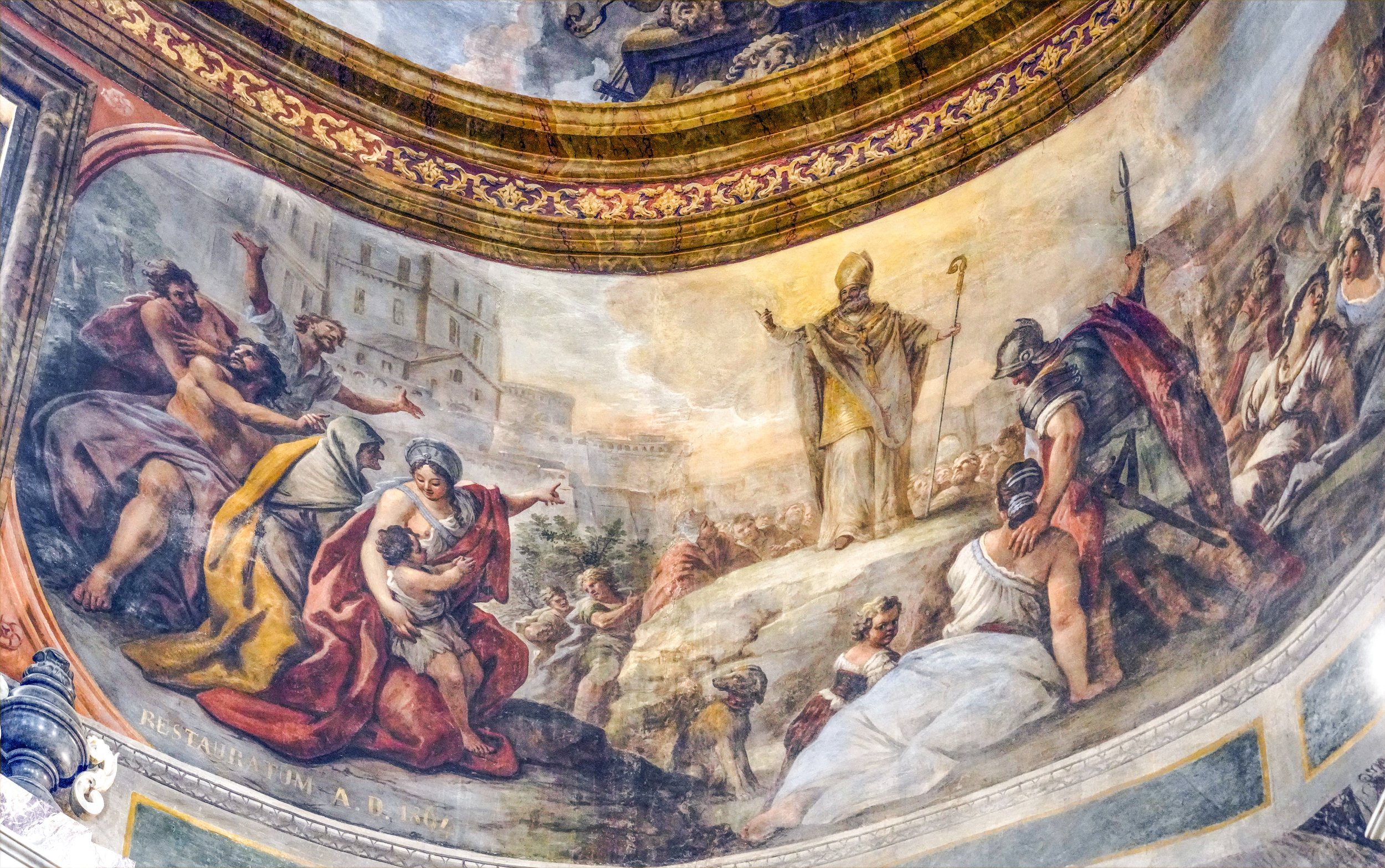
According to legend, In Taranto Cataldo broke down the pagan temples, preached the gospel and tended to those in need before visiting Bari, where, it is said, he liberated the city from the plague.

Saint Dominic, (8 August 1170 – 6 August 1221), also known as Dominic de Guzmán, was a Castilian Catholic priest and the founder of the Dominican Order. The story is told that before his birth his barren mother made a pilgrimage to the Abbey at Silos, and dreamt that a dog leapt from her womb carrying a flaming torch in its mouth, and seemed to set the earth on fire. This story is likely to have emerged when his order became known, after his name, as the Dominican order, Dominicanus in Latin, and a play on words interpreted as Domini canis: "Dog of the Lord;" thus, this statue includes a dog with a flaming torch in its mouth at the feet of St Domenic.

At an early age, Philip abandoned the chance to become a businessman, moved to Rome from Florence, and devoted his life and individuality to God. After three years of philosophy and theology studies, he gave up any thought of ordination. The next 13 years were spent in a vocation unusual at the time—that of a layperson actively engaged in prayer and the apostolate. At the urging of his confessor, Philip was ordained a priest and soon became an outstanding confessor himself. Some of Philip’s followers became priests and lived together in community. This was the beginning of the Oratory, the religious institute he founded. Giovanni Palestrina was one of Philip’s followers, and composed music for the services.

St. John the Baptist, (born 1st decade BCE, Judaea, Palestine, near Jerusalem—died 28–36 CE; feast day June 24), was a Jewish prophet of priestly origin who preached the imminence of God’s Final Judgment and baptized those who repented in self-preparation for it; he is revered in the Christian church as the forerunner of Jesus Christ. After a period of desert solitude, John the Baptist emerged as a prophet in the region of the lower Jordan River valley. He had a circle of disciples, and Jesus was among the recipients of his rite of baptism.

Saint Peter (died AD 64–68), also known as Peter the Apostle, Simon Peter, Simeon, Simon, or Cephas was one of the Twelve Apostles of Jesus Christ and one of the first leaders of the early Christian Church. He appears repeatedly and prominently in all four New Testament gospels as well as the Acts of the Apostles. According to Christian tradition, Peter was crucified upside-down in Rome under Emperor Nero. The ancient Christian churches all venerate Peter as a major saint and as the founder of the Church of Antioch and the Church of Rome.
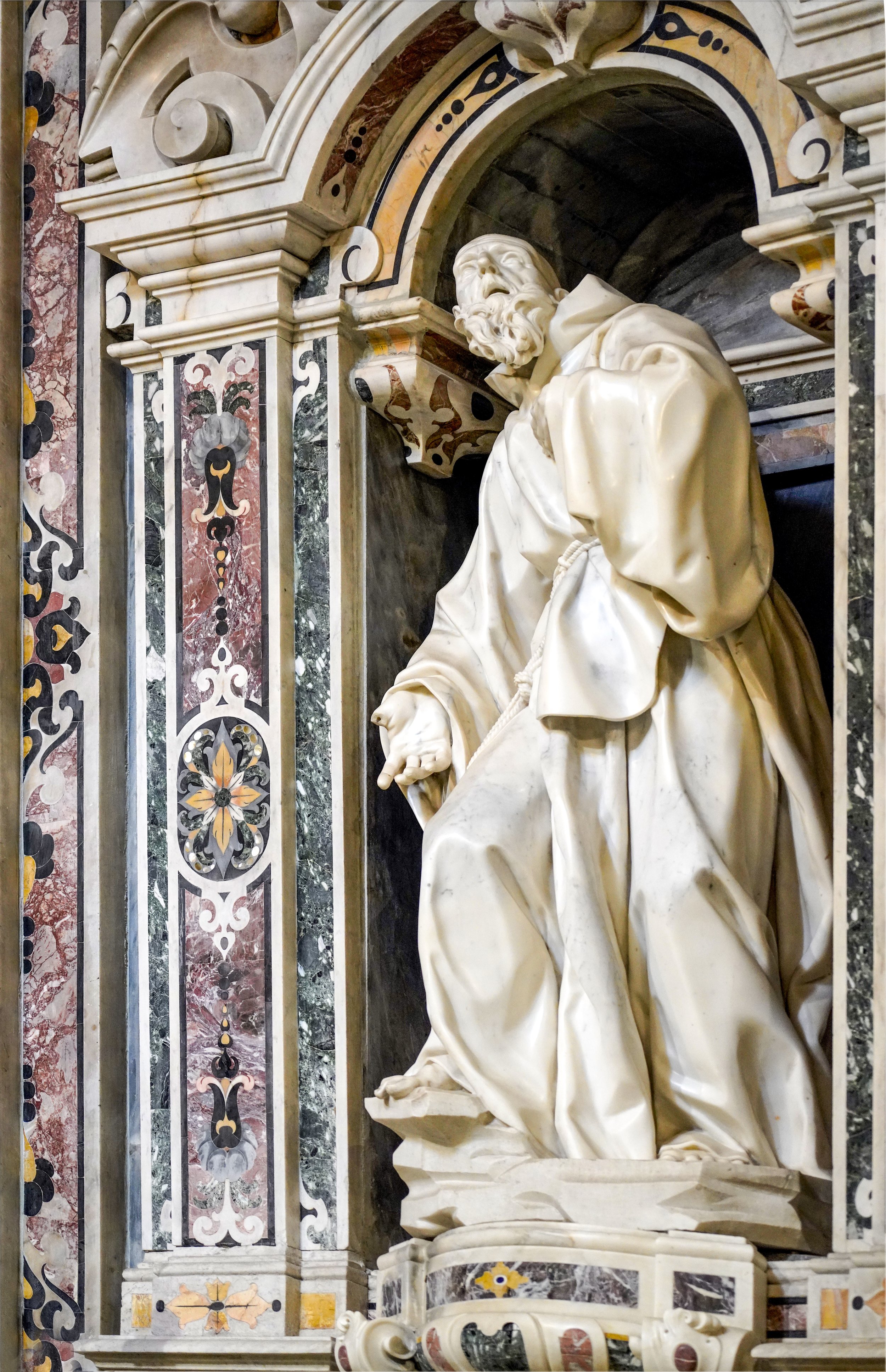
Saint Paul was a Christian apostle who spread the teachings of Jesus in the first-century world, having first persecuted Christians, believing that they had broken away from their Jewish traditions. Paul converted to Christianity after experiencing a vision of Christ on his way to Damascus and eventually became convinced that fellowship with the risen Jesus Christ, not the observance of the Law, was all that was needed to receive God’s promise of salvation (Galatians 1:11–12; 3:1–5). Paul founded several Christian communities in Asia Minor and Europe from the mid-40s to the mid-50s AD. His epistles (letters) have had enormous influence on Christian theology, especially on the relationship between God the Father and Jesus, and on the mystical human relationship with the divine.

St. Francis of Assisi, (born 1181/82, Assisi, duchy of Spoleto [Italy]—died October 3, 1226, Assisi; canonized July 16, 1228; feast day October 4), founder of the Franciscan orders of the Friars Minor (Ordo Fratrum Minorum), the women’s Order of St. Clare (the Poor Clares), and the lay Third Order. He was also a leader of the movement of evangelical poverty in the early 13th century. His evangelical zeal, consecration to poverty, charity, and personal charisma drew thousands of followers. Francis’s devotion to the human Jesus and his desire to follow Jesus’ example reflected and reinforced important developments in medieval spirituality.
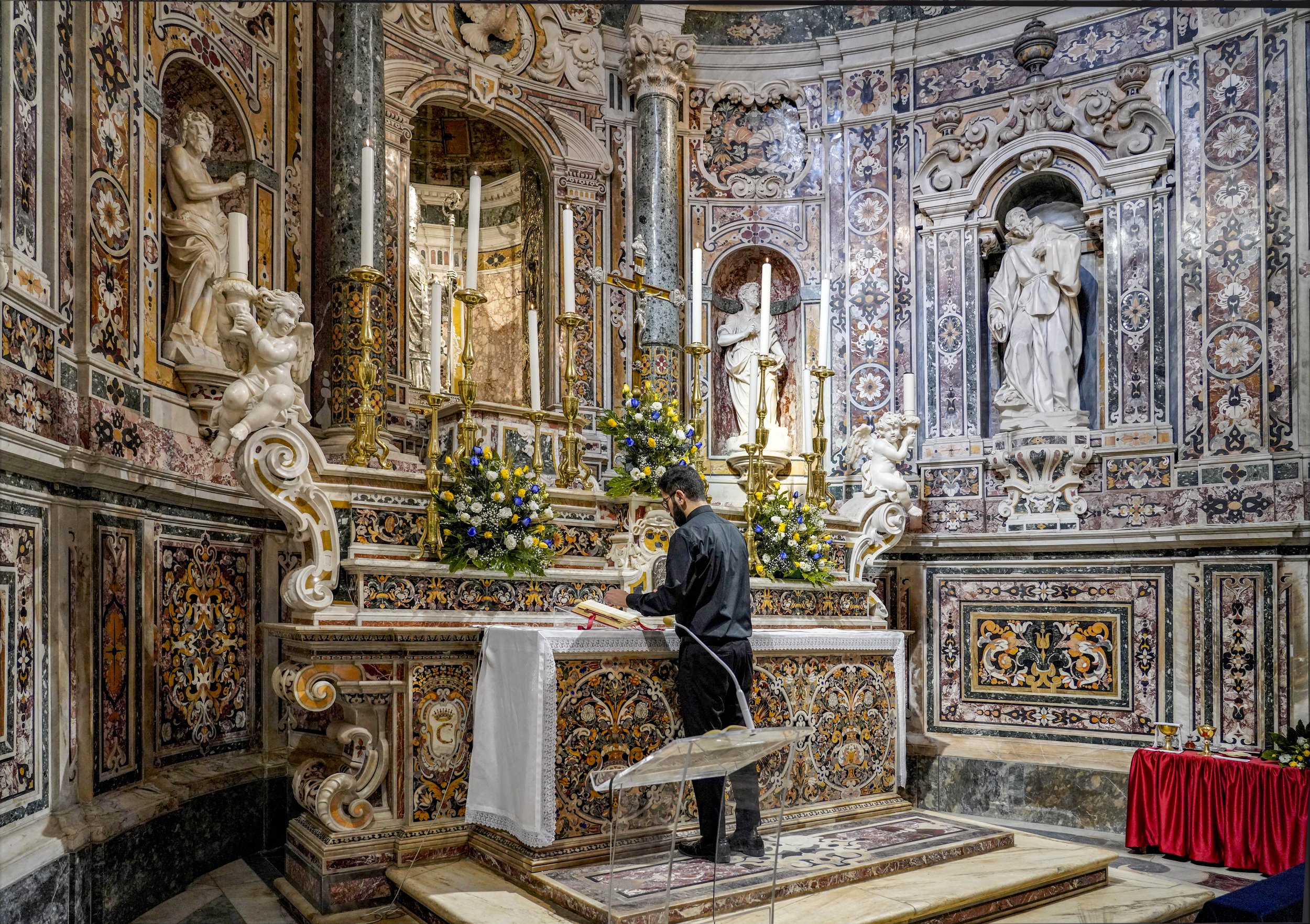
The Chapel’s architect was Cosimo Fanzago (Clusone, 1591 - Naples, 1678), and his design was described as a "perfect synthesis of architecture, sculpture and pictorial decoration and a typical expression of that religious triumphalism inspiring much artistic production of the seventeenth century." Giovanni Lombardelli, a marble worker from Carrara, who was already present in Naples in 1637 among the members of the Guild of marble workers, was responsible for the construction of the high altar. In addition, Lombardelli himself proceeded to cover the walls of the Chapel with committed marble.

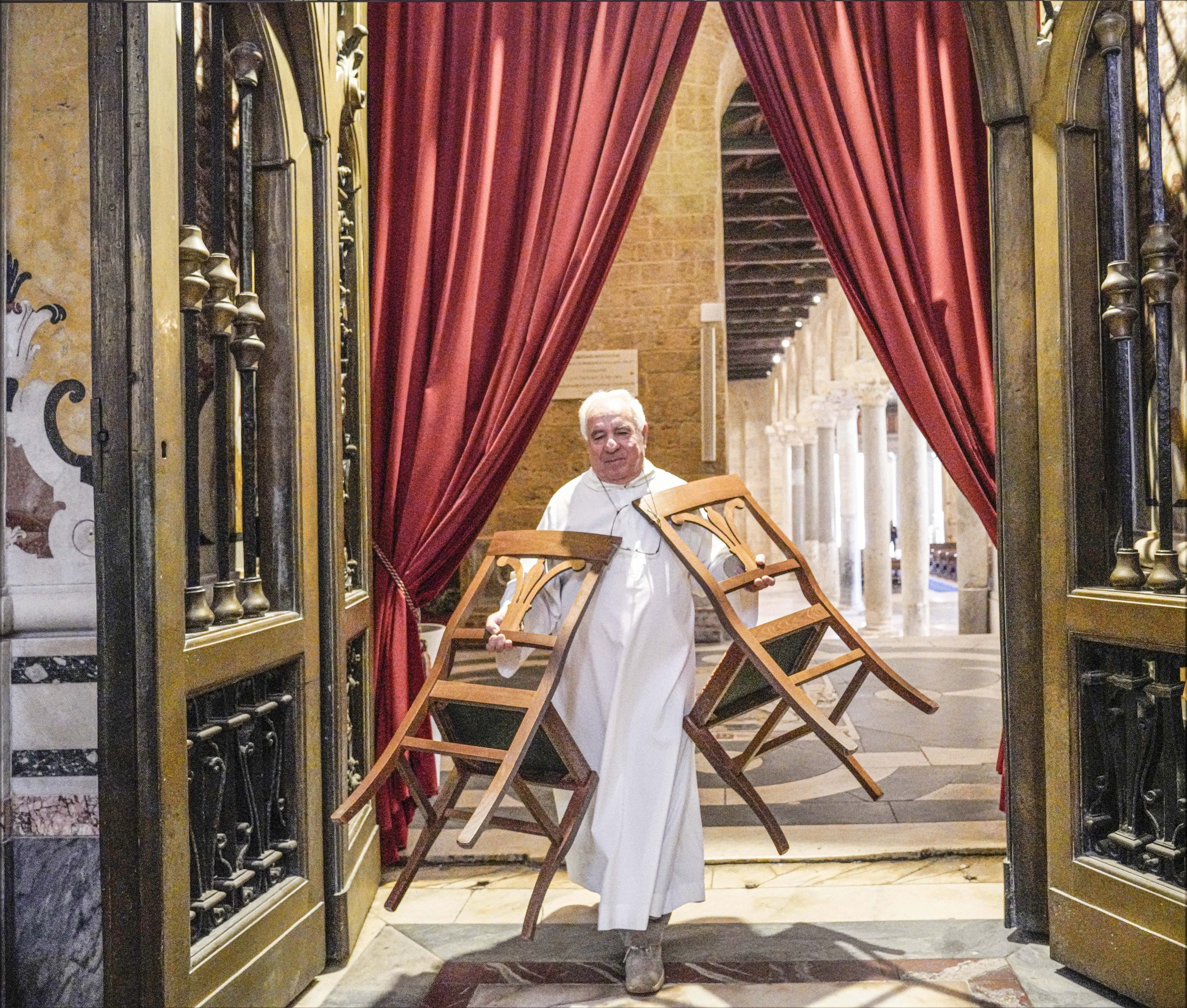
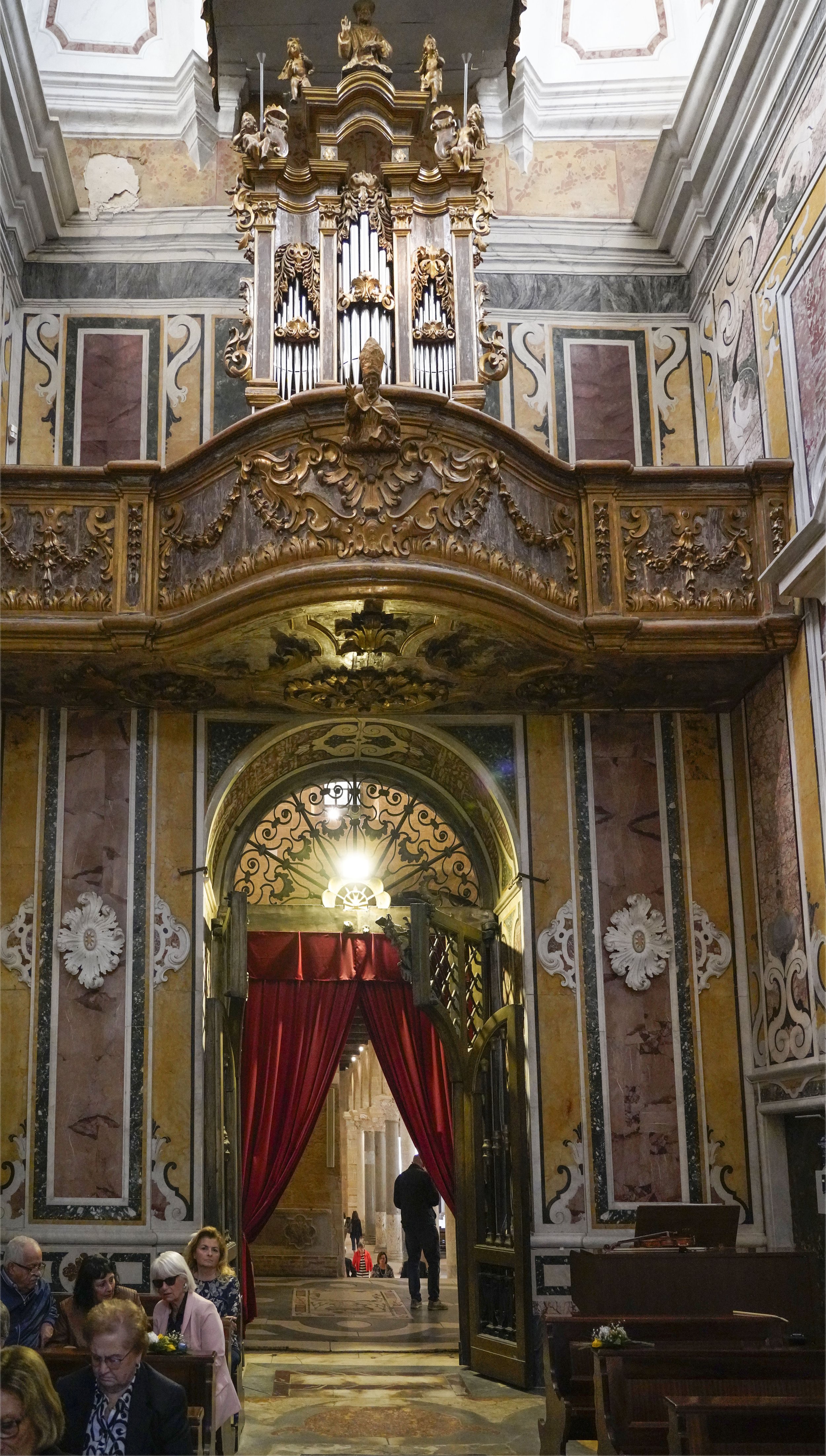
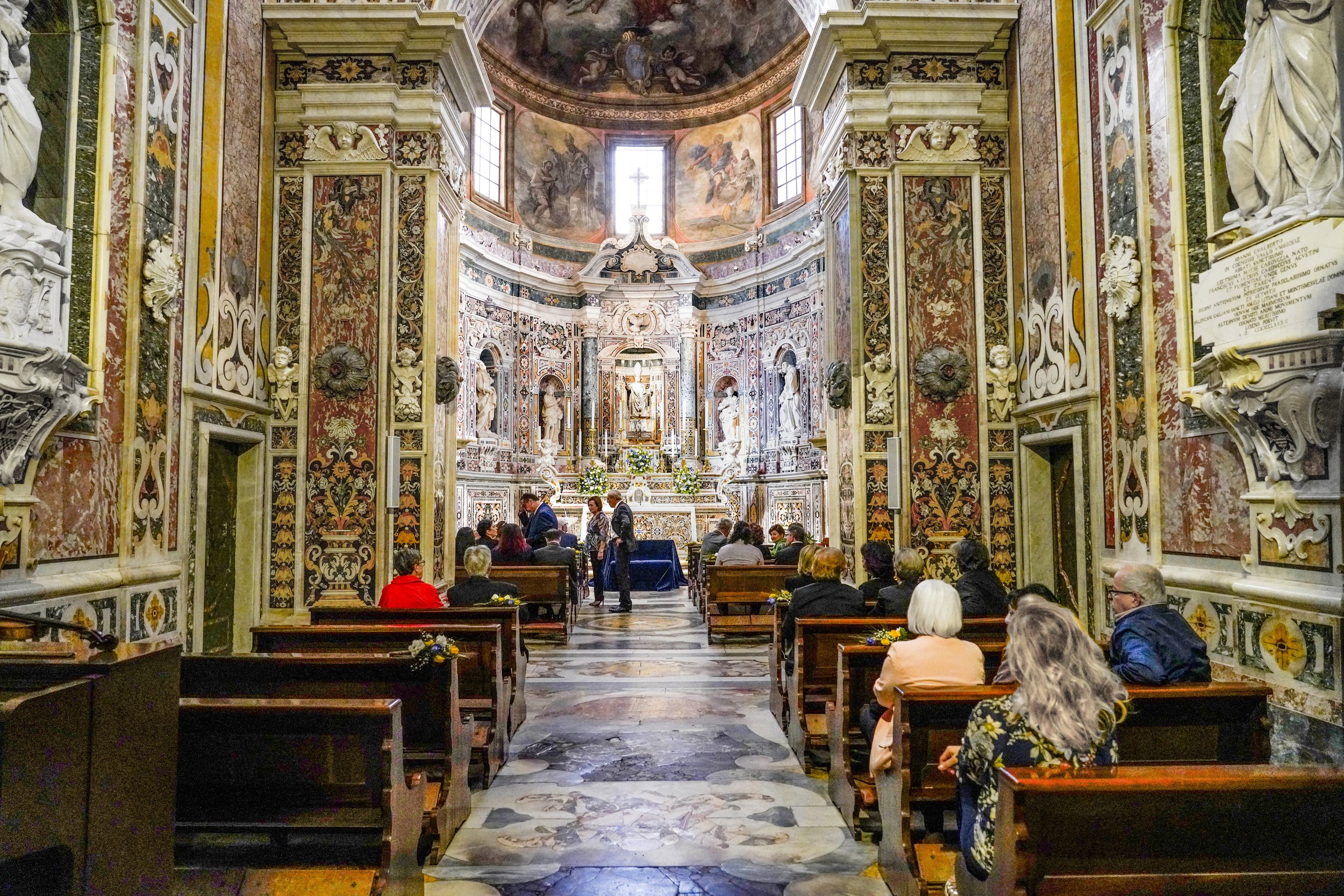
The Cappellone di San Cataldo is accessed through a vestibule of quadrangular shape, originally a 16th-century chapel, and the Cappellone remains unique in Apulia for the marble decoration. As with the Chapel, the vestibule is decorated with marble and statues of various saints.
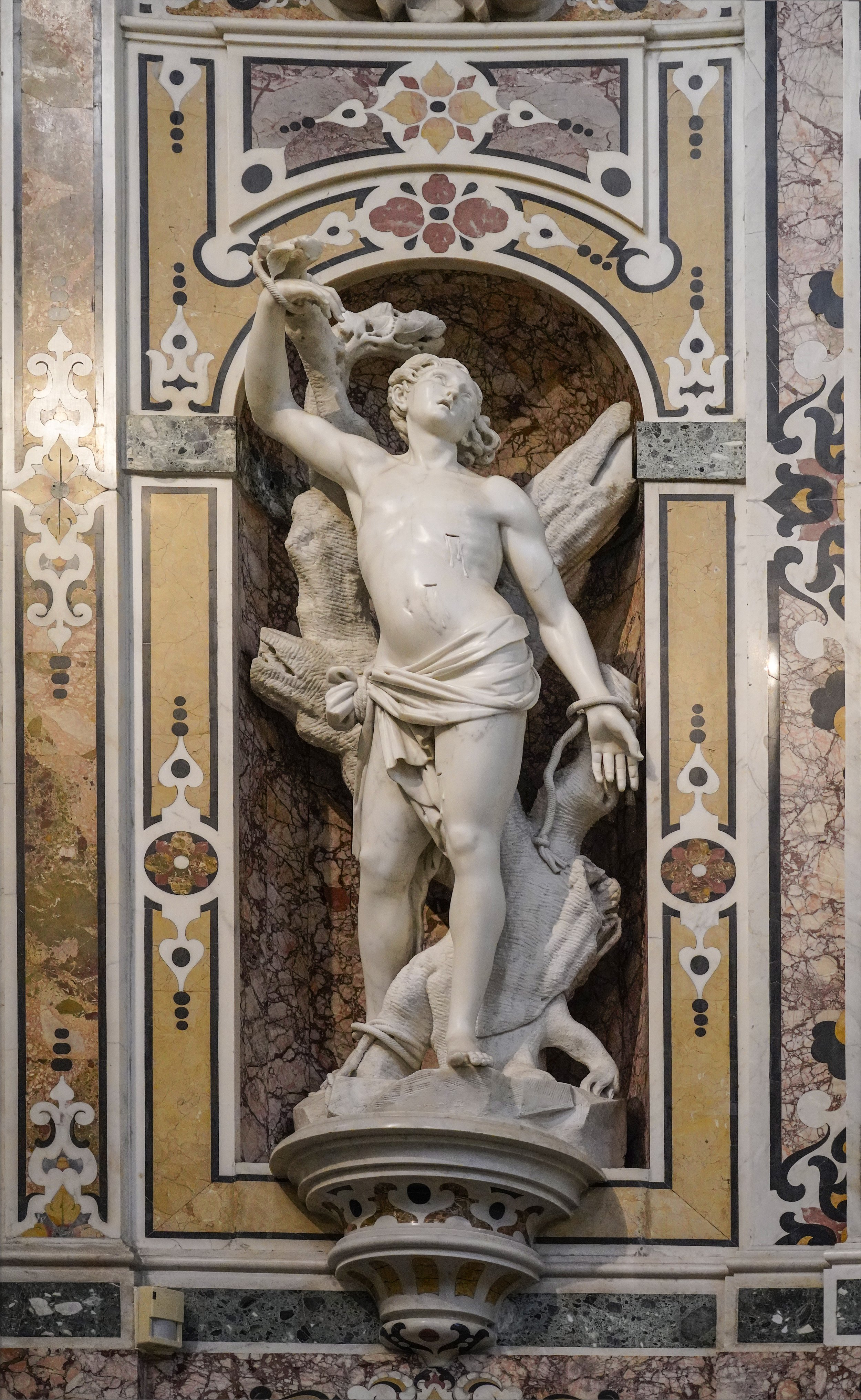
According to ancient traditions collected by Jacobus de Voragine in his Legenda Aurea (1264), Saint Sebastian was a 3rd century Roman soldier who served in the Praetorian Guard, one of the most prestigious units of the imperial army, at the time when the emperor Diocletian was actively persecuting Christians. Sebastian’s beliefs urged him to encourage others to die rather than renounce their faith, and that was precisely what Sebastian himself did when he was pressed to apostatize. He was tortured, bound naked to a tree and shot with arrows.
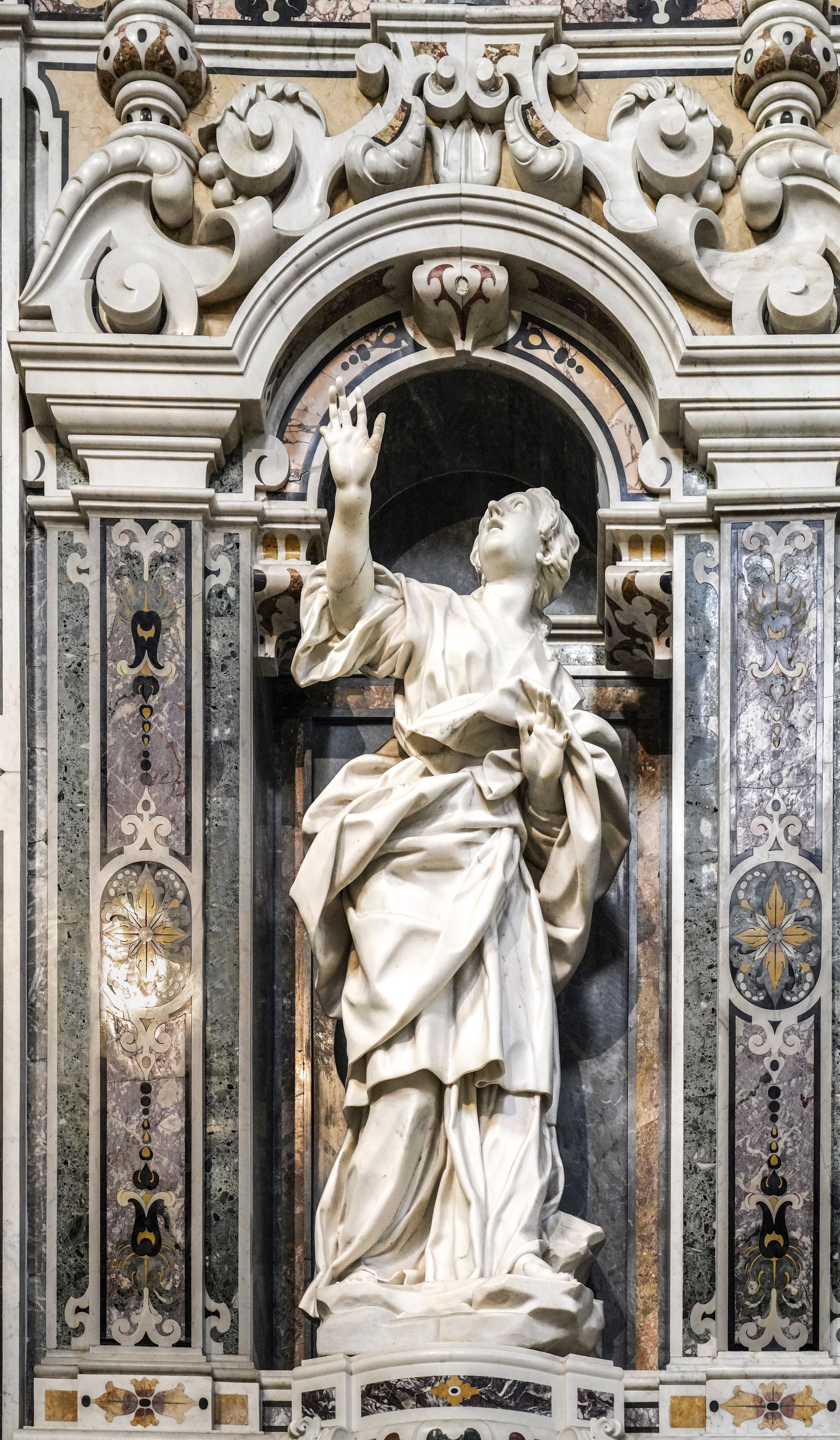
St. Irene is the patron of girls, peace and several municipalities in Italy. Sources say Irene was born in Lecce, Italy to the Roman Emperor Licinius. Her pagan father, fearful of her beauty, locked her away in a tower at the age of six. She found God in her imprisonment, and He taught her the Christian doctrine. Baptized by Saint Timothy, she destroyed the idols that her father gave her to worship. Irene's father, angered by her actions, ordered for her to be tied to a horse and dragged to death. She survived the dragging and the horse turned on her father and bit him. His injury festered, leading to his death, but Irene prayed over his body and brought him back to life. In one rendition of her legend, Irene converted her father to Christianity and the two become evangelists. They convert thousands of pagans, until a Governor named "Ampelio" captured and imprisoned the pair. Ampelio attempted to torture Irene until she renounced her faith, and when she refused, he had her beheaded around 330 A.D.

The lion is one of the four living creatures described by Saint Jerome (circa 340 to 420) as symbols of the four evangelists. Matthew is assigned as a human, Mark as a lion, Luke as a bull, and John as an eagle. The lion, that is well-known as symbol of power, pride, magnificence, nobility and courage, was associated to Mark because it emphasizes the Resurrection power, the majesty and the regality of Christ and the characteristics of his Gospel. Mark in fact, in order to describe John the Baptist who announces to the men the arrival of Jesus, began his book with the citation “the voice of one that shouts in the desert” that makes people imagine to the roar of a lion.
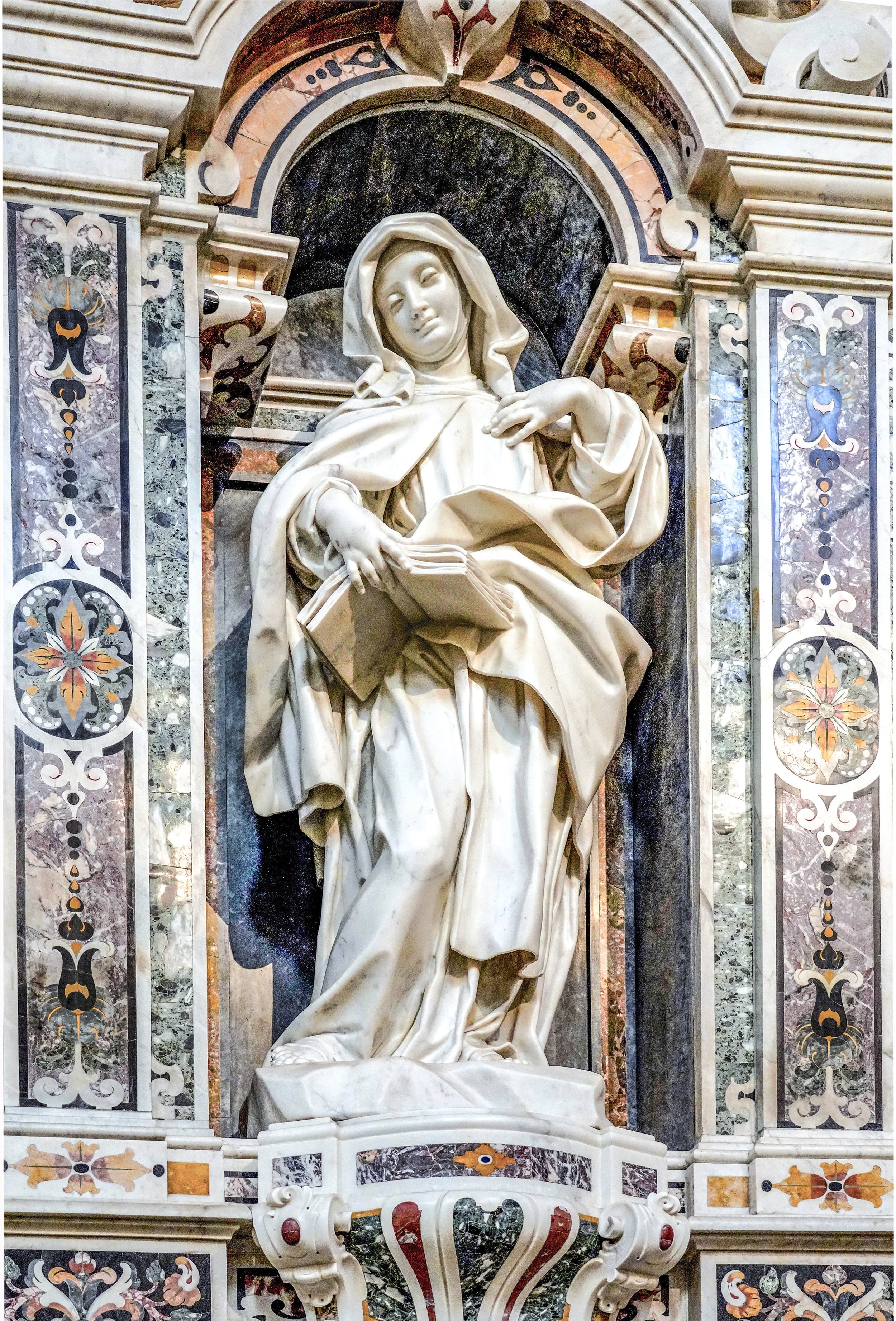
Teresa of Ávila (28 March 1515 – 4 or 15 October 1582) was a Carmelite nun and prominent Spanish mystic and religious reformer. Active during the Counter-Reformation, Teresa became the central figure of a movement of spiritual and monastic renewal, reforming the Carmelite Orders of both women and men. Teresa claimed she was having religious visions and described what is known as the transverberation, in which a seraph drove the fiery point of a golden lance repeatedly through her heart, causing her an ineffable spiritual and bodily pain. The account of this vision was the inspiration for one of Gian Lorenzo Bernini's most famous works, the Ecstasy of Saint Teresa at Santa Maria della Vittoria in Rome.

In 1436, Francis of Paola (27 March 1416 – 2 April 1507) and two followers began a movement that would become the foundation of the Hermits of Saint Francis of Assisi, which would later be renamed as the Minim friars. Their name refers to their role as the "least of all the faithful". Humility was to be the hallmark of the brothers as it had been in Francis' personal life. Abstinence from meat and other animal products became a "fourth vow" of his religious order, along with the traditional vows of poverty, chastity and obedience. Unlike the majority of founders of men's religious orders, and like his patron saint, Francis was never ordained a priest.
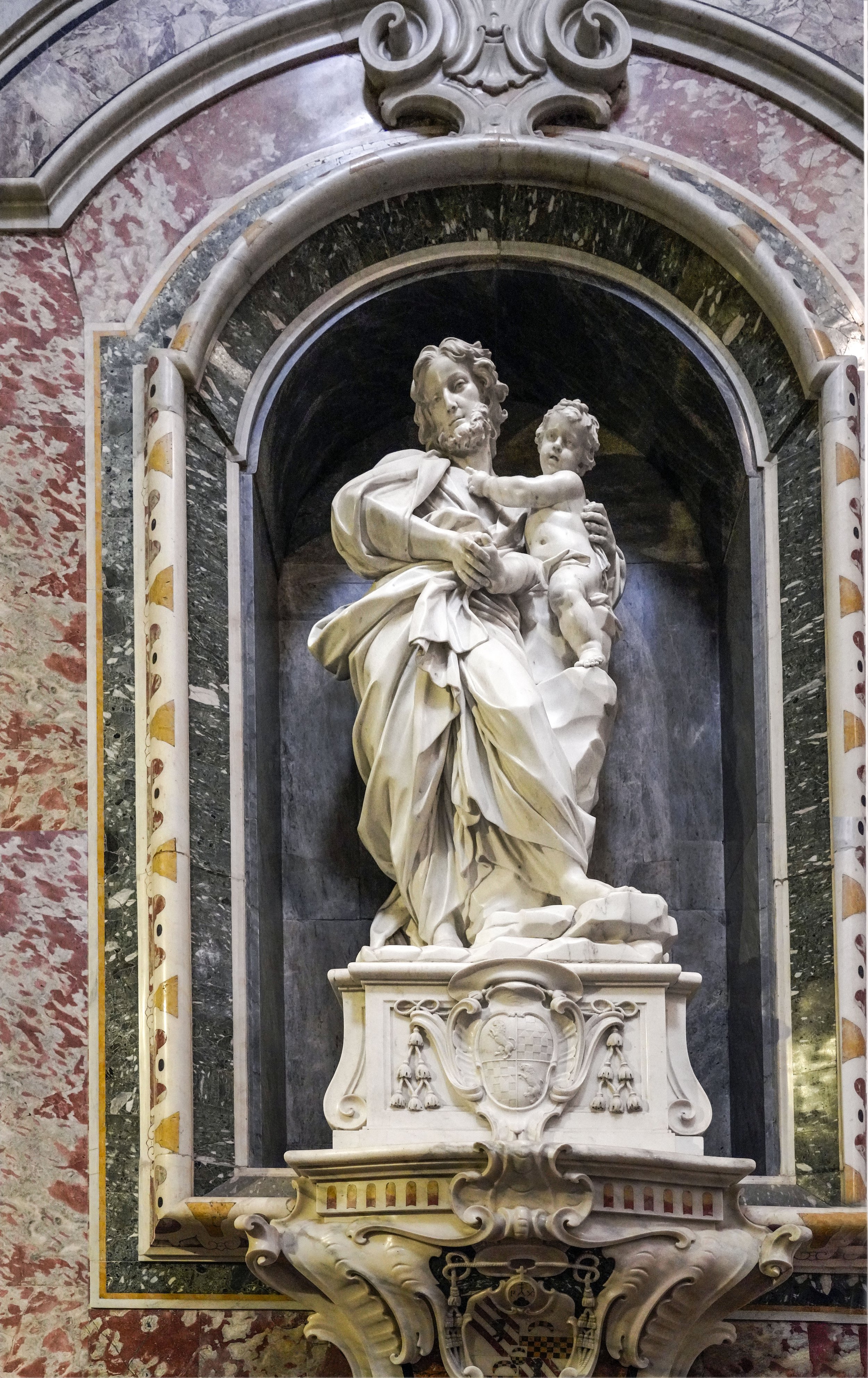
In 1778 the new archbishop of Taranto, the Neapolitan Giuseppe Capecelatro, was elected, and in 1790 he again approached Giuseppe Sanmartino for the creation of a St. Joseph, the putative father of Christ, to be inserted in the vestibule. St. Joseph is one of Giuseppe Sanmartino’s last works, considering that he would die in 1793. There remained four other vacant niches, which it was planned to fill with statues of St. John the Baptist and St. Peter attributed to the Renaissance sculptor Giovanni Nola, while those of St. Sebastian and St. Mark were sculpted by the Neapolitan Giuseppe Pagano in 1804.



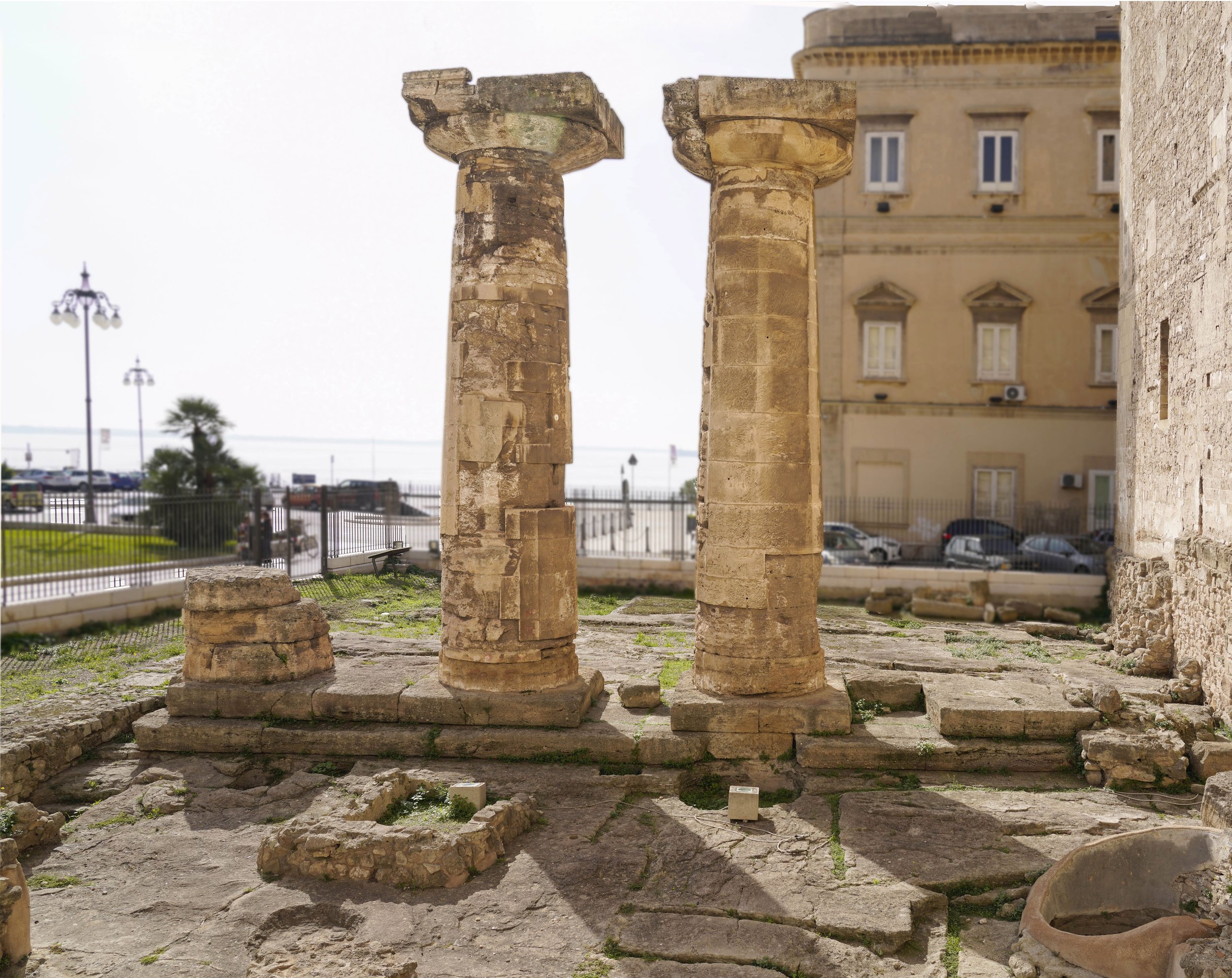
The two columns are the remains of The Temple of Poseidon (or the Doric Temple), a peripteral (single row of pillars on all sides) Doric temple of Magna Graecia located in the modern Piazza Castello, situated in front of the castle and the sea in the historic center of Taranto. It is the oldest temple in Magna Graecia and the only Greek religious structure still visible in the old town of Taranto. The temple dates to the first quarter of the 6th century BC. It fell into ruin in the Middle Ages and parts of it were reused in the construction of other buildings.
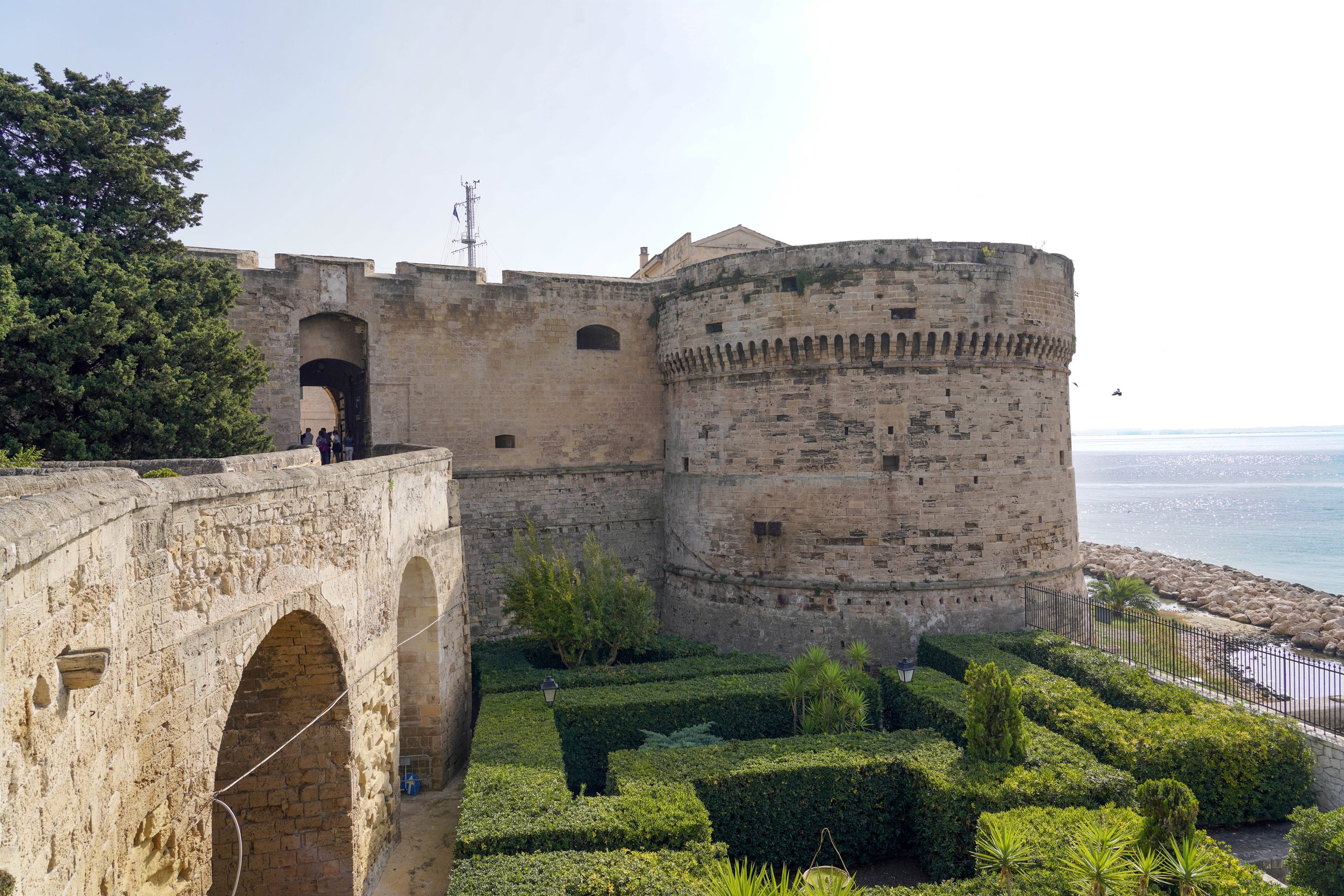
The Castello Aragonese is a fortification in Taranto, Italy. Officially called the Castel San Angelo, it was built on the site of older fortifications dating to Greek occupation in the 3rd and 4th centuries BC. and a former Norman castle, based on a Byzantine one used to protect the area against the Saracen attacks. In 1481 the low ground in front of the fortification site was excavated to allow the passage of boats, and to create a moated defensive position. The present fortress was built for the then-king of Naples, Ferdinand II of Aragon in 1496 to reinforce the naturally low-lying link between the old town of Taranto on a peninsula, and the mainland.

The seven-towered fortress repelled an Ottoman attack in 1594, but it quickly lost its military significance with the advent of artillery. It was converted to an artillery platform and many interior spaces were filled in to provide a stable base for the guns. In 1707 under the Habsburgs it was converted to a prison however during the Napoleonic period it reverted to its original function as a military fortress. Since 1883 the fort has been occupied by the Italian Navy.
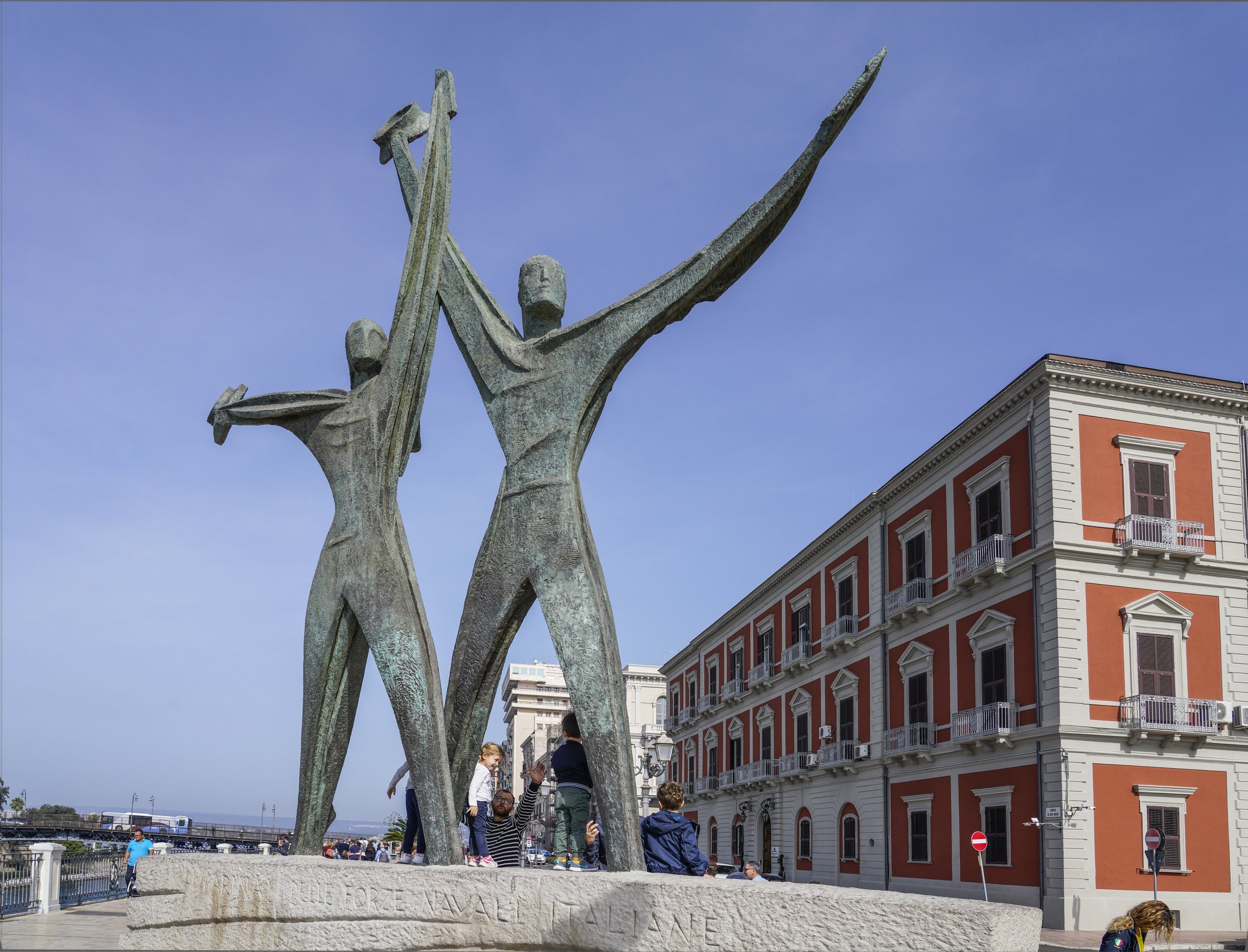
The Monument to the Sailor is dedicated to all sailors of the Italian Navy. This 16 ft high metal work (without the pedestal) depicts a couple of sailors raising a hat, typical gesture used to symbolically greet the arrival or the departure of the ships passing through the Navigable Canal that connects the Great Sea with the Small Sea. The bay of Mar Grande (“The Big Sea”) was the scene of the tragic battle of the “Taranto Night” (11-12 November 1940), during which the Italian Navy suffered serious losses in ships and men due to a massive attack by the British Royal Navy. The victory of the British fleet dealt an important blow to the Italian team, and above all, to the military reputation of the fascist regime.
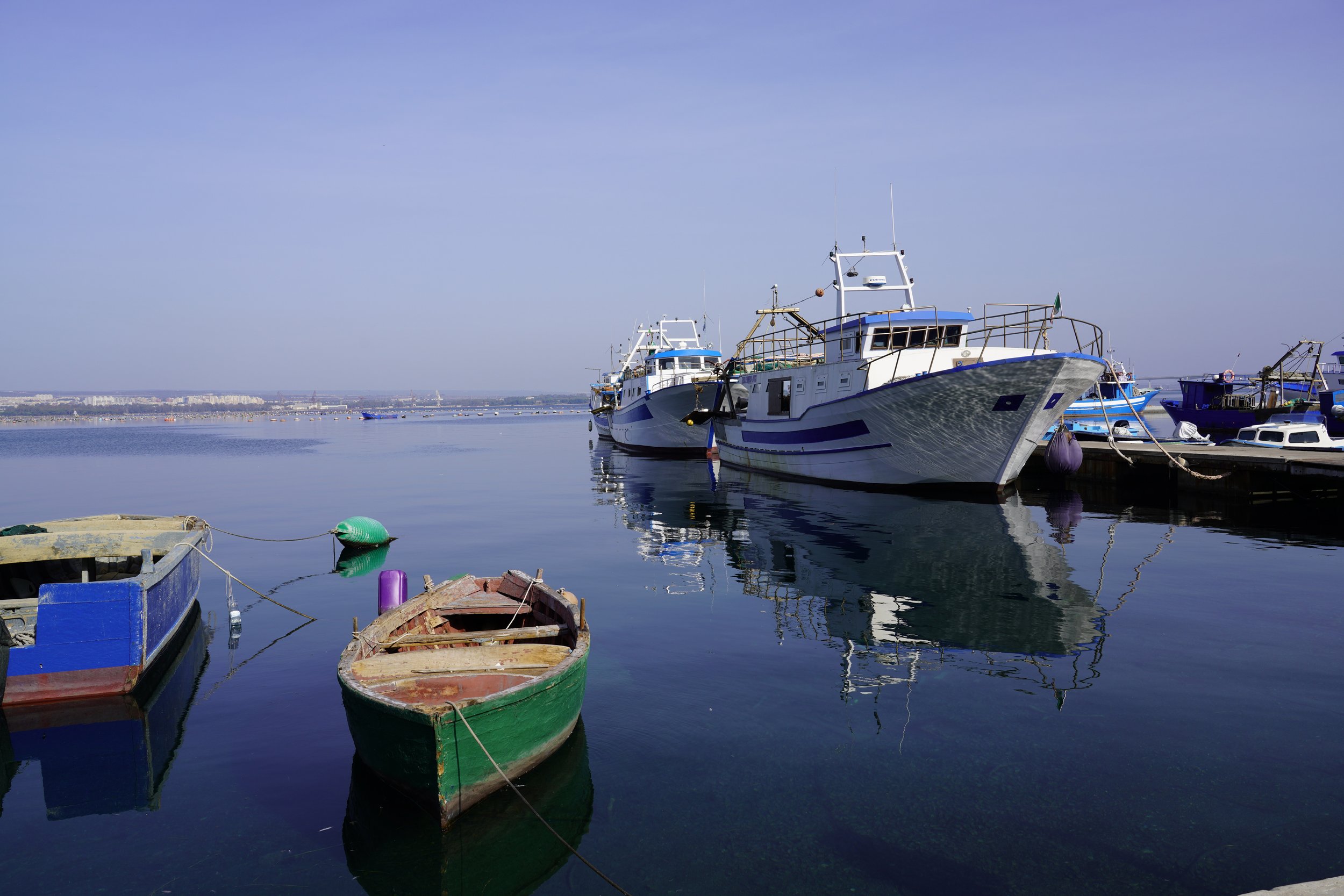
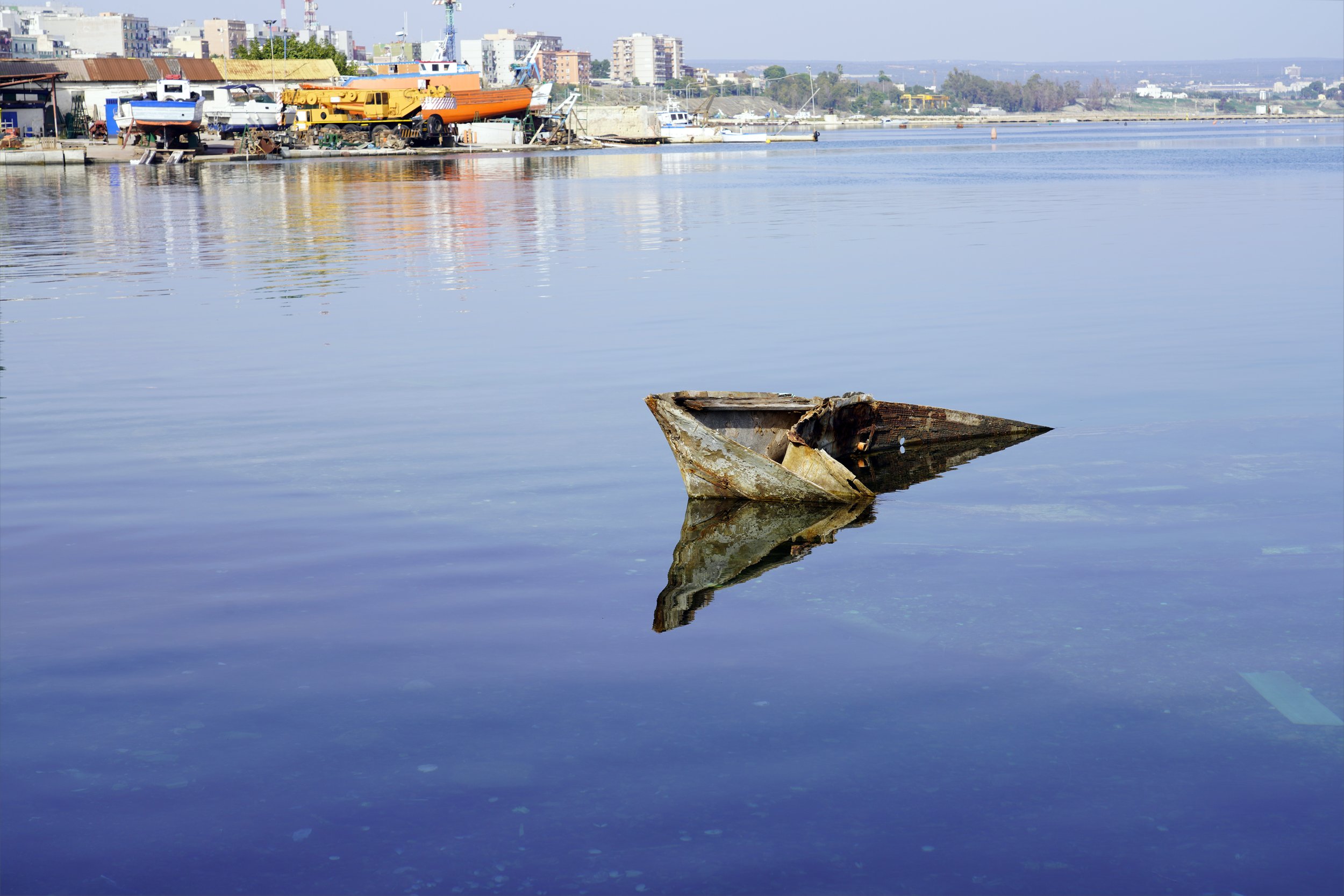
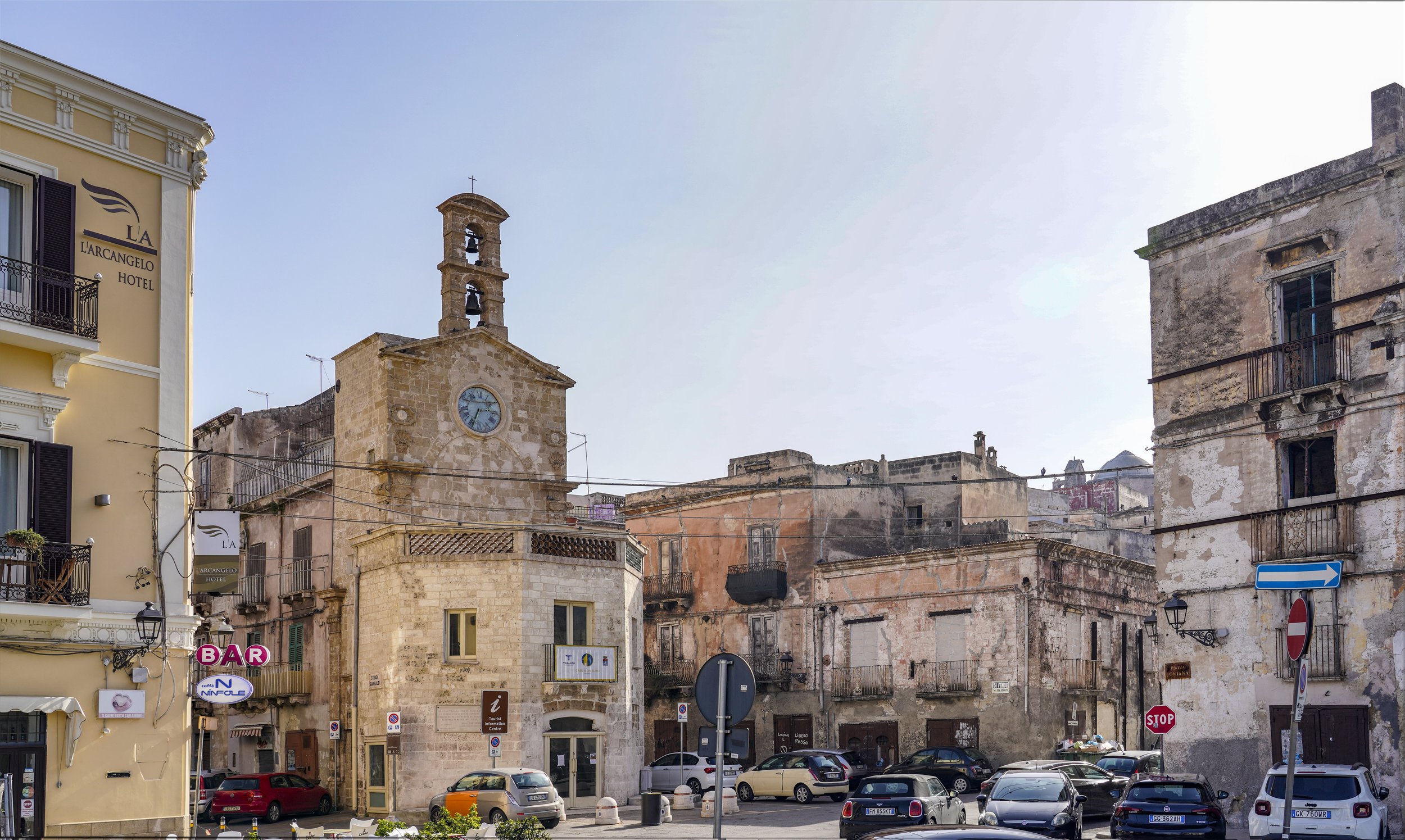
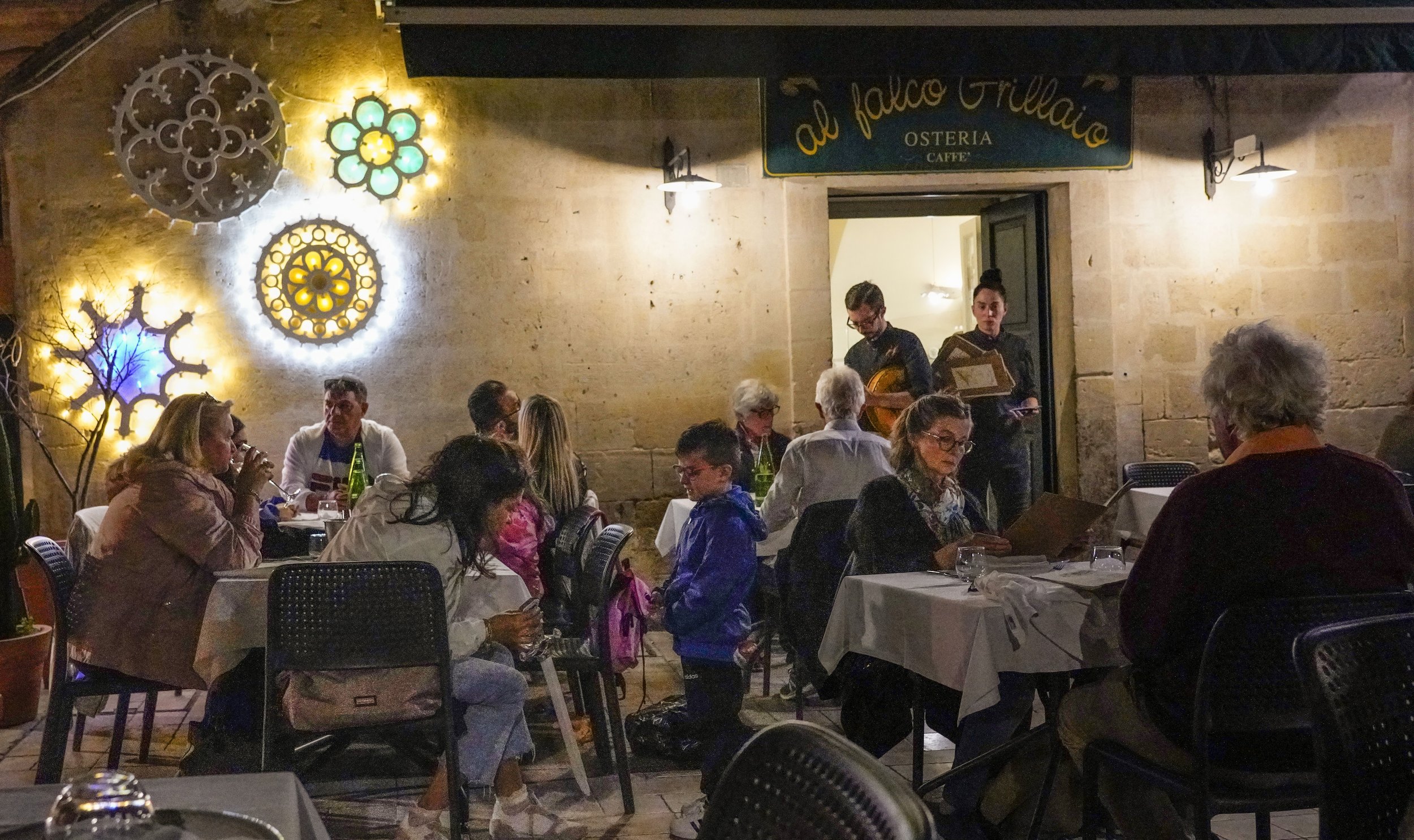
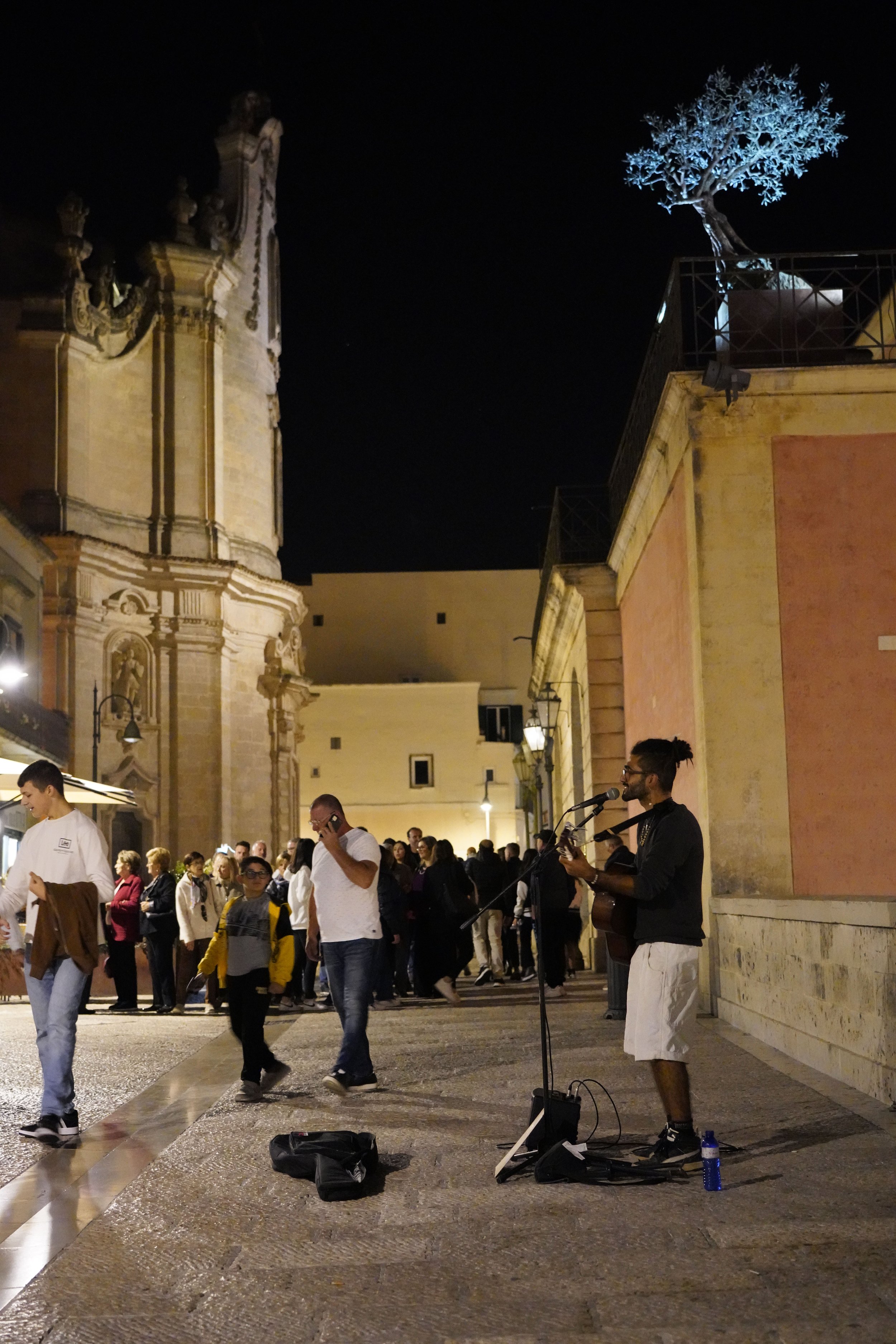
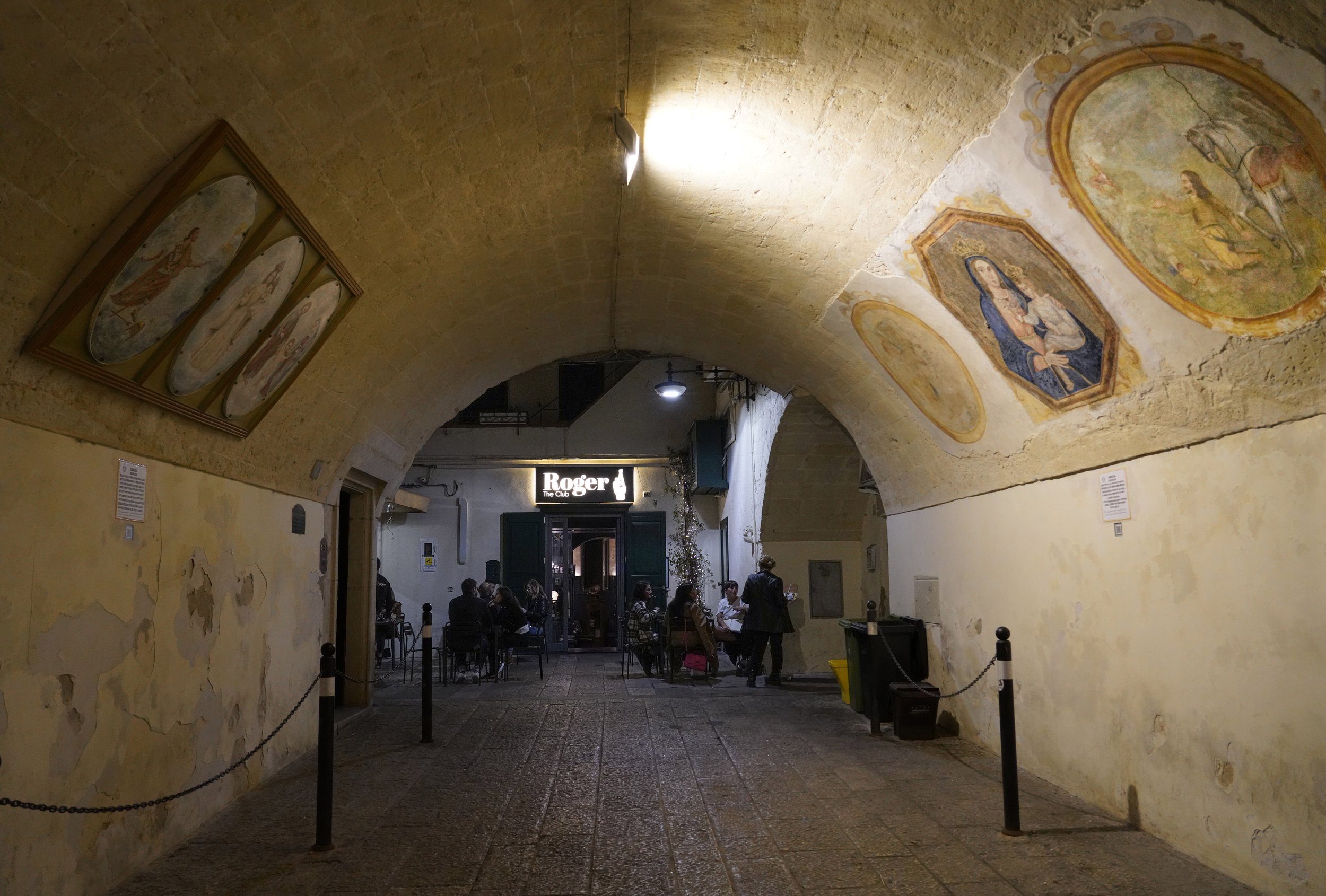
After dinner walking along the Via Domenico Ridola a cave-like corridor appears leading to the Roger Restaurant. The walls are decorated with religious art, as seen in other Italian cities. The first tondo on the right contained the image of St. Eustace kneeling with his horse standing behind him. In 994, Matera was occupied by the Saracens, the people invoked the Saint and the town was freed from the invaders. Since then, Saint Eustace became the patron saint of the town.
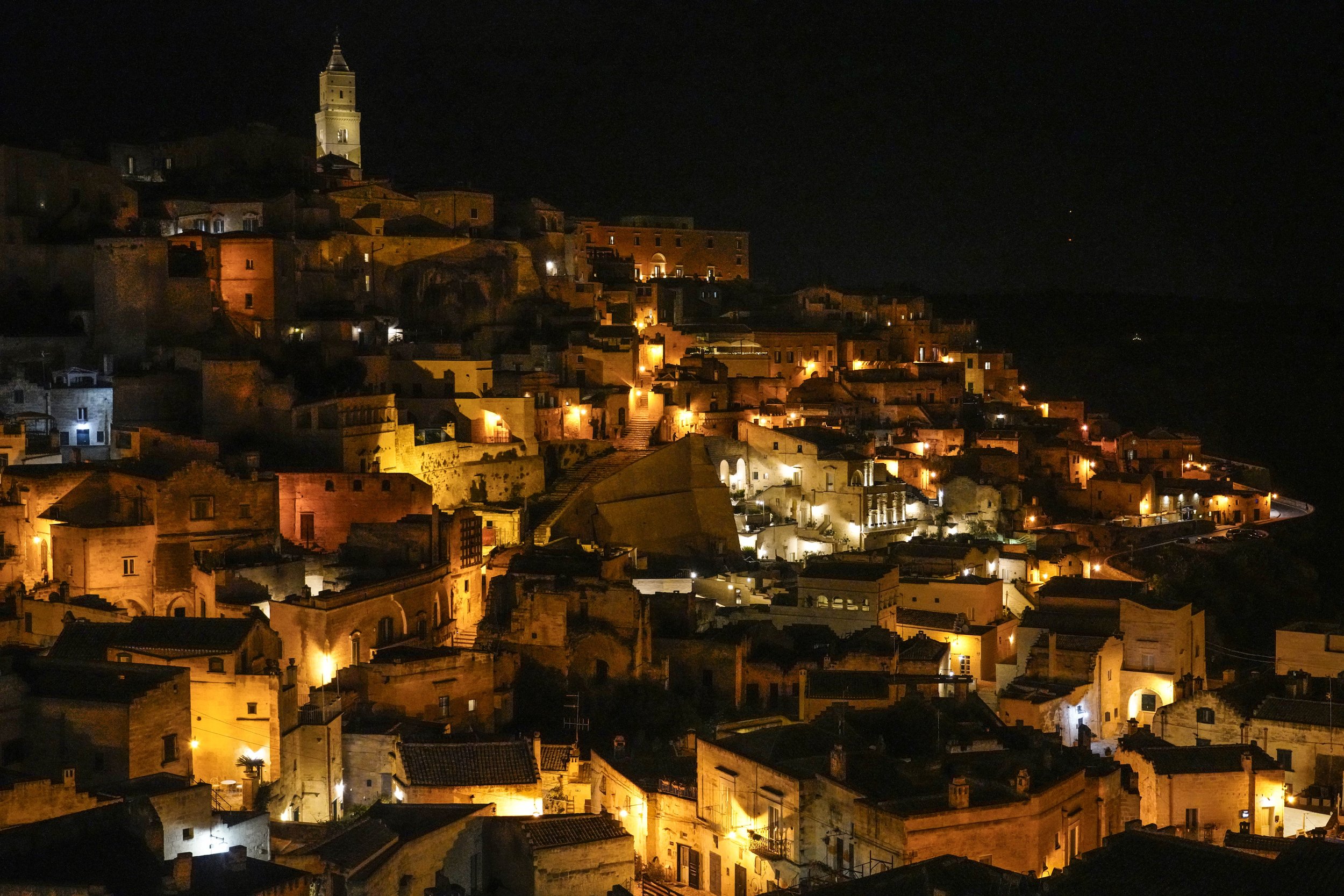
Matera basically lies on two separate Sassi (Rocks), two hills riddled with caves. For 10.000 years, people lived in these caves. Matera is in fact the third most ancient city in the world, after Jericho and Aleppo.

The Church of Purgatory (Chiesa del Purgatorio) is a Baroque style building of worship designed by Giuseppe Fatone and constructed by Vitoantonio Buonvino and Bartolomeo Martemucci between 1725 and 1747 with funding from the Confraternity of Purgatory, from which it takes its name. Russian Orthodox ceremonies are held in the Church every Friday.

The façade of the Church of Purgatory is characterized by a series of decorations concerning the theme of death and redemption, from the angels found in the upper part to the skulls represented in the wooden portal. The Latin phrase over the main entrance states, “Take pity on me, at least you my friends.”
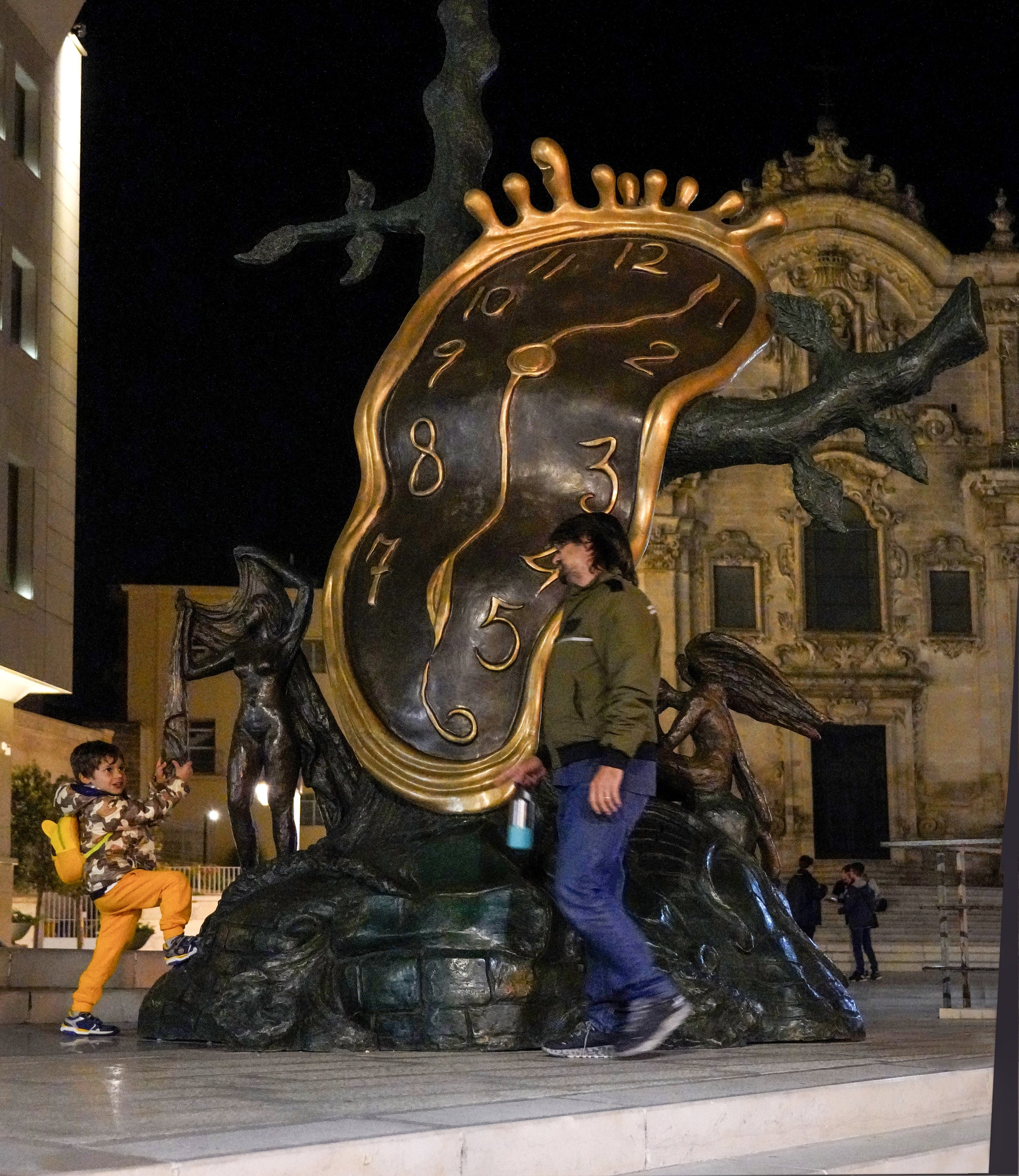
The Nobility of Time is one of the works of the Salvador Dali Persistence of Opposites exhibit in Matera. For Dalí Time is an inconstant constant, represented in its softness. It is now impossible, with the scientific discoveries of the twentieth century, to interpret time as something fixed. Relativity permeates everything, carrying within itself a fear of death, of the days passing by, and all the anxieties of the modern man. Dalí is submerged by it: through his paranoid-critical method, he plumbs and knows every turmoil of his unconscious, thus managing to transfer to his artworks that "paranoia" which is a chronic disease for him.
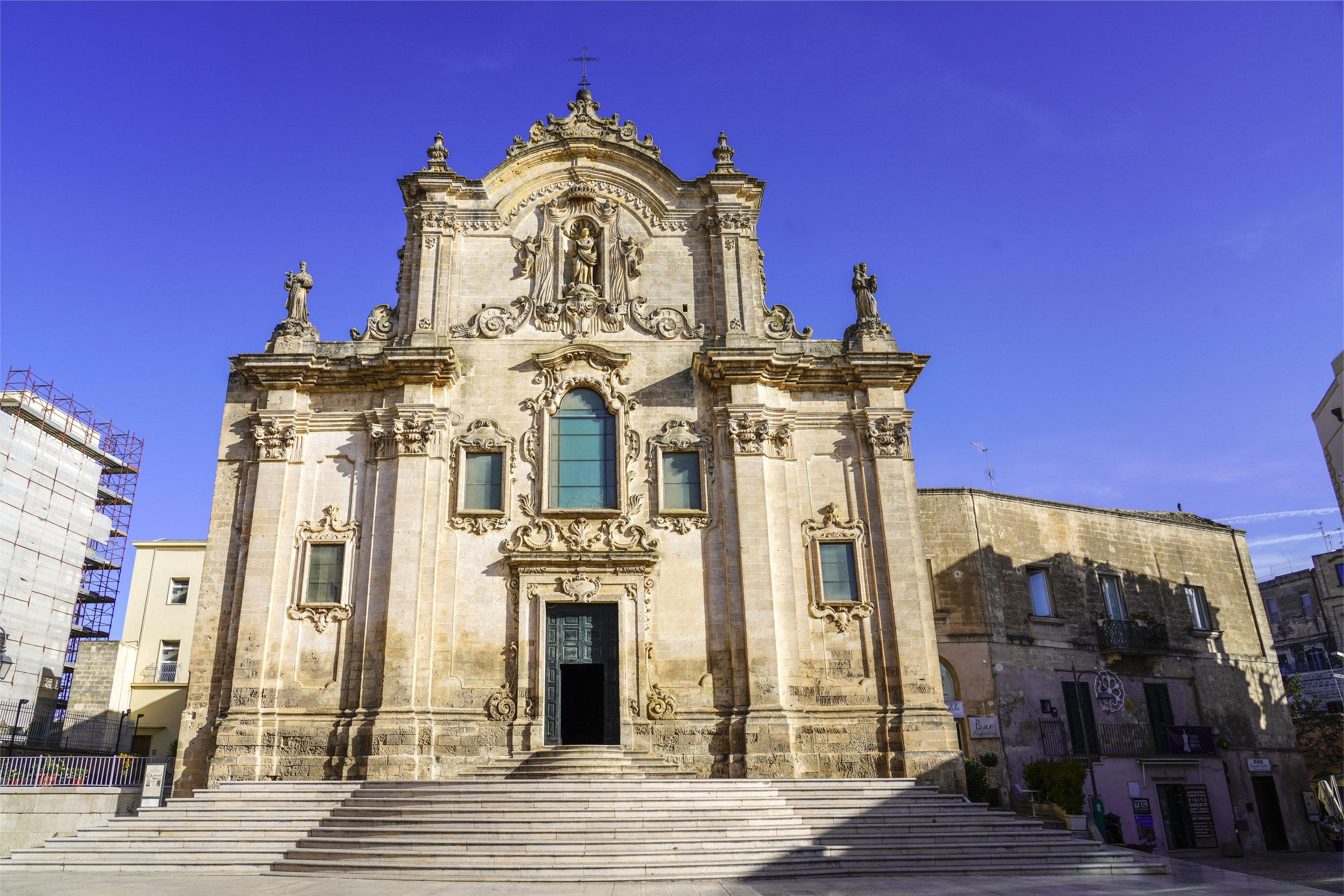
The Church of San Francesco d’Assisi is a church built in Baroque style and dedicated to Saint Francis of Assisi, after the saint visited Matera in 1218. The current church was built in the first half of the 13th century on the place of a subterranean church dedicated to Saints Peter and Paul. The church was enlarged and transformed between the 15th and 18th centuries. The Baroque facade houses three statues in the upper part, with the Virgin Mary in the center, and Saint Francis of Assisi and Saint Anthony of Padua on the sides.
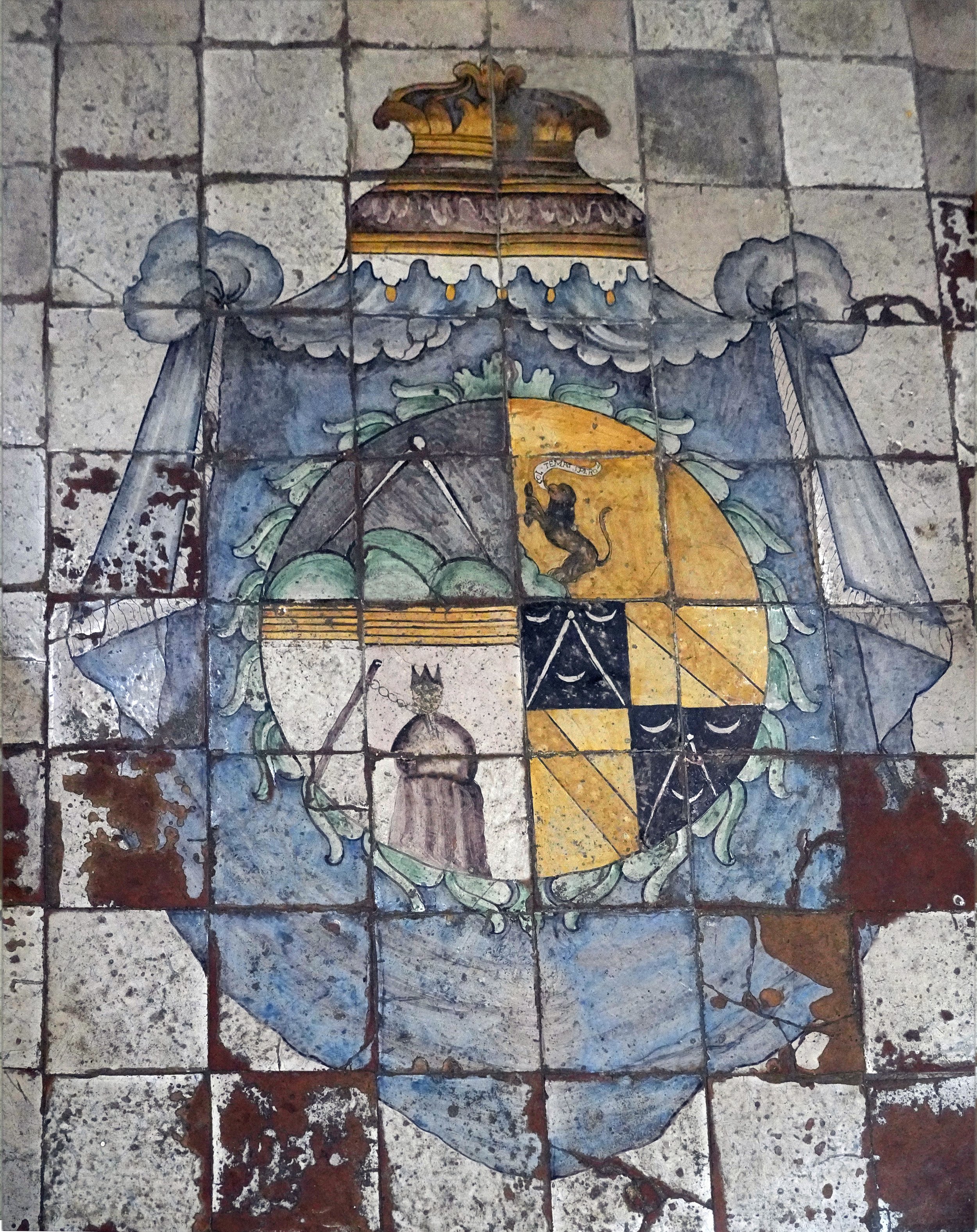
The lion in the upper left quadrant of the coat of arms says, ”Col tempore spero,” “I hope with time.”
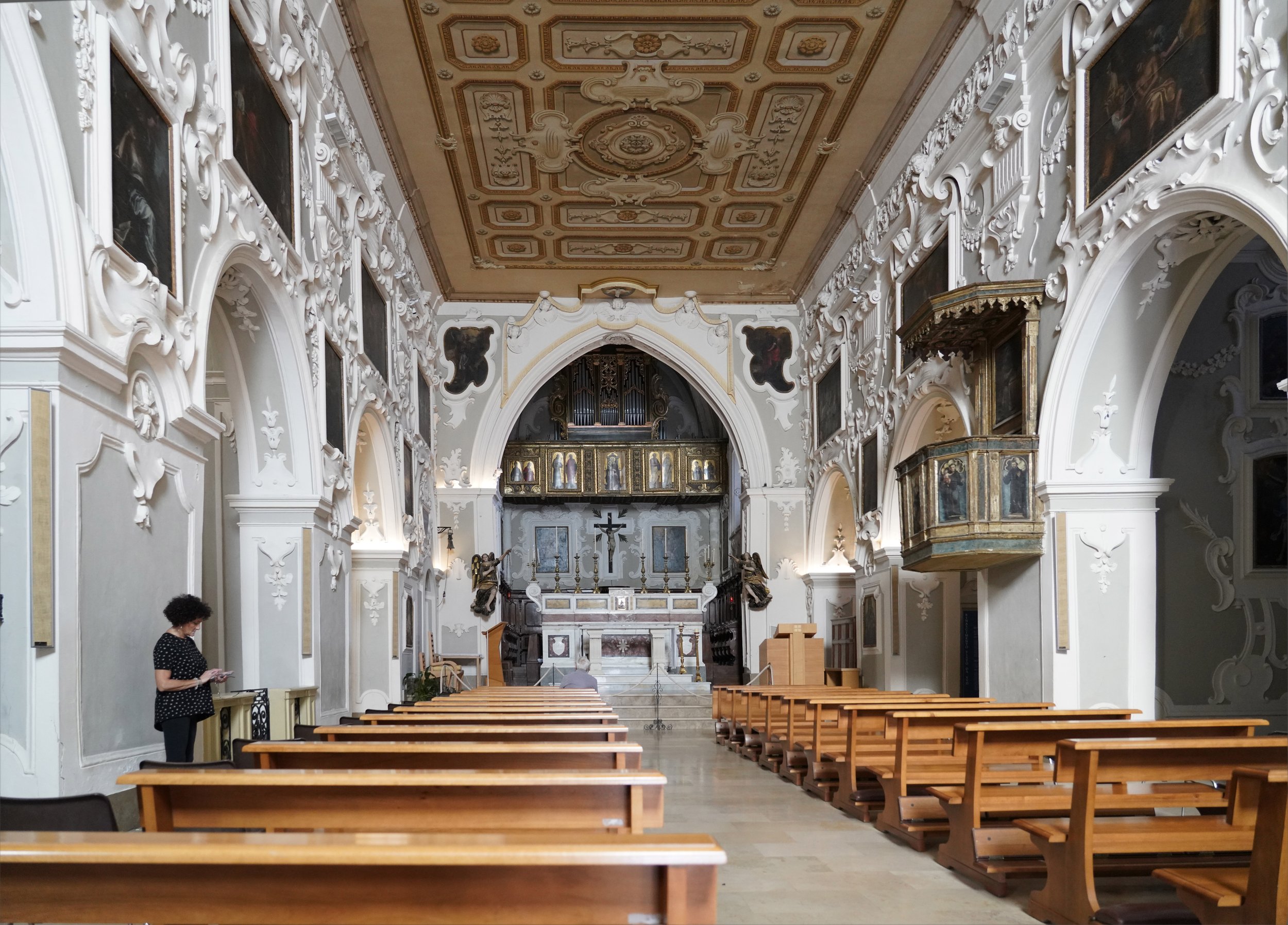
The interior of Saint Francis of Assisi Church consists of a single nave, with side chapels and a beautiful painted ceiling. The nave ends with the quadrangular apse, introduced by a pointed arch and covered with a cross vault.

Close to the back wall, behind the main altar, there is the choir, whose parapet is decorated by a 15th-century polyptych with nine tempera paintings on wood, attributed to Lazzaro Bastiani. Above, there is the pipe organ built by Fratelli Ruffatti (Ruffatti Brothers) in 1955 and modified by them in 1978, with electric transmission and with 22 registers on two manuals and pedal.
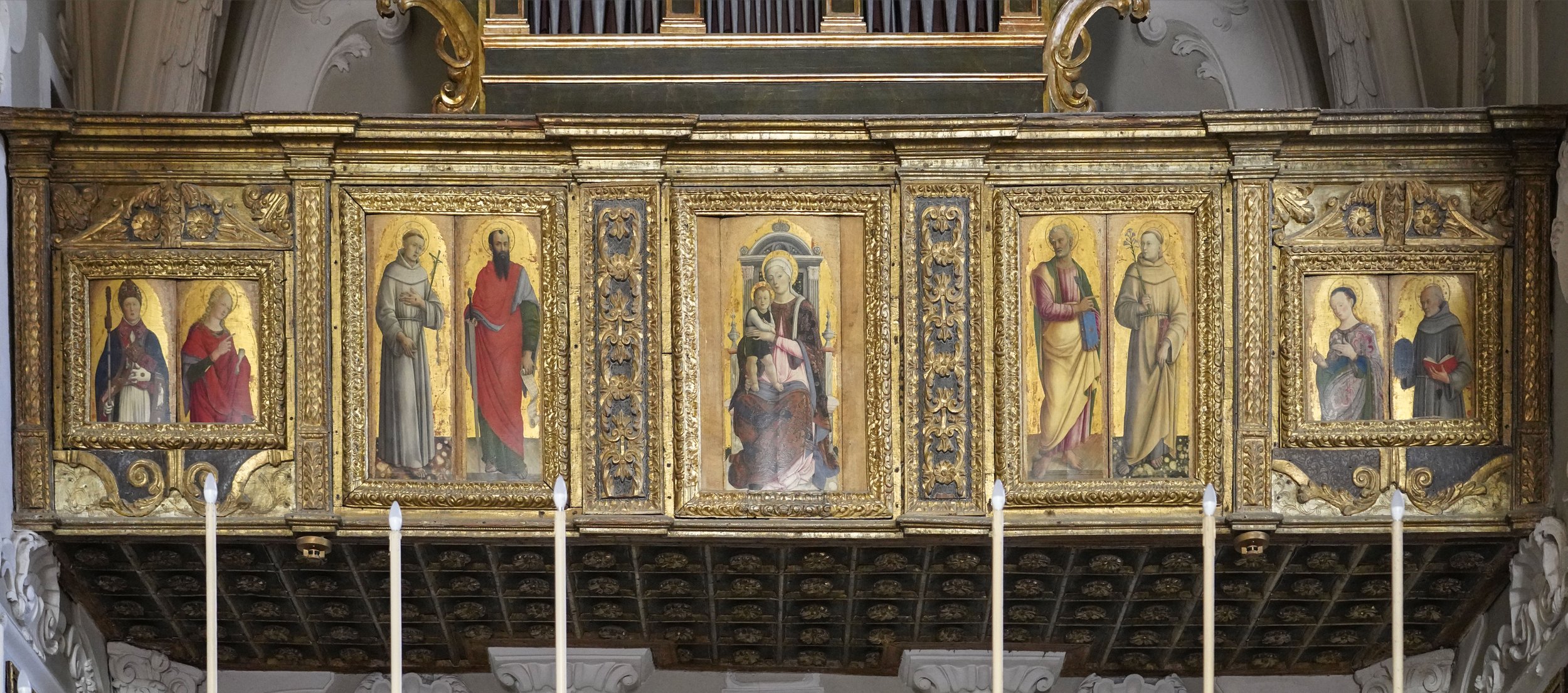
in the center of this 15th century polyptych is the Madonna enthroned with the Child and on the left San Pietro, San Francesco, Santa Caterina and Santa Elisabetta, on the right San Paolo, Sant’Antonio, San Bernardino and San Ludovico da Tolosa. Note the finesse of the features, the delicate features and the richness of details of the precious garments, which make it a work of unique value.
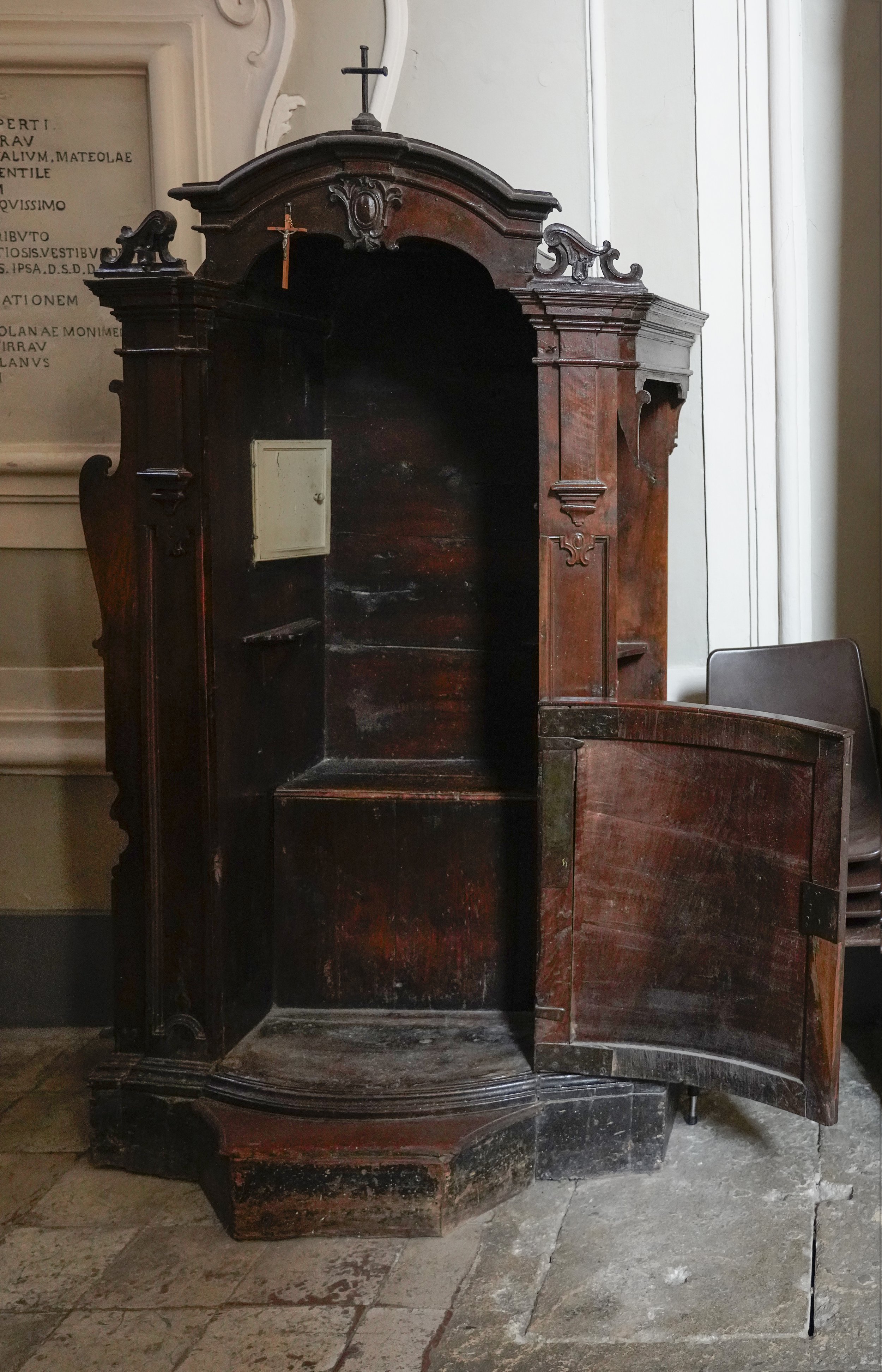
Confession, also called reconciliation, in the Judeo-Christian tradition, the acknowledgment of sinfulness in public or private, is regarded as necessary to obtain divine forgiveness. The need for confession is frequently stressed in the Hebrew Bible. The necessity of confession is discussed in many places in the New Testament (James 5:16; 1 John 1:9), although there is no direct evidence that confession had to be specific or detailed or that it had to be made to a priest. The Fourth Lateran Council (1215) established the rule that every Christian should confess to a priest at least once a year.
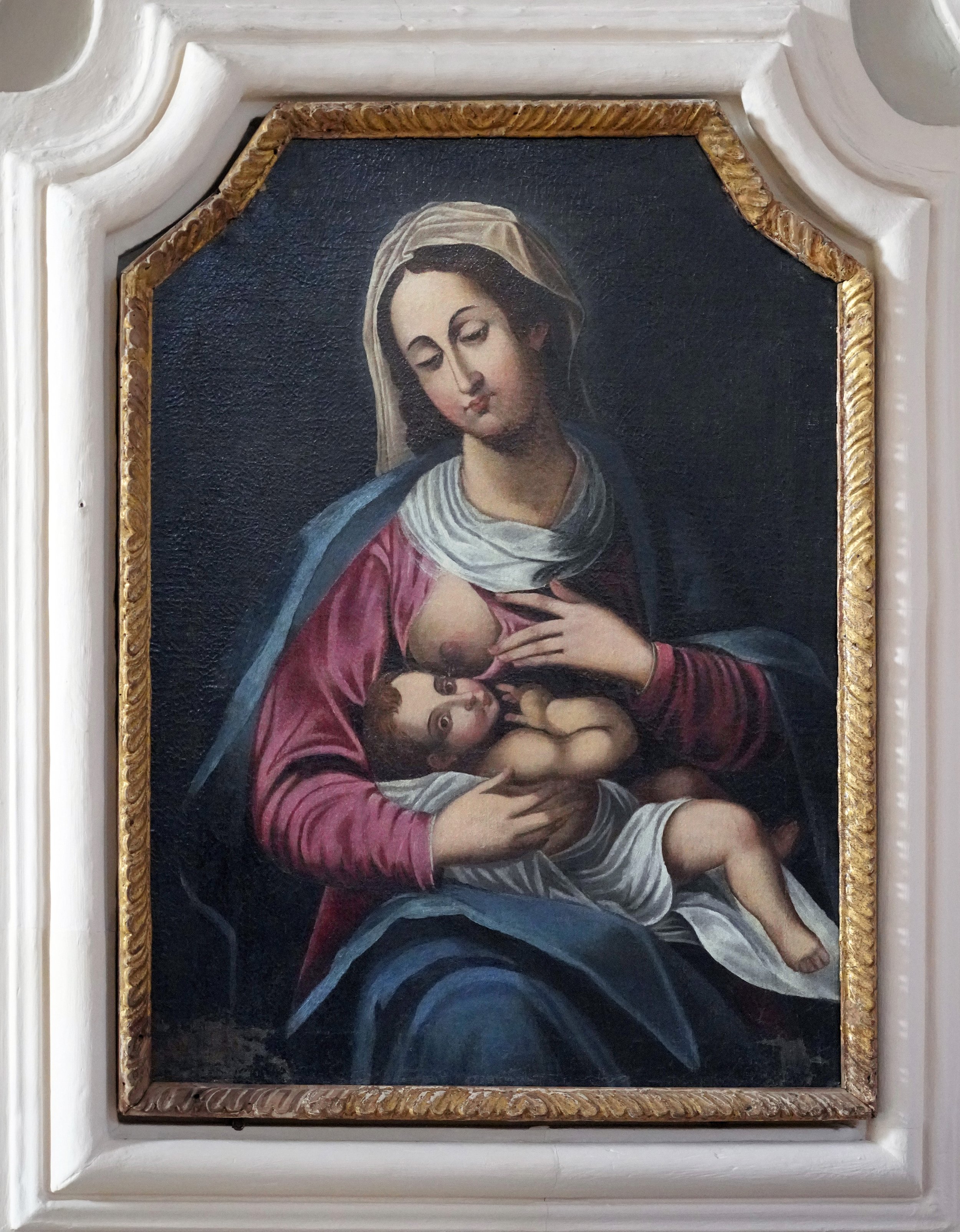
The Nursing Madonna, or Madonna Lactans, is an iconography of the Madonna and Child in which the Virgin Mary is shown breastfeeding the infant Jesus. In Italian it is called the Madonna del Latte ("Madonna of milk"). In the Nursing Madonnas, the focus is especially on the Blessed Mother’s gift of breastfeeding, a symbol not only of her motherhood of Christ but also of the nursing aspect of Virgin Mary’s love towards believers. Furthermore, art historians believe that these sets of paintings were meant to highlight the strong connection between the Blessed Mother’s milk and the blood of Christ.
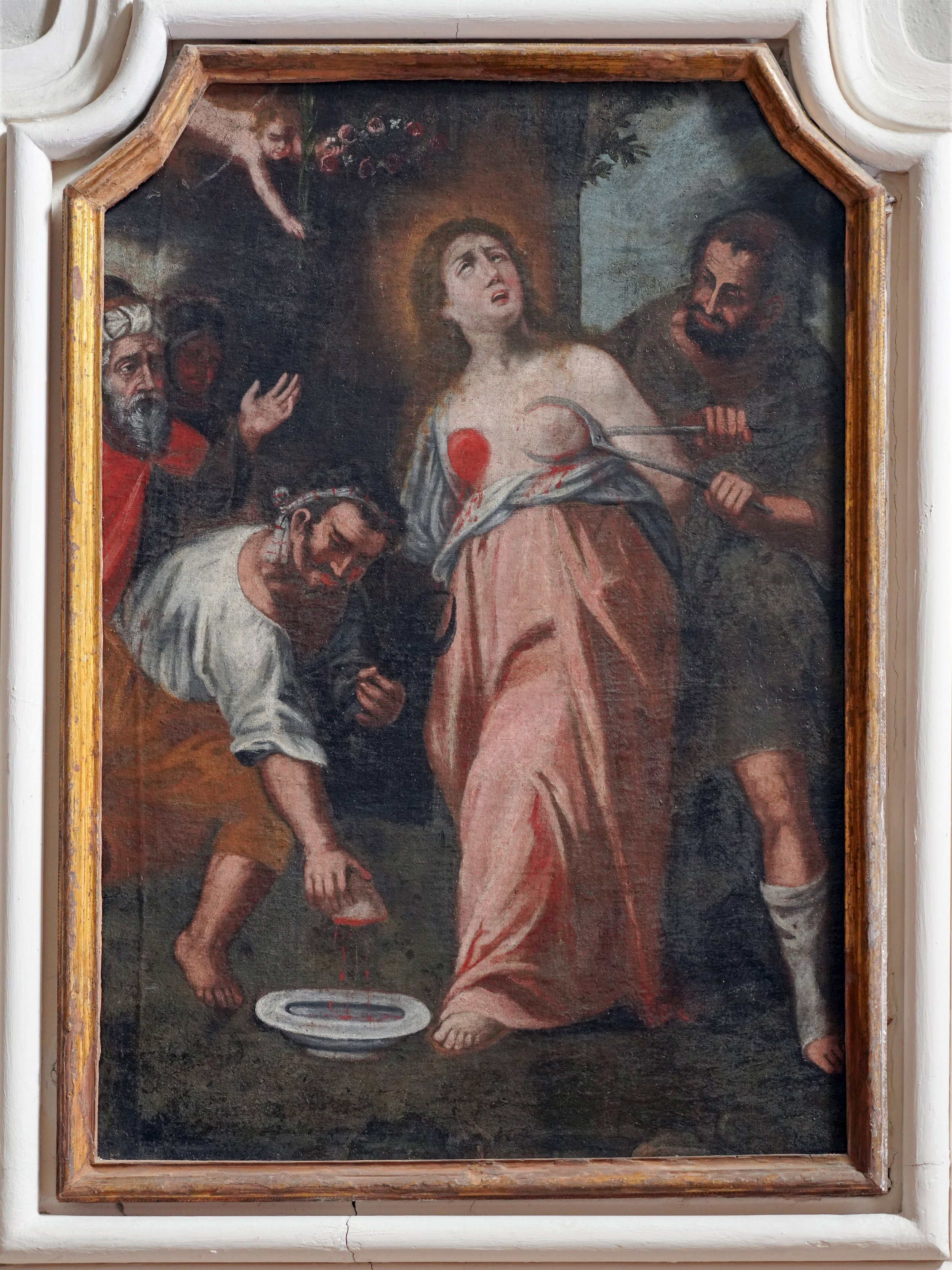
In contrast to the Madonna Lactans’ symbol of love toward all believers, the Church of S Francis of Assisi also presents a painting of the virgin martyr St. Agatha. Having consecrated her virginity to God at a young age, she resisted the advances of a Roman prefect sent by the emperor Decius to govern Sicily. Her profession of faith and rejection of the prefect resulted in her brutal torture, during which her breasts were cut off. However, during her imprisonment, she had a vision of St. Peter the Apostle, who is said to have comforted her and healed her wounds with his prayers. She then allegedly died in prison around 251.
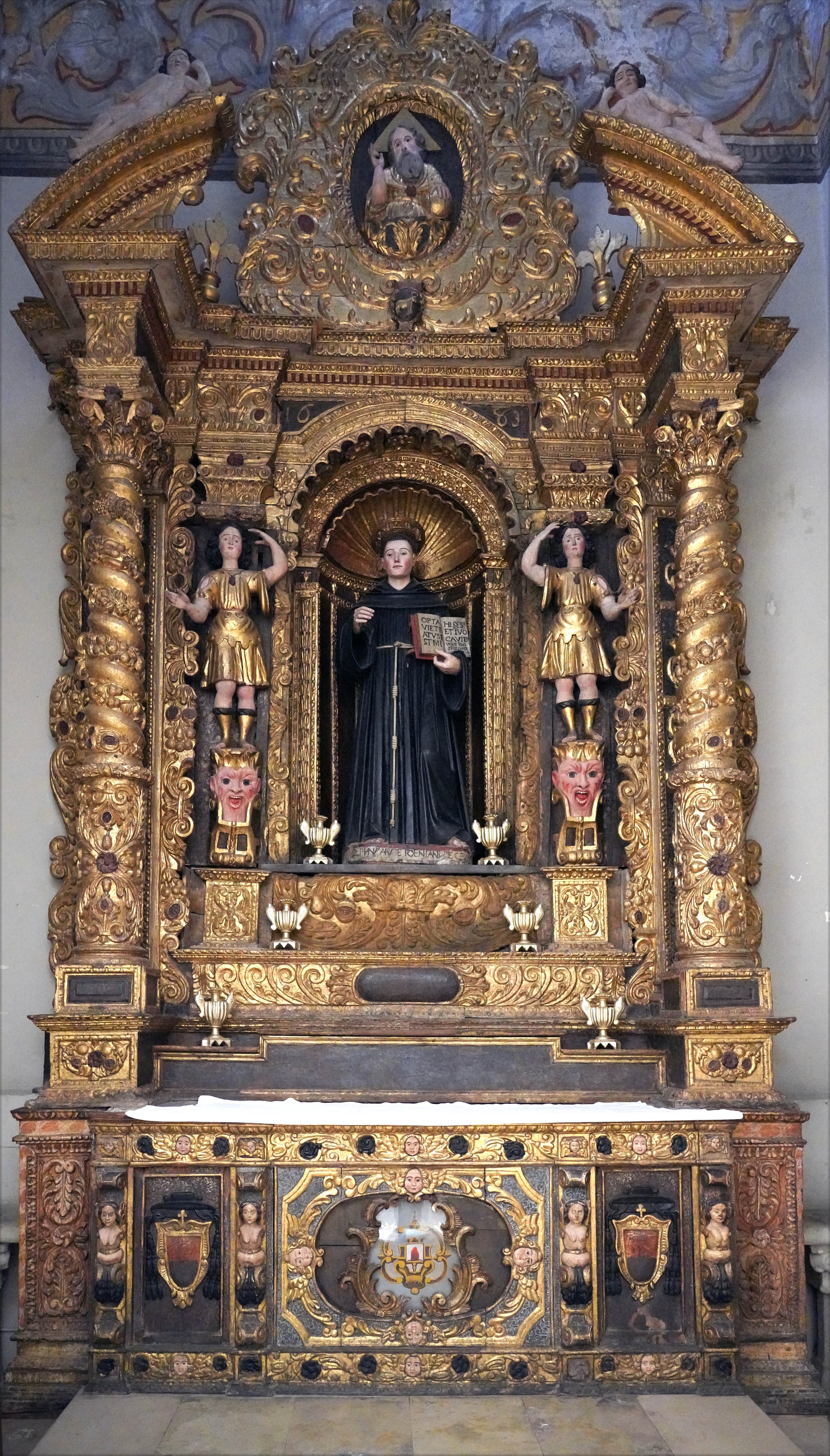
In 1224, Francis of Assisi entrusted his friars' pursuits of studies to Anthony (born Fernando Martins in Lisbon, Portugal). Anthony had a book of psalms that contained notes and comments to help when teaching students and, in a time when a printing press was not yet invented, he greatly valued it. When a novice decided to leave the hermitage, he stole Anthony's valuable book. Anthony prayed it would be found or returned to him. The thief did return the book and in an extra step returned to the Order as well. Today, St Anthony is venerated as the Patron Saint for lost articles, and is credited with many miracles involving lost people, lost things and even lost spiritual goods.

Matera has been occupied by countless groups including the Greeks, Romans, Byzantines, and Goths. The Sassi of Matera feature several types of architectural flourishes from different centuries including vaulted ceilings and winding stones steps. Exploring the interior of the Sassi is like stepping into a portal that allows you to witness moments in time which date back 9,000 years.
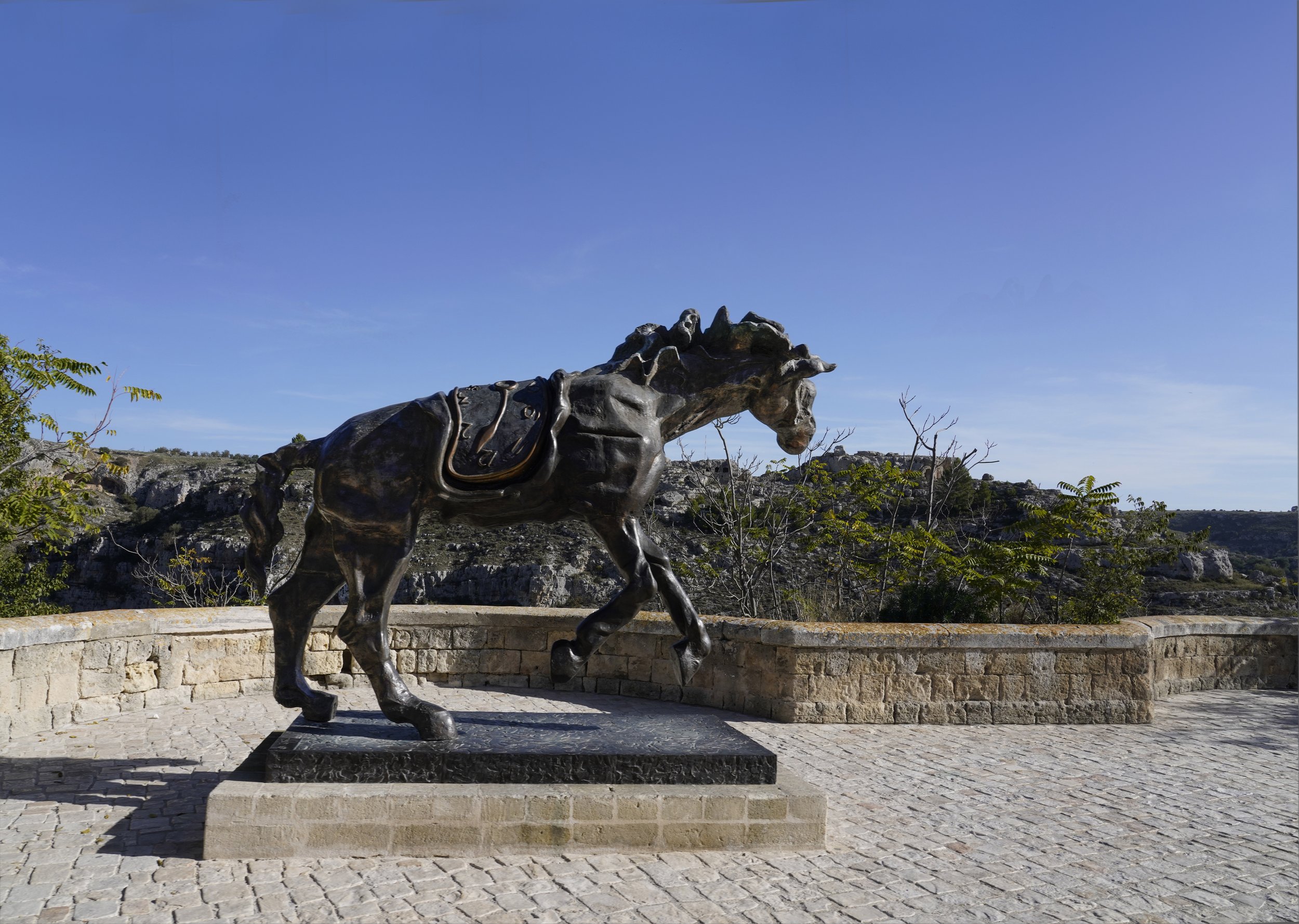
The 9.8 foot high bronze sculpture Horse Saddled with Time, was conceived by Salvador Dalí in 1980. As part of the Dali exhibit in Matera it includes the famous melted watch, which is used in place of a normal saddle, and the animal figure, which becomes the representation of life weighed down and harnessed by time. The sculpture symbolizes the omnipresence of “time” and the burden it brings to all of our actions.

A dig in 1906, near the Cathedral, in the town center, went thirty-five feet below the surface and found Christian coffins and the remains of a Saracen invasion from around 800 A.D. The scientists kept going, and below that they discovered statues, broken columns, and money from the Byzantine occupation, of around 400 A.D. Farther down, they uncovered ancient Greek and Roman coins and, under that layer, bits of ceramics from 3,000 years ago. Matera has long been a crossroads between East and West. Greeks, Romans, Longobards, Byzantines, Saracens, Swabians, Angevins, Aragonese, and Bourbons all passed through the town.

The term sasso derives from Latin saxum, meaning a hill, rock or great stone. The Sassi are houses dug into the calcarenitic rock itself, which is characteristic of Basilicata and Apulia, locally called "tufo" although it is not volcanic tuff or tufa. The streets in some parts of the Sassi often run on top of other houses.

The ancient town grew up on one slope of the ravine created by the Gravina river. The ravine is known locally as "la Gravina". The Sasso Barisano faces part of the Caveoso but it is very different. Rather than cave dwellings, here you have traditional houses and even palazzi excavated from the rock and the result is beautiful.
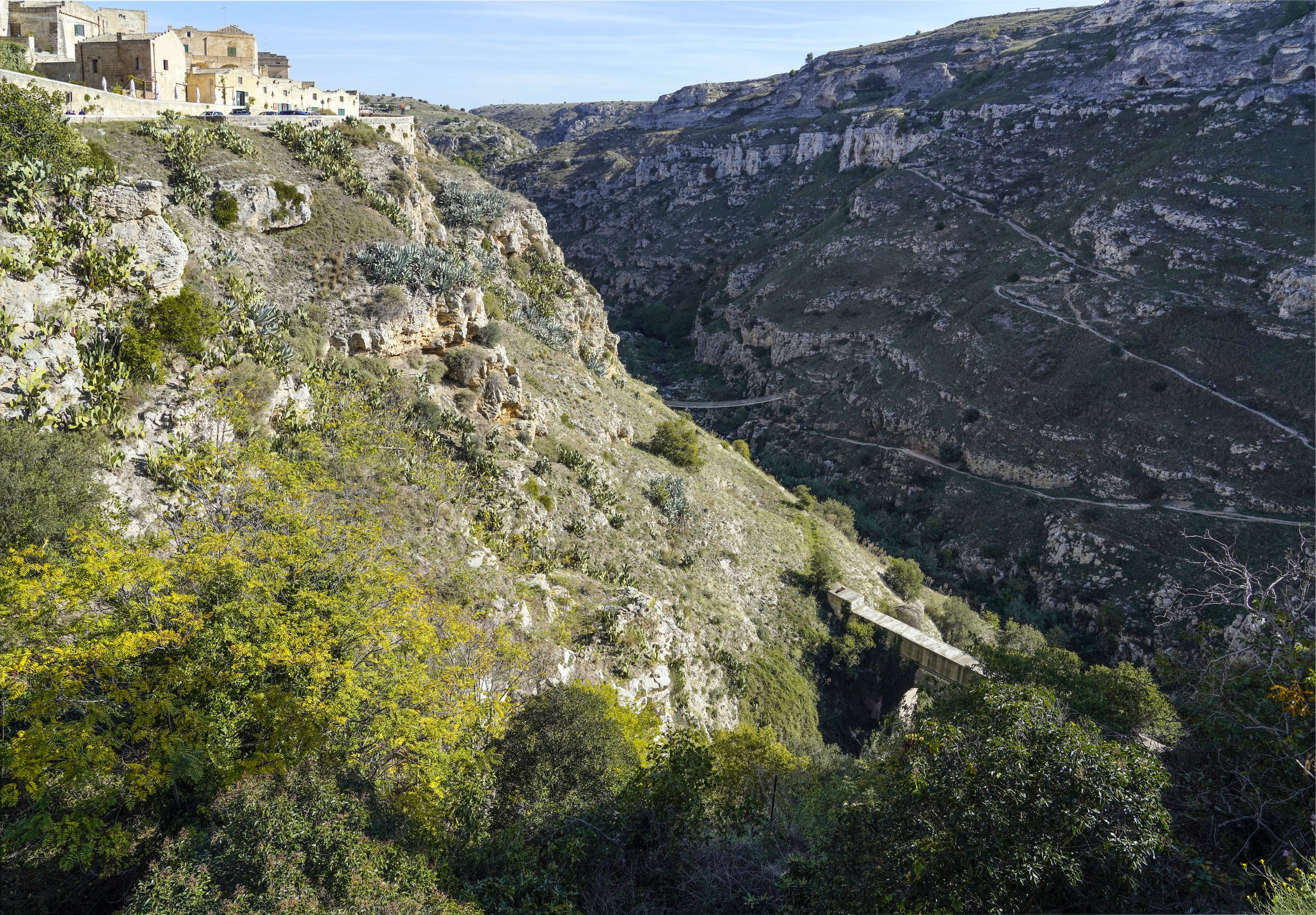
The Sassi is divided by the Gravna river and gorge. To get to the more undeveloped side you need to walk down into the gorge and cross the Tibetan bridge (center) or get a bus or taxi around to the other side.
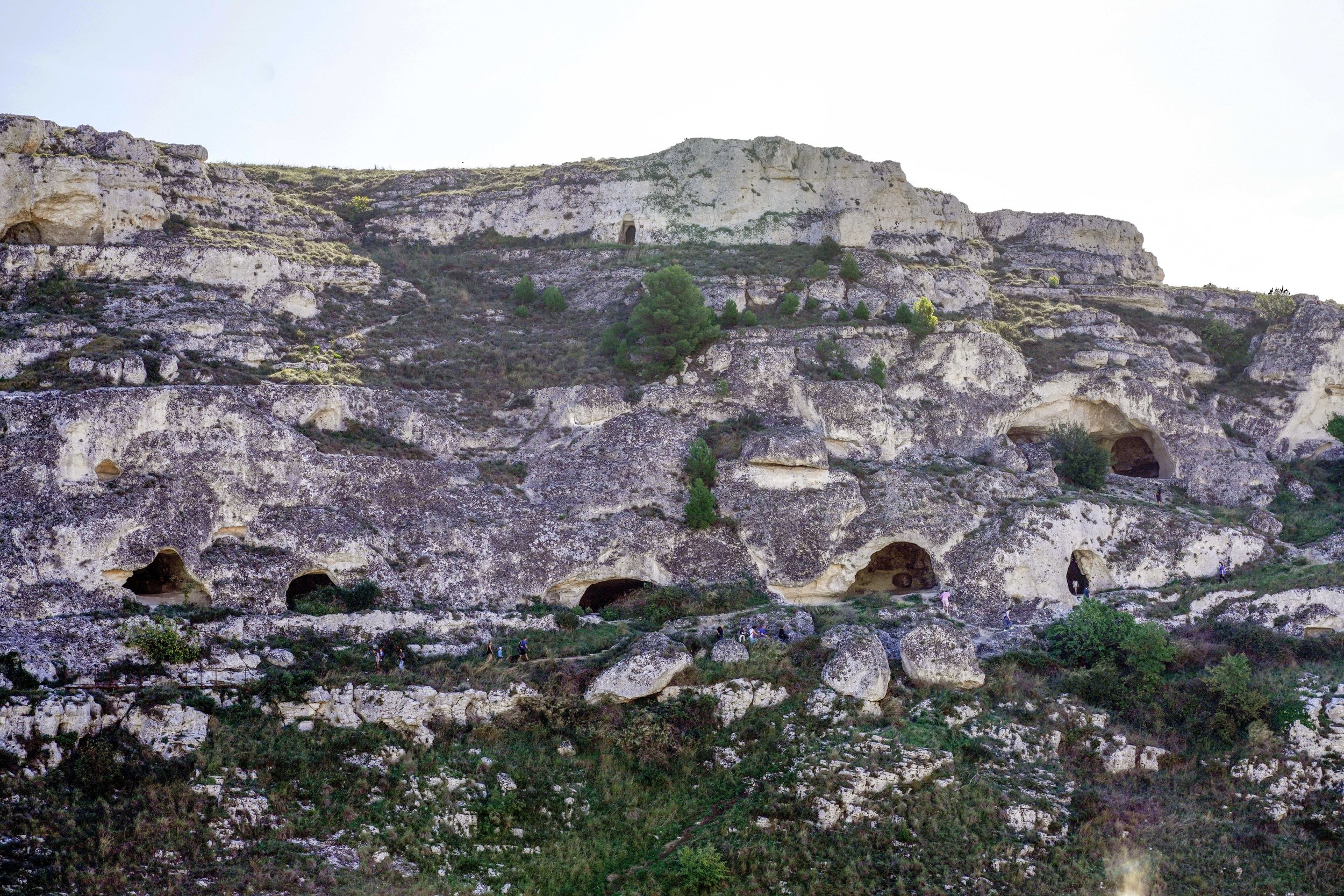
Cave dwellings, Roughly 9,000 years ago, a group of Paleolithic settlers built cave dwellings in Matera’s calcium-rich rocks. Human beings have consistently lived in Matera’s caves since they were first built—which makes them some of the oldest continuously occupied cave dwellings in human history.
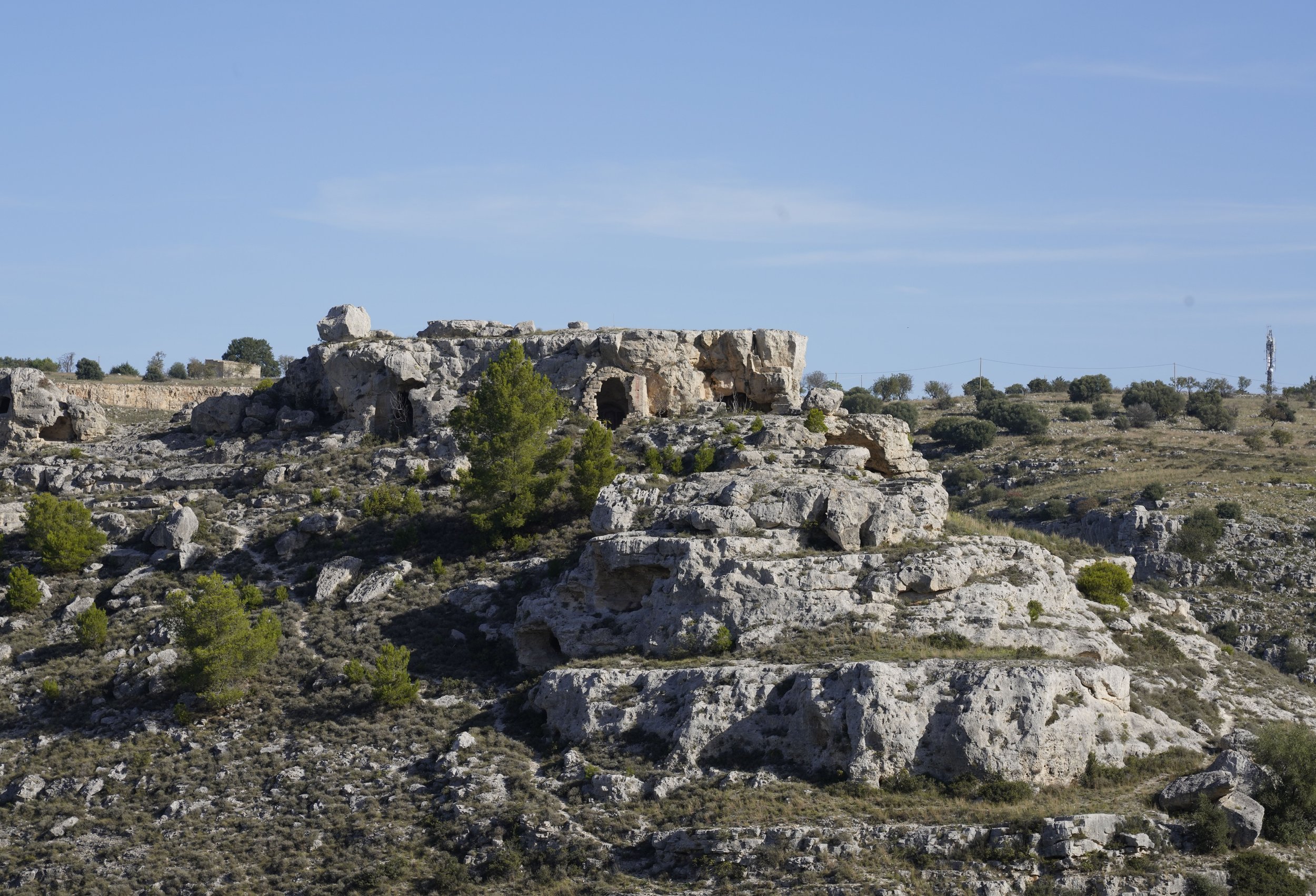
Local shepherds once would allow sheep, goats, and chickens to crowd inside of their cave dwellings alongside their human family members.

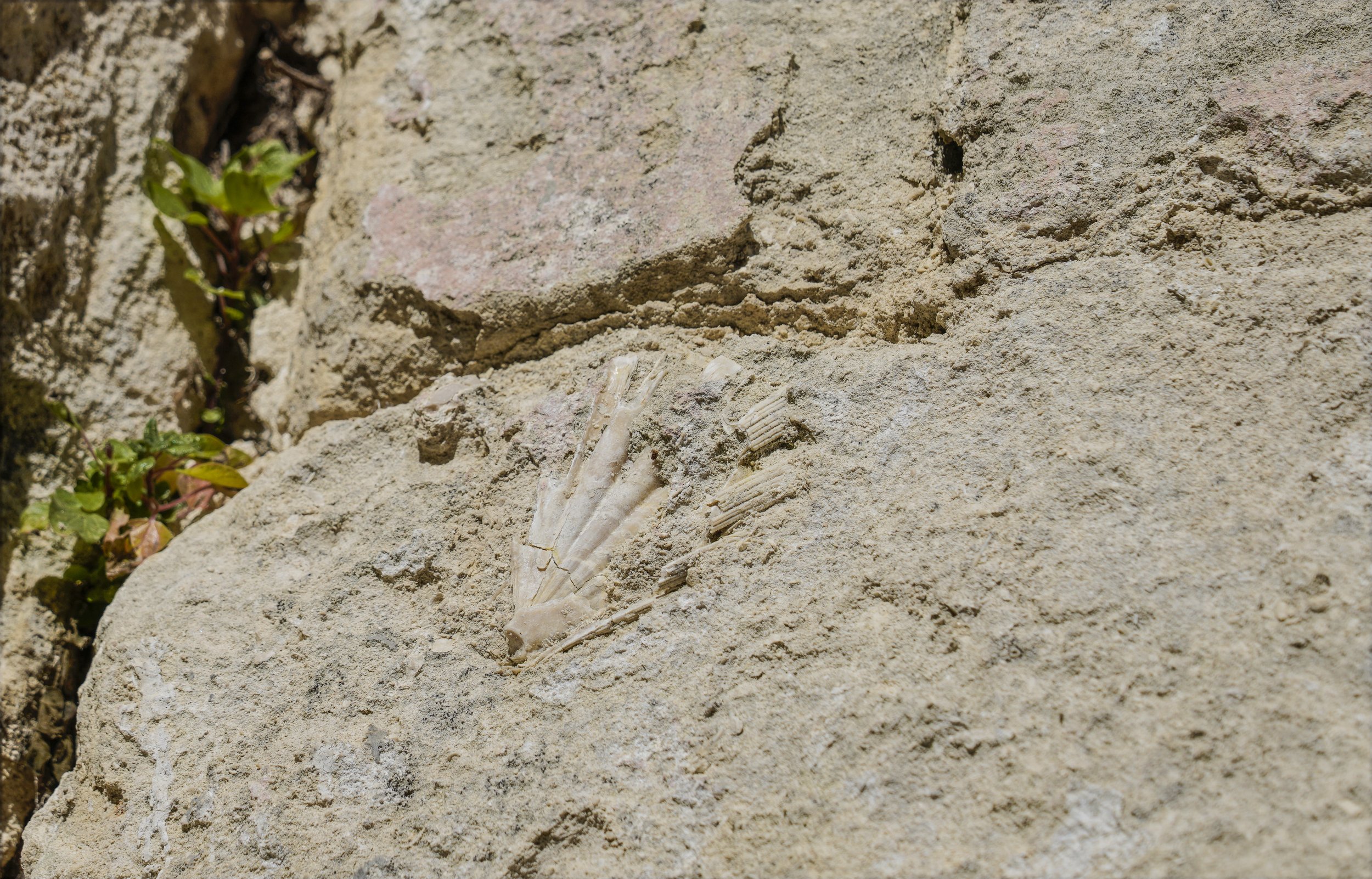

In the 1950s, the government of Italy forcefully relocated most of the population of the Sassi to areas of the developing modern city. Beset by extreme poverty and riddled with malaria, the unhealthy living conditions were considered inhuman and an affront to the modern Italian Republic. The current local administration, however, has become more tourism-oriented, and it has promoted the regeneration of the Sassi with the aid of the European Union, the government, and UNESCO. Today there are many thriving businesses, pubs, and hotels there, as described in an April 2015 article in The New Yorker.

Casagrotta (cave house) which was inhabited until 1957 and has now been turned into a museum giving visitors a true picture of what it would have been like to live here. Entry to the cave house with a cistern (a container for storing water) on the right of the portal and farm and house implements on the walls.
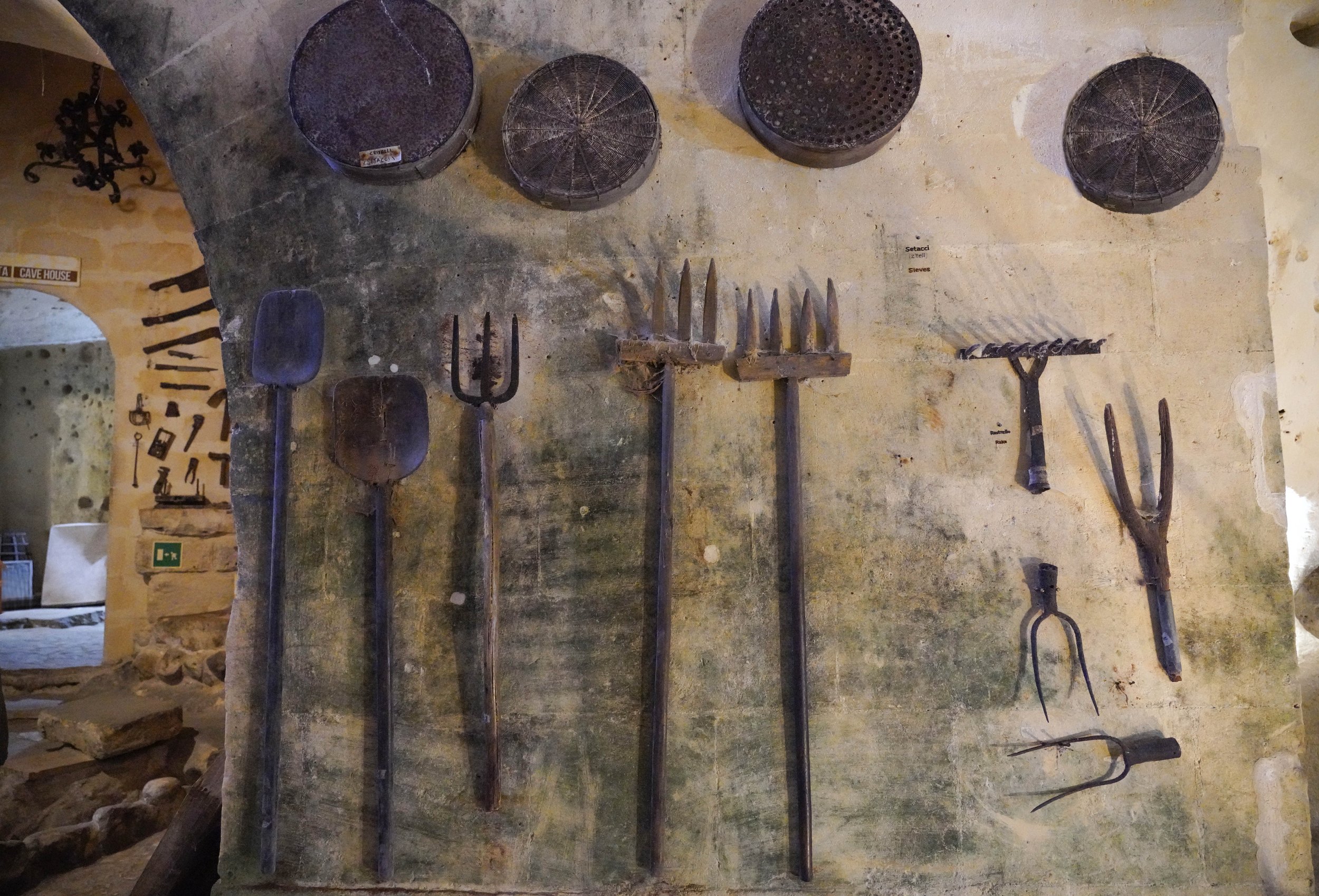
On the top row are setacci, sieves. The sieve was the basic utensil used, much in agricultural work as in the milling of cereals at mills and it was also necessary in the bakeries for flour. After winnowing, sifting of cereal grains was followed to remove the foreign matter, stones, soil and straw. When sifting, the grain fell down on a cloth, while the foreign matter, remained on the sieve and was thrown away. Below, wide tined pitch forks like this were used to pitch hay, grains, straw, and other agricultural products. Reaping, threshing, and winnowing were done by hand with simple tools like this wooden pitchfork and forked digging tools.

This area of the cave house is labeled a mill. The donkey or horse-driven rotary mill was a 4th-century BC Carthaginian invention, with possible origins in Carthaginian Sardinia. The mill spread to Sicily, arriving in Italy in the 3rd century BC.
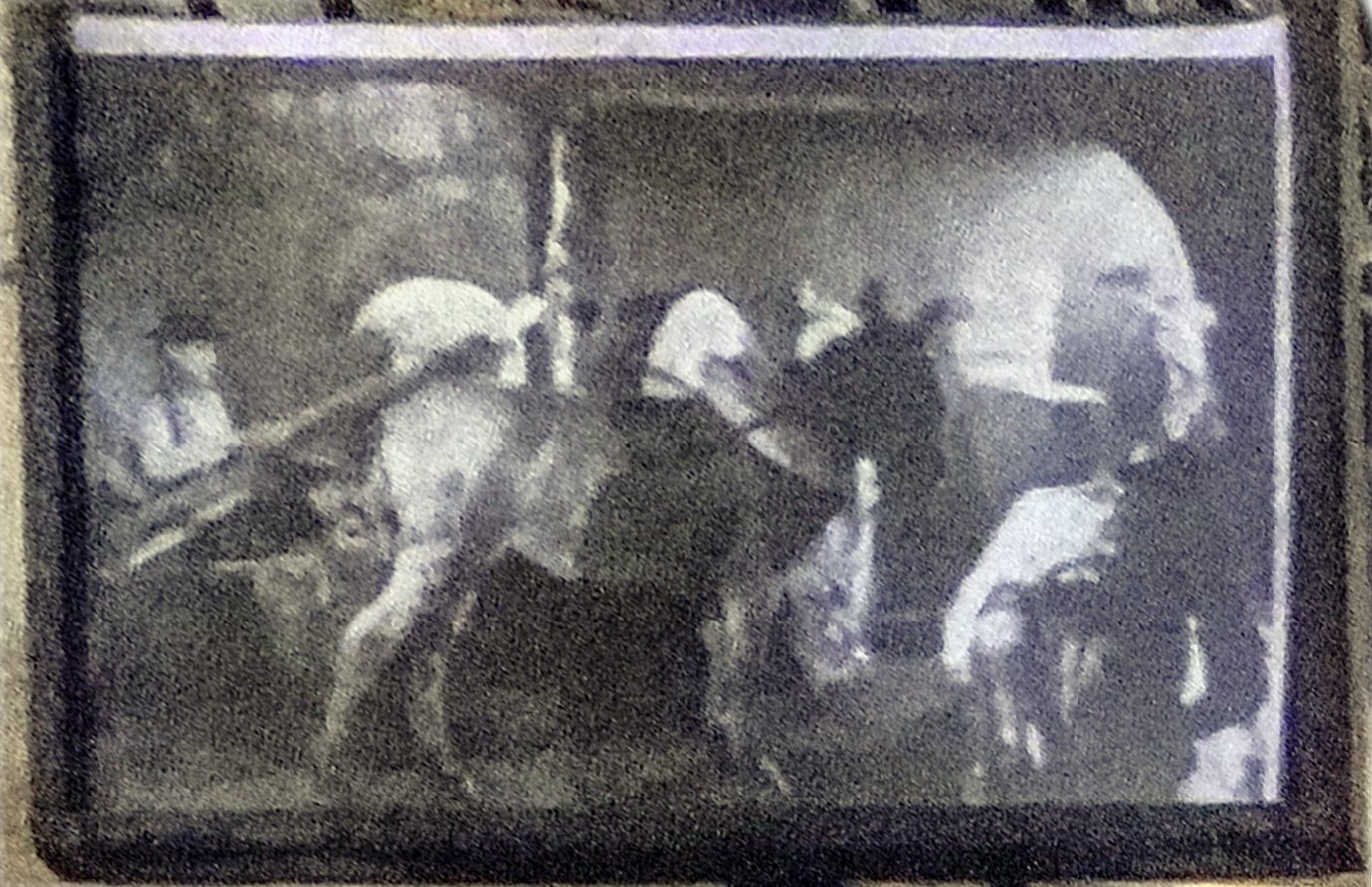
A picture in the mill room shows a donkey and workers at the cave house mill; the donkey was the power source for grinding grain and possibly pumping water.
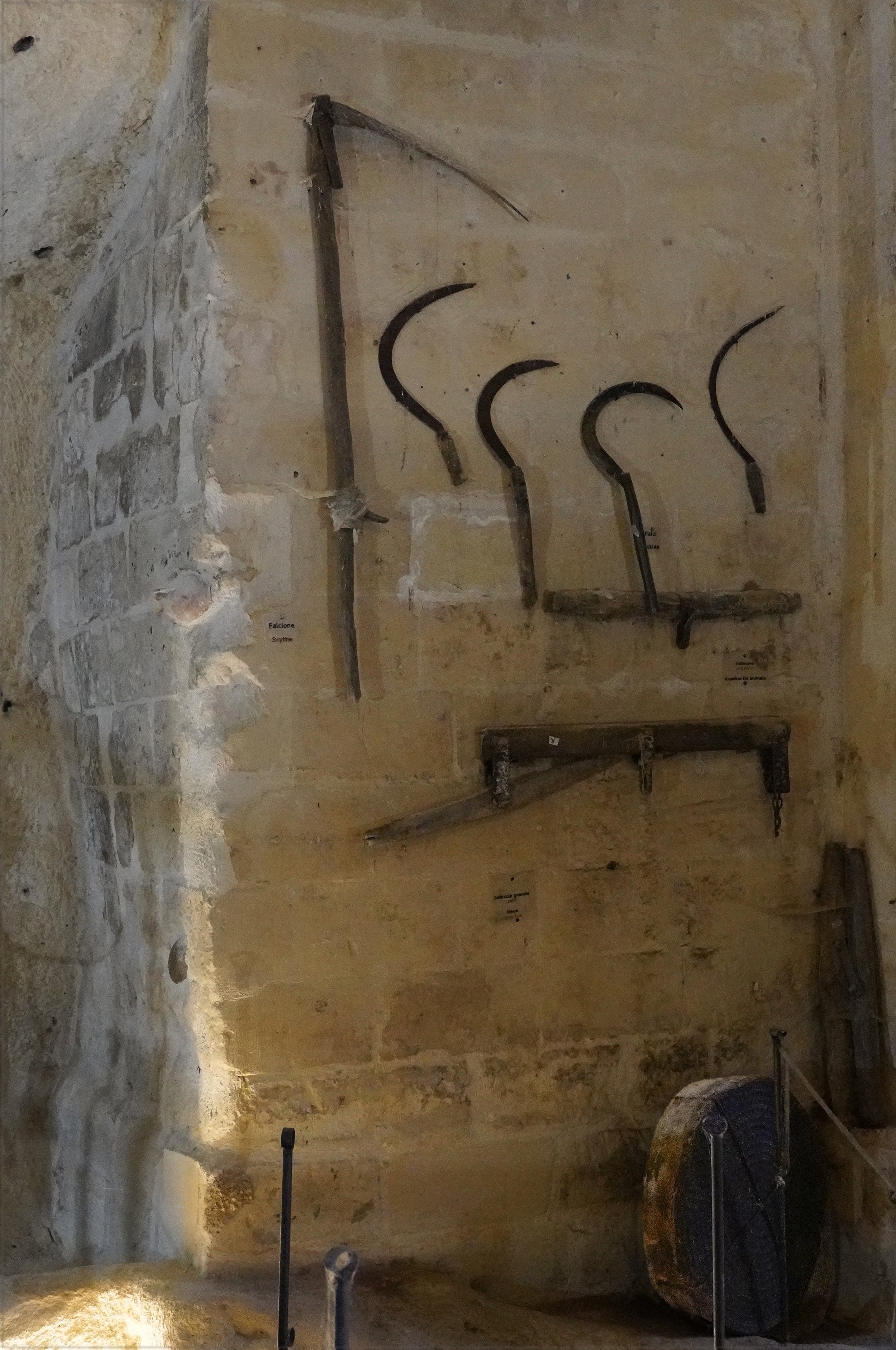
The sickles hanging on the top row were used for harvesting of the crops, grass and cutting of other vegetative matters. Directly underneath them is a drawbar for animals, probably used for the grinding mill, as there is a grinding stone sitting on the floor on the lower right of the wall.
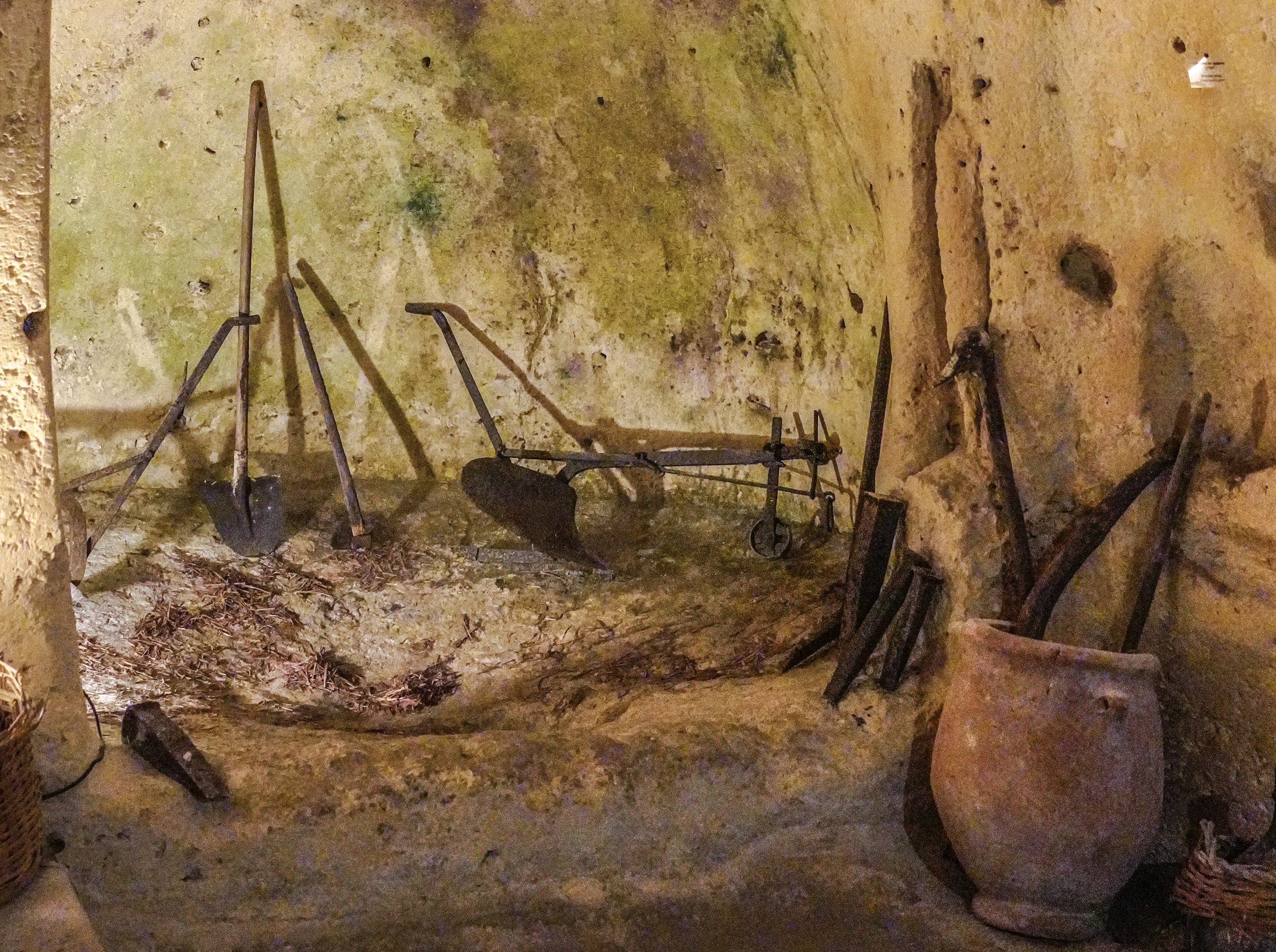
Farming implements include shovel, hand hoe and a manual plough. Those who could afford horses or oxen used them to pull plows, but many farmers had to complete tasks with using scythes, and shaped soil using hoes. By Roman times, light, wheelless plows with iron shares (blades) were drawn by oxen; these implements could break up the topsoil of the Mediterranean regions.
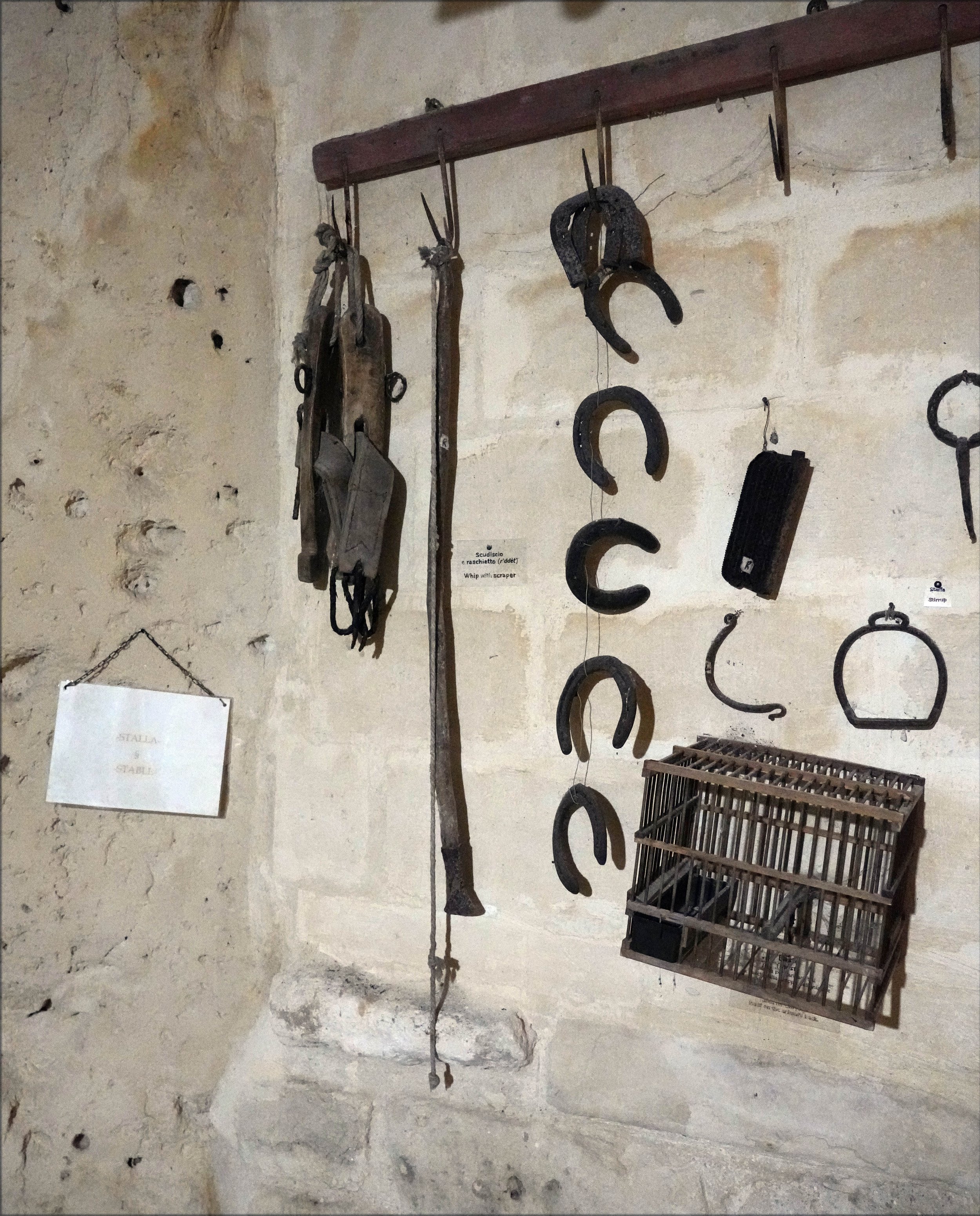
The stable implements include a whip with scraper, horse/donkey shoes, a stirrup.
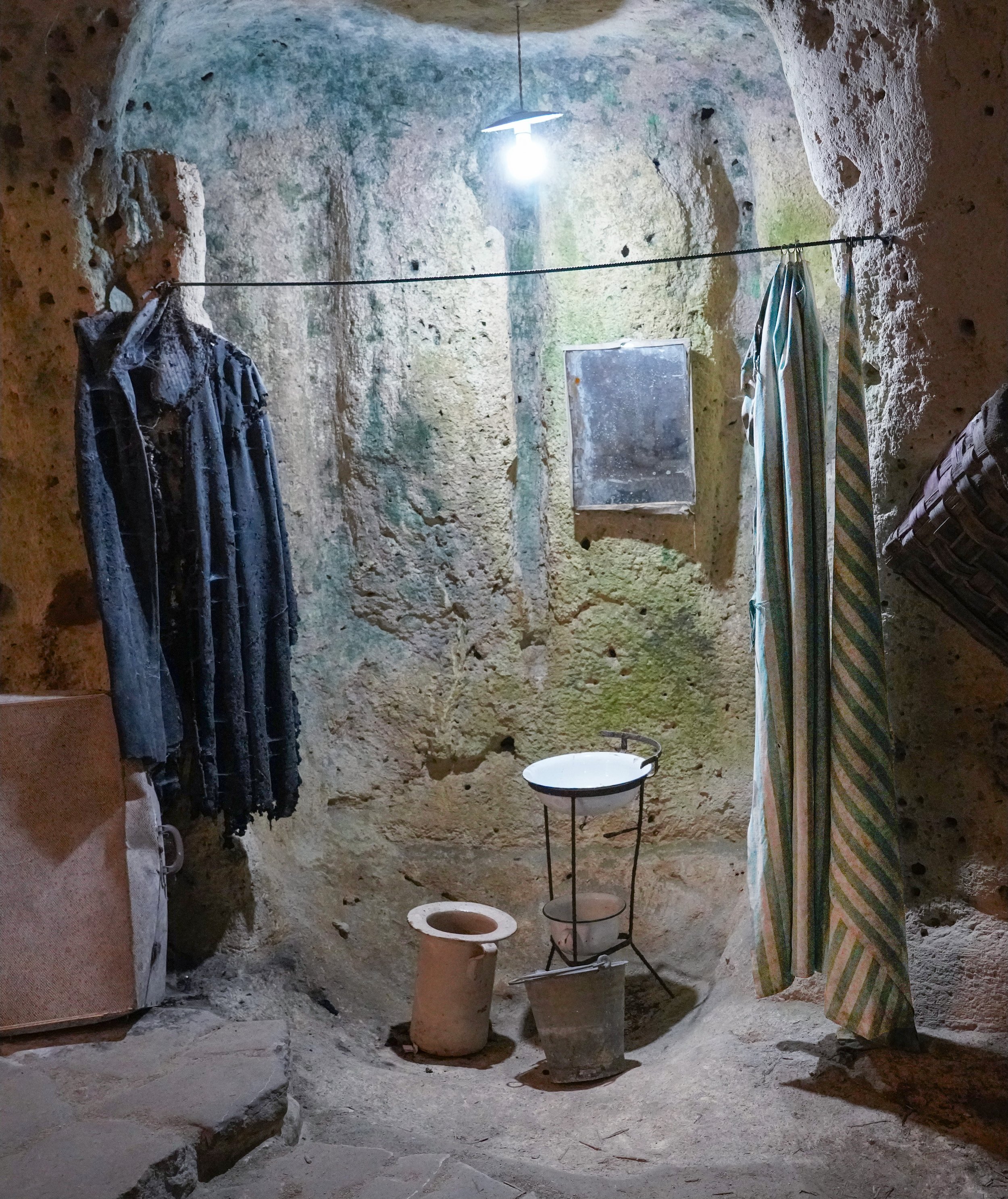
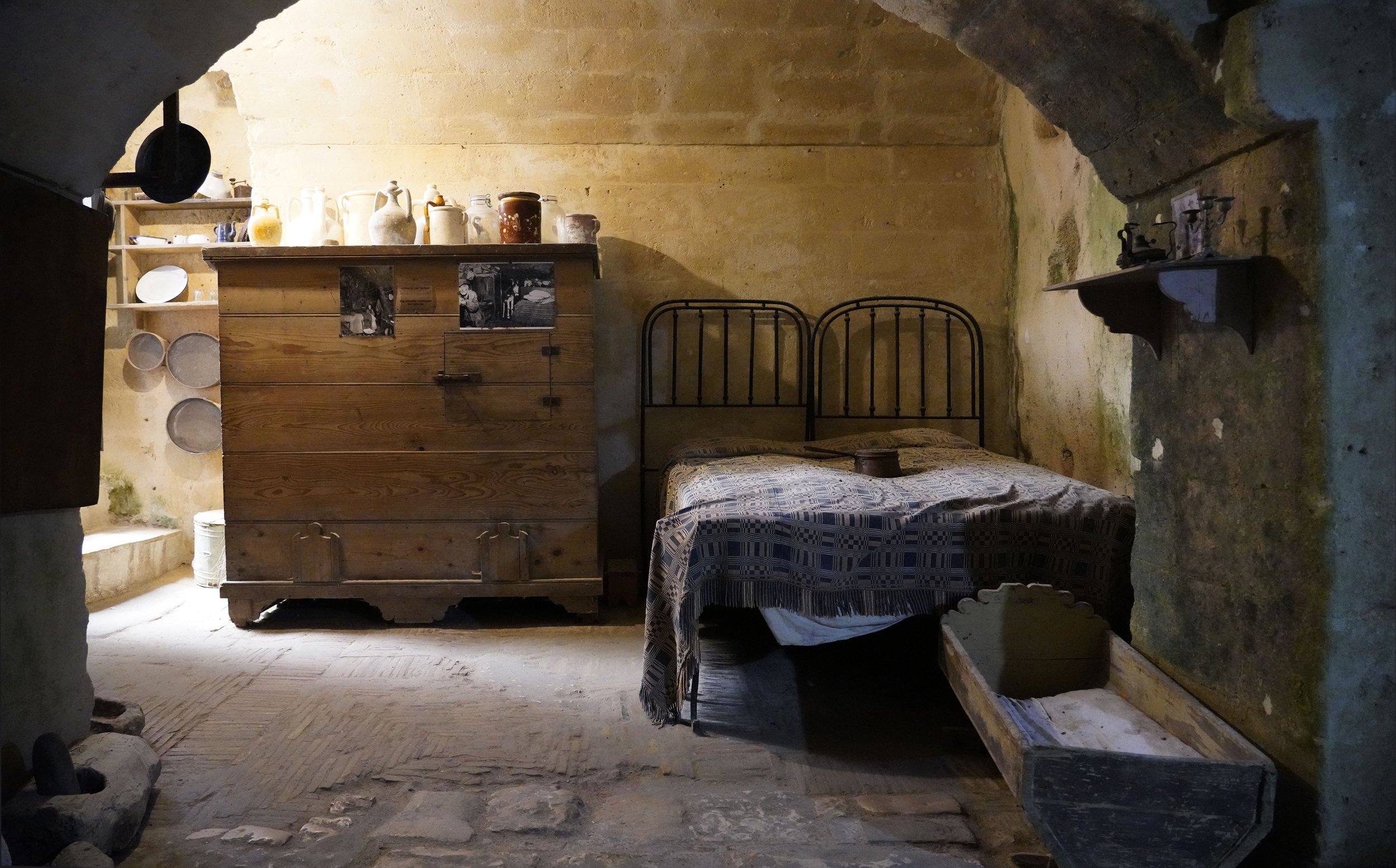
Between the 1600s and 1800s people used hollowed-out logs for the purpose of a baby bed.


Kitchen utensils include an iron for clothing, ladels, pots, pans, cups, coffee pots, strainer, and a pot hanging by a chain set up for cooking.

Cave exit with bedroom furniture on the right and the kitchen cooking area on the left.

Santa Maria de Idris (foreground) is connected to the rock crypt of San Giovanni in Monterrone (background) via a tunnel. The Church of Saint Maria of Idris is carved into a limestone rock of Monterrone that dominates the Sasso Caveoso. The rock church of San Giovanni called in “Monterrone” owes its name to the tuffaceous mass which dominates the Sasso Caveoso and the Casalnuovo district. Archaeological research, the dating of the frescoes and the few written documents date the original layout of the church from a period between the 12th and 13th centuries.

The name Idris is a deformation of the Greek Odigitria, which means guide of the way or of the water. This is an aspect of Virgin Mary which was venerated in Constantinople and the cult was introduced in southern Italy by Byzantine monks. The beautiful location of the Church of Saint Mary of Idris offers a unique view of the city.

The rock crypt of San Giovanni in Monterrone is connected to Santa Maria de Idris via a tunnel. The tomb holds several precious frescoes from the 12th to the 17th century. A fresco of John the Baptist is in the tunnel. In a lunette above the crypt is a 12th-century Christ Pantocrator. The title is Greek, meaning "All-Powerful."
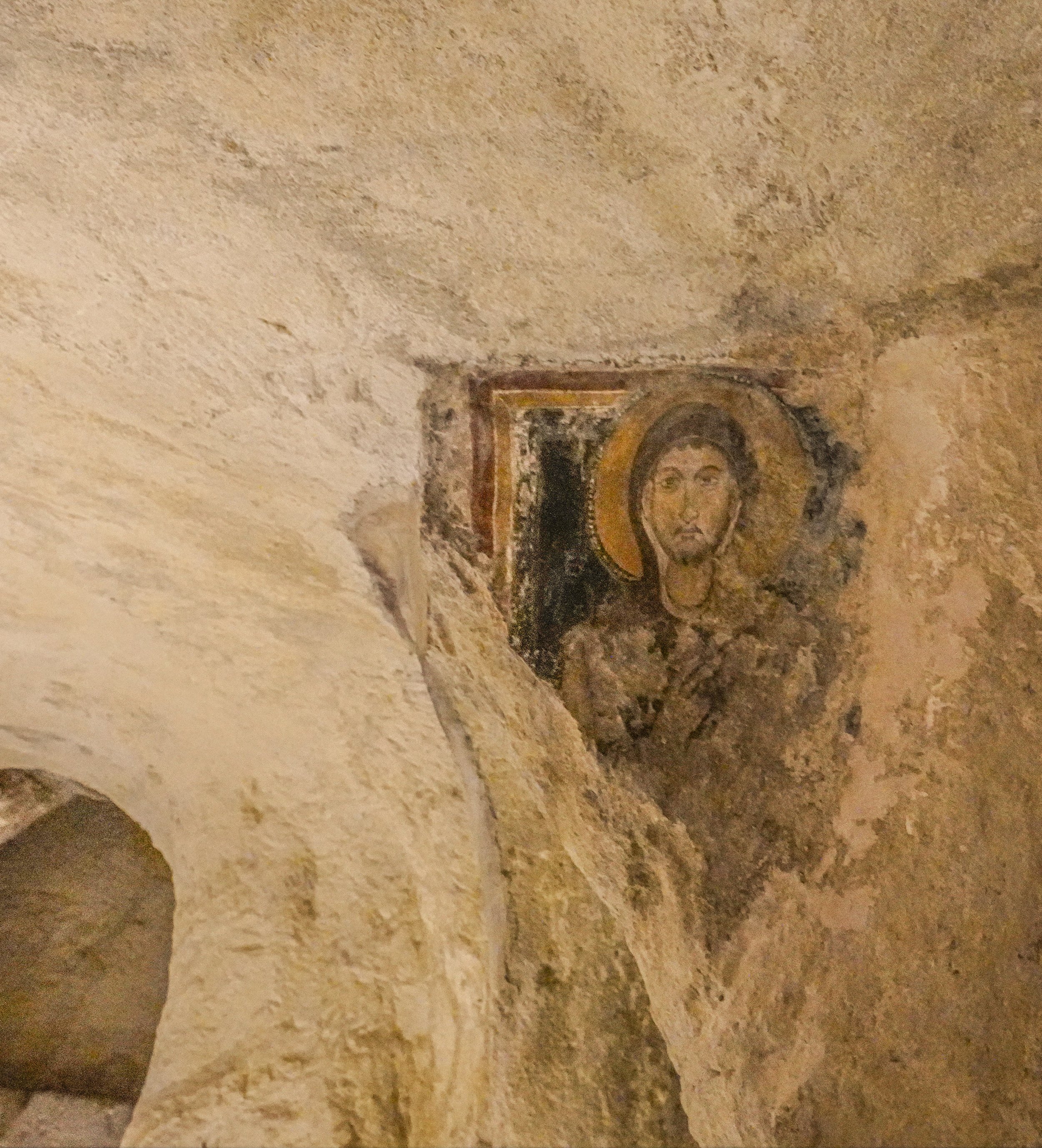


One day, while hunting in the forest, Placidus saw before him a white stag of marvelous beauty, and he pursued it eagerly, and the stag fled before him, and ascended a high rock. Then Placidus, looking up, beheld, between the horns of the stag, a cross of radiant light, and on the image of the crucified Redeemer; and being astonished and dazzled by this vision, lie fell on his knees, and a voice, which to come from the crucifix, cried to him and said, ”Placidus, why dost thou pursue me? I am Christ, whom thou hast hitherto served without knowing me. Dost thou now believe?” And Placidus fell with his face to the earth, and said, ”Lord, I believe!” And the voice answered saying, “Thou shalt suffer many tribulations for my sake, many temptations; but be strong and of good courage, and I will not forsake thee." To which Placidus replied, “Lord, I am content. Do thou give me patience to suffer!” And when he looked up again the wondrous vision had departed. Then he arose and returned to his house, and the next day he and his wife and two sons were baptized, and he took the name of Eustace.
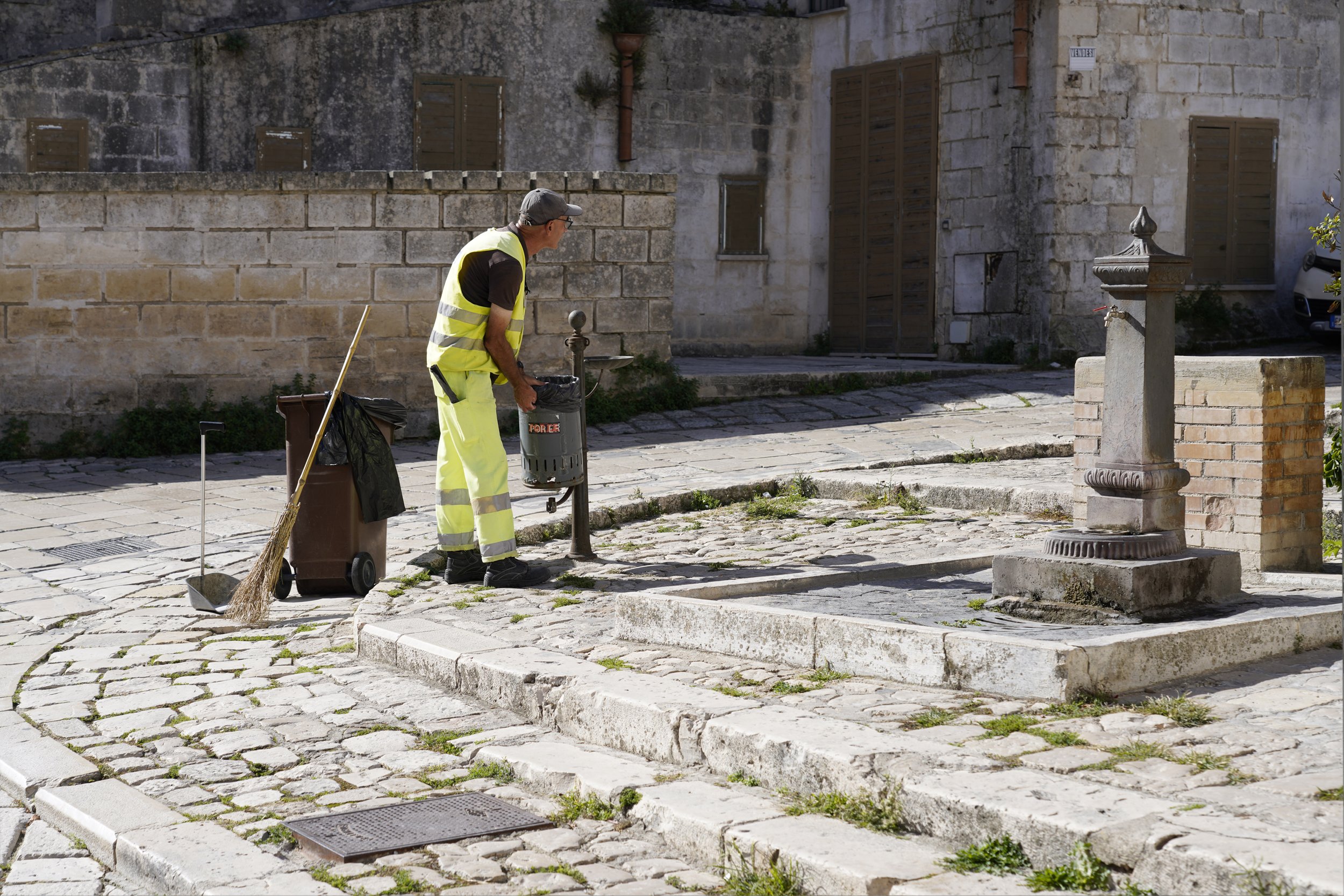

A dig in 1906, near the Duomo, in the town center, went thirty-five feet below the surface and found Christian coffins and the remains of a Saracen invasion from around 800 A.D. The scientists kept going, and below that they discovered statues, broken columns, and money from the Byzantine occupation, of around 400 A.D. Farther down, they uncovered ancient Greek and Roman coins and, under that layer, bits of ceramics from three thousand years ago. Matera stands at what has long been a crossroads between East and West. Greeks, Romans, Longobards, Byzantines, Saracens, Swabians, Angevins, Aragonese, and Bourbons all passed through the town.

The Cathedral, built between 1230 and 1270, is the Cathedral of Matera, dedicated to the Virgin Mary, the patron saint of the city, and to the Christian martyr Saint Eustace, protector of the city. The church is located on the highest point of the old city, on the area of the 11th century Benedictine monastery of Sant'Eustachio, and between the two Sassi, the ancient districts of Matera. On the left side of the church, there is the 170 foot high bell tower, with four floors, of which three with mullioned windows and the fourth with single light windows, surmounted by a pyramid.

The Cathedral facade is dominated by a rose window with sixteen rays, surmounted by the Archangel Michael. In the center of the facade, there is the main portal, closed by a round arch with the statue of the Madonna della Bruna. On either side of the door, are the statues of Saints Peter and Paul..
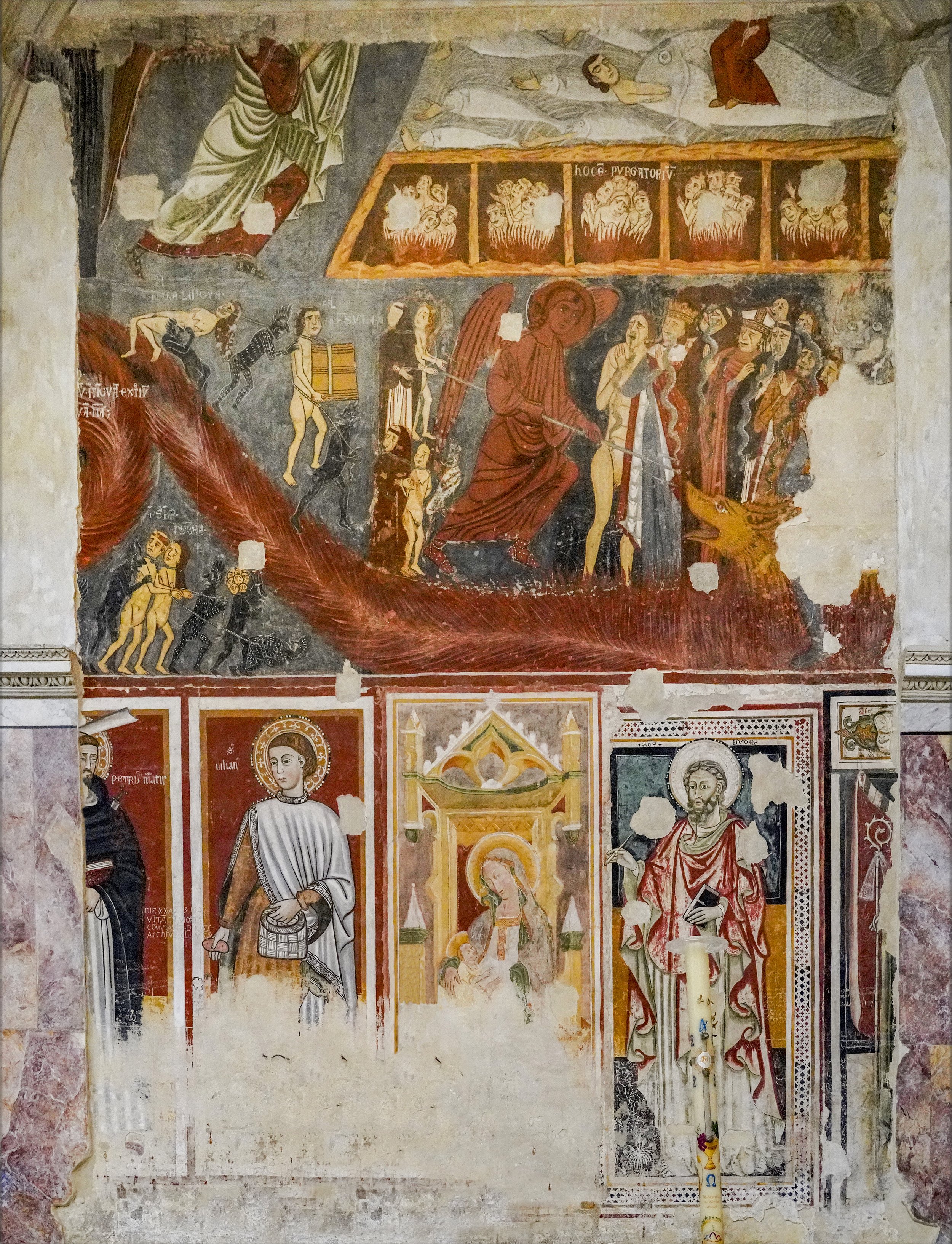
The famous fresco of “The Last Judgment” is the only surviving example of the original medieval pictorial decoration of the Cathedral. In Hell (middle section on wall), the Archangel Michael pierces sinners, which we see in a group attacked by snakes. There are also people in the group whom we can identify as a king, a pope, Benedictine religious etc. precisely to indicate the equality of souls after death. In Purgatory (upper part) we see a more static scene: purification tanks with the disturbing image of limbs and heads that emerge from the mouth of large fish: it is nothing but the symbolic rebirth of purified souls. In the lower order of the fresco there is a partially visible St. Peter martyr with St. Julian, Madonna and Child and St. Luke.
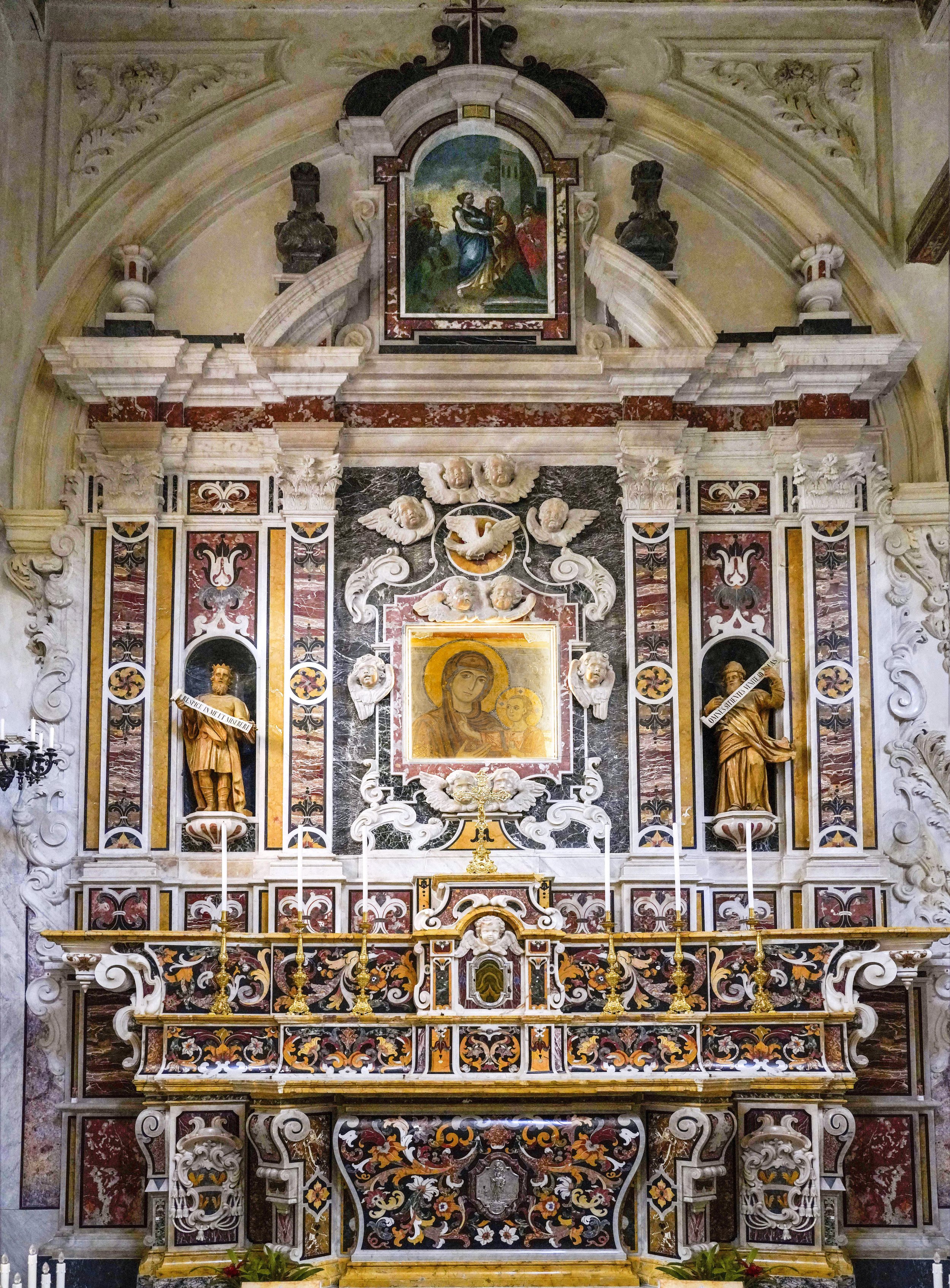
The altar houses the fresco “Madonna della Bruna”, protector of the city. The name “Bruna” according to some is a reference to the dark complexion of the face of the Madonna. On 2 July the Materani celebrate their patron saint with a spectacular festival: the feast of the brunette. The the prophet David, left, holds a scroll, “Respice in me et miserere,” i.e. Look upon me and have mercy. The prophet Isaiah, right, holds a scroll, “Omnes sitientes venite ad aquas,” i.e., All you who are thirsty, come to the waters.”
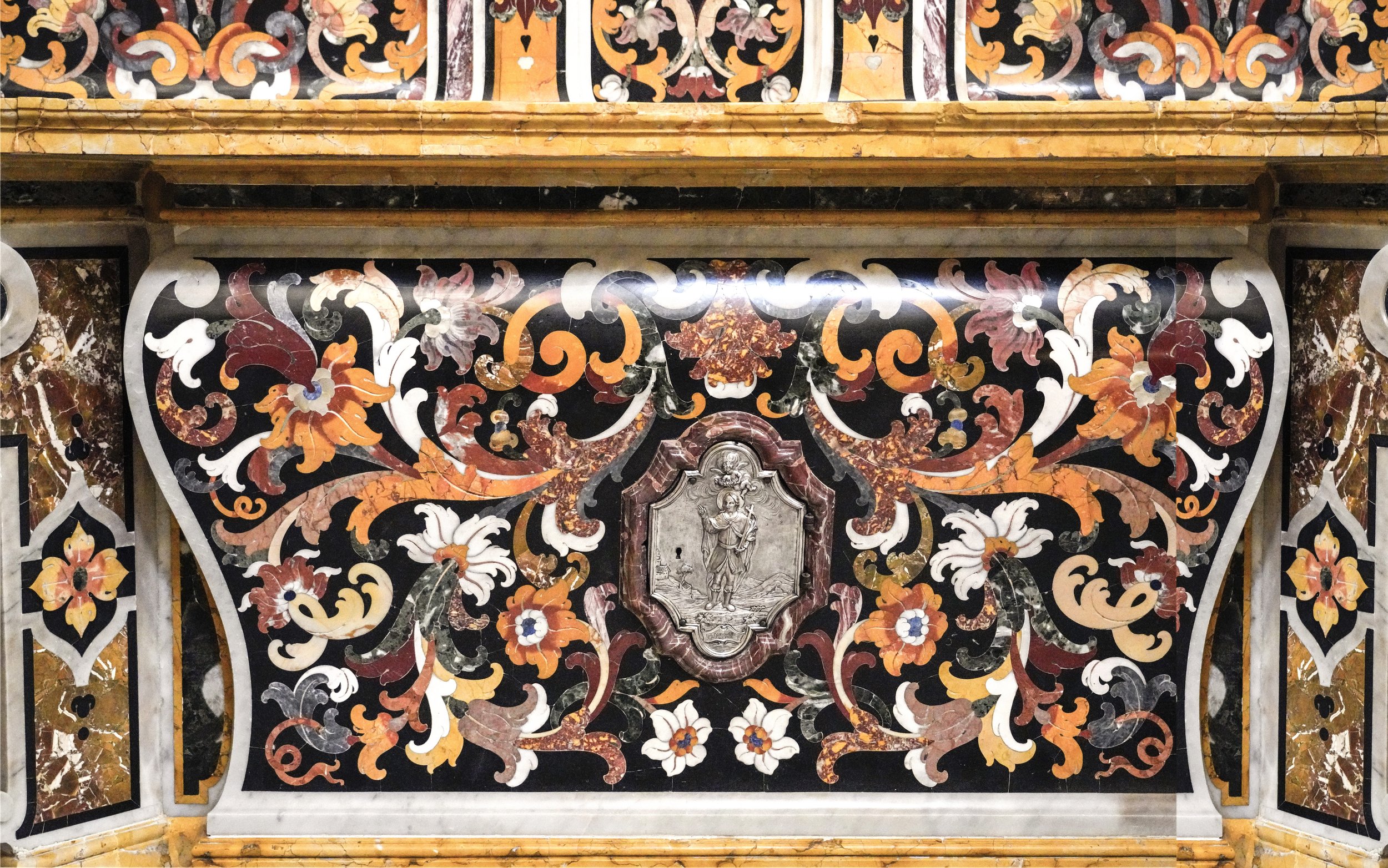
This segment of the Madonna della Bruna altar highlights the opus sectile used to design the altar. Opus sectile is a form of pietra dura (“hard rocks”) popularized in the ancient and medieval Roman world where large pieces of materials were cut and inlaid into walls and floors to make a picture or pattern. Common materials were marble, mother of pearl, and glass.
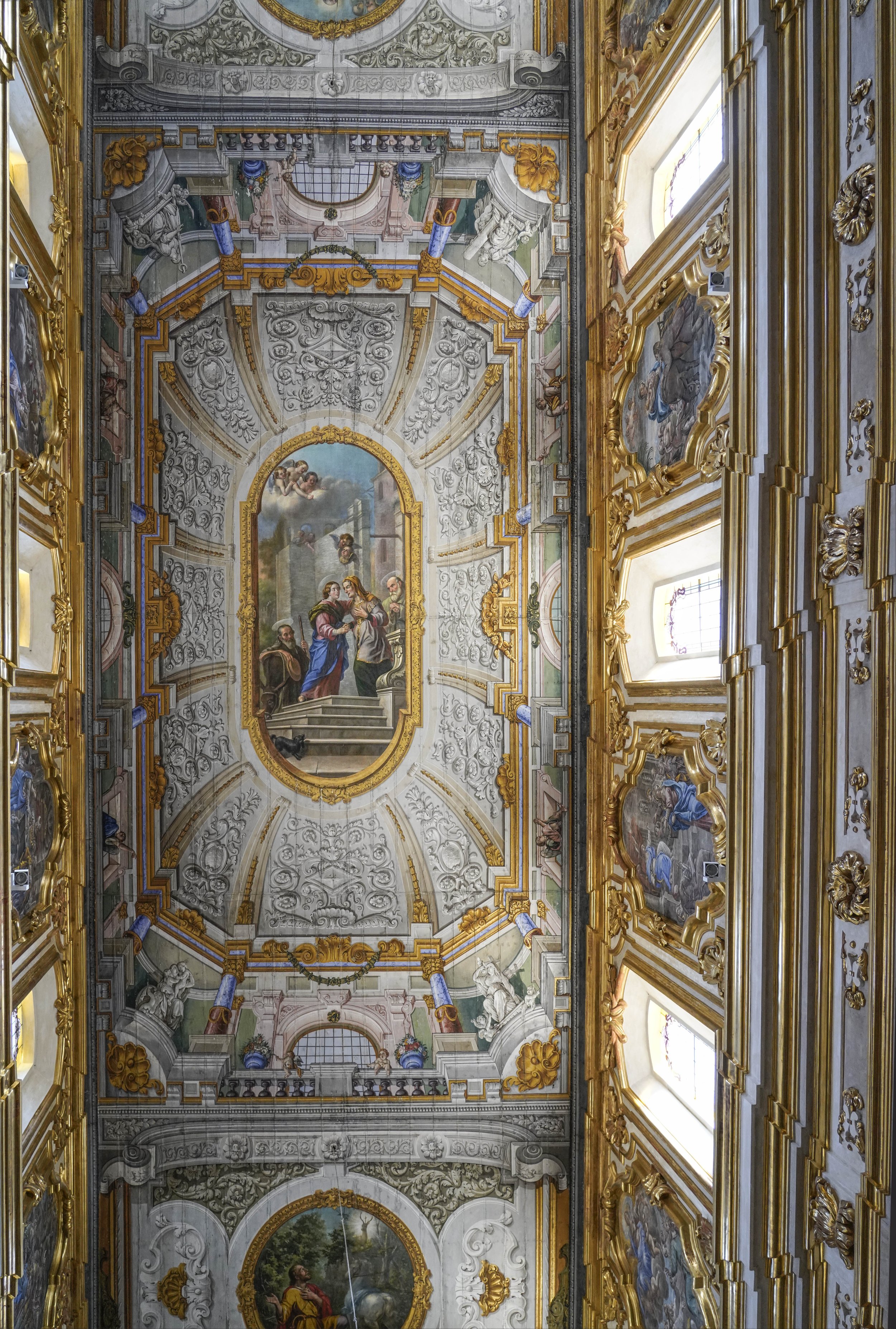
Battista Santoro inserted three paintings on the wooden ceiling important for the culture of Matera: St. John of Matera and S. Eustace in the medallions and “The Visitation of the Virgin” at the center. The Feast of the Visitation of the Blessed Virgin Mary (5/31) commemorates the Virgin Mary’s visit to her cousin, Elizabeth. The meeting of these two women was a joyful and unique event. Both found themselves pregnant in unusual circumstances – Elizabeth in her old age after suffering from infertility, and Mary by the Holy Spirit.
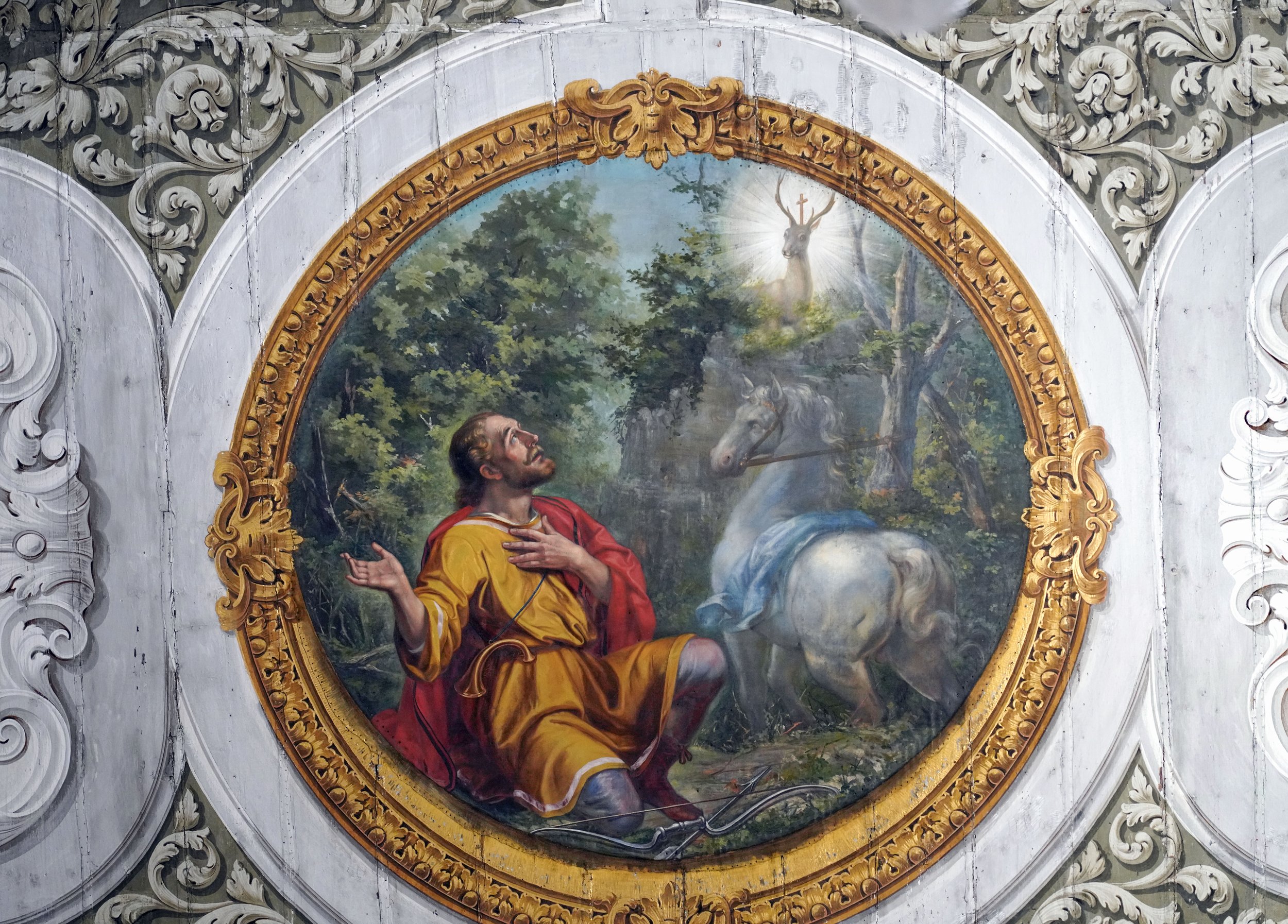
Legend says that Eustace was a Roman army officer who went hunting one day only to be confronted by a hart (an adult male deer, especially a red deer over 5 years old) with the image of a crucifix between its antlers. From the cross, Jesus spoke to Eustace who converted to Christianity. After many trials and tribulations, Eustace was martyred by Emperor Hadrian.
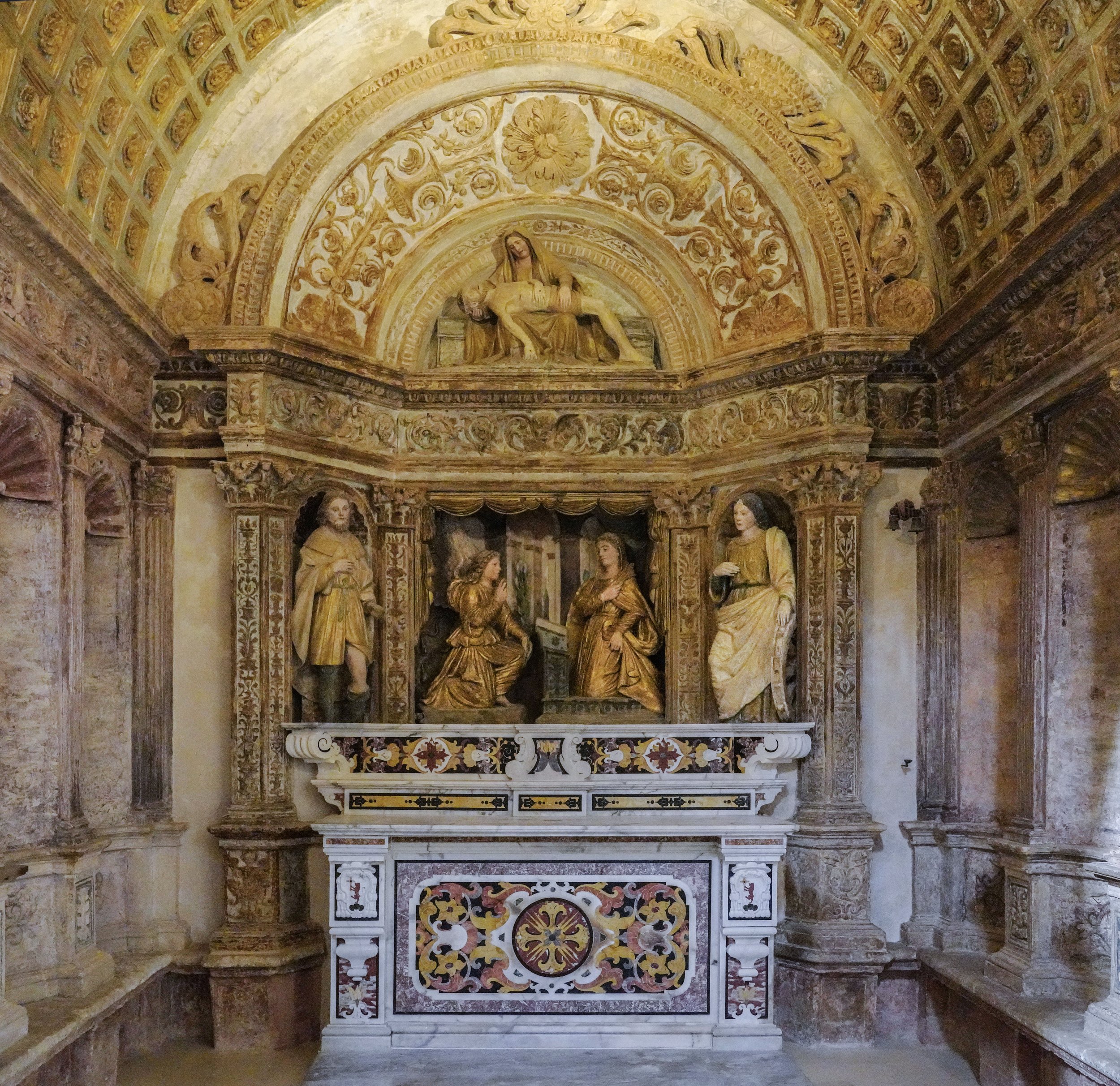
The statues on the altar represent the Virgin and Angel Gabriel. In the upper lunette there is a Pietà and on the sides the statues of Ss. Rocco and Caterina d’Alessandria. The Annunciation is the announcement by the archangel Gabriel to Mary that she would conceive and bear a son through a virgin birth and become the mother of Jesus Christ, the Christian Messiah and Son of God.
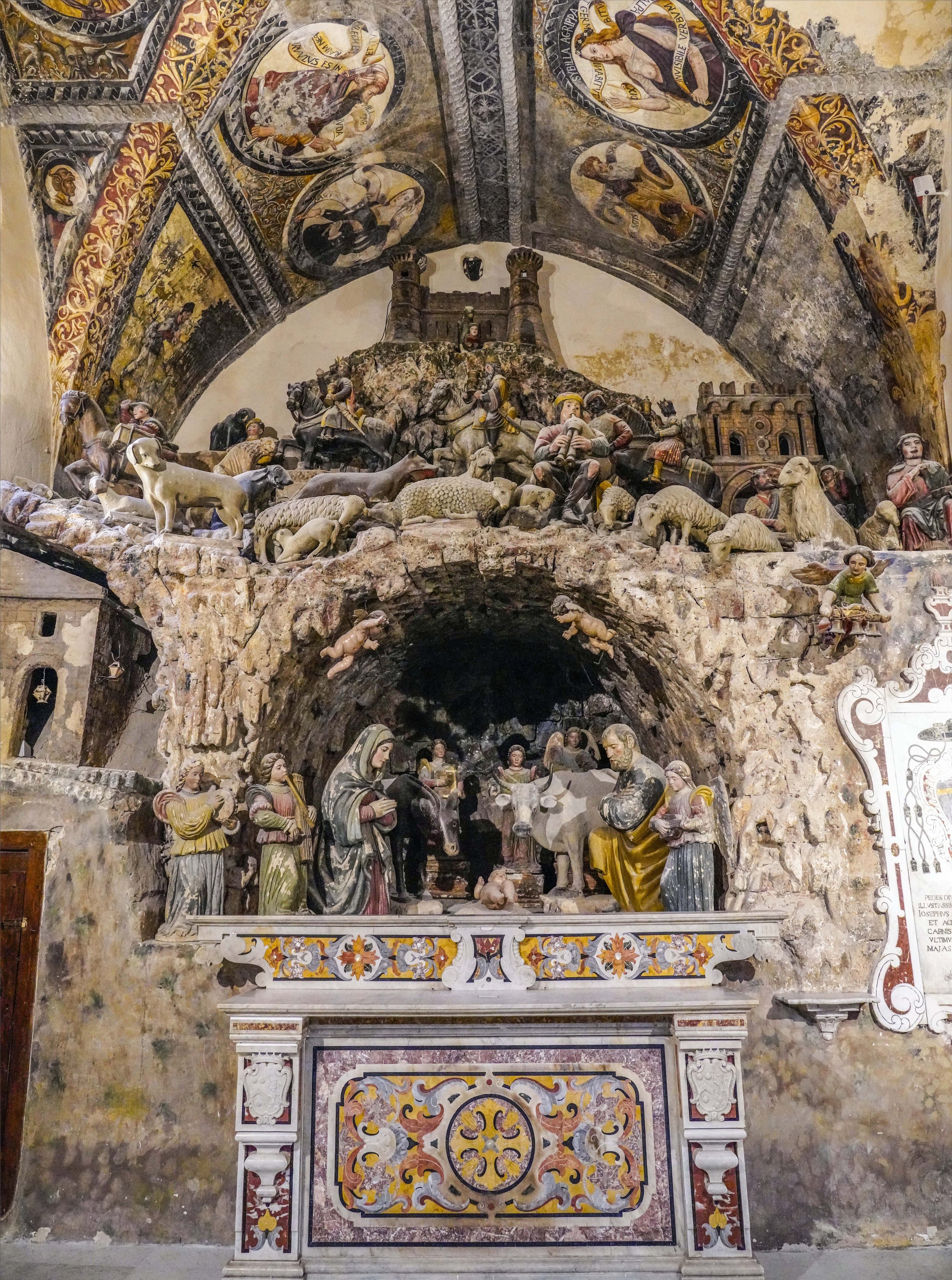
Sculpted in 1534 by Altobello Persio and Sannazzaro of Alessano in painted limestone the chapel contains elements of the city: the castle on the top reminds us of the Tramontano castle; while the shepherds with the animals made in a perfectly realistic way (sheep, goats and guard dogs) take us back to the strong agro-pastoral vocation of the city in the 1500s.
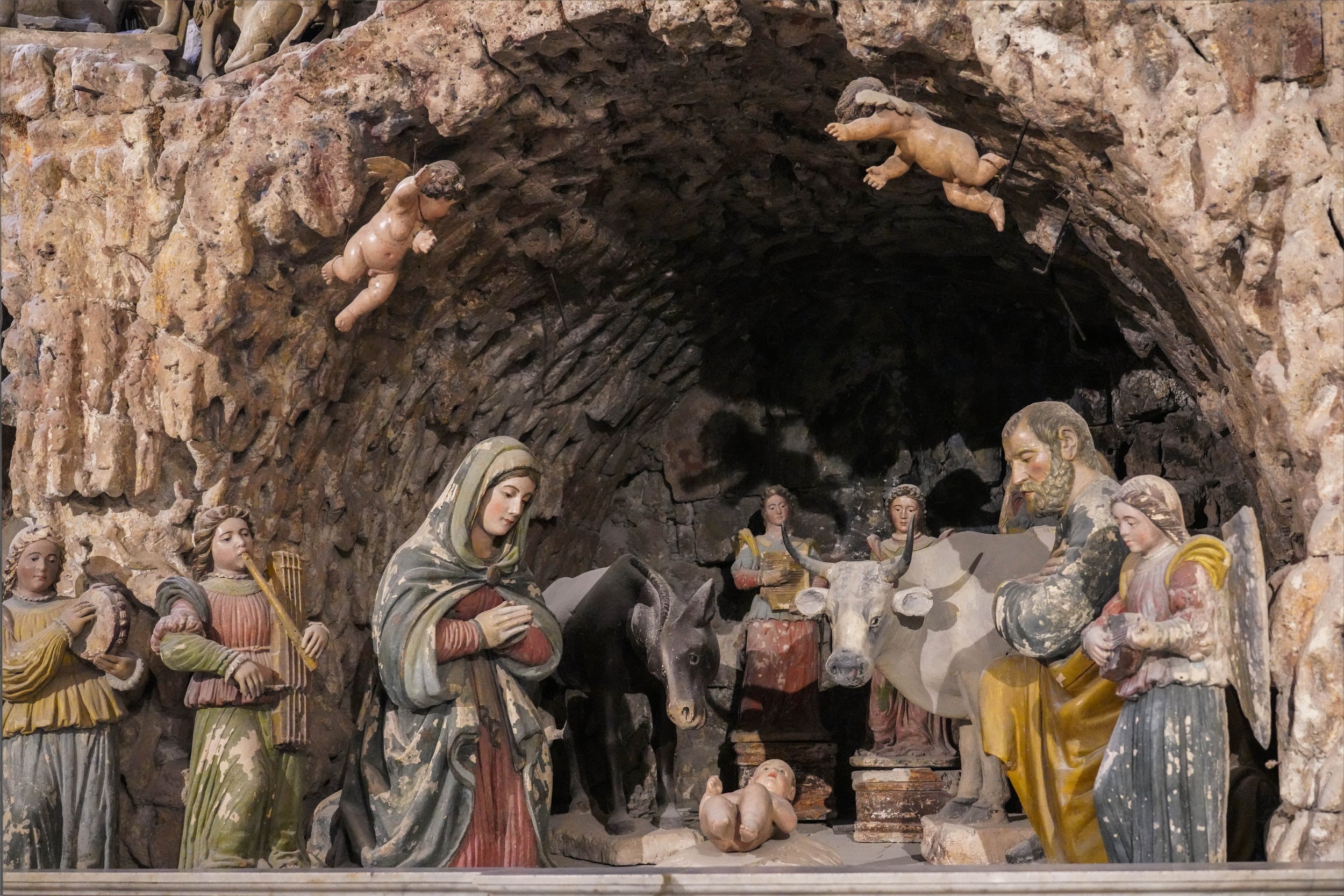
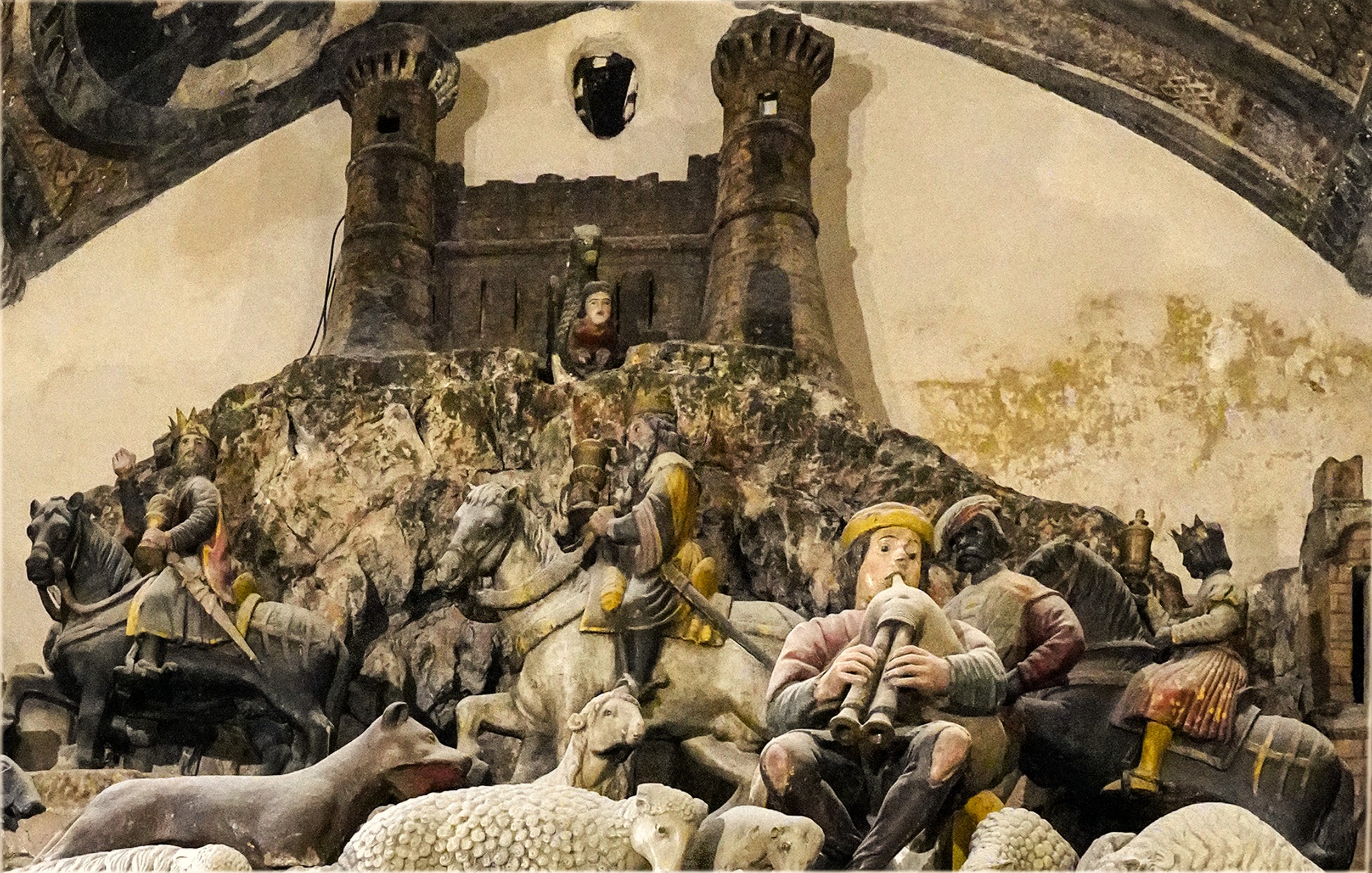
Above the nativity scene, under a castle, three kings, one from Africa, bring gifts to the newborn Christ while a bagpipe player, surrounded by sheep, celebrates the birth of the son of God.
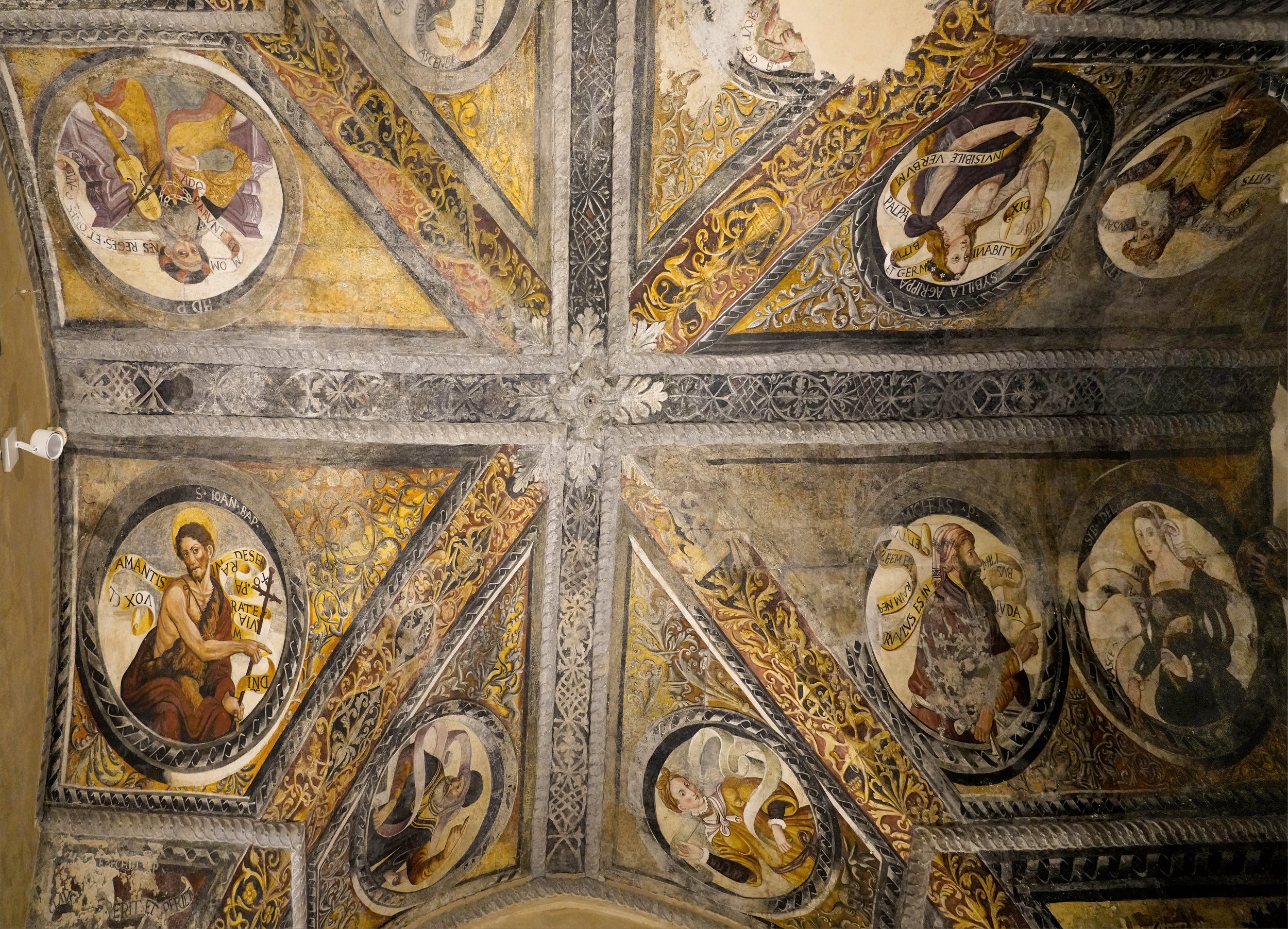

The Delphic Sibyl experienced a revival in cultural depictions during the Renaissance in the 15th c. AD and appears prominently among the frescoes of Michelangelo's Sistine Chapel ceiling. This revival is thought to be due to a Delphic Sibyl prophesy that is believed to foreshadow the coming of Christ. In her prophesy a savior is prophesied who will be misjudged and shamed by unbelievers with a crown of thorns.
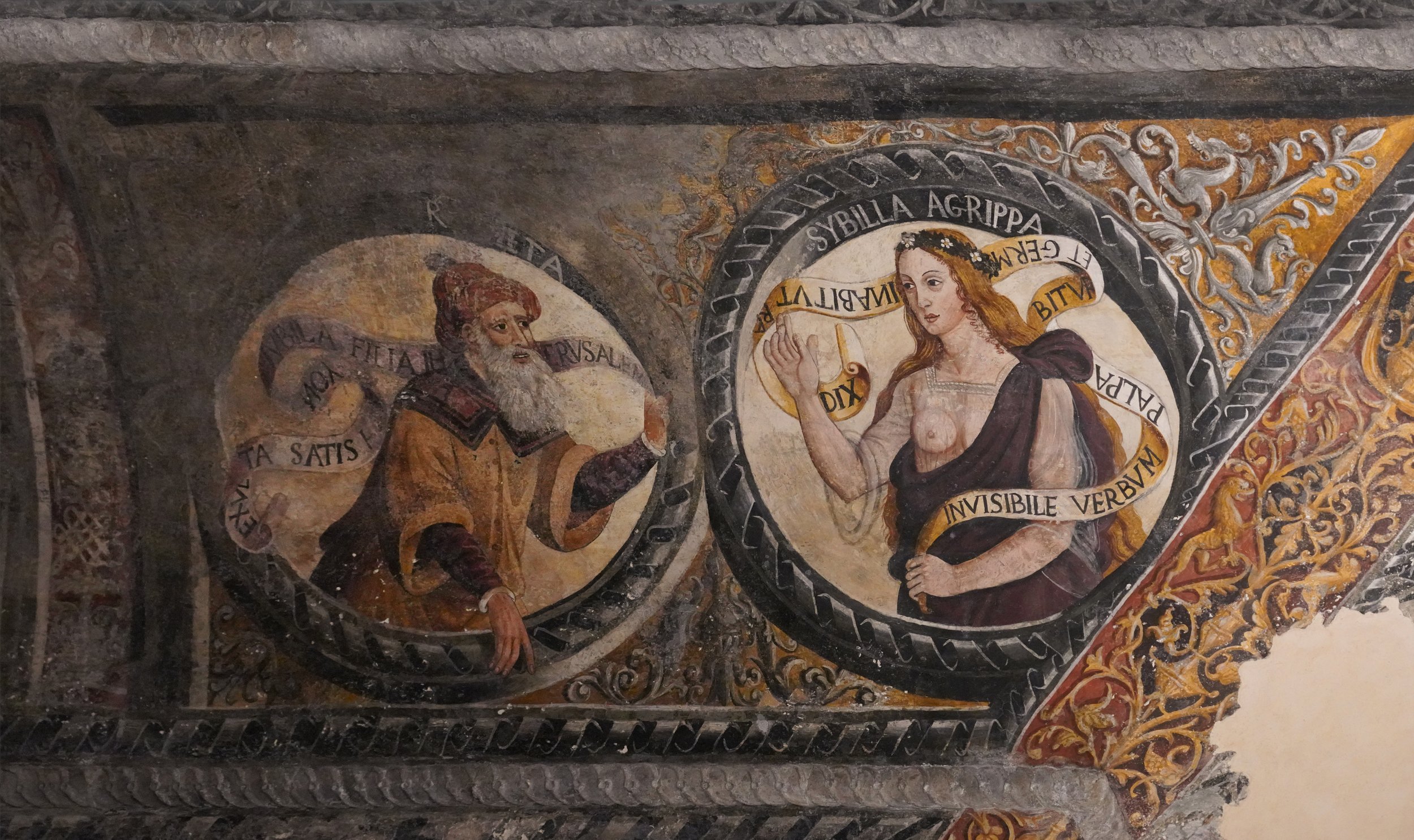
The sibyls were female seers from the ancient world whose prophecies it was claimed by early Christians, beginning around 500 AD, that the classical sibyls prophesied the coming of Christ. In this medallion Sibyl Agrippa holds a scroll with prophetic words inscribed, “Invisible verbum palpabitur germina inabitut rit,” “The invisible word will be palpated.” I assume that this was interpreted that the son of god would become flesh.
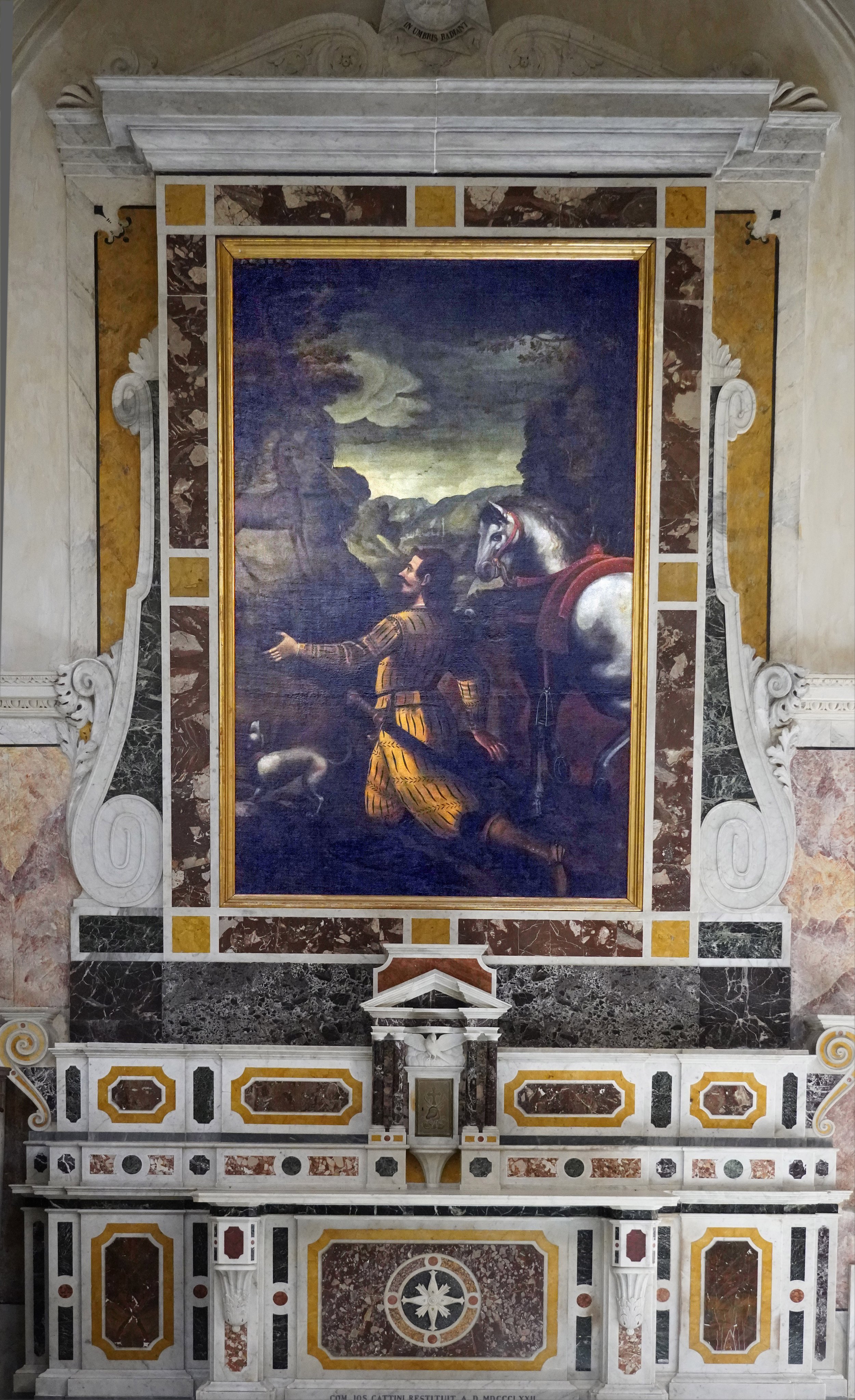
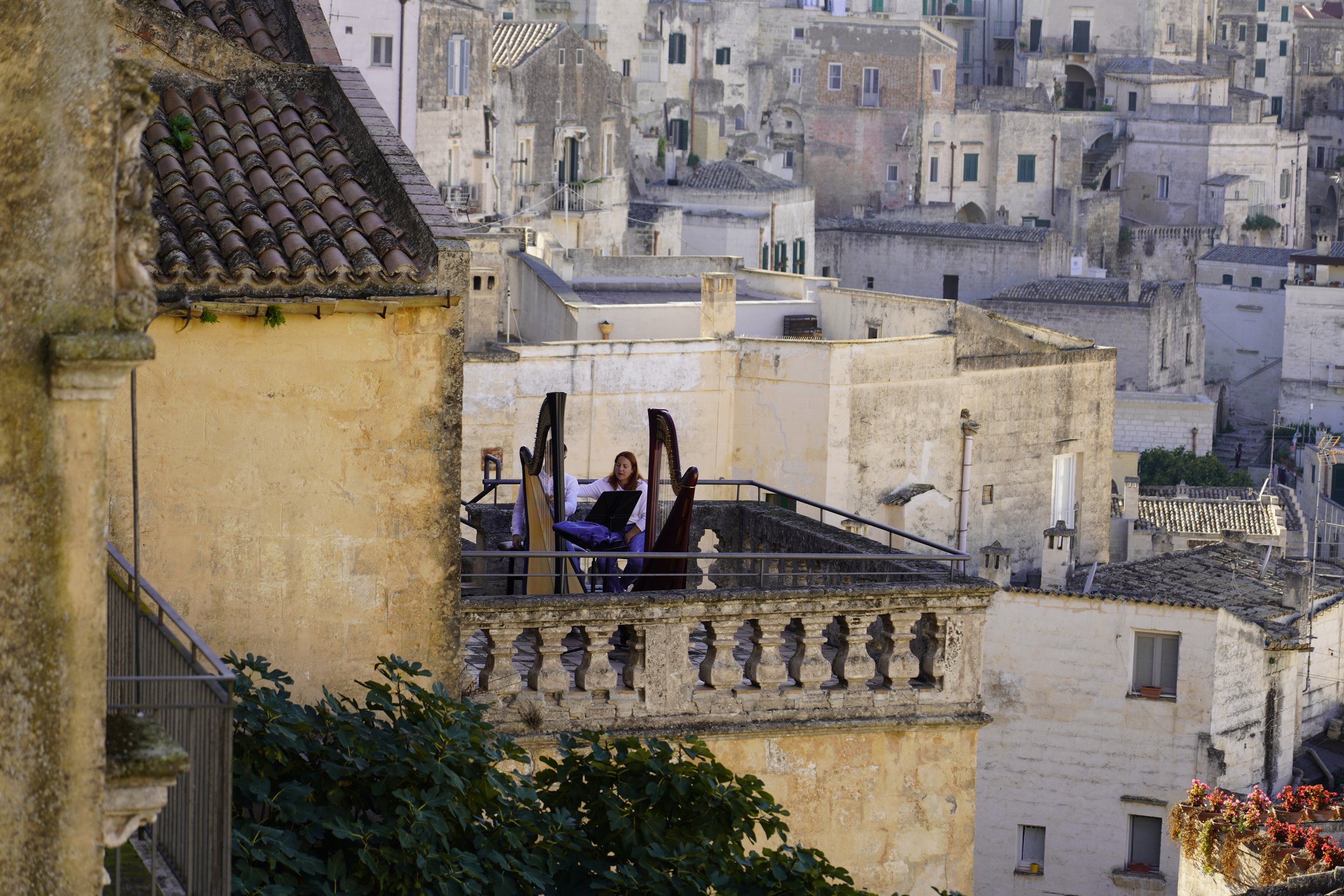
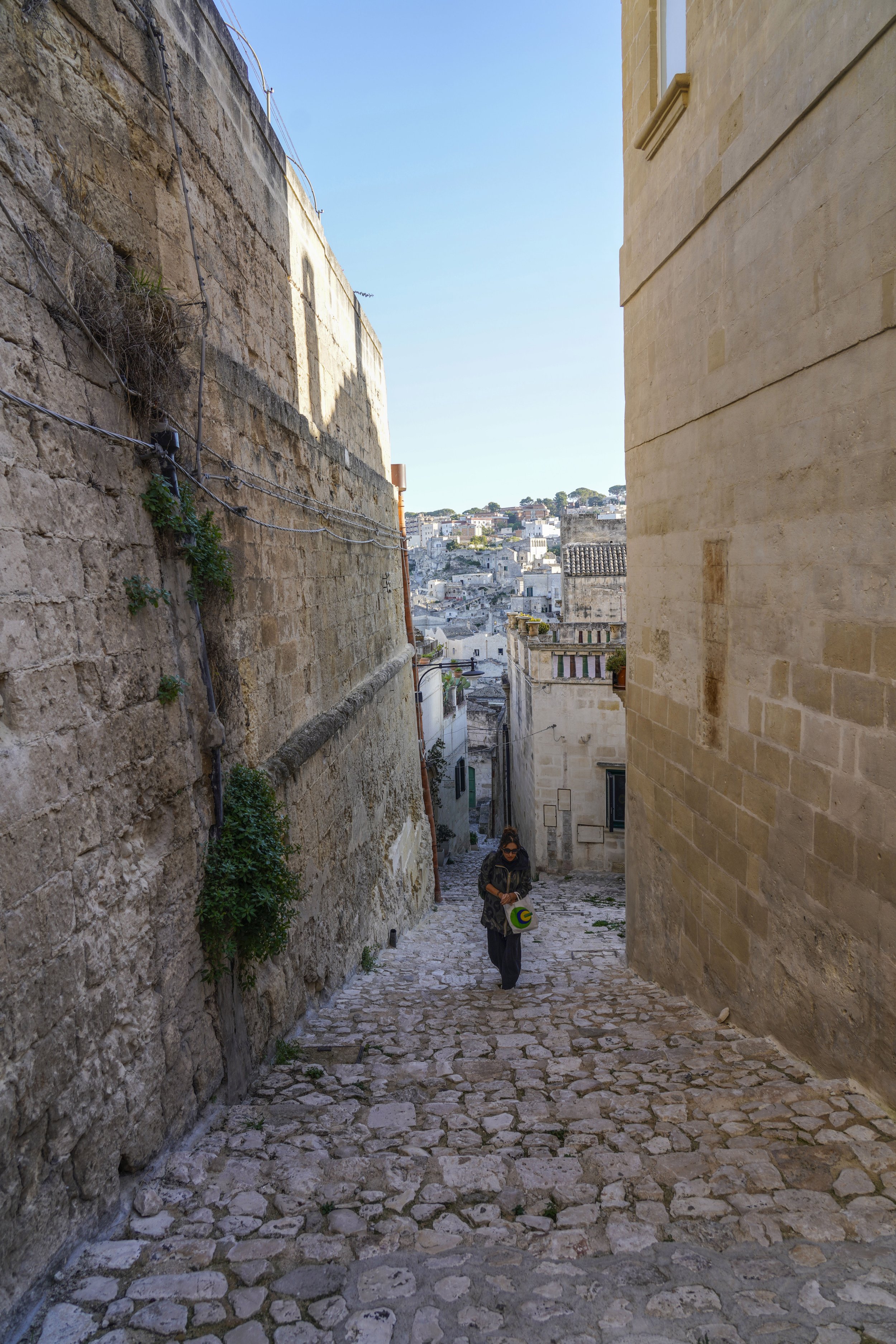
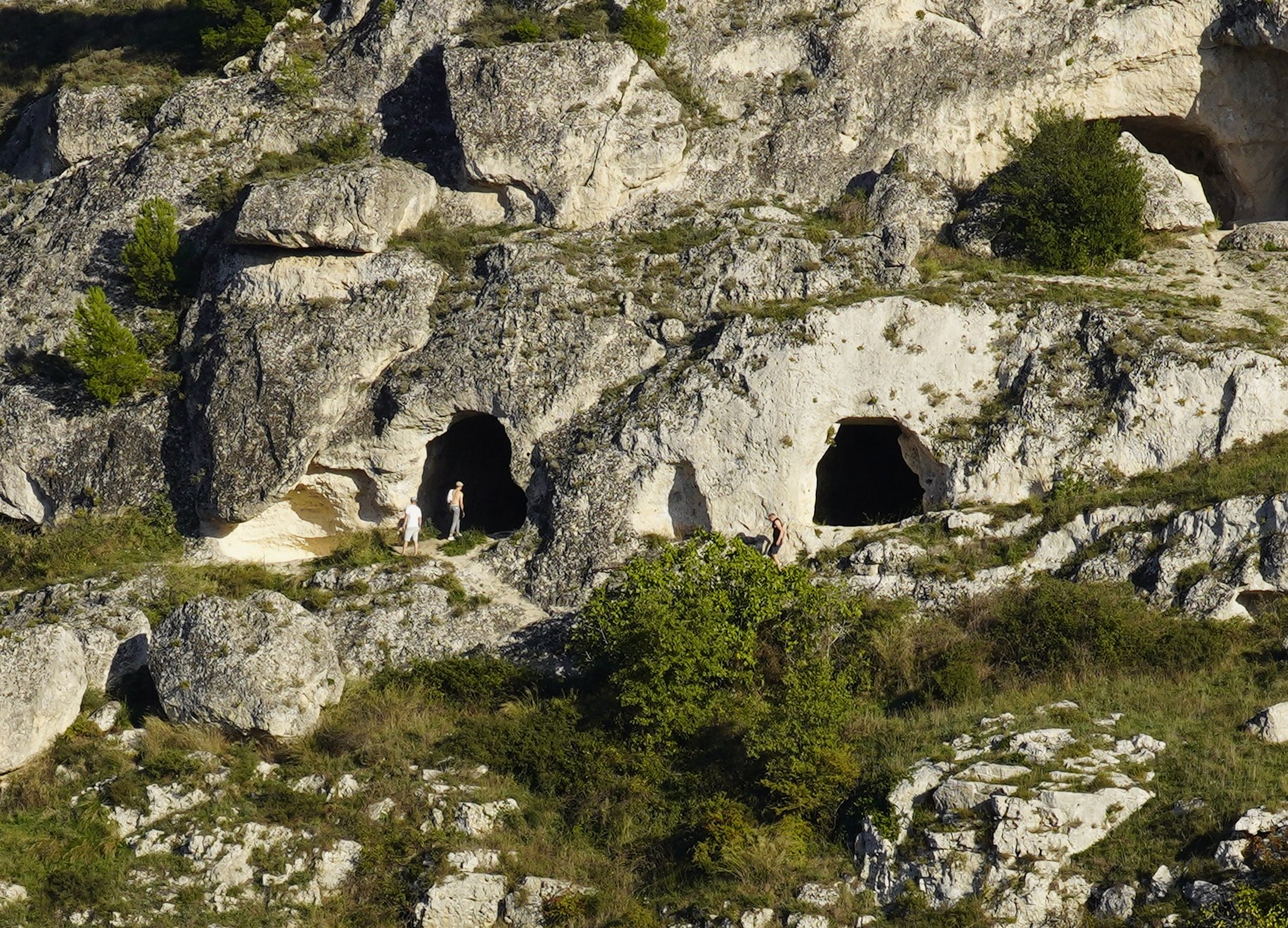

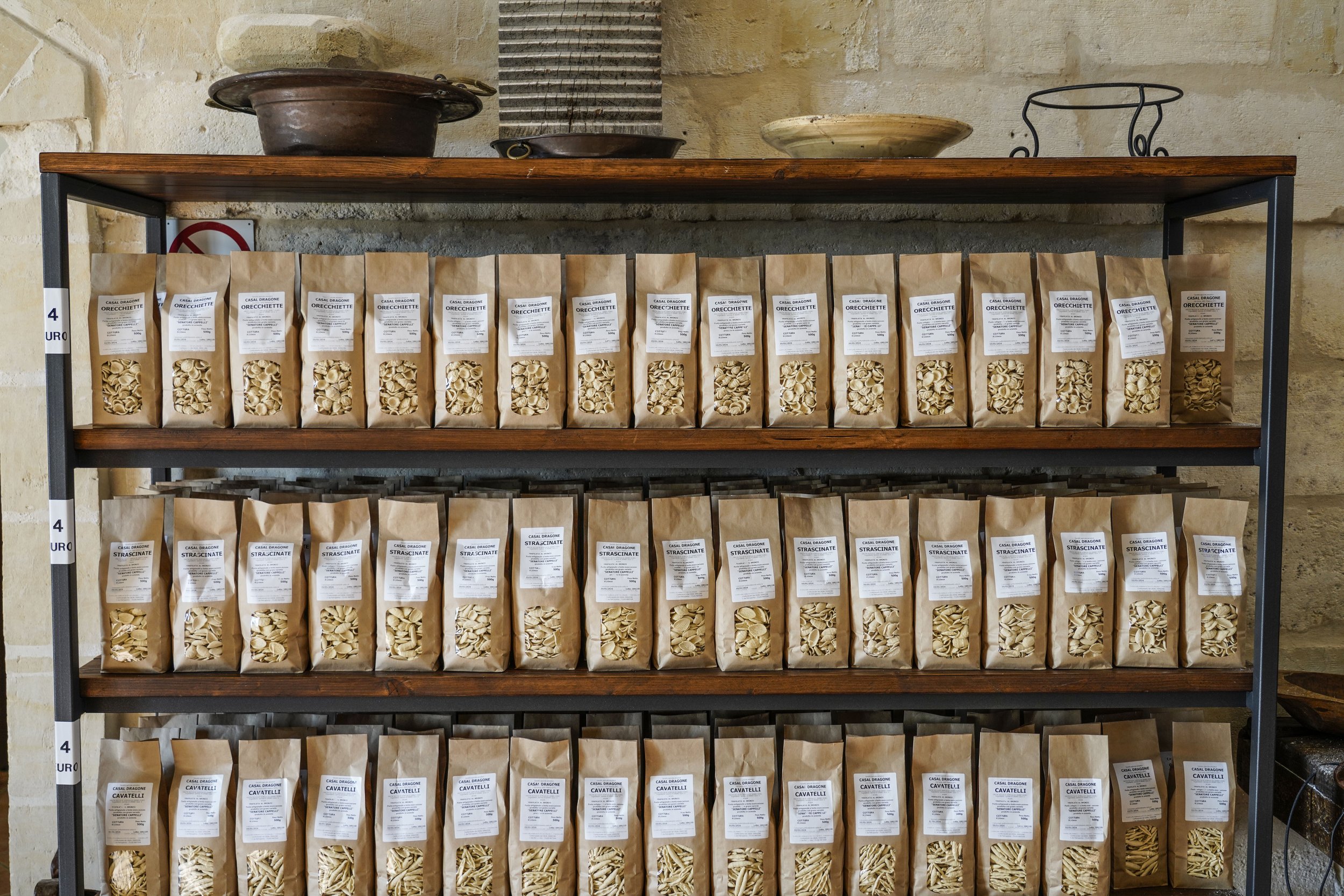
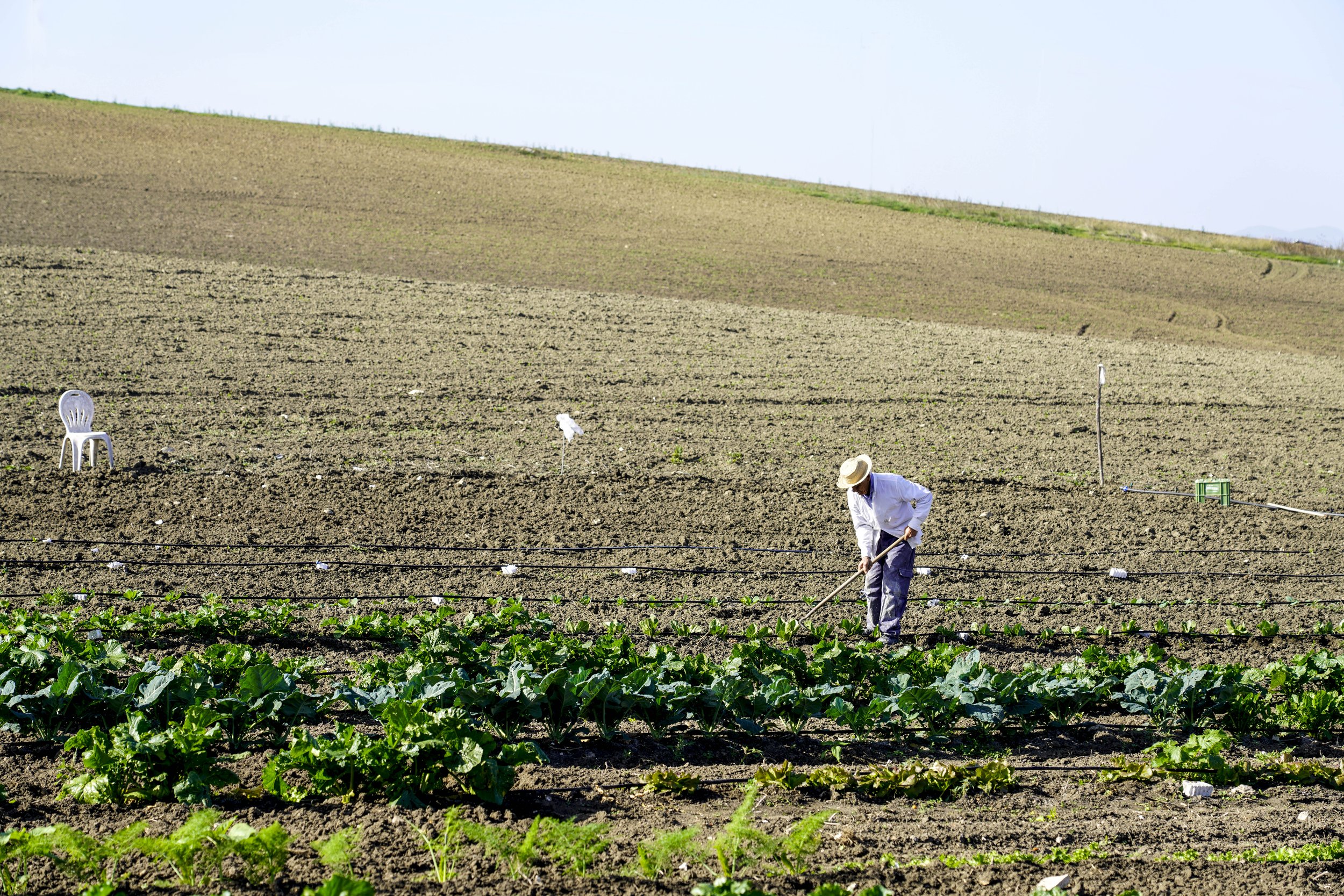
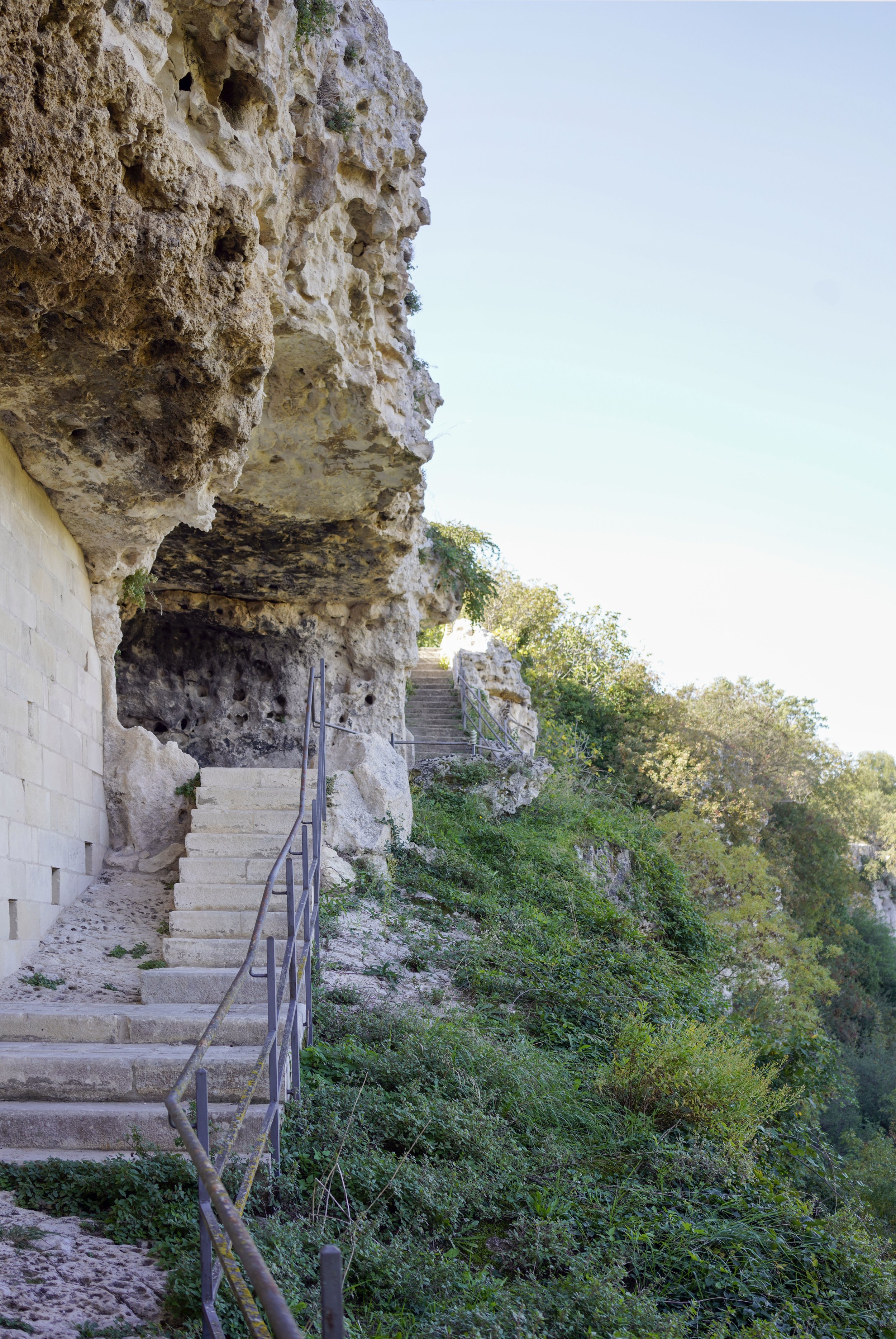
One of the many caves on the side of a ravine, the Crypt of the Original Sin features beautiful wall art that has endured for over a thousand years, earning it the nickname “The Sistine Chapel of Rupestrian Art.” The cave system seems to have been occupied on and off since the Paleolithic and Neolithic eras, and around the 9th c. became the home of monks who had come over to southern Italy from Eastern Europe and Asia Minor. One of those monks, today known only as “The Painter of Flowers of Matera,” after the red flowers that appear in his work, painted beautiful images from the Bible on the cave walls.
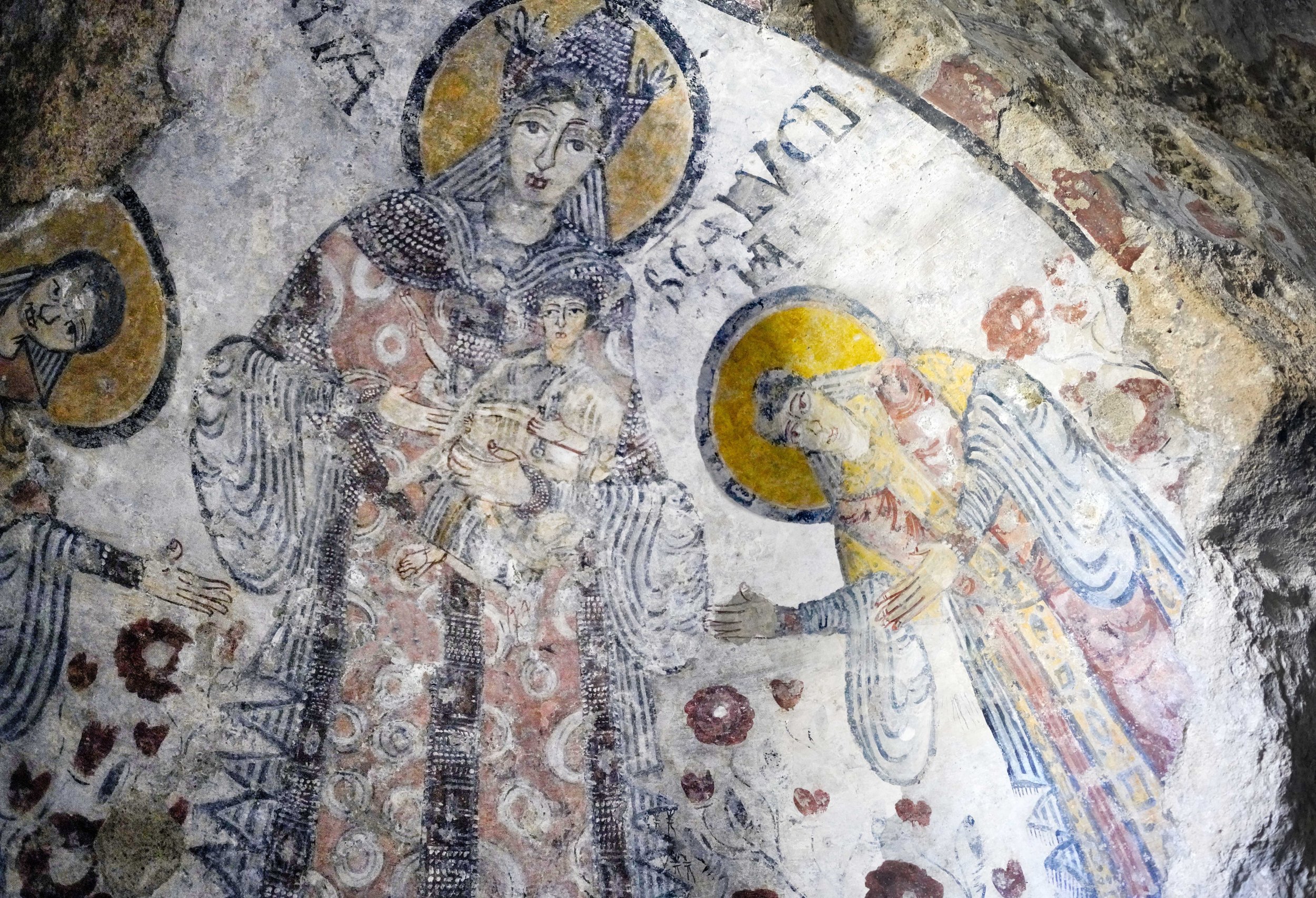
Virgin Mary, majestically represented in the sumptuous clothes of the Byzantine Empress Basilissa.
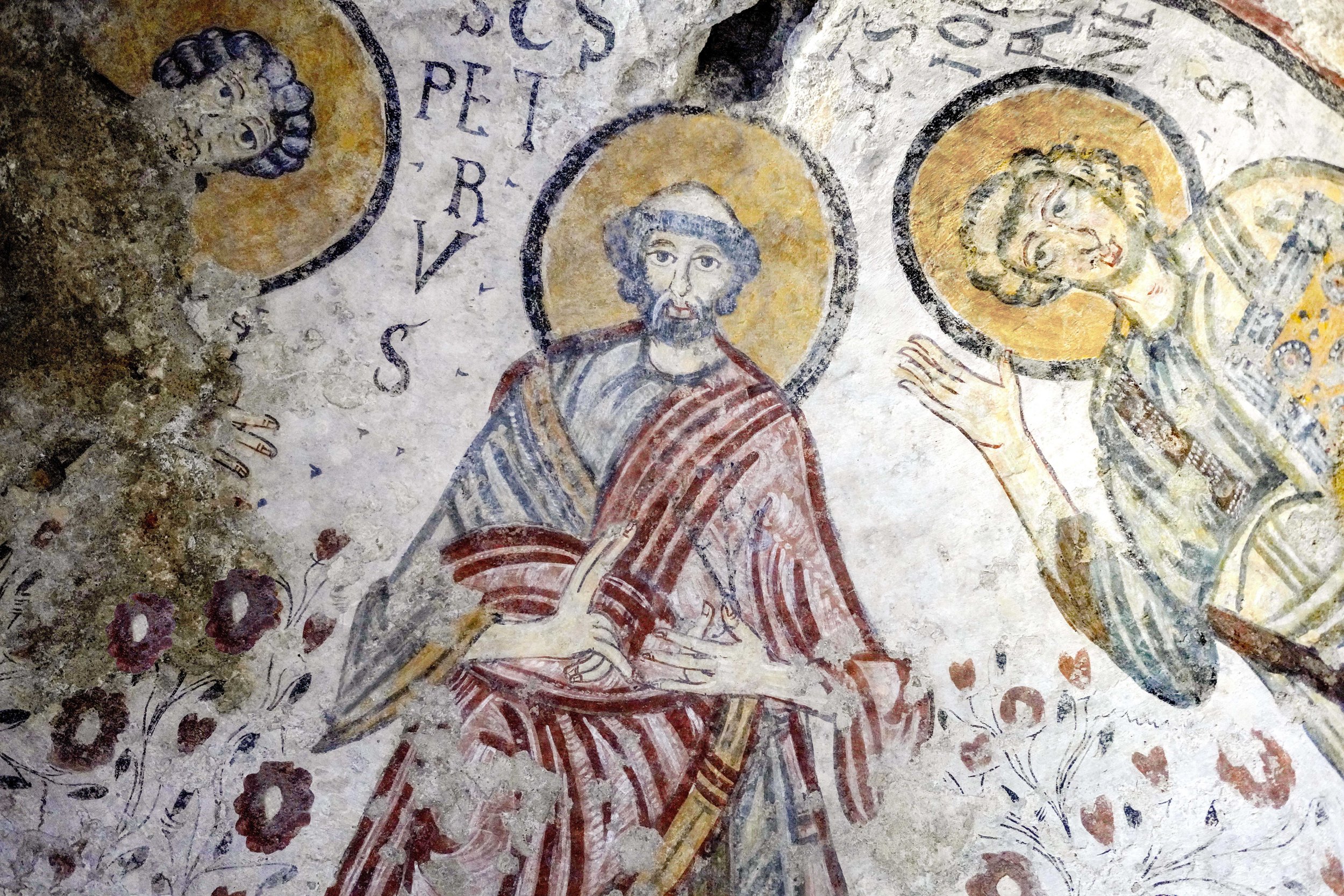
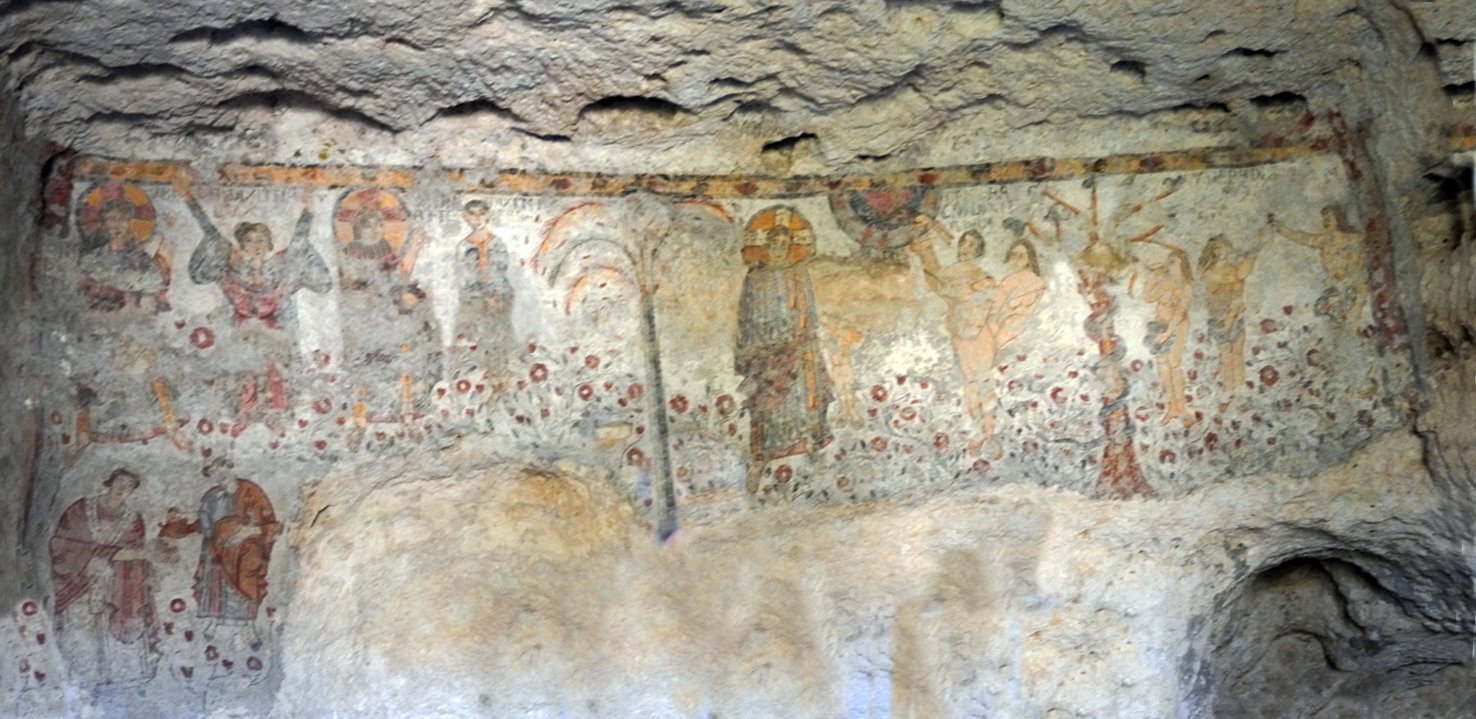
In the back wall are depicted biblical figures related to (left to right, in three sections separated by palm trees) God the Creator, Light and Darkness, Genesis and to the Original Sin, which gives the name to the crypt. The frescoes are enriched with a huge number of flowers. All the paintings are described with a Latin epigraph.
